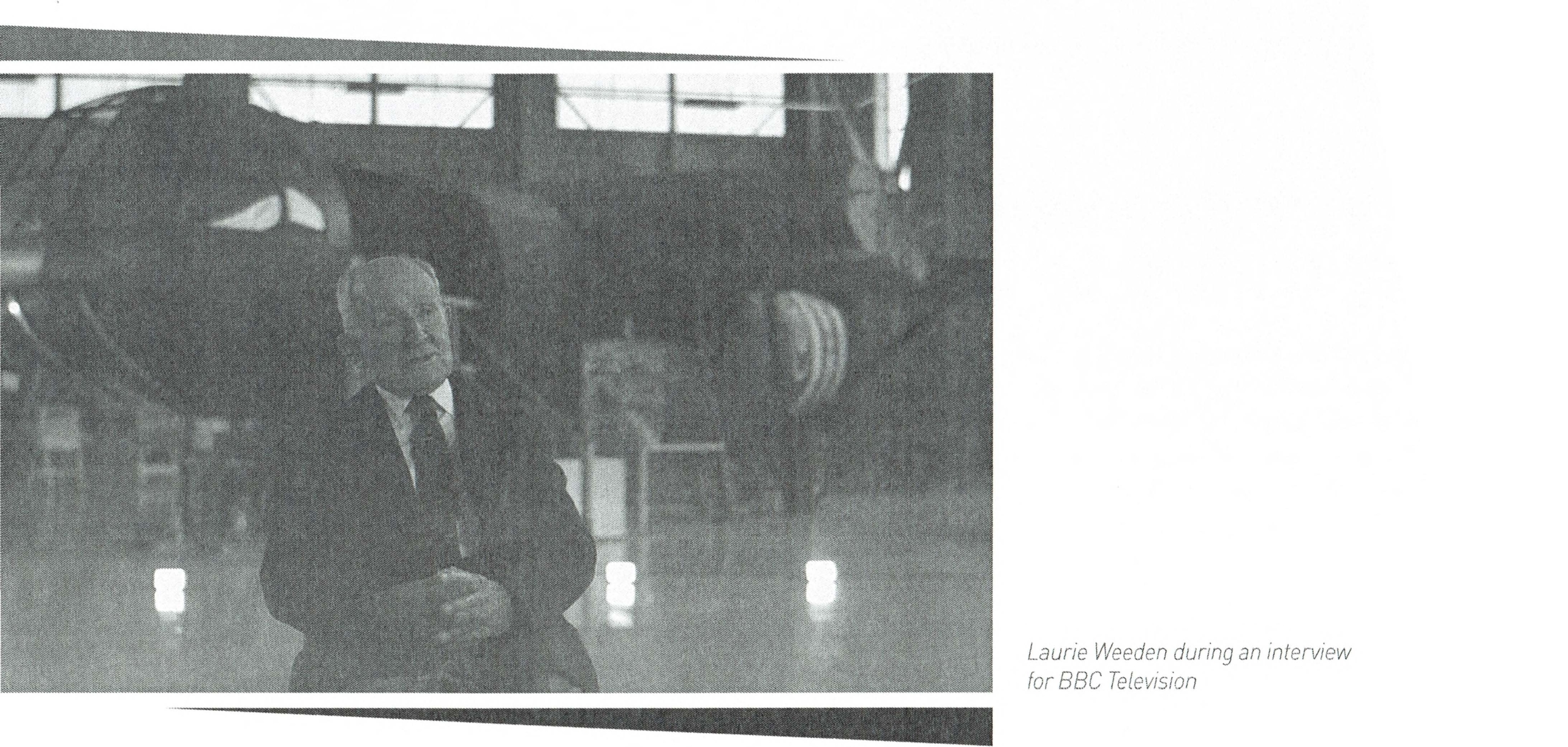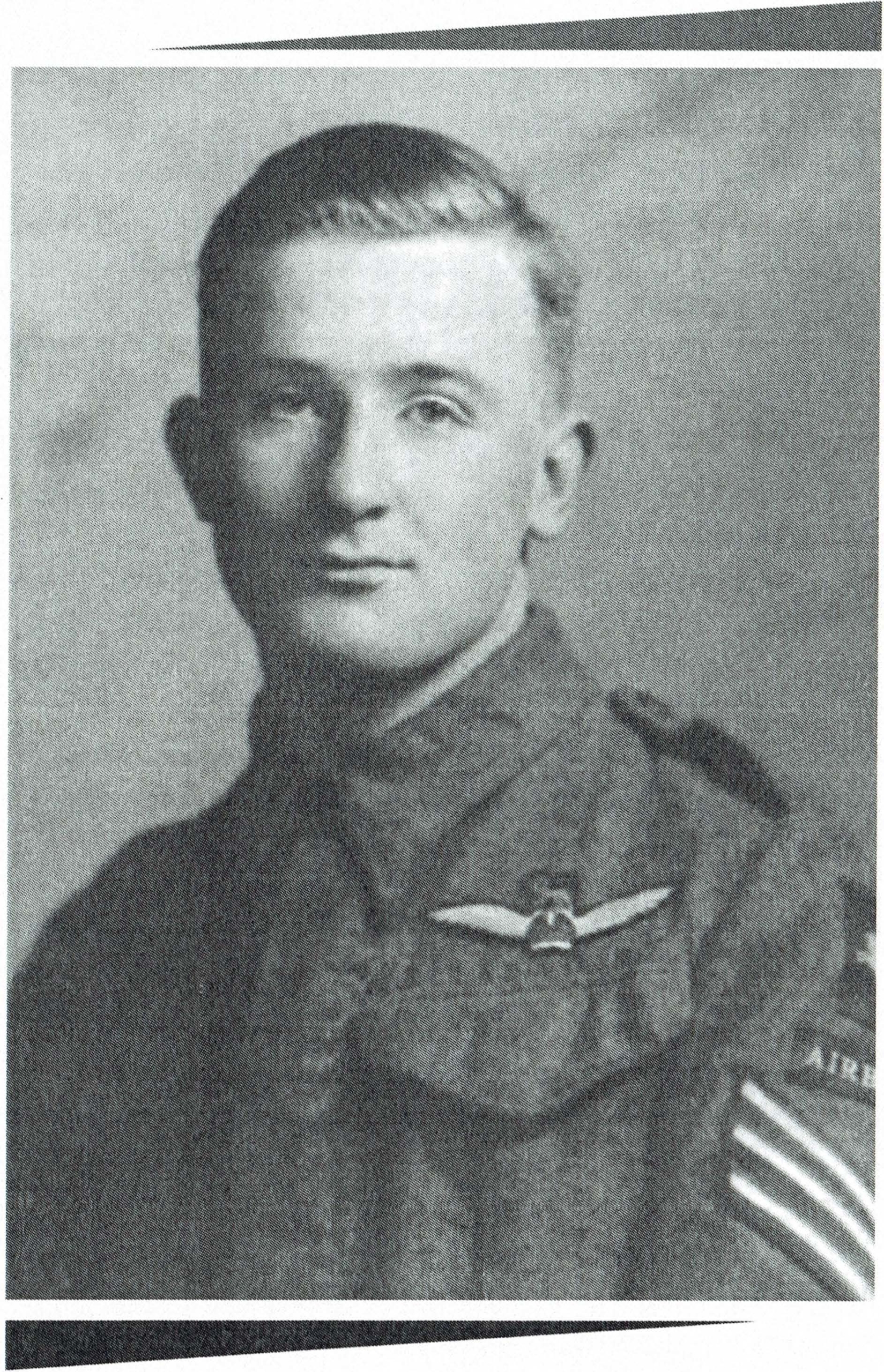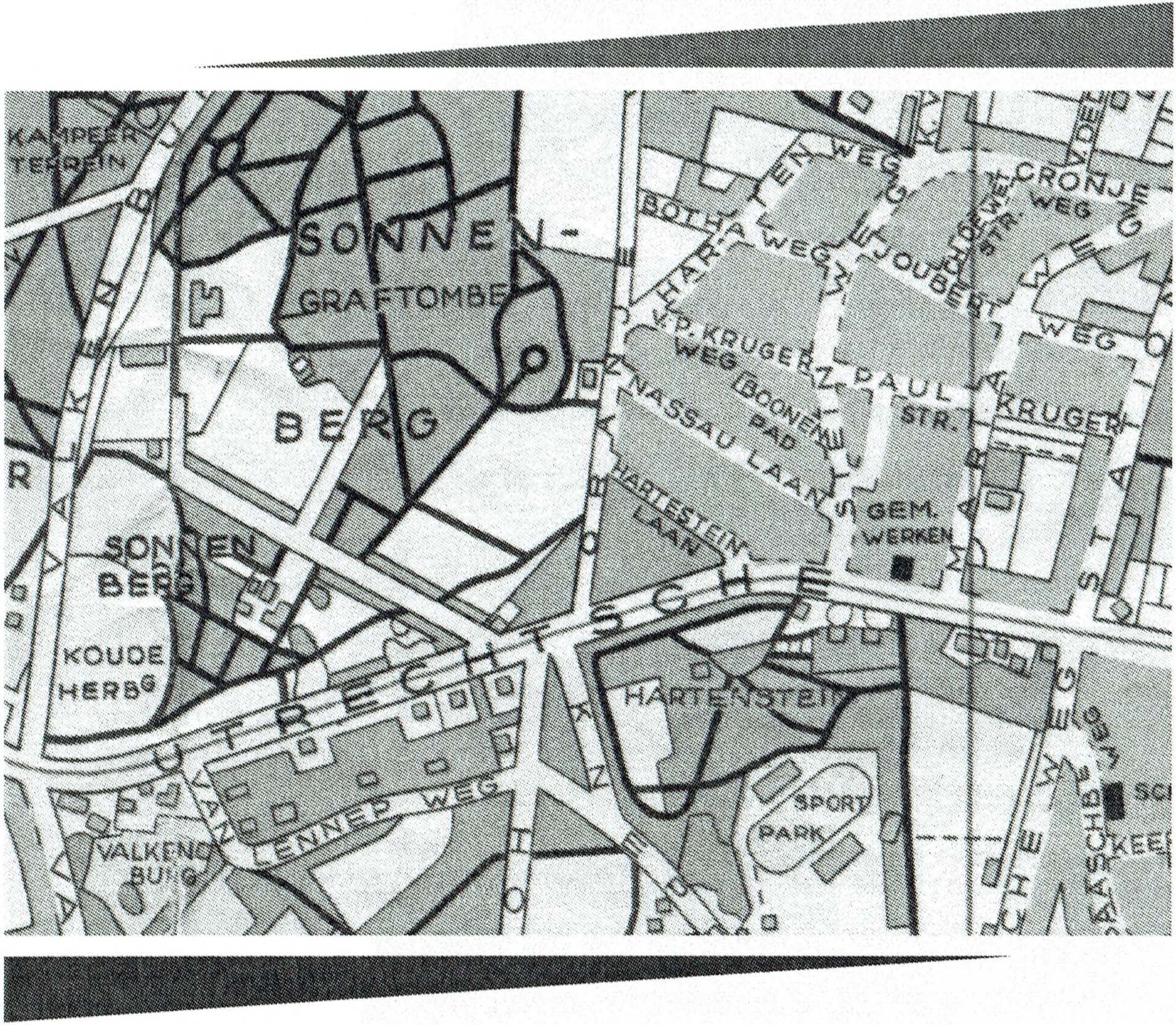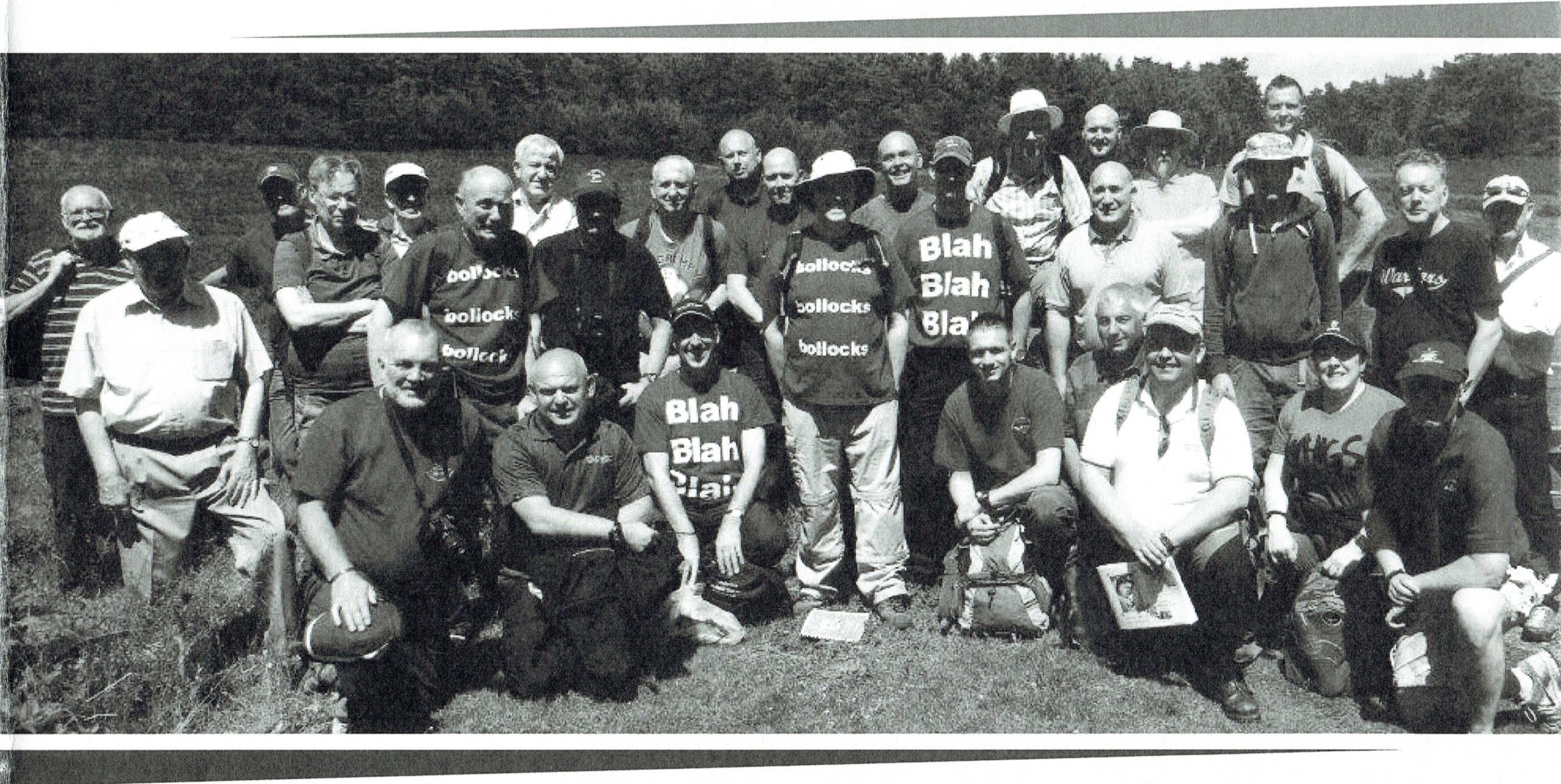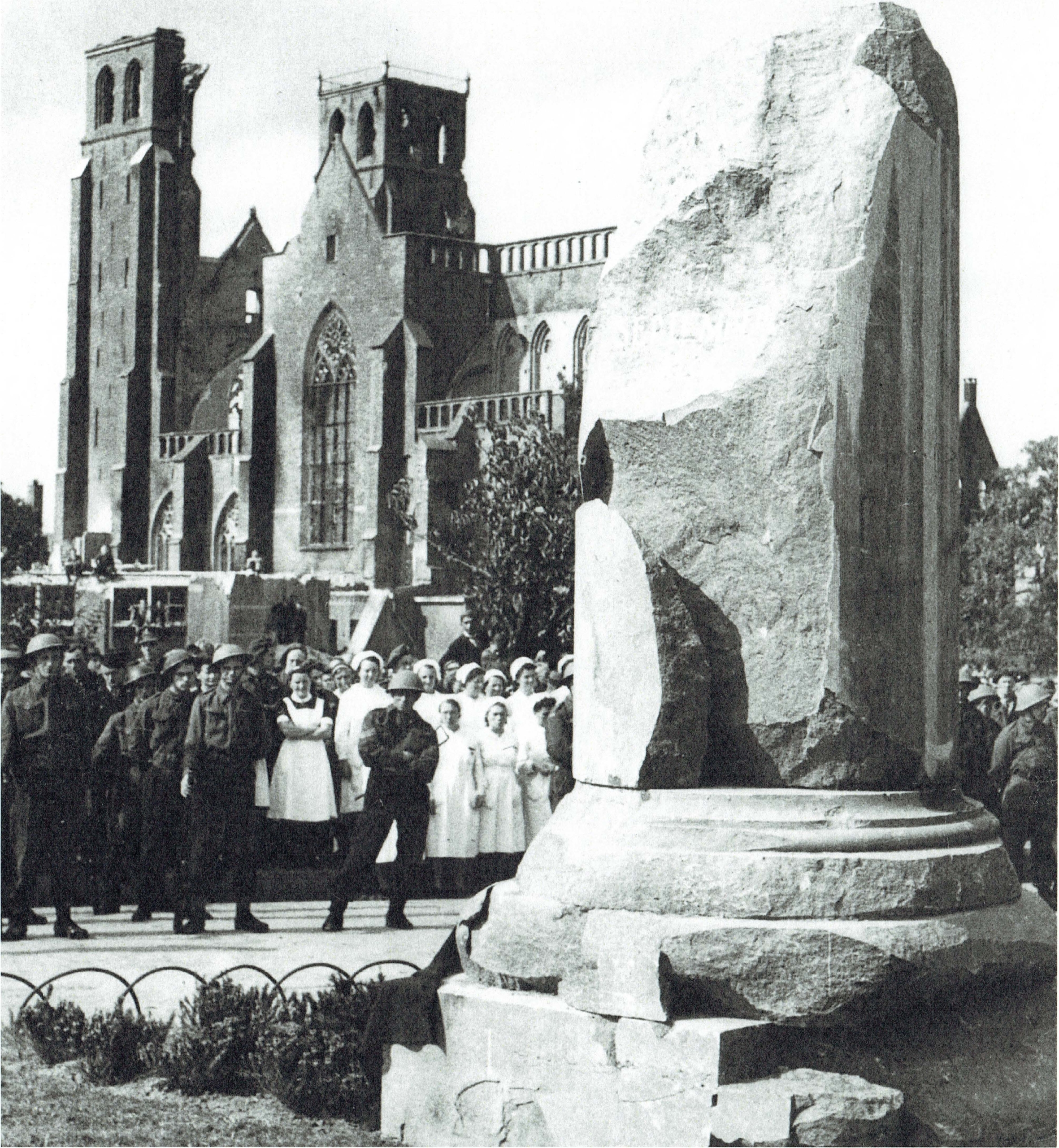INHOUDSOPGAVE
Verenigingsnieuws – Algemene ledenvergadering 2019
Thema-avond – Nabeschouwing lezing Antitank
Interview – De waarheid kent geen tijd
MINISTORY 130 – Zoeken naar een spoorwegovergang
Thema – Het bataljon dat in het bos verdween
Conflictarcheologie – Britse schuttersputten langs de Oorsprongbeek
Achtergrond – Bits and pieces; het uniform van Major John Waddy
Ondertussen – Teruggeslagen grond; de mogelijke berging van een Typhoon
Programma
Airborne Magazine is een uitgave van de Vereniging Vrienden van het Airborne Museum Oosterbeek en verschijnt drie keer per jaar. Het doel van de VVAM is bekendheid geven aan het Airborne Museum, de activiteiten van de Vereniging Vrienden en aan de geschiedenis van de slag om Arnhem.
Redactie: Alexander Heusschen, Jasper Oorthuys, Otto van Wiggen
Bijdragen van: Frans Ammerlaan, Wybo Boersma, Alexander Heusschen, Erik Jellema Willem Kleijn, Jasper Oorthuys, John O’Reilly Martijn Reinders, Arjan Vrieze, Otto van Wiggen, Eugène Wijnhoud
Archivering & losse nummers: info@vriendenairbornemuseum.nl
Vormgeving: Sandra van der Laan-Elzinga, Studio 223, Elst
Druk: Grafi Advies, Zwolle
Contactgegevens VVAM: www.vriendenairbornemuseum.nl, info@vriendenairbornemseum.nl
(06) 510 824 03
Postadres:
Wissenkerkepad 22
6845 BW Arnhem
Omslag: De geplande verdediging van Arnhem en de verkeersbrug door de 4th Parachute Brigade tegen vijandelijke dreigingen uit het noorden tijdens operatie Market Garden (bron: John O’Reilly, From Delhi to Arnhem).
VERENIGINGSNIEUWS DE ALGEMENE LEDENVERGADERING VAN 16 MAART
Op 16 maart vond in de Concertzaal te Oosterbeek de jaarlijkse Algemene Ledenvergade- ring van de VVAM plaats. De vergadering startte met het gedenken van acht leden die ons in de afgelopen periode zijn ontvallen. Algemene Ledenvergaderingen staan meestal in het teken van de financiële verantwoording van het afgelopen jaar en de begroting voor het komende jaar. Zo ook deze. Voor hen die de details willen lezen, verwijs ik naar de no- tulen die op onze website staan.
In deze korte toelichting stel ik vast dat we er op financieel gebied goed voorstaan. Zo hebben we inmiddels 626 betalende leden en zien we dat onze activiteiten zoals de battlefieldtours en onze thema-avonden niet alleen druk
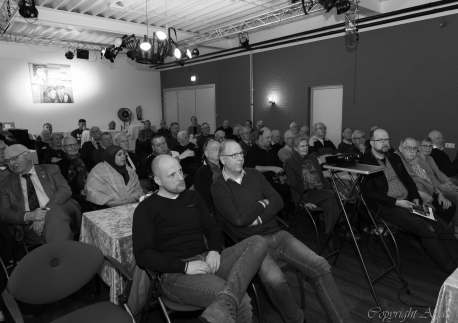
De aanwezigen tijdens het middagprogramma van de ALV (foto: Arjan Vrieze).
bezocht zijn, maar ook nog eens kostendekkend. Logisch dat we daar in 2019 mee willen doorgaan. In de verga- dering heb ik daarnaast Alexander Heusschen formeel benoemd als bestuurslid met als taak de hoofdredactie van Airborne Magazine. Daarnaast is het nu officieel dat Jasper Oorthuys Gerard Gijsbertsen heeft vervangen als secretaris.
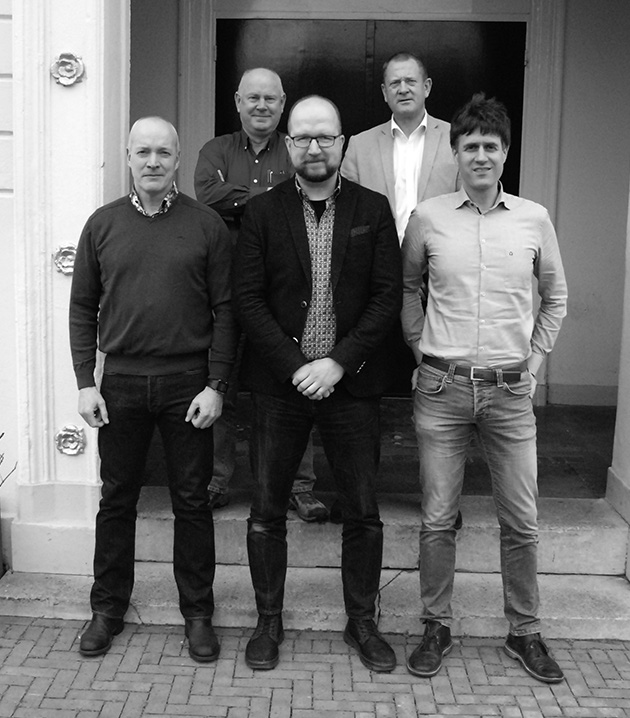
Het bij de ALV aanwezige deel van het bestuur van de vereniging op de trappen van de Concertzaal. VLNR: Herman van Ingen (penningmeester), Erik Jellema (activiteiten), Jasper Oorthuys (secretaris), Otto van Wiggen (voorzitter) en Alexander Heus- schen (hoofdredactie blad) (foto: Eugène Wijnhoud).
ENGELSE LEDEN
Naast de financiële paragraaf was een toelichting op de situatie rond de Engelse leden belangrijk genoeg om bij stil te staan. In het vorige magazine heb ik u al geïnformeerd over het teruggelopen aantal leden en de kosten die het uitbrengen van drie Airborne Magazines in het Engels de VVAM kost. Omdat die verhouding uit balans is, heb ik de aanwezigen een drietal opties voorgehouden:
1. Onverkort doorgaan met de uitgave van Airborne Ma- gazine in het Engels. Dat is gezien de kosten en de hoeveelheid werk eigenlijk een non-optie.
2. Eenmaal per jaar een Engelstalige special uitgeven voor de Engelse leden.
3. Het volledig ‘afkappen’ van de Engelse leden, min of meer zoals voorgesteld door de Engelse vertegenwoor- diger.
Na overleg hebben we als VVAM besloten te kiezen voor optie twee: een jaarlijks speciaal nummer voor de Engel- se leden, met een vertaling van een aantal artikelen uit de Nederlandstalige Airborne Magazines van dat jaar, zonder de specifieke artikelen over battlefieldtours. Wij zullen de Engelse leden op korte termijn in een brief in- formeren over de uitkomsten van deze bespreking.
LEZING LANDSTORM
Analoog aan de vorige ALV werd het middagprogramma na de pauze ingevuld door een lezing over een aan de slag om Arnhem gerelateerd onderwerp. Dit keer was dat een lezing van Arno Maan over het derde bataljon van het SS-Grenadier-Regiment 1 van de Landstorm Nederland (III.Btl. Gren.Rgt.1). In een gedetailleerde en uitermate beeldende lezing informeerde Arno de 45 aanwezigen over de rol van de circa 1200 Nederlandse SS-vrijwilligers die aan Duitse zijde hebben meegevochten.
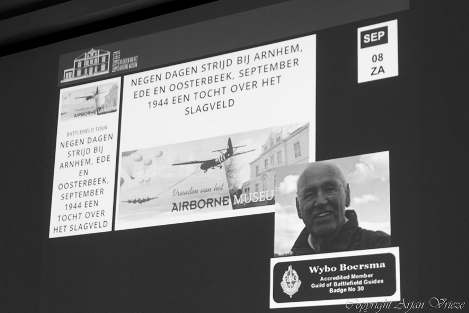
Uit de bloemrijke toelichting van Erik Jellema op de VVAM-activiteiten in 2018 en het programma voor 2019 (foto: Arjan Vrieze).
De bronnen vertellen ons dat dit bataljon pas in Arnhem arriveerde toen de slag al dagenlang woedde, vervolgens in reserve werd gehouden en uiteindelijk in stelling werd gebracht langs de spoorlijn bij Elden en Elst toen op don- derdag 21 september 1944 de Poolse Brigade bij Driel was geland. Volgens dezelfde bronnen zouden zij daar niet hebben gevochten en op 26 september 1944 zonder een schot te hebben gelost, weer zijn vertrokken.
Arno Maan liet ons zien dat die versie niet klopt. Hij heeft jarenlang onderzoek naar deze Nederlandse eenheid gedaan. Zijn conclusies zijn onder andere gebaseerd op de verslaglegging in dossiers die zijn aangelegd in het ka- der van de Bijzondere Rechtspleging, direct na de oorlog.
Arno stond naast een beschrijving van de activiteiten van deze eenheid stil bij het ontstaan van dit bataljon: wat voor soort mannen dit nou waren en waarom zij zich bij dit legeronderdeel aansloten. Een boeiende uiteenzetting met veel nieuwe inzichten.
– Otto van Wiggen
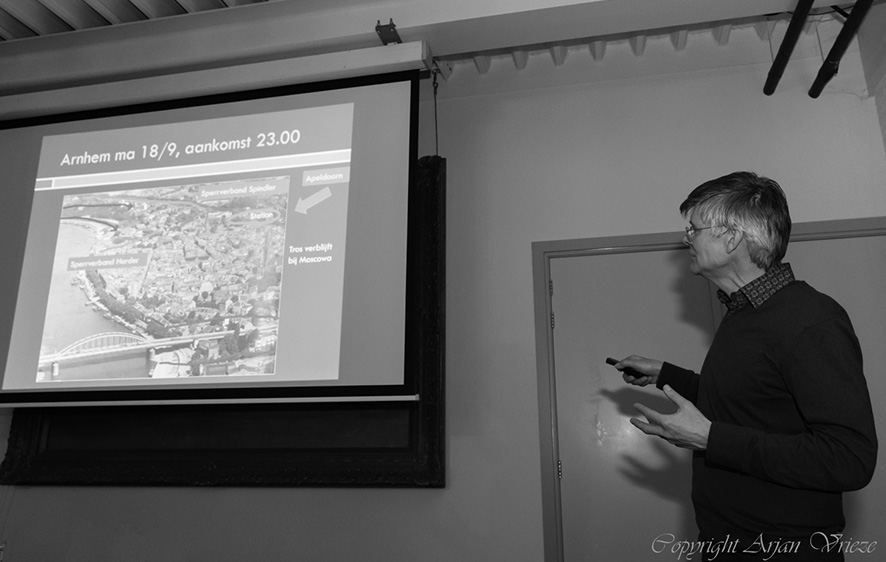
Arno Maan aan het woord (foto: Arjan Vrieze).
THEMA-AVOND DE 6-PONDERS DIE HET VUILE WERK DEDEN / BRITSE ANTITANK IN DE SLAG OM ARNHEM
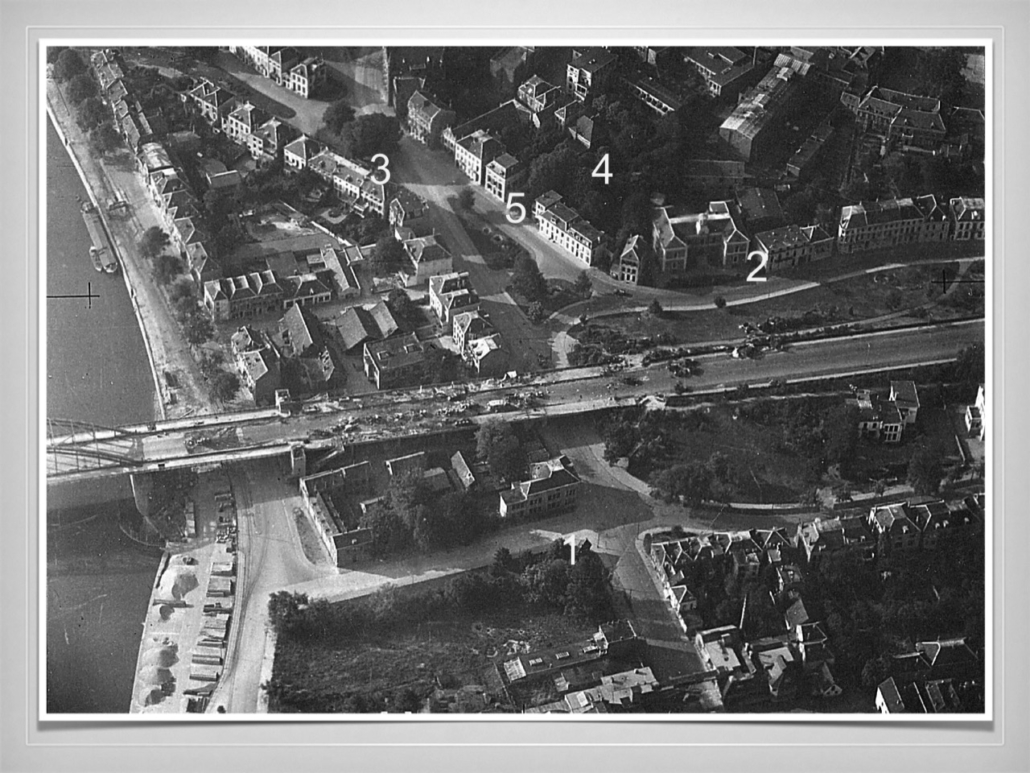
De stukken van B Troop bij de noordelijke brugoprit in Arnhem.
Op vrijdagavond 15 februari vond in dorpshuis De Poort van Doorwerth de eerste VVAM-themabijeenkomst van 2019 plaats, die door maar liefst 66 gasten werd bezocht. Dat hadden er zelfs meer kunnen zijn, maar de beperkte capaciteit van de beschikbare ruimte noodzaakte ons een aantal geïnteresseerden teleur te stellen. Het onderwerp was dit keer de rol van de Britse anti- tankeenheden in de Slag om Arnhem. De presentatie werd verzorgd door Eugène Wijnhoud, erkend en gewaardeerd materiedeskundige op dit gebied. In een boeiend, overzichtelijk en uiterst nauwkeurig geïllustreerd verhaal schetste Eugène de verschillende fasen in de slag en het aandeel dat de antitank daarin had. De rol van Luuk Buist in het overzichtelijk maken van de presentatie mag niet onvermeld blijven.
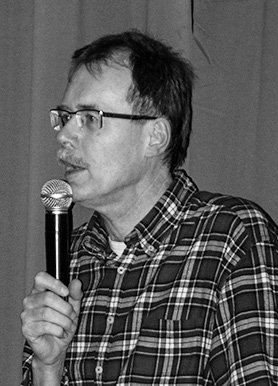
Eugène Wijnhoud tijdens zijn lezing.
52 STUKS
Tot op het stuk nauwkeurig, en ondersteund met overzichtelijke schetsen en een grote hoeveelheid authentieke foto’s, stond Eugene stil bij de volgtijdelijke fasen van de slag om Arnhem. Eugène nam de toehoorders eerst mee naar de verrichtingen van de aan 2nd Parachute Battalion gekoppelde B Troop die rond de noordelijke oprit van de Arnhemse brug stellingen hadden betrokken. Daarna volgde de inzet in de wijk Lombok in Arn-hem-West op maandag en dinsdag 18/19 september. Als laatste kwam de strijd aan bod in en rond de perimeter van Oosterbeek van 20 tot en met 25 september.
In twee lifts waren de Britten in staat 52 6-pdr-anti- tankkanonnen (in Horsa-zweefvliegtuigen) en zestien 17-pdr-geschut (in Hamilcar-zweefvliegtuigen) naar de landingszones te vervoeren. De parachutistenbataljons van de 1st en 4th Parachute Brigades werden ieder on- dersteund door vier 6-ponders. De drie bataljons van de 1st Airlanding Brigade konden per bataljon beschikken over de vuurkracht van acht 6-ponders. Voor de Pool- se Brigade waren vijftien 6-ponders bedacht. De Polen hebben hun antitankstukken echter nooit zelf kunnen gebruiken omdat deze ten noorden van de Rijn werden ingevlogen, terwijl de Poolse parachutisten uiteindelijk pas op donderdag 21 september ten zuiden van de Rijn zouden worden gedropt.
MORTIERVUUR
De vraag doet zich gelden hoe effectief het antitankge- schut nou eigenlijk is geweest tijdens de slag. In algemene zin kan worden gesteld dat het resultaat van hun inzet teleurstellend kan worden genoemd. Met name de 17-ponders hebben nauwelijks kunnen deelnemen aan de gevechten. Voor een deel had dit te maken met hun gewicht. Voor een ander deel omdat een aantal Mor- ris-trekkers het op de beslissende momenten liet afweten. Veel antitankkanonnen en hun bemanningen bleken te zijn uitgeschakeld door Duits mortiervuur.
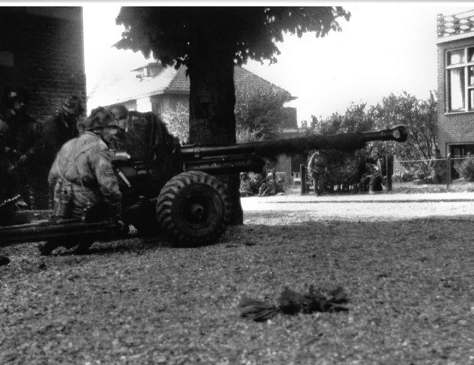
6-ponder op de Utrechtseweg.
Toch werden weldegelijk belangrijke successen geboekt. Zo waren de stukken van B Troop behoorlijk effectief. Ze hebben een belangrijk deel van de pantservoertuigen van het 9. SS-Aufklärungsbataillon van SS-Hauptsturm- führer Gräbner op de noordelijke oprit weten uit te scha- kelen. Daarnaast waren zij ook effectief tegen de Panzer- kampfwagen IV van Kampfgruppe Mielke toen deze op maandag en dinsdag de brug vanuit het oosten aanvielen. De 6-ponders (negen stuks) en een enkele 17-ponder die zich een dag later in de wijk Lombok hadden verzameld, afkomstig van A, C en E Troops en verbonden aan res- pectievelijk het 1st, 3rd en 11th Parachute Batallion zijn veel minder effectief geweest tegen de tegenaanvallen van het gemotoriseerde geschut van Sturmgeschütz Brigade 280 en de halftracks van Kampfgruppe Spindler. Een duidelijke verklaring daarvoor is niet echt te geven.
VICTORIA CROSS
De gevechten in Oosterbeek lieten weer een heel ander beeld zien. De 6-ponders van de South Staffords in het zuidelijke deel van de perimeter bij Oosterbeek-Laag wisten de Duitsers behoorlijke verliezen toe te brengen. Eén commandant van een 6-ponder die was verbonden aan dit bataljon, Lance-Sergeant John Baskeyfield, werd er zelfs voor onderscheiden met een Victoria Cross. Een wisselend beeld karakteriseerde ook de inzet van het ge- schut in het westelijk deel van de perimeter, waar de bij het Border Regiment ingedeelde antitankkanonnen een aantal tot vlammenwerpende tanks omgebouwde Franse Char B’s hebben weten uit te schakelen. Datzelfde gold ook voor het noordelijke deel waar de antitankkanonnen van de King’s Own Scottish Borderers het tegen pantser- voertuigen van Kampfgruppe Spindler hebben opgeno- men. Dat de vraag volgde waarom 1st Airborne Division zoveel antitankcapaciteit had meegenomen, terwijl vol- gens de planners van de operatie amper sprake zou zijn van een Duitse gepantserde dreiging, was te verwachten. Helaas laat het antwoord hierop zich 75 jaar later nog slechts raden.
– Otto van Wiggen
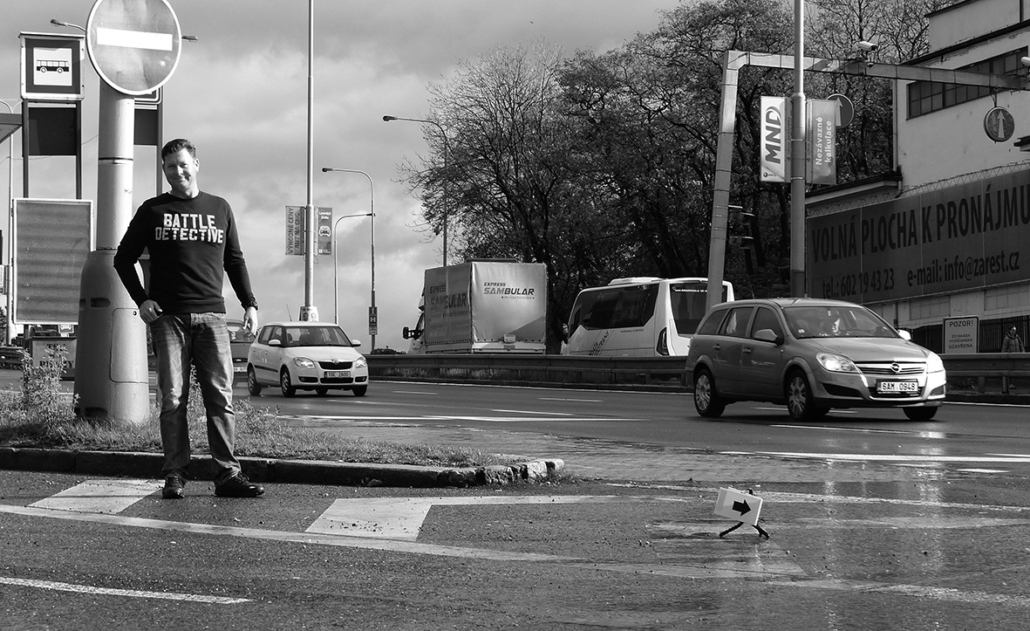
Timmermans op de exacte locatie van de aanslag op nazileider Heydrich in Praag.
DE WAARHEID KENT GEEN TIJD
DE MOTIVATIES EN ONDERZOEKSMETHODEN VAN EEN NEDERLANDSE BATTLE DETECTIVE
Zijn methodes lijken op die van Sherlock Holmes in de BBC-serie Sherlock (2010-). Zelf zou hij zich eerder ‘myth buster’, of beter ‘battle myth buster’ noemen. Voor Tom Timmermans (Eindhoven, 1970) is een krijgshistorisch ‘feit’ pas een feit als dit is ontdaan van aannames en op z’n minst forensisch door hem is getoetst. “Waarheidsvinding, daar gaat het me om”, zegt hij met een brede lach. Hoe een hobby een diepe passie werd.
Tom Timmermans, financieel analist, vrijwilliger bij de Werkgroep Vermiste Personen Tweede Wereldoorlog en drijvende kracht achter het Engelstalige Battledetective. com, is er de man niet naar om dingen voor lief aan te nemen. Nooit gedaan ook. “Het begon eigenlijk tijdens mijn dagelijkse treinritten van Eindhoven naar mijn werk bij de Rabobank in Utrecht”, zegt Timmermans. “Ik lees graag, en ik had altijd wel een boek bij me over een militairhistorisch onderwerp. En uiteraard een extra boek voor als ik zonder zou komen te zitten. Wat me opviel,
en wat me nog steeds bezig houdt, is dat veel anekdotes en verhalen keer op keer worden overgenomen in nieuwe publicaties. Soms zie je dezelfde gebeurtenis zelfs terug op een heel andere locatie of op een ander tijdstip. Daar wil ik dan het fijne van weten.”
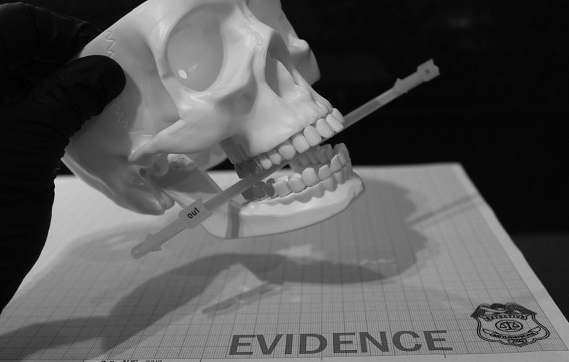
De baan van één van de kogels die Kussin doodden.
KUSSIN
Het is 2007 als Timmermans zijn website begint met dossiers, ‘case files’, die een nieuw licht werpen op een bekend WOII-feit. Inmiddels zitten er zo’n 80 dossiersin de online archiefkast van Battledetective.com, stuk voor stuk goed doorwrochte stukken die een interesse verraden in het op een haast wetenschappelijke manier rechercheren van het verleden. “Het is vaak een zin of een enkel woordje dat me opvalt in een tekst”, aldus Timmermans. “Neem bijvoorbeeld het verhaal over Kussin, de generaal-majoor die Stadtkommandant was van Arnhem ten tijde van de slag om Arnhem. Ik vraag me dan, net als sommige andere lezers af: waarom hebben de Britten die man niet gevangen genomen en ondervraagd, in plaats van hem onder vuur te nemen, met de bekende afloop tot gevolg?” Waar de meesten de schouders ophalen en doorgaan met koken of de was, neemt Timmermans laptop, camera of een forensisch hulpmiddel ter hand. “Het gaat me om het valideren van een these. Zo heb ik het in het geval van Kussin onderzocht of hij inder- daad is gescalpeerd, zoals in diverse rapporten en boeken is vermeld.” Timmermans kwam tot een ander, zij het misschien bekend inzicht, zoals valt te lezen op zijn site. Maar de bijvangst is op z’n minst intrigerend. “O, je be- doelt de analyse van zijn gebit? Nou, in feite is dat een sa- menloop van toevalligheden geweest”, legt Timmermans enthousiast uit. “Ik wist aan het niet helemaal publieke document te komen dat bij de herbegrafenis van Kussin is opgesteld. Daarin is ook zijn gebitsstaat opgenomen. Ik moest kort daarna voor een controle naar mijn tandarts en heb hem gevraagd of hij de omschrijvingen voor mij wilde ‘plotten’ op een gebitskaart. Weer iets later kwam ik op een rommelmarkt een fantoommodel tegen van een schedel. Met een onderlegger, een rode marker en wat uitleg heb ik er zo een onderzoeksverslag van gemaakt van de bullet trajectory. En het mooie is: Kussin is wat verstopt op de site, maar het is één van de meest gelezen case files.”
LUMINOL
De resultaten mogen dan vaak met wat geluk tot stand komen, Timmermans’ methoden zijn alles behalve toe- vallig. “In zekere zin heb ik gemakkelijker praten dan iemand die een boek schrijft”, zegt Timmermans. “Ik hoef alleen maar het werk van een ander te ontkrachten. Of beter: te toetsen. Daarbij maak ik inderdaad gebruik van methoden en hulpmiddelen die je misschien eerder verwacht in een tv-serie zoals Crime Scene Investigati- on. Ik probeer in ieder geval altijd zo volledig mogelijk te zijn. Zo kwam ik bijvoorbeeld via Crimescene.com aan luminol, een stof waarmee je bloed, zelfs heel oud bloed, blauw laat oplichten. Met een vriend van mij heb ik vervolgens onderzoek gedaan in de toren van de Vlok- hovense kerk in Eindhoven. Het verhaal ging dat daar in de oorlog een Duitse sluipschutter zou zijn gedood. We zijn ter plaatse gaan kijken en hebben de beschreven plek in de toren geluminold. Het enige dat daarbij aan het licht kwam was een roestige spijker. Blijkt het spul een verbinding aan te gaan met álle ijzeroxidatie, ook die in bloed. Zo leren wij ook steeds bij. Het verhaal werd niet veel later overigens ontkracht door de koster.
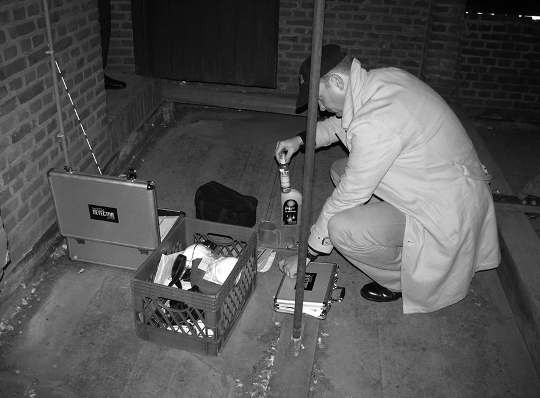
Luminol-onderzoek in de Vlokhovense kerk.
Vaak is het ook een kwestie van écht goed zoeken op internet, doorvragen en een beetje brutaal durven zijn. Robert Kershaw citeert in It never snows in September een Duitse soldaat die zegt dat de Amerikanen bij de kanaalbrug in Veghel giftige stoffen uit de nabijgelegen fosfaatfabriek in een greppel hebben laten lopen om de Duitsers te stoppen. Daar bleek niets van waar. De fosfaatproductie lag vanwege de oorlog namelijk helemaal stil, vertelde iemand die in de fabriek had gewerkt.
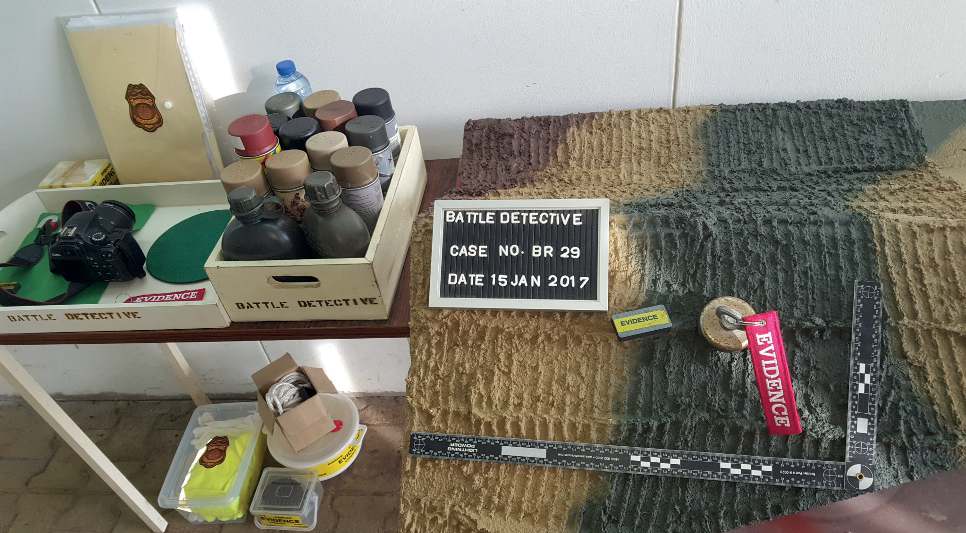
Zimmerit-productie.
Soms moet je net even wat meer moeite doen. En begrijp me niet verkeerd: iedereen kan dat. Dat verhaal over Jan van Hoof, de Nijmeegse verzetsheld die de Waalbrug voor vernietiging zou hebben behoed door de bedrading naar de springladingen op de brug onklaar te maken… Heinz Harmel, bevelhebber van de 10. SS-Panzer-Division Frundsberg, zegt in Der Freiwillige, een tijdschrift voor oud-SS’ers, dat hij opdracht heeft gegeven voor vernietiging, maar dat de draden al waren beschadigd door granaatvuur bij de brug. Nummers van Der Freiwillige zijn gewoon via het Bundesambt für Verfassungsschutz, zeg maar de Duitse AIVD, op te vragen.”
ONBEVANGEN
Zijn ‘hobby’ slokt behoorlijk wat tijd op, geeft Timmermans enigszins schoorvoetend toe, maar de waarheid kent geen tijd. En daarbij: het is soms gewoon een razend in- teressante zoek- en experimenteertocht, meent hij. “Mijn vriendin vindt het gelukkig prima, en gaat vaak mee.” Alle monumentale Duitse kanonnen en tanks in Europa fotograferen? Tuurlijk, er staat nog een ‘onontdekte’ PAK in Toulon! Een kijkje nemen in de kelder van het lone house in Bruneval? Zaklampje mee en doen. De plek waar George Patton verongelukte? Dan zetten we de boel toch gewoon even af, geel hesje aan, verkeer tegenhouden en met krijtstrepen de ongelukssite markeren om een beter inzicht te krijgen. En hoe maak je eigenlijk zimmerit? “De bestanddelen staan op Wikipedia. Het is vooral een kwestie van het bindmiddel pas op het laatst toevoegen, weet ik nu”, legt Timmermans luid schaterend uit. Om vervolgens in geuren en kleuren te vertellen hoe je die antimagnetische pasta, door de Duitsers in de oorlog op pantservoertuigen gesmeerd, nu eigenlijk maakt.
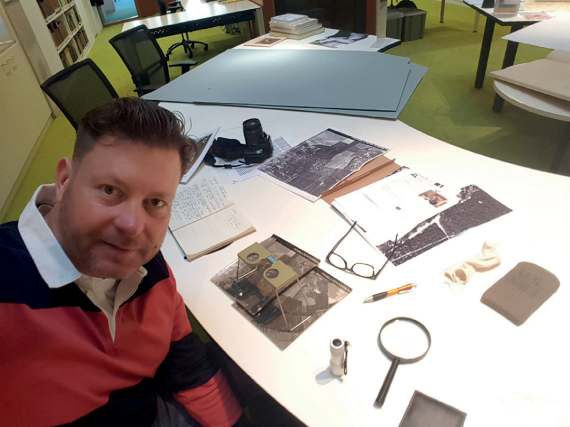
Temidden van het onderzoeksmateriaal voor de ‘smoking gun’-theorie bij Wageningen University & Research.
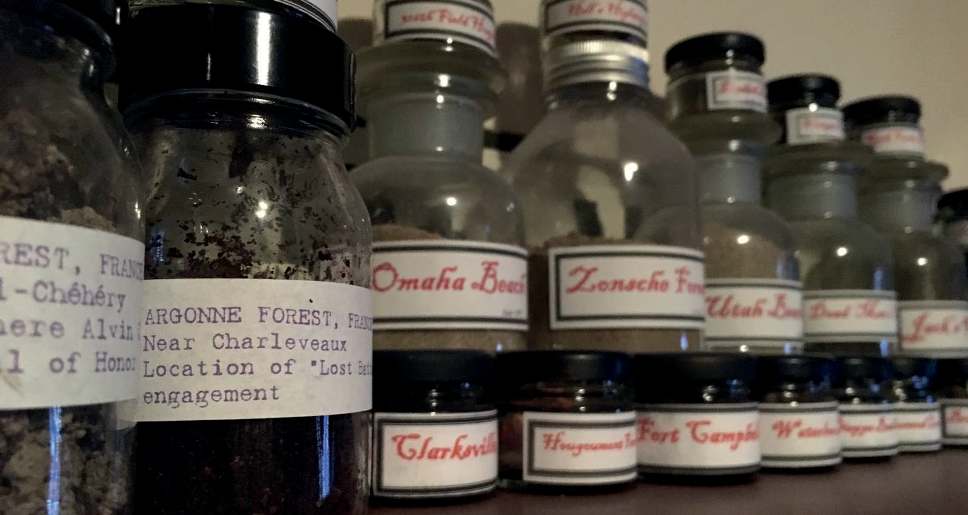
Grondmonsters in de collectie van Timmermans.
Onder andere met hulp van een collega met een autospuitcabine in zijn geval.
Met zijn jeugdige onbevangenheid lijkt Timmermans vaak een heel eind te komen. En ach, als dat hier en daar wat vragen of kritiek oplevert, dan zij dat zo. “Waarheidsvinding staat bij alles wat ik doe voorop; wat heeft er nou daadwerkelijk plaatsgevonden? Daar probeer ik zo dicht mogelijk bij te komen. En natuurlijk krijg ik dan weleens kritiek. Ik toets werkmethoden, en dan kom je soms in het persoonlijke domein van iemand. Maar mij gaat het écht om het aantonen van de juistheid of onjuistheid van uitspraken. Dat staat voor mij overigens niet gelijk aan gelijk krijgen. Mocht ik het zelf bij het verkeerde eind hebben of mocht er informatie ontbreken in mijn eigen bevindingen, dan pas ik mijn case file aan. Een update is gelukkig zo gemaakt. Dat is ook het voordeel van een site runnen.”
“Wat er nog op mijn lijstje staat?”, vraagt Timmermans. “Waterloo in ieder geval. En Hastings en misschien Little Bighorn, een slag tussen indianen en het Amerikaanse leger in 1876.” De waarheid is voorlopig nog niet van Tom Timmermans af.
– Alexander Heusschen
– Fotografie: Tom Timmermans
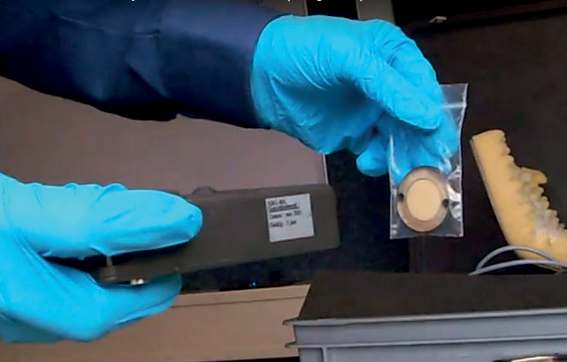
Stralingsmeting op een nog steeds radioactieve ‘marker disk’ uit WOII.
Naschrift: Op dit moment is Battledetective.com bezig met een analyse van wat Timmermans de ‘smoking gun’ van de Slag om Arnhem noemt: de cruciale luchtfoto’s waarmee inlichtingenofficier Brian Urquhart (100 inmiddels) zijn meerderen adviseerde de operatieplannen niet door te zetten: wat is er nou eigenlijk precies op te zien? Hopelijk meer hier- over in een volgende uitgave van Airborne Magazine.
MINISTORY 130: ZOEKEN NAAR EEN SPOORWEGOVERGANG
In september vorig jaar fietste ik als slagveldgids1 met een geïnteresseerde langs de opmarsroute van 1st Battalion The Parachute Regiment. Als vanzelfsprekend kwamen we tussen de Johannahoeve en het spoorviaduct bij station Oosterbeek uit op de vraag waar 1st Bn. nou eigenlijk het spoor moet zijn overgestoken. Dit bracht me ertoe verder onder- zoek te doen. Dus op naar Utrecht, waar ik bij de bibliotheek van het Spoorwegmuseum en bij Het Utrechts Archief een aantal oudere documenten heb bekeken. Met het resultaat wil ik een bijdrage leveren aan deze nog steeds levendige discussie.
1st Parachute Bn. landde in de middag van 17 sep- tember 1944 op landingszone X en verzamelde zich rond de Jonkershoeve op de Renkumse Heide. Het bataljon was versterkt met A Troop van de 1st Airlan- ding Anti-Tank Battery RA (6 pdr), een sectie van D Troop van de 1st Airlanding Anti-Tank Battery RA (17 pdr), een Recce Detachement uit het 1st Parachu- te Squadron RE en no. 1 section van de 16 Parachute Field Ambulance.2
Dit versterkte bataljon zou na de eerste lift hebben beschikt over:
1. de organieke bataljonsvoertuigen: twee Universal- carriers en acht jeeps3,
2. vier 6-ponder-antitankkanonnen, getrokken door jeeps4,
3. twee 17-ponder-antitankkanonnen, getrokken door een Morris-trekker5,
4. één of twee jeeps bij het Recce Detachment RE. Verder wordt aangenomen dat bij no. 1 section, 16 Parachute Field Ambulance – uitgaande van de per- sonele sterkte6 van deze sectie van één regimental medical officer, een sergeant en achttien anderen – in totaal vier jeeps voor gewondentransport aanwezig waren: één voor het bataljonshoofdkwartier en één voor elke compagnie. Eén van de Horsa-gliders met een 6-ponder heeft landingszone Z niet gehaald. Van de 17-ponders is één Hamilcar-glider bij de landing gecrasht. Beide kanonnen en voertuigen waren dan ook niet meer inzetbaar.7 Het bataljon moet dus, bij vertrek van de LZ, de beschikking hebben gehad over maximaal achttien wielvoertuigen én twee rupsvoer- tuigen.
De opdracht voor 1st Bn. luidde:
”Tasks: (i) Occupy high ground in squares 7580 and 7279 to deny enemy direct observation on to ARNHEM.
(ii) to cover approaches to town within bn bdys. (iii) To keep one Coy in res in area rd junc 746790 for use as Bde res. This Coy NOT to be committed without ref to Bde HQ.” 8
HANDKRACHT
Om circa 17:00u begon het bataljon aan de opmars naar de opgedragen doelen. De route voerde van lan- dingszone X via NS-station Wolfheze en de Johanna- hoeveweg, ten noorden van het spoor, naar de Leeren Doedel. Vandaar zou de opmars verder gaan op de Amsterdamseweg, in oostelijke richting naar de krui- sing Amsterdamseweg-Schelmseweg (kaartvierkant 7279) en de Apeldoornseweg ten noorden van de villa Heselbergh (kaartvierkant 7580).
De opmars van 1st Bn., zonder R Company die met de enige 17-ponder9 en waarschijnlijk met één jeep voor gewondentransport elders in gevecht was, kwam rond 21:00u via een omweg tot staan in de directe omgeving van de Johannahoeve10. Verkenningen ga- ven aan dat er een sterke Duitse aanwezigheid was bij de Leeren Doedel, net als op en langs de zuidrand van de Amsterdamseweg. De zon was inmiddels bijna on- der. Om 21:45u viel de duisternis echt in. Daarmee was het plan om verder te trekken over de Amster- damseweg onmogelijk geworden. Wat nu? Een onverwacht ontvangen radiobericht van 2nd Bn. maakte duidelijk dat deze op de verkeersbrug aanwezig was en vroeg om versterkingen.11 Daarop nam Lt. Col. Dobie zijn besluit: ”I’m not going on to the north of Arnhem; we will try to get down to help Johnny at the bridge.”12 Zijn originele opdracht om stellingen te betrekken aan de noordrand van Arnhem liet hij hiermee los.
Het moet ergens tussen middernacht en 04:00u zijn geweest dat 1st Parachute Bn. vanuit de omgeving van de Johannahoeve het spoor Arnhem-Utrecht overstak in zuidelijke richting. Deze verplaatsing werd uitge- voerd op korte afstand van de vijand en dus was vij- andcontact ongewenst. Deze verplaatsing moest dus onder strikte geluidsdiscipline en zo stil mogelijk wor- den uitgevoerd. Dit leidde tot de opdracht om geen motoren te starten en op handkracht de circa veertien jeeps (leeggewicht: ruim 1.000 kg) en twee Univer- sal-carriers (leeggewicht: bijna 3200 kg) over enige af- stand duwend te verplaatsen13. Dat dit over bospaden en onverharde weggetjes gebeurde maakte deze actie extra zwaar.14
SITUATIE VIJAND
Maar waar stak het bataljon het spoor over? De voor de hand liggende optie, zeker op de stafkaart uit 1944 (figuur 1) is het spoorviaduct van Oosterbeek. Maar was dat ook mogelijk, gelet op de vijandelijke posities en activiteiten op dat moment? Eerder op de avond van de 17e waren bij datzelfde viaduct al twee eenheden gepasseerd. Eerst het SS-Panzergrenadier Ausbildungs und Ersatz Bataillon 16 dat rond 22:00u naar het noorden ging, om vervolgens contact te maken met de SS-Kampfgruppe Von Allwörden bij de Leeren Doe- len15. En iets later ook de C Company van 3rd Para- chute Bn. dat in oostelijke richting een weg zocht naar Arnhem, ten zuiden van de spoorlijn. In hun verslag wordt geen melding gemaakt van gevechtscontact bij het spoorviaduct.
Zeker is dat Kampfgruppe Von Allwörden bij de Leeren Doedel in eerste instantie niet genoeg manschappen16 had om de hele Dreijenseweg te bezetten. Wel had deze eenheid de mogelijkheid patrouilles uit te sturen en tijdelijke waarnemingsposten in te richten. Uit de war diary van 1st Parachute Bn. blijkt dat men één of meerdere patrouilles is tegengekomen en er steeds kort vuurcontact was. Het is dus waarschijnlijk, maar niet bevestigd, dat de Kampfgruppe Von Allwörden het spoorviaduct in ieder geval onder waarneming hield. Deze optie valt om die reden voor mij af.
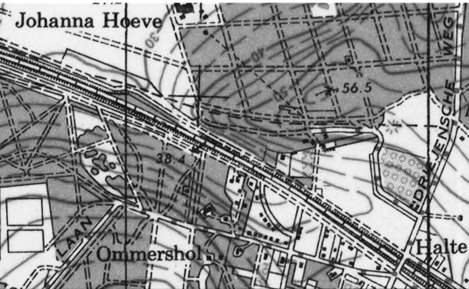
Figuur 1: Uitsnede stafkaart 1944, blad 6 NW Arnhem-Ginkel; 1:25.000. De afstand tussen beide verticale lijnen is 1 km.
In de war diary van 1st Parachute Bn. wordt aange- geven dat men tijdens de verplaatsing ten westen van het station op de vijand stuitte17 en deze groep met een aantal gewonden verdreef in waarschijnlijk oos- telijke richting. In het verslag staat ook de zinsnede “bumped enemy post cross tracks”. Dit kan worden vertaald als het verdrijven van een vijandelijke post aan de overzijde van het spoor. Maar het kan ook een vijandelijke post aan weerszijden of dwars-over (a-cross) het spoor zijn geweest. Deze post kan moge- lijk bij het westelijke einde van de perrons hebben ge- zeten. Het betekent in ieder geval dat men ten westen van deze Duitse post het spoor is overgestoken.
DWARSPROFIEL
Waren er dan nog andere oversteekmogelijkheden? De suggestie wordt vaak gedaan dat men ‘gewoon’ het spoor is overgestoken. Maar het dwarsprofiel van de spoorbaan zag er op hoofdlijnen uit zoals dat er nu nog steeds uitziet. Uit het Handboek Spoortechniek18 van vóór de oorlog blijkt dat in een dwarsprofiel links en rechts van het spoor altijd afwateringsgeulen aan- wezig waren (figuur 2). Daarnaast stelt dit boekwerk dat: “het profiel van de aardebaan is bepaald door ervaring”. Ten aanzien van de gehele constructie geldt verder dat “de kruinbreedte een functie is van de afstand van de sporen bij twee of meer sporen, de lengte en de dikte van de dwarsliggers; de dikte van de ballastlaag onder de dwarsliggers, de hoeveelheid ballast die voor de koppen van de dwarsliggers nodig is; het talud waaronder de ballast blijft staan; de hel- ling die de aardebaan ten behoeve van de afwatering moet verkrijgen en de breedte van de berm naast het ballastbed”. Met zoveel variabelen is dus geen exacte afmeting te geven van de hoogte en breedte van het talud in 1944.

Figuur 2: een voorbeeld van een normaal dwarspro- fiel spoorbaan (Handboek voor Spoorwegtechniek).
Mede gelet op de situatie ter plaatse kan worden gesteld dat de spoorbaanconstructie als militaire hindernis moet worden gekwalificeerd als stoppend voor wielvoertuigen en ten minste remmend voor rups- voertuigen. Dit maakt het dwars over het spoor en geluidloos verplaatsen van de voertuigen van 1st Parachute Bn., al dan niet met een aangehaakte last, bijzonder lastig en eigenlijk vrijwel onmogelijk. Dit zou ook betekenen dat er geen andere mogelijkheden wa- ren om het spoor over te steken dan of via het viaduct of via een andere spoorwegovergang. Daarmee valt de optie ‘gewoon het spoor oversteken’ dus ook af.
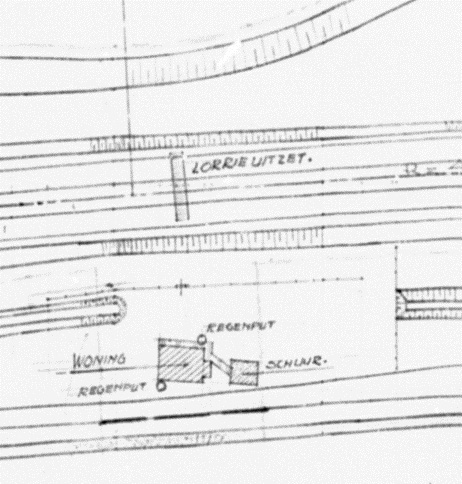
Figuur 3: Uitsnede tracékaart Bilderberglaan (Utrechts Archief, NL-UtHUA_A179713).
LORRIE-UITZET
Is er dan nog een andere optie te vinden? Het bestude- ren van de handgetekende tracékaarten van het spoor tussen Ede-Wageningen en Arnhem (schaal 1:1.000 uit de jaren ‘30) in Het Utrechts Archief onthult nog een andere onverwachte mogelijkheid.
Op een militaire stafkaart uit 1944 (figuur 1) is, zij het nauwelijks of niet zichtbaar door andere symbo- len, een woning19 ingetekend aan de zuidzijde van het spoor, tussen het spoortracé en de Bilderberglaan. Dit is circa 200 meter ten westen van de huidige T-splitsing met de Valkenburglaan en de Nico Bo- venweg. Deze woning (figuur 4) is al wel zichtbaar op de originele tracékaart van het spoor ten westen van de halte Oosterbeek-Hoog. Op deze kaart is bij deze woning ook een zogenaamde lorrie-uitzet (figuur 3: verticale lijnen net boven het midden) zichtbaar: een locatie waar door spoorwegwerkers een lorrie, een klein niet-aangedreven railvoertuig, op het spoor kan worden gezet. Dat betekent dat deze overgang en de directe omgeving verhard moeten zijn geweest.
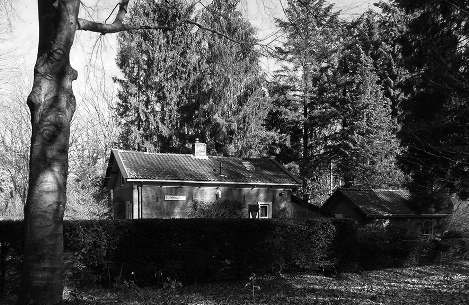
Figuur 4: Bilderberglaan 1, februari 2019 (foto: D. Hoekendijk).
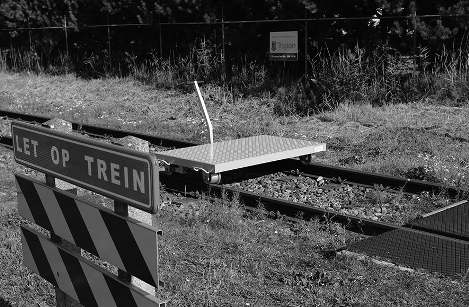
Figuur 5: Geremde eenvoudige lorrie (foto: Robert Bakker, SPIBA).
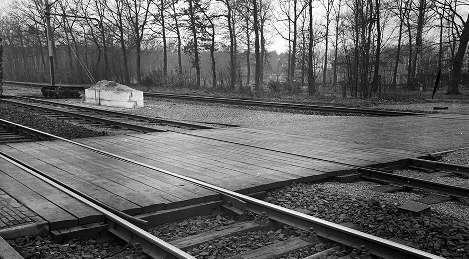
Figuur 6: Spoorwegovergang met eikenhouten overwegbeplating in Wolfheze (Het Utrechts Archief, nr. 836116. Opnamedatum 6 feb. 1954. Foto: NS).
Deze lorrie-uitzet was hoogstwaarschijnlijk voorzien van een eikenhouten overwegbeplating zoals in figuur 6. De huidige bewoner van de woning vertelde dat NS deze uitzet heeft verwijderd, ruim voordat de vorige bewoners de woning betrokken. Dat moet dan tenminste 40 jaar geleden zijn geweest, dus in ieder geval vóór 1980. Waarschijnlijk is toen ook de opgang naar het spoor aan de zuidzijde verwijderd. Aan de noordzijde is de opgang nog wel terug te vinden in het bos (figuur 7). Vanaf de bosrand is ook de locatie van de Johannahove goed zichtbaar (figuur 8).
Op de luchtfoto van de omgeving van Oosterbeek-Hoog op de volgende bladzijde, genomen op 6 september 1944, is linksboven op de foto deze spoor- wegovergang zichtbaar. Op de uitvergroting van dat deel van de betreffende luchtfoto (rechts) is de wo- ning even ten zuiden van het spoor herkenbaar. Ook de oversteek zelf is zichtbaar en er lijken voertuigsporen te zien te zijn die vanaf de overgang in zuidoostelijke richting lopen.
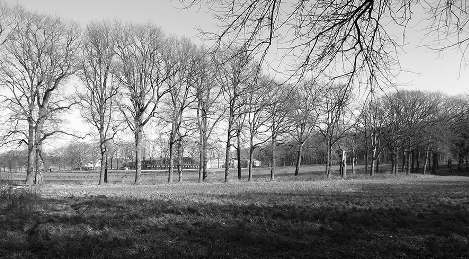
Figuur 7: Noordzijde spoor, oude opgang naar lorrie-uitzet overgang (foto: D. Hoekendijk).
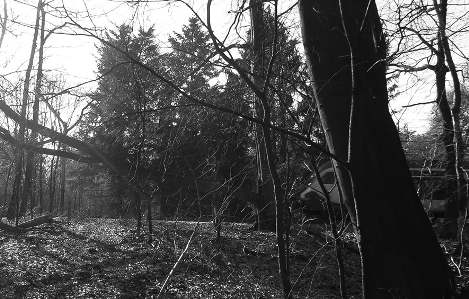
Figuur 8: Blik op Johannahoeve vanuit bosrand (foto: D. Hoekendijk).
Ten opzichte van de Johannahoeve lag deze lorrie-uitzet, tevens spoorwegovergang, globaal ten zuidwesten van en achter de waarschijnlijke posities van 1st Bn. in de nacht van 17-18 sep 1944. Dit maakt het een ideale situatie, waarbij de eenheid zich gedekt door het bos naar de spoorweg kon verplaatsen, weg van de vijand in de omgeving van de Leeren Doedel. Deze manoeuvre werd dan ook aan het zicht van de vijand onttrokken. De bossen maskeerden de geluiden. De paden naar deze overgang waren net als nu hoogstwaarschijnlijk onverhard.
Ook vanaf het spoorviaduct Oosterbeek, op 1,2 km in oostelijke richting, was deze overgang niet zicht- baar. De flauwe bocht in het spoor onttrekt deze oversteekmogelijkheid grotendeels aan het zicht van even- tuele Duitse patrouilles of waarnemingsposten bij het viaduct of op de perrons. Dat is zeker het geval in het holst van de nacht.
CONCLUSIE
⦁ 1st Parachute Bn. heeft hoogstwaarschijnlijk de lorrieuitzet-oversteek gebruikt voor de voertuigen van het bataljon, om vervolgens aan de zuidzijde van het spoor op de Bilderberglaan, de motoren weer te kunnen starten.20
⦁ De parachutisten zijn eenvoudig te voet ten oosten hiervan het spoor overgestoken en hebben zo een scherm gevormd om de overstekende voertuigen te beschermen, in het geval van vroegtijdige ontdek- king.
⦁ De opmars richting Arnhem is vervolgens zuid van het spoor voortgezet door Oosterbeek.
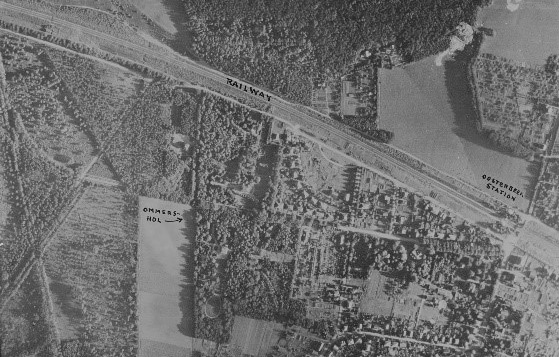
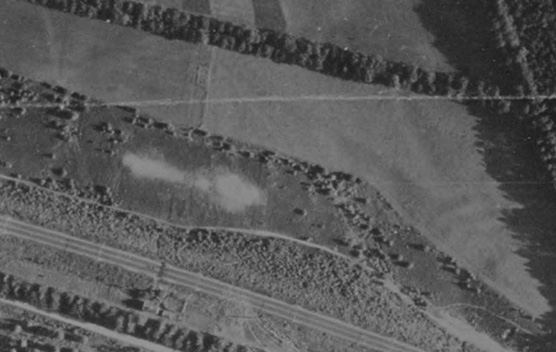
Figuren 9 en 10: Luchtfoto van 6 september 1944: spoorlijn Utrecht – Arnhem ten westen van Station Ooster- beek Hoog, rechts aan de rand van de linkerfoto (foto: 541 Squadron RAF).
Het is niet onwaarschijnlijk dat door het eerdere gevechtscontact langs het spoor, men er voor heeft gekozen om via de eerste verharde zijweg, de Graaf Ottolaan, rechtsaf door de Oosterbeekse bebouwing verder te trekken, uit het zicht van de vijand, waarna men om 05:30u21 in de omgeving van de oostrand van Oosterbeek op de Utrechtseweg weer vuurcontact had.
– Kolonel KL b.d. Dirk Hoekendijk MLD
Bronnen
⦁ Curtis, Cherry & Howes, Four days at Arnhem (Brendon Publishing, Warton, 2016).
⦁ Revell, Cherry & Gerritsen, Arnhem, A few vital hours (Sigmund Publishing, Renkum, 2013).
⦁ Hees, A.J., Tugs and Gliders to Arnhem (2000).
⦁ Handboek voor Spoorwegtechniek (Sijthoff’s Uitgeversmaatschappij, Leiden, 1937).
⦁ Fürbringer, H., La Hohenstaufen (Album Histori- que, Edition Heimdal, 1998).
⦁ Kershaw, R.J., It never snows in September (Ian Allen Publishing, Hersham, 2013).
⦁ De inzet van het 17-ponder anti-tankkanon tijdens de Slag om Arnhem, A.B.R.G., 1994.
⦁ Het Utrechts Archief, NL-UtHUA_A179713
(km 85.8 – km86.8), tracékaart Oosterbeek-West.
⦁ VVAM ministory 107, John Waddy, bijlage bij Nieuwsbrief 121 VVAM, februari 2011.
⦁ VVAM-thema-avond Antitank in de slag om Arnhem – inzet van de 6- en 17-pdrs bij Arnhem (Eugène Wijnhoud, 15 feb. 2019).
⦁ Website Pegasus Archive – Arnhem – War Diaries: ⦁ www.pegasusarchive.org/arnhem/frames.htm
Voetnoten
1. Zie 1. www.bta44.nl.
2. OPERATION “MARKET” 1 Parachute Brigade Operational Order No.1, Paragraph 8.c.
3. Tugs and Gliders to Arnhem, p. 276.
4. De inzet van het 17-ponder-antitankkanon, p. 3.
5. De inzet van het 17-ponder-antitankkanon, p. 3.
6. VVAM Ministory 107, p. 1.
7. VVAM-thema-avond Antitank in de slag om Arnhem (Eugène Wijnhoud, 15 feb. 2019).
8. OPERATION “MARKET” 1 Parachute Brigade Operational Order No.1, Paragraph 8.c.
9. VVAM-thema-avond Antitank in de slag om Arnhem (Eugène Wijnhoud, 15 feb. 2019).
10. Voor meer details zie Four days at Arnhem, p. 7.
11. Idem, p. 8, 1ste alinea, laatste drie regels.
12. Idem, p. 8, 2de alinea, laatste twee regels.
13. Idem, p. 8, 5e alinea, eerste vier regels.
14. Idem, p. 9, 18th September 1944 – 03:00u.
15. Arnhem, a few vital hours, p. 79.
16. La Hohenstaufen, p. 419: “1 Kompanie der SS-Panzerjäger-Abteilung 9: 120 Mann ohne
Geschütze”, als Infanterie. NB. Daarnaast wijst Kershaw op pagina’s 123 & 411 op de mogelijke aanwezigheid van twee Panzerjäger IV en een 75mm-antitankkanon op de avond van de 17e, als ook op het ter plaatse zijn van pantservoertuigen van de 9. SS-Aufklärungs-Abteilung.
1. Four days at Arnhem, p. 9 – 03:00u.
2. Handboek voor Spoorwegtechniek, p. 8.
3. Huidige adres: Bilderberglaan 1, 6861 AC Oosterbeek.
4. In een gesprek van de auteur met de bewoonster (februari 2019) gaf deze aan dat in het verleden regelmatig touringcars stopten bij de woning en een gids uitleg gaf. Dit is geen sluitend bewijs, maar wel een indicatie dat de conclusie niet onwaarschijnlijk is.
5. Four days at Arnhem, p. 9 – 05:30u.
HET BATALJON DAT VERDWEEN IN HET BOS
156TH BATTALION, THE PARACHUTE REGIMENT IN DE SLAG OM ARNHEM
Op zondag 28 April 2019 organiseert de VVAM de battlefieldtour 156th Battalion in de slag om Arnhem. Het programma bestaat uit een busrit en twee wandelingen van vijf kilome- ter vóór en na de lunch. Onze gids is Nick Kelso, een in Nederland wonende Brit die John O’Reilly, auteur van twee ongeëvenaarde boeken over het 156th, goed kent. Enkele achter- gronden bij een tocht over het slagveld.
In 2009 bracht John O’Reilly, zoon van een 156th-ve- teraan, het boek From Delhi to Arnhem uit. In 2017 volgde het supplement Walking in Their Footsteps. Beide werken zijn uiterst gedetailleerd en voorzien van uitstekende kaarten. Ze vormen de basis voor dit artikel. Een aanrader is ook Men at Arnhem (1976) van Tom Angus, een pseudoniem voor Geoffrey Po- well. Deze voormalige compagniescommandant van het bataljon beschrijft zijn belevenissen zó dat hij je als het ware aan de hand meeneemt door de bossen tussen Ede en Oosterbeek. Brigadier Hackett’s I was a stranger is voor deze tour minder interessant omdat dit boek van de commandant van de 4th Parachute Brigade begint nadat zijn brigade nagenoeg is ver- nietigd en hij zelf als bevelhebber over het oostelijke deel van de perimeter rond Oosterbeek zwaargewond is geraakt. Wellicht was de ervaring van het verliezen van zijn brigade een te erg trauma om te beschrijven. Erg jammer, want de beweegredenen die schuilen achter de diverse commandantenbeslissingen die ge- nomen werden op 18, 19 en 20 september 1944 blijven daarmee in mist gehuld.
OPRICHTING VAN HET BATALJON
Het ontstaan van het 156th Parachute Battalion is te- rug te voeren op een directief van Winston Churchill in mei 1940 waarin hij opdraagt ‘a British Airborne Force’ op te richten, naar aanleiding van het tot de verbeelding sprekende optreden van Duitse para- chutisten in Scandinavië, Nederland en België (op fort Eben-Emael). In India werden vrijwilligers gere- kruteerd voor de oprichting van de 50th Parachute
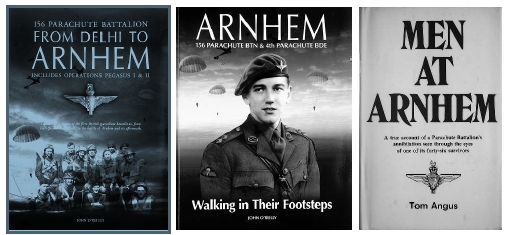
Boekwerken van John O’Reilly en Tom Angus.
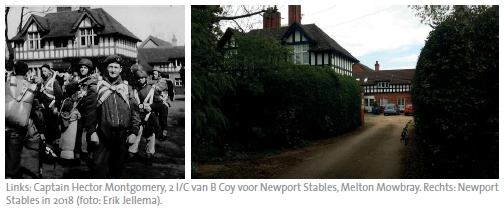
Links: Captain Hector Montgomery, 2 I/C van B Coy voor Newport Stables, Melton Mowbray. Rechts: Newport Stables in 2018 (foto: Erik Jellema).
Brigade. Deze brigade bestond uit de Britse 151st , opgericht op 15 oktober 1941, de Indiase 152nd en de 153rd Gurkha Parachute Battalions. Kort daarna vertrok het 151st Battalion naar het Midden-Oosten. Daar werd de naam om de vijand te misleiden ver- anderd in 156th Battalion. In 1943 werd Lieutenant Colonel Des Voeux de commandant van de eenheid. De uit India meegevoerde parachutes bleken bij aan- komst in Kabrit (Egypte) verrot te zijn. Vanuit En- geland werden nieuwe parachutes opgestuurd die al ras door David Sterlings Special Air Service werden onderschept voor een actie achter vijandelijke linies. De parachutes gingen daarbij verloren. Ondertus- sen werd in Egypte ook de 4th Parachute Brigade gevormd. Dit leidde tot personele wisselingen. Veel personeel van het 156th Bn. kwam terecht bij andere para-eenheden, waaronder de 6th Airborne Division en bij andere bataljons. Zo werden Captain Lonsdale en Major David Gilchist, bekende namen uit de slag, respectievelijk plaatsvervangend bataljonscomman- dant en compagniescommandant bij het in Palestina gevormde 11th Parachute Battalion. Beiden waren af- komstig van het 156th. In die tijd droeg het bataljon bij voorkeur de Indian bush hats. De divisiecommandant moest opdracht geven tot het dragen van de rode baret.
OPERATIONELE INZET
Het bataljon nam niet deel aan de invasie van Sicilië in juli 1943, maar werd pas in september van het vol- gende jaar ingezet bij acties in Zuid-Italië, als deel van de 4th Parachute Brigade, 1st Airborne Division. Na gevechtservaring te hebben opgedaan in Italië werd het bataljon in november 1943 verscheept naar En- geland, waar het op 10 december 1943 aankwam in de haven van Liverpool. Vooral de groene velden en de smaak van het Engelse bier maakten indruk op de para’s, zo gaat het verhaal.
Initieel werd het bataljon ondergebracht op diverse locaties in Rutland, maar Des Voeux concentreerde alle eenheden niet veel later rond het plaatsje Mel- ton Mowbray in Midden-Engeland. Op Ringway, het huidige Manchester Airport, werden de eerste para- chutesprongen gemaakt. De trainingen overdag wer- den afgewisseld met sociale activiteiten in de avond. Zo sociaal dat er verschillende verkeringen en huwe- lijken uit voortkwamen, waaronder de verkering van Sergeant Humphreys met een zekere Margaret Ro- berts. De twee verloren elkaar uit het oog; Margaret zou in 1979 het wereldtoneel betreden onder de naam Margaret Thatcher.
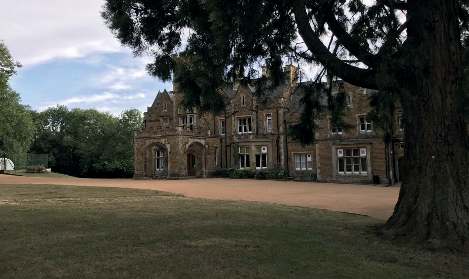
Knossington Hall (foto: www.hmslimited.co.uk).
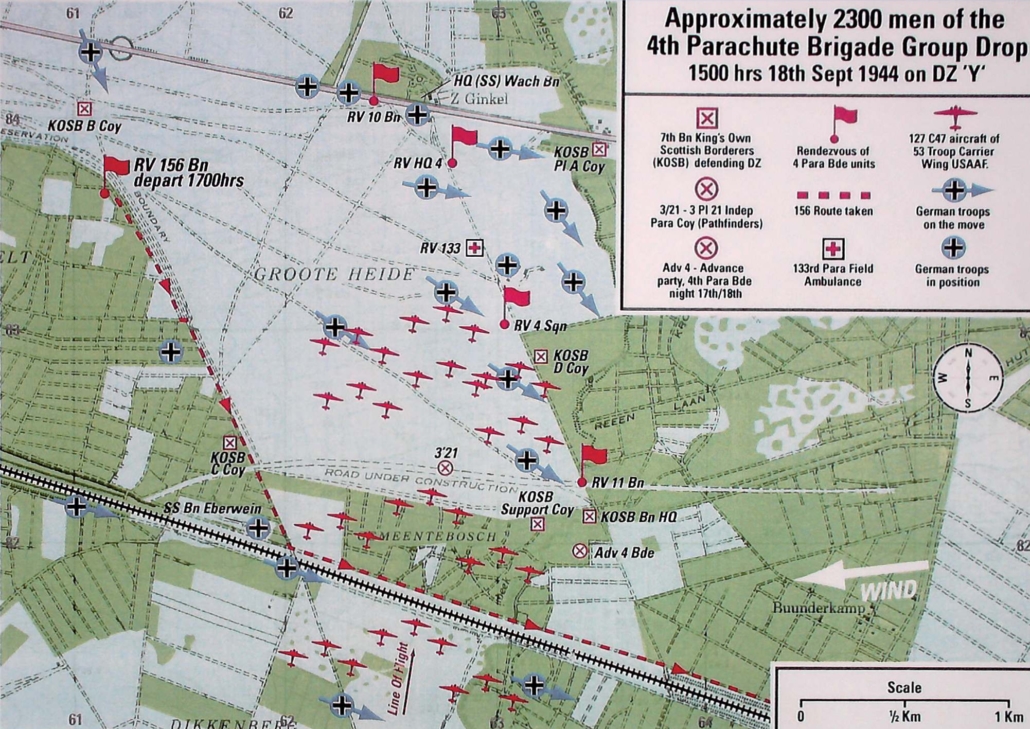
Kaart 1: De vier vluchten (nine-ship elements) die met 34 vliegtuigen het 156th Bn. op de Ginkelse Heide dropten. Zichtbaar is ook het RV van het bataljon aan de westkant van de heide.
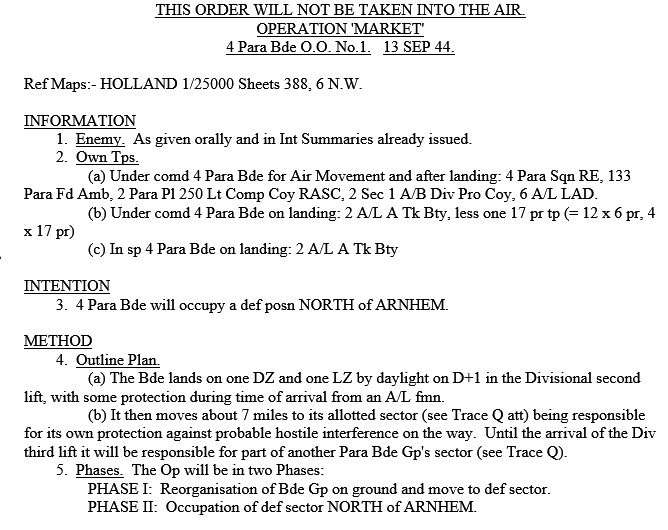
Operation order no.1 van de 4th Parachute Brigade.
Het bataljon was teleurgesteld toen het ook niet werd ingezet op D-Day. 4th Parachute Brigade stond constant stand-by; vóór Market Garden werden vijftien operaties gepland en ook weer afgelast. Voor operatie Comet, oorspronkelijk operatie Fifteen, zou B Com- pany van het 156th, onder leiding van Major John Waddy, als coup de main eenheid landen ten noorden van de brug bij Grave. Tijdens de briefing van de plannen fluisterde Geoffrey Powell van C Company Waddy toe: “This will get you either a Victoria Cross or a wooden one”. Comet was behoorlijk ambitieus. 1st Parachute Brigade zou de brug bij Arnhem innemen en bezet houden. De 1st Airlanding Brigade met de 1st Independent Polish Parachute Brigade moest Nijmegen innemen. De 4th Parachute Brigade kreeg de brug bij Grave toegewezen. Wat opvalt is dat in dit operatieplan wél sprake was van een snelle verrassingsaanval op de bruggen, waar deze in het latere Market Garden ontbrak. Comet werd op 10 september 1944 gecanceld vanwege de gewijzigde tactische situatie. We weten dat veldmaarschalk Montgomery op die dag op de Belgische vliegbasis Melsbroek toe- stemming kreeg van Eisenhower om operatie Market Garden te starten. Op 11 september vond in Moor Park in London een conferentie plaats, waarna de 4th Parachute Brigade haar opdracht kreeg. Operation order no.1 werd op 13 september op schrift uitgegeven. Brigadier Hac- kett, commandant van de 4th Parachute Brigade, deed zijn bevelsuitgifte op 13 september in Knossington Grange, zijn brigadehoofdkwartier in het plaatsje Knossington, niet ver van Leicester en op een steen- worp van Melton Mowbray.
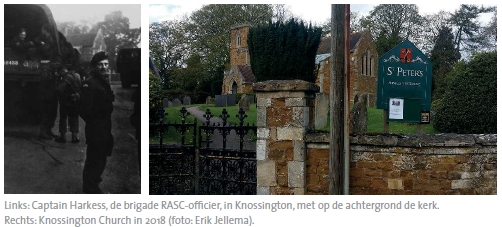
Links: Captain Harkess, de brigade RASC-officier, in Knossington, met op de achtergrond de kerk. Rechts: Knossington Church in 2018 (foto: Erik Jellema).
EINDELIJK MARKET GARDEN
Een brigade advance group onder leiding van Brigade Major Dawson, vervoerd in vier Dakota C47’s, sprong op 17 september op dropzone X. Haar taak was te zorgen voor het, in samenwerking met het 3e peloton Pathfinders, markeren van DZ Y, het inrichten van de verzamelpunten voor de bataljons (zogenaamde RV’s), zorgen dat zo snel mogelijk na de landing ver- bindingen tot stand kwamen en het beschikbaar stel- len van vuursteun. De advance group van het 156th Bn. stond onder leiding van Major Page, de comman- dant van HQ Company.
De opdracht van de 4th Parachute Brigade was om met de tweede air lift op maandag 18 september 1944 te landen op de Ginkelse Heide en vervolgens het hooggelegen terrein ten noorden van Arnhem in te richten ter verdediging. Daar zou het het 1st Parachu- te Battalion van Lieutenant Colonel Dobie aflossen. Een mooie kaart uit From Delhi to Arnhem laat zien waar die verdediging had moeten liggen: in het gebied van de Saksen Weimarkazerne in Arnhem, met op de westelijke flank van het 156th het 10th Battalion. 11th Bn. zou in reserve worden gehouden. C Com- pany van het 156th moest zelfs een vooruitgeschoven positie uitbrengen ter hoogte van de Koningsweg op de Arnhemse Heide.
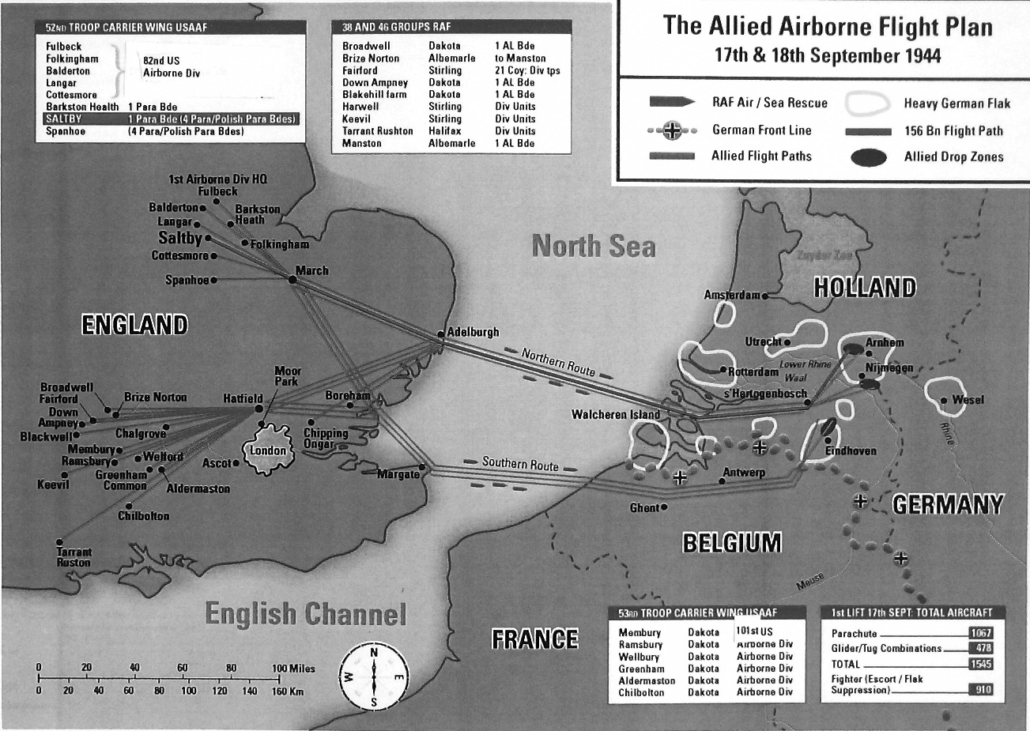
Kaart 2: Het legeringsgebied van de 4th Parachu- te Brigade bevond zich tussen de vliegvelden RAF Saltby en RAF Spanhoe. In tegenstelling tot wat in de battlefield tour guide van Colonel Waddy en de boeken van John O’Reilly staat is de 82nd Airborne Division óók vanaf vliegvelden in deze omgeving vertrokken. Zo vertrok generaal Gavin bijvoorbeeld vanaf RAF Cottesmore, tussen Saltby en Spanhoe. De 101st Airborne Division vertrok van de vliegvelden ten zuidwesten van London, waaronder Membury en Ramsbury. De vliegvelden noordwest van London, zo- als Down Ampney en Broadwell, waren thuishavens van de RAF. Zo kwam Flight Lieutenant David Lord van Down Ampney en werd de 1st Border Regiment als airlanding battalion vanaf Broadwell ingevlogen.
156th Bn. bestond uit 603 man. Naast een Head- quarters Company en een Support Company had het bataljon drie rifle companies. De Support Coy voor- zag het bataljon van vier 6 ponder-antitankkanonnen, afkomstig van de 1st Anti-Tank Battery RA, vier Vic- kers medium machinegeweren en zeven 81mm-mortieren. De rifle companies bestonden uit een Company HQ en drie pelotons met elk 35 man. De sterkte van een compagnie kwam daarmee op 125 man. Een parachute battalion was ‘licht’ in vergelijking met een 750 man tellend airlanding battalion met vier com- pagnieën, elk met vier pelotons.
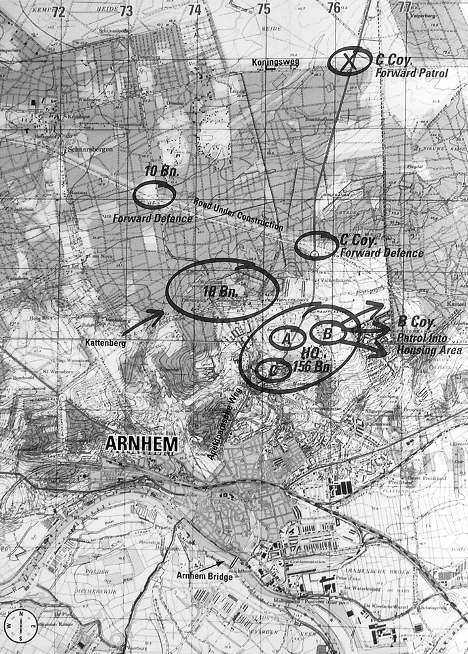
Kaart 3: De geplande verdediging door de brigade tegen een dreiging vanuit het noorden.
LUCHTLANDING
Op 17 september 1944 zagen de soldaten van het 156th de vliegtuigen van de eerste air lift vertrekken, waaronder ook de brigade advance group. Hun ei- gen take-off vanaf vliegveld RAF Saltby was gepland om 08:00u, maar werd vanwege de mist uiteindelijk uitgesteld tot 11:00u. Ook het 11th Bn. vloog vanaf Saltby. De rest van de 4th Parachute Brigade steeg op vanaf vliegveld RAF Spanhoe, 30 kilometer zuidelijker. De zeven Horsa’s van het bataljon vlogen vanaf Keevil en de Hamilcar met twee Universal Carriers (Bren Gun Carriers) vanaf RAF Tarrant Rushton, het meest zuidelijke vliegveld.
In Walking in Their Footsteps staat een overzicht van alle vliegtuig-chalk numbers waarmee het 156th is ingevlogen: 35 Dakota’s, zeven per rifle company, vier voor Battalion HQ en tien voor de support company. Daarnaast dus de zeven Horsa’s van Keevil met jeeps, trailers, verbindings- en medisch materiaal en munitie. De Hamilcar van Tarrant Rushton met de twee Universal Carriers completeert het rijtje.
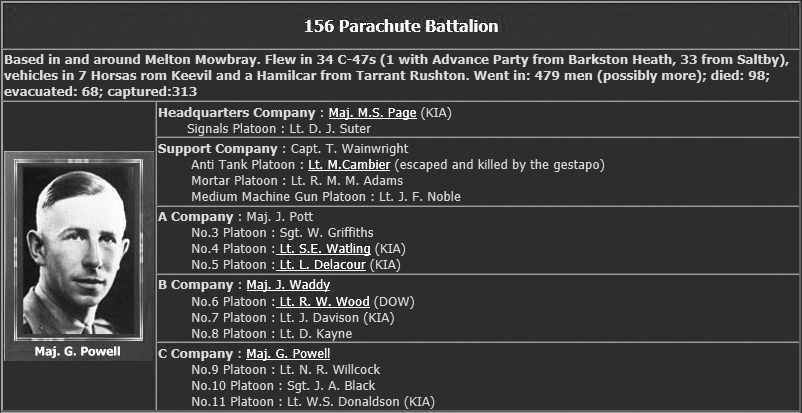
Summier overzicht van de samenstelling van het 156th. Let op de afwijkende nummering van de pelotons: 1 en 2 ontbreken.
Het 156th Bn. vertrok tussen 11:00u en 11:20u van Saltby. In vier vluchten van zogenaamde nine-ship elements, theoretisch 36 vliegtuigen, kwam het bataljon tussen 15:00u en 15:10u aan boven DZ Y op de Ginkelse Heide. Ze waren vier uur vertraagd. Van de 127 vliegtuigen voor de hele 4th Parachute Brigade werden vijf door luchtafweergeschut neergehaald. Een zesde werd uit- geschakeld na de landing. Het ba- taljon verloor Dakota CN619 met de helft van het medium machine gun platoon aan boord in de buurt van Dodewaard. Eén van de gliders kwam vroegtijdig aan de grond bij Eindhoven. De Hamilcar met de Universal Carriers kwam goed aan op LZ X. De link-up van het bataljon met de glider party was bij de spoorwegovergang van Wolfheze.
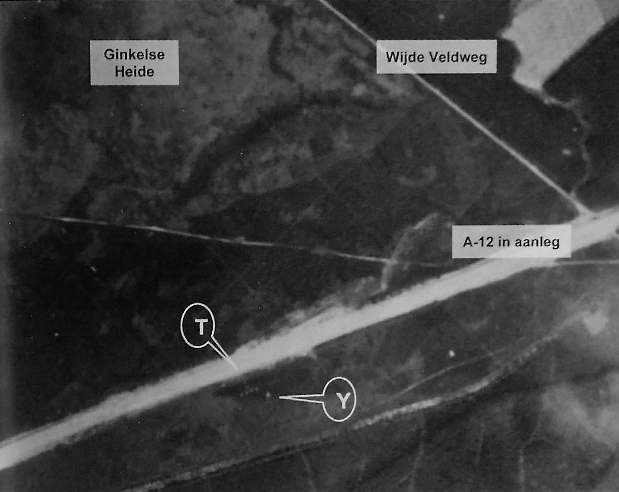
In het boekwerkje Ben jij bij het parachutespringen geweest? Airborne herdenkingen bij Ede van Gerard Gijsbertsen is een zeldzame foto opgenomen van de pathfindermarkeringen op de Ginkelse Heide, vlakbij het tracé van de A12 die toen werd aangelegd.
Het 3e peloton van de 21st Independent Parachute Company (Pathfinders) van Lieutenant Hugh Ashmore zette het Eureka-baken op net ten zuiden van de huidige A12. De dag ervoor had dit peloton LZ S voor de 1st Airlanding Brigade gemarkeerd. Er werden panelen gelegd in de vorm van een Y voor ‘DZ Y’, een T gaf de windrichting (N-O) aan en ter verdere markering werden rookpotten gebruikt.
Lieutenant John Davison, commandant van het 7e peloton van B Company, werd in de lucht getroffen door een salvo uit een machinegeweer, genoeg aan- wijzing dat de DZ ‘hot’ was en dus onder vijandelijk vuur lag. Op de grond woedde een strijd tussen het 7th KOSB Bn. en Wachbataillon NW/3 bestaande uit Nederlandse Waffen-SS, afkomstig van de bewaking van Kamp Amersfoort dat gelegerd was in Kamp Amsvorde, waar nu de Leusderweg kruist met de Laan 1914.
GETTING THERE
Na een uur te hebben gewacht en een uur extra vertraging vertrok het 156th om 17:00u via de spoorweg richting Arnhem. Twee officieren en 50 man waren niet komen opdagen. Nadat Brigadier Hackett opdracht had gekregen zijn 11th Bn. af te staan, veran- derde hij ook zijn opmarsroute van de weg Ede-Arn-hem naar de spoorlijn. Hackett had namelijk wel in de gaten dat de tactische situatie inmiddels om andere beslissingen vroeg.
Dat bleek ook wel toen C Company, met No. 10 Platoon als spits, om 21:00u op een Duitse opstelling stuitte, westelijk van de Dreijenseweg. Dit peloton onder leiding van Sergeant Black liep in een hin- derlaag: vier man werden gedood. Twee verkenners waren vermist en verder vielen acht gewonden te betreuren. Geen goed begin voor het 156th. Major Geoffrey Powell verkende de situatie en gaf Lieute- nant Willcock, commandant van het 9e peloton met daarin Lance Corporal John O’Reilly, opdracht tot een linksomtrekkende beweging. Deze manoeuvre liep echter telkens vast op Duits mitrailleurvuur. Dit leidde ertoe dat het gehele bataljon werd teruggetrok- ken ter hoogte van het spoortunneltje bij Wolfheze, waar de dag ervoor het Reconnaissance Squadron was vastgelopen op Ausbildungs und Ersatz-Bataillon 16 van Sturmbannführer Krafft. Wat Hackett tegen zijn bataljonscommandanten zei na de bevelsuitgifte in Knossington bleek bewaarheid te worden: “You can forget all that [het bevel]. Your hardest fighting will not be in defending the northern part of Arnhem, but in getting there”.
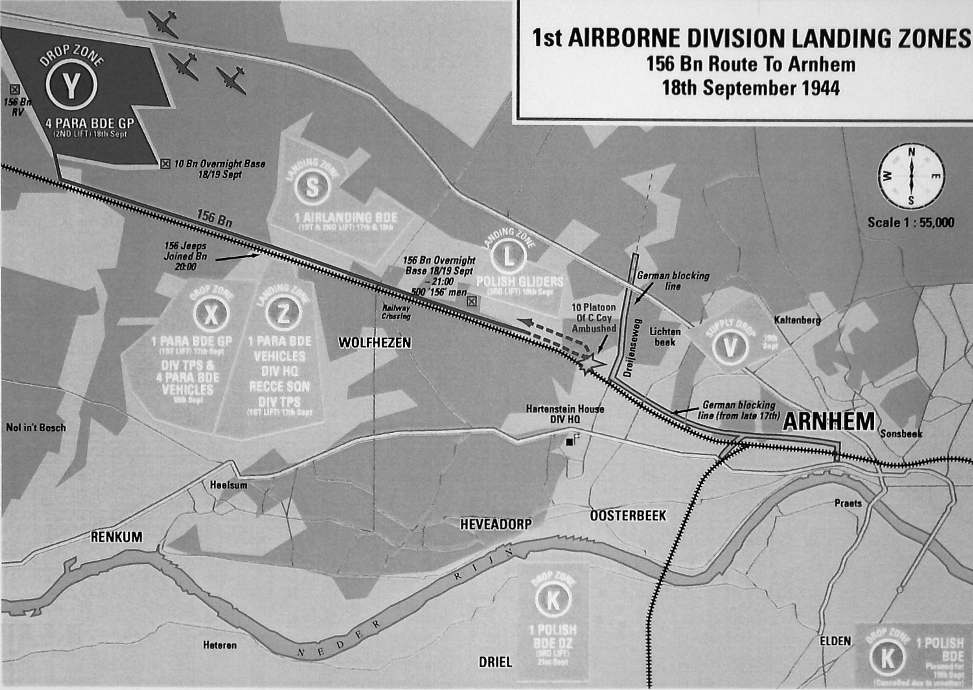
Kaart 4: Opmars van het 156 Bn. en het eerste gevechtscontact bij de Dreijenseweg.
HET GEVECHT BIJ DE DREIJENSEWEG
Gedurende de nacht gaf Brigadier Hackett opdracht aan het 156th Battalion om bij het aanbreken van dag een aanval te doen over de Dreijenseweg om de hoog- te van Lichtenbeek in te nemen. Waarschijnlijk was dit bedoeld als tussengelegen aanvalsdoel; om daar te reorganiseren en dan de opmars richting Arnhem voort te zetten. C Company van Major Powell zou het spits afbijten en daarbij worden ondersteund door een vuurbasis van B Company bij station Oosterbeek. Waarom de aanval werd uitgevoerd over open terrein blijft een raadsel. De vijand had zich tijdens de nacht teruggetrokken op de Dreijenseweg. Nadat C Company op hoogte 56.5 consolideerde, ging A Company van Major Pott om 08:00u iets noordelijker voor- waarts in de richting van Lichtenbeek, ten oosten van de Dreijenseweg. No. 4 Platoon, het spitspeloton, kwam al vóór de Dreijenseweg in de problemen. De begroeiing was daar minder dicht, zodat de Duitsers deze sector met drie mitrailleurs konden bestrijken. Langs de Dreijenseweg had Obersturmbannführer Spindler de zogenaamde Spindlerlinie opgetrokken. In deze linie waren ook Duitse pantservoertuigen met 20mm-luchtdoelkanonnen aanwezig. Pott stelde de Bren Guns van No. 5 Platoon op als vuurbasis en liet de rest van dat peloton en een ad hoc-peloton Glider Pilots een linksomtrekkende beweging maken. De pelotonscommandant van No. 4. Lieutenant Wattling sneuvelde, pelotonscommandant van No.5, Lieutenant Delacour, overleed aan zijn verwonding en Captain Muir van het Glider Pilot-peloton raakte gewond. Gewonden werden met de Universal Carrier afgevoerd. Pott verzamelde een aantal mensen om zich heen en hervatte de aanval. Hij slaagde erin met veertien man de hoogte van Lichtenbeek te bereiken. Een initiële Duitse tegenaanval met 40 man werd op korte afstand afgeslagen. Maar om 14:30u moest de kleine groep zich toch overgeven. Sommigen werden afgevoerd als krijgsgevangen, zwaargewonden zoals Pott werden aan hun lot overgelaten.
Om 09:00u was Major Waddy met B Company ook gearriveerd bij de bataljonscommandopost in de na- bijheid van een watertoren, zo’n 200 meter westelijk van de Dreijenseweg. Hier werd Waddy opgedragen A Company te steunen in de aanval op Lichtenbeek. Des Voeux dacht dat er slechts wat snipers als weer- stand te verwachten waren. Het kabaal van de strijd overtuigde Waddy dat dat een ietwat te optimistische gedachte was. Met twee pelotons voor en één achter trok Waddy op. Dicht bij de Dreijenseweg kwa- men ze veel gesneuvelde en gewonde para’s tegen. 20mm-luchtafweergeschut, ‘self propelled’, blokkeer- de de weg. Ook tanks werden gemeld. Waarschijnlijk waren dit Jagdpanzers IV van Kampfgruppe Von Allwörden. De Duitsers versterkten de sector waar Pott was doorgebroken. Het aantal gewonden bij B Com- pany liep snel op. Toen Waddy met een aantal man het 20mm-kanon tot op tien meter was genaderd, werd hij door een sniper geraakt. Met zijn Colt .45 was hij geen partij voor de sluipschutter. Opvallend is dat de gewonde majoor afgevoerd werd via de spoor- wegovergang van Wolfheze en hij onderweg blijkbaar geen problemen ondervond.
ZWARE VERLIEZEN
Nadat Major Page van HQ Coy tevergeefs getracht had de weg over te steken, viel het geheel terug ach- ter de positie van C Company op hoogte 56.5. Daar werd het bataljon zelfs beschoten door Messerschmit- ts en Nebelwerfer. De vermiste divisiecommandant, Major General Roy Urquhart, die inmiddels was teruggekeerd op zijn hoofdkwartier, bracht een bezoek aan Brigadier Hackett. Besloten werd de 4th Parachute Brigade via Wolfheze terug te trekken op Oos- terbeek. Het 10th Battalion dat ten noorden van het 156th Battalion ook in gevecht was verwikkeld bij de Dreijenseweg werd opgedragen als eerste het gevecht af te breken. Die opdracht kwam zelfs voordat de gliders van de derde lift op LZ L (Johannahoeve) waren geland. De terugtocht over vlak terrein bij daglicht leidde tot verwarring. Toen de derde lift met 30 gliders op LZ L landde, heerste er chaos. Het 10th Bn. was onderweg naar de spoorwegovergang van Wolfheze. En het 156th Battalion trok terug richting Wolfheze met No. 9 Platoon van C Company als achterhoede. Lieutenant Colonel Des Voeux gaf opdracht om over de op een hoge dijk gelegen spoorweg naar het zui- den te bewegen. Omdat niet alle eenheden deze order ontvingen, werd het bataljon opgesplitst. 130 man bleven achter bij de Dreijenseweg: dood, gewond, krijgsgevangen of vermist. Het bataljon was nagenoeg gereduceerd tot de sterkte van één versterkte compagnie.
Het deel van het bataljon dat via Wolfheze trachtte door te stoten naar Oosterbeek werd in twee grote groepen krijgsgevangen gemaakt. Het andere deel van het 156th bracht de nacht door in de bossen ten zui- den van de spoorlijn, ter hoogte van het tunneltje. Hackett achtte nachtelijke verkenningen naar Oos- terbeek te riskant. 270 man van het bataljon begon- nen om 06:15u aan de tocht richting Oosterbeek. Het doel was de weg Ede-Arnhem (Utrechteseweg), om vervolgens bij Hartenstein contact te maken met de divisie. Het 156th vormde de spits van wat was overgebleven van 4th Parachute Brigade. De marsor- de binnen het bataljon was: A Coy, HQ Coy en C Coy, gevolgd door Brigade HQ en het 10th Bn. De route liep over de Bilderberglaan en de kaarsrechte, stijgende Breedelaan richting Hotel Bilderberg. Het 7th Bn. KOSB was via een kortere route al gearriveerd in Oosterbeek.
KILLING WOODS
A Company werd op de top van de Breedelaan beschoten door Duitse mitrailleurs. Binnen Brigade HQ vielen gewonden. Tegen 08:00u gaf Des Voeux Powell opdracht om met zijn C Company een aan- val over de rechterflank uit te voeren, om daarmee de Duitsers in de rug aan te vallen. Het aanvalsdoel was de wegkruising Utrechtseweg-Wolfhezerweg tot Bree- delaan. In zijn boek Men at Arnhem beschrijft Powell de gevechten in de Bilderbergbossen op unieke wijze: het is alsof hij je aan de hand meeneemt van boom tot boom. C Company bestond nog uit 80 man. Lieutenant Donaldson van No. 11 Platoon was zijn enige overgebleven pelotonscommandant. Hij raakte gewond bij de gevechten en werd waarschijnlijk door de Duitsers in koelen bloede doodgeschoten. De drie uur durende gevechten in de buurt van de watertoren kostten C Company teveel verliezen, waarop Major Powell besloot terug te trekken.
Brigadier Hackett besloot niet verder aan te vallen in zuidelijke richting, maar de Van Tienhovenlaan in oostelijke richting in te slaan. Intussen werd de groep van nu nog zeven officieren en 120 man inge- sloten door Krafft vanuit het noorden en door de Un- terführerschule Arnheim en Bataillon Eberwein van- uit het westen. Hackett gaf daarop het 10th Battalion opdracht de aanval te leiden. Na een trage start ging het 10th Battalion er zo snel vandoor dat de aanslui- ting met het 156th Battalion en Brigade HQ verloren ging. Het 10th Battalion slaagde erin om rond 13:30u met slechts 60 man de eigen troepen te bereiken in de buurt van de Valkenburglaan in Oosterbeek.
Het 156th Battalion en Brigade HQ ondervonden echter nog meer weerstand. Er werden zelfs pantser- voertuigen gerapporteerd op de Valkenburglaan en bij de spoorlijn. In de buurt van de tennisvelden raakte bataljonscommandant Des Voeux dodelijk gewond. Hij werd het laatst gezien zittend tegen een boom. Zijn lichaam is pas jaren later geïdentificeerd toen zijn veldgraf werd gevonden. Zijn plaatsvervanger, Major Ritson, sneuvelde eveneens. Ook hij werd pas in 1998 geïdentificeerd. Major Blundell, de 4th Brigade intel- ligence officer, sneuvelde en Major Dawson, de bri- gade major, raakte gewond in zijn schouder. Captain Booty maakte een foto van de gewonde Dawson, luttele seconden voordat deze dodelijk werd getroffen in zijn hoofd. De gevechten bij de tennisvelden vonden plaats rond het middaguur.
HACKETT’S HOLLOW
Tegen 14:00u riep Hackett Powell bij zich. Hij wees naar een groep bomen 100 meter verderop; in de nabijgelegen kuilen waren Duitsers zichtbaar. Hackett gaf Powell opdracht met zijn nog enigszins georga- niseerde groep deze zogenaamde ‘hollow’ in te ne- men. Met de bajonet op het geweer ging de groep van Powell op de Duitsers af die er snel vandoor gingen. In de hollow verzamelden zich zo’n 150 man. Major Page, commandant van HQ Company, moedigde de soldaten aan. Toen hij gewezen werd op de aanwezig- heid van een pantservoertuig werd hij bij het waarne- men daarvan getroffen door een kogel in het hoofd. Het verlies van Page maakte diep indruk op Powell, zoals indrukwekkend beschreven in zijn boek. Om 17:00u uur gaf Hackett wederom opdracht tot een bajonetcharge. 70 man kwamen aan bij de posities van A Company van het 1st Border Regiment, waar de groep snel verder gestuurd werd met de woorden: “Clear off you filthy, shower!”. Lance Corporal Ro- senberg fungeerde als achterhoede. Nadat hij met zijn Bren gun en handgranaten de Duisters op afstand had gehouden, wist hij op miraculeuze wijze te ontkomen. Later meldde hij zich weer bij Powell die hem ter plekke bevorderde. De Duitsers vonden 80 doden en gewonden in Hackett’s Hollow.
REORGANISATIE EN GEVECHTEN IN OOSTERBEEK
Het156th Battalion had nog drie officieren en 50 man. Hiermee werden twee pelotons geformeerd. Daarmee werden posities aan de stationsweg en aan de Mariaweg ingenomen. De gevechten in Ooster- beek maken geen deel uit van de battlefieldtour. De acties van Major Powell en de restanten van het batal- jon zullen uitgebreid aan bod komen tijdens de batt- lefieldtour over de noordelijke perimeter op een later moment.
Er keerden slechts 26 man terug in Melton Mowbray, eind september 1944. Nog eens tien man ontsnapten in oktober uit bezet gebied tijdens operatie Pegasus. Dit is alles wat overbleef van de 603 man van het 156th Battalion. Het bataljon telde de meeste gesneuvelden (105) van alle zes parachutistenbataljons in de slag om Arnhem.
– Erik Jellema
– Kaarten met speciale toestemming van John O’Reilly
Opgeven voor de battlefieldtour 156th Battalion in de slag om Arnhem kan via activiteiten@vriendenairbornemuseum.nl. Ga mee, en treed letterlijk in de voetsporen van het bataljon dat verdween in het bos.
CONFLICTARCHEOLOGIE BRITSE SCHUTTERSPUTTEN LANGS DE OORSPRONGBEEK
De schuttersputten langs de Oorsprongbeek in Oosterbeek: ondiepe kuiltjes in de bosgrond. Bij menig kenner zijn de plekken bekend. Maar wat weten we eigenlijk over deze oorlogsresten? En hoe kunnen resten in het landschap ons meer vertellen over de slag om Arnhem?
KLASSIEKE BRONNEN
Over de slag om Arnhem is menig boekenkast vol geschreven. De eerste decennia na de oorlog waren dit vooral overzichtswerken. Recenter kwamen er meer in depth-boeken bij. Het is inmiddels geen uitzondering meer dat een boek van 100 of 200 pagina’s de
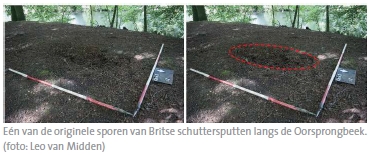
Eén van de originele sporen van Britse schuttersputten langs de Oorsprongbeek. (foto: Leo van Midden)
kroniek van een hele specifieke eenheid tijdens de slag tot op de minuut nauwkeurig beschrijft.
Voor deze reconstructies kunnen verschillende soorten bronnen geraadpleegd worden. Elk heeft zijn eigen kracht en nadeel. Zo zijn er de gevechtsverslagen, bij de Britten War Diaries geheten. Hierin zijn gebeurtenissen voorzien van toponiemen of coördi- naten en tijdstippen.
Het valt mij op dat het vaak ook de veteranen zelf zijn die aan het woord komen als de geschreven bron- nen op detailniveau tekort schieten. De mensen die er zelf bij waren, zouden in principe tot op enkele meters nauwkeurig hun voormalige stelling kunnen aanwijzen. Hier wordt een beroep gedaan op het geheugen van iemand: een persoon die in de fog of war gebeurtenissen heeft opgeslagen en het soms (op aan- vraag) na decennia moet recapituleren. Naast het feit dat dergelijke herinneringen vertroebeld kunnen zijn, is iemands persoonlijke herinnering altijd een subjec- tieve weergave van wat er is gebeurd. Dit laatste geldt ook voor de geschreven bronnen.
Foto’s en bewegend beeldmateriaal lijken in eerste instantie objectiever te zijn. Details die erop te zien zijn, kunnen nagenoeg niet vervalst zijn – maar wel in scène gezet. De maker van het beeld laat enkel zien wat hij wil dat de kijker ziet, zeker als het om militaire propaganda gaat.
DE BODEM ALS ARCHIEF
Het is pas veel later gebeurd dat ook grondsporen en vondsten uit de grond zich bij de bronnen hebben gevoegd. Archeologen noemen dit het bodemarchief. Sporen in het bos kunnen nog in het landschap zicht- baar zijn, zonder daarvoor te hoeven graven. Denk aan loopgraven en schuttersputten. In de wijde regio zijn er een flink aantal bekend van zowel vóór, tijdens als na de slag om Arnhem.
Vondsten die uit zo’n spoor komen geven ons ook informatie. Het sleutelwoord hierbij is context: hoe en waar een object wordt aangetroffen, in welk spoor en met welke andere objecten.
Een methode kan metaaldetectie zijn, mits er een vorm van registratie plaatsvindt (het vastleggen van de context). Hier onderscheidt archeologie zich van schatgraverij: waar puur naar objecten wordt gezocht om (los van hun context) in een privévitrine of op Marktplaats te eindigen.
De meerwaarde van een object uit de bodem is dat het gekoppeld kan worden aan een specifieke gebeurtenis, zoals een gevecht. Het geeft niet alleen informatie over het verloop van een gevecht of het (over) leven in een stelling. Een vondst, maar ook een restant in het landschap biedt een unieke, andere kijk op historische gebeurtenissen.
STRIJD LANGS DE OORSPRONGBEEK
Terug naar de ondiepe kuiltjes langs de Oorsprongbeek. De plekken zijn al sinds kort na de Tweede Wereldoorlog bekend. Zo vertelde Robert Voskuil dat hij zich de schuttersputten al uit de jaren ’50 herinnert. Tegenwoordig worden ze getoond tijdens battlefieldtours waardoor ook het publiek er kennis van neemt.
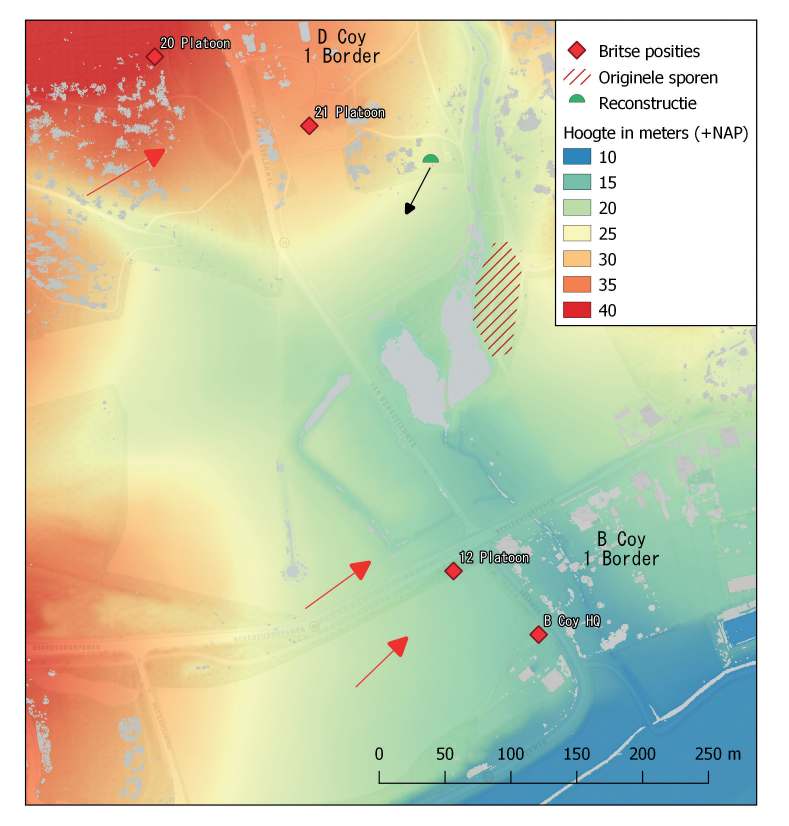
Hoogtekaart van het gevechtsgebied rond de Oorsprongbeek met de originele sporen en de reconstructie.
De sporen liggen op enige afstand van de Van Borsse- lenweg die tijdens de slag om Arnhem enkele dagen de frontlijn was. Algemeen wordt daarom aangenomen dat de sporen restanten zijn van Britse schuttersputten uit de periode 20 tot uiterlijk 22 september 1944. De posities liggen hoger dan de te verdedigen kruising Veerweg-Van Borsselenweg en achter de Oorsprong- beek die hier als een soort natuurlijk obstakel dient. Uit de geschreven bronnen en meerdere publicaties is bekend dat hier eenheden van 1st Battalion The Border Regiment in stelling lagen. Zij verdedigden
de westelijke rand van de perimeter. Specifiek in de omgeving van de Oorsprongbeek lagen delen van B en D Company ingegraven. Dit deel van het Border Regiment voerde dagenlang strijd met onder meer mannen van het Wossowski Bataillon en de SS-Unterführerschule ‘Arnheim’. De Duitse eenheden kregen steun van buitgemaakte Franse tanks.
Niet elk boek geeft hier overigens hetzelfde beeld: de locaties van de compagnies en bijbehorende pelotons verschillen – dit geldt ook voor de Duitse eenheden. De verschillende geschreven bronnen geven net weer andere (detail)informatie. Bovendien is er tot op he- den discussie over de stellingen en wapenfeiten van de Britse pelotons en de inzet van de Franse tanks.
SPOREN VAN STRIJD
De locaties van de diverse pelotons van B en D Coy 1 Border zijn echter vooral gebaseerd op geschreven bronnen en ooggetuigenverslagen. In dit licht is het belangrijk om te wijzen op de resten van de schutters- putten langs de Oorsprongbeek. Ze liggen niet op een locatie die uit andere bronnen bekend is als (Britse) stelling tijdens de slag om Arnhem. Het is dan ook opvallend dat ondanks dat de sporen nooit zijn verge- ten, ze niet eerder zijn vastgelegd.
Sinds 2017 laat grondeigenaar Geldersch Landschap & Kasteelen (GLK) deze en andere sporen op Land- goed Oorsprong registreren. Dit wordt uitgevoerd door de Werkgroep WO2 van de regionale Archeo- logisch Werkgemeenschap Nederland (AWN). De sporen zijn nu vastgelegd in GPS-coördinaten en per stuk beschreven. GLK houdt bij bodemingrepen nu rekening met de sporen zodat ze bewaard blijven voor de toekomst. De registratie van de sporen langs de Oorsprongbeek is een mooi voorbeeld van hoe resten in het landschap een toevoeging kunnen zijn op an- dere bronnen.
RECONSTRUCTIE
Eind 2018 heeft de Werkgroep in opdracht van GLK tevens een schuttersput nagemaakt. De kenner ziet direct: dergelijke uitbouw met hulpmiddelen zoals houten palen en planken zijn atypisch voor wat je in de perimeter zou verwachten. De keuze hiervan was echter een praktische. Een ‘gat in de grond’ ligt dan wel dichter bij de waarheid, maar zal (evenals de ori- ginele sporen) in de loop der tijd verdwijnen. Bovendien is deze slit trench volledig gemaakt aan de hand van een Field Manual voor de Britse infanterist. De locatie zal in de nabije toekomst worden voorzien van een informatiepaneel.
Wie in de reconstructie staat, kijkt vanaf een hoger gelegen positie het beekdal van de Van Borsselenweg in. Het landschap is hier nog nagenoeg gelijk als tijdens de oorlog. Er is hier uitzicht op de voormalige Duitse posities tijdens de slag om Arnhem.
VERVOLGONDERZOEK
Het onderzoek van de originele resten langs de Oorsprongbeek is zinvol omdat het de sporen heeft vastgelegd. Op basis hiervan kunnen de sporen als bron dienen, gelijk aan de andere geschreven, mondelinge en andere bronnen. Zo geven de archeologische sporen hun eigen ‘visie’ op de historische gebeurtenissen. Tijdens het archeologisch onderzoek kwam onder meer aan het licht dat er verschillende types schutters- putten aanwezig zijn – ronde kleinere en bredere ova- le vormen, voor één of meer personen of bijvoorbeeld een mortier. Hier zou in de toekomst vervolgonder- zoek naar gedaan kunnen worden. Het zichtveld van de locatie langs de beek is tegenwoordig echter ont- nomen door bomen. Je ziet zo niet meer ‘wat men toen zag’.
De reconstructie, hoewel niet slag om Arnhem-cor- rect, biedt meer oorspronkelijke ‘beleving’, op een andere net hoger gelegen plek. Er is vrije uitkijk over het gebied waar de Duitse aanvallen plaatsvonden en richting de laaggelegen kruising van de Van Borsse- lenweg. Ook deze reconstructie levert zo zijn bijdrage aan het levend houdend van de herinnering aan dit deel van de slag om Arnhem.
– Martijn Reinders
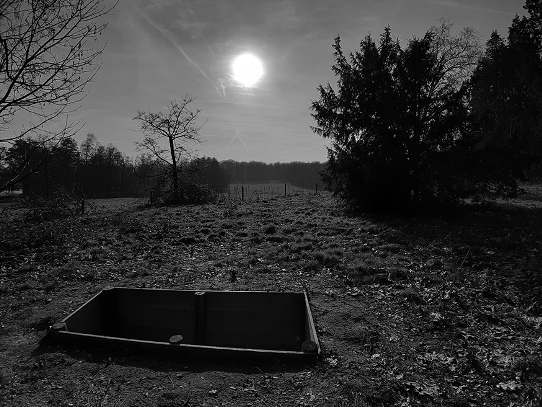
Uitzicht vanaf de reconstructie richting de Duitse linie westelijk van de Van Borsselenweg.
VERDER LEZEN:
Historie en archeologie van schuttersputten langs de Oorsprongbeek in Oosterbeek (2018, AWN-afdeling Zuid-Veluwe en Oost-Gelderland).
ACHTERGROND
BITS AND PIECES – MAJOR JOHN WADDY’S UNIFORM
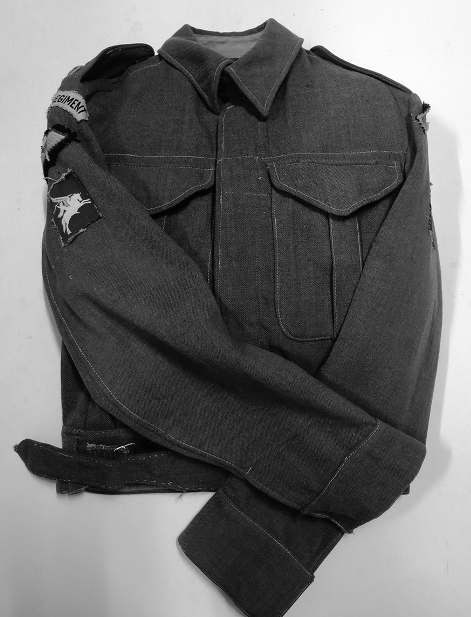
Battle dress van Major John Waddy, commandant van B Company, 156 Parachute Battalion, The Parachute Regiment (foto: Wybo Boersma).
Het uniform vertoont diverse beschadigingen die door Waddy zijn gerepareerd met delen uit andere uniformen. De parachute wing is provisorisch van een zwarte achtergrond voorzien, typisch voor in India geformeerde en opgeleide Airborne-eenheden zoals het 156th Parachute Battalion. In de jaren negentig van de vorige eeuw schonk Waddy zijn uniform, zijn naamplaatje uit het krijgsgevangenenkamp en enkele andere artikelen aan het Airborne Museum.
Major Waddy landde op 18 september 1944 op de Ginkelse Heide, drop zone Y, bij Ede. Als eerste eenheid die op weg ging, vertrok het bataljon rond 17:00u langs de spoorlijn Utrecht-Ede in de richting van Arnhem. De volgende dag kreeg Waddy opdracht met zijn compagnie door de posities van A Compa- ny door te stoten naar het hoger gelegen terrein ten oosten van de Dreijenseweg. Bij Oosterbeek. Daarbij raakte Waddy zwaargewond. Een Rhodesische soldaat zag kans hem naar het compagnieshoofdkwartier te brengen.
Bij de regimental aid post gaven de dokters hem weinig kans om zijn verwondingen te overleven. Waddy werd naar hotel De Tafelberg in Oosterbeek gebracht dat op dat moment dienst deed als main dressing station. Dokter Guy Rigby opereerde hem op de biljarttafel, waarna hij naar een nabijgelegen huis werd gebracht. Daar raakte hij voor de tweede keer gewond, nu aan zijn linkervoet, in zijn gezicht en aan zijn schouder. Na de slag kwam Waddy in Apeldoorn terecht waar hij zes weken verbleef om vervolgens voor de rest de oorlog in het krijgsgevangenkamp Stalag VII-A bij Moosberg door te brengen.
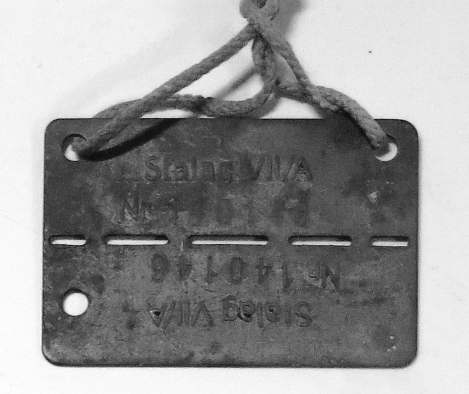
Herkenningsplaatje prisoner of war. (foto: Wybo Boersma)
Na de oorlog leidde John Waddy diverse battlefieldtours in Oosterbeek. Ook was hij militair adviseur voor de film Een brug te ver. In 1999 verscheen zijn boek A tour of the Arnhem Battlefields, dat nog steeds een must is voor geïnteresseerden in de slag om Arnhem. In 2008 gaf Waddy een battlefieldtour voor de Vereniging Vrienden van het Airborne Museum.
– Wybo Boersma
VERGETEN WERK – 18 PLATOON – SIDNEY JARY
18 Platoon is het indrukwekkende en bij vlagen zeer kritische relaas van een twintigjarige Britse pelotonscomman- dant die zich tussen juli 1944 en juni 1945 met de 43rd (Wes- sex) Infantry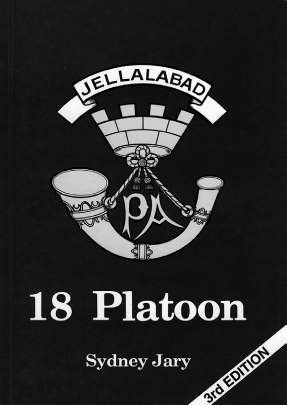 Division vanuit Normandië een weg baande naar Bremen. De divisie leverde strijd in Oost-Nederland, onder andere bij Nijmegen en Elst. De gemiddelde levensverwachting in een rifle squad was zo’n drie weken. Alleen al om die reden is het een klein wonder dat Sidney Jary zijn verhaal op papier heeft kunnen zetten.
Division vanuit Normandië een weg baande naar Bremen. De divisie leverde strijd in Oost-Nederland, onder andere bij Nijmegen en Elst. De gemiddelde levensverwachting in een rifle squad was zo’n drie weken. Alleen al om die reden is het een klein wonder dat Sidney Jary zijn verhaal op papier heeft kunnen zetten.
Het boekje is verdeeld in zeven hoofdstukken, die ieder een deel van de afgelegde route of acties beschrijven: van Normandië tot na de oversteek van de Rijn. Enkele foto’s en handgetekende kaartjes illustreren het geheel.
In Normandië, waar de eenheid van Jary, het 4th Battalion Somerset Light Infantry (SLI) van de 43. Division op 23 juni aan land gaat, leidt met name de verovering van de beruchte Hill 112 (operatie Jupi- ter) tot grote verliezen. Sydney Jary komt als één van de vervangers bij het bataljon. Als kersverse tweede luitenant krijgt hij de leiding over een half peloton van zeventien man. Op dat moment zijn slechts vijf daarvan over van het oorspronkelijke peloton dat een maand eerder aan land ging.
leiding en de harde praktijk, verloopt de actie voor het 18e Peloton redelijk voorspoedig. Nadat eind au- gustus de verovering van Normandië een feit is, gaat het noordwaarts. De 43. Division krijgt de order als eerste gevechtsformatie de Seine bij Vernonnet over te steken.
OPERATIE BLUECOAT
De eerste grotere actie voor Jary is de verovering van Mont Pincon, zo’n twintig kilometer ten zuiden van Caen, als onderdeel van operatie Bluecoat (30 juli-7 augustus). Ondanks het feit dat hij hierbij direct ge- confronteerd wordt met het aanzienlijke verschil tus- sen de theoretische dogma’s van de directing staff-op-
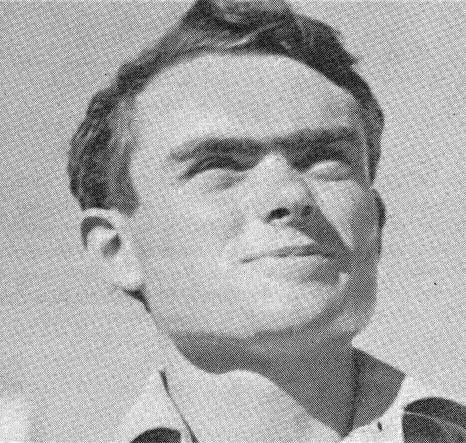
Sidney Jary.
OPERATIE MARKET GARDEN
Op 21 september beveelt Horrocks de 43. Division zich naar de Overbetuwe, ‘The Island’, te verplaatsen om een aanval richting Arnhem te doen. Ze komen echter te laat. Het 4e Bataljon met Jary’s peloton komt op 22 september in Nijmegen aan waar ze kort halt houden en direct worden getrakteerd op Duitse zware 105- of 240 mm-granaten die vanaf Bemmel op de stad worden afgeschoten. D Company marcheert over de brug, waar nog dode Duitse soldaten liggen, en brengen de nacht door in de buurt van Lent.
De volgende dag marcheren ze verder richting het verlaten Oosterhout, dat in puin ligt vanwege de zware beschietingen over en weer. Bij het geplunderde Elst nemen de Engelsen posities in langs de spoorweg, tot aan de brug over de Linge. Hier blijft de compagnie twee weken en wordt dagelijks beschoten door Duitse artillerie vanaf Rijkerswoerd. Ook voeren de Duitsers dagelijks patrouilles uit, met diverse slachtoffers tot gevolg. Jary: “De vijand besloot ons het leven zo ver- velend mogelijk te maken met onvoorspelbare beschietingen door hun zware artillerie, precies in het midden van onze compagniesector.
We noemden dat ‘stonks’. Eén van die granaten viel precies in één van de loopgraven van het 16e Peloton. Van de twee mannen die daar met een Bren in lagen was geen spoor meer te vinden. In mijn peloton wer- den Lance-corporal Jack Lee en private Peter Filmer begraven in hun loopgraaf. Andere mannen van hun sectie groeven hen vlug weer uit, ze waren niet gewond en heel smerig, maar ook opmerkelijk vrolijk.”
OPERATIE VERITABLE
Na omzwervingen via Mook, Geilenkirchen en zelfs het verdedigen van een brug over de Maas bij Visé tijdens het Ardennenoffensief bevindt het bataljon zich in februari weer in de buurt van Nijmegen. Daar gaat op 8 februari operatie Veritable van start, met de 43. Division in reserve. Jary beschrijft hoe ze de stad Kleef, althans wat er van over is, doortrekken nadat deze door de 15th (Scottish) Infantry Division was ingenomen.
Op 26 maart steken ze in Buffaloes, amfibische pantservoertuigen, de Rijn over bij Rees, waarna het rich- ting Achterhoek en Twente gaat. Uiteindelijk komt het bataljon na een lange strijd aan in de havenstad Bremen. 18. Platoon is dan nog 19 man sterk. Joe Vandeleur, commandant van de 129th Brigade, feliciteert Jary met de overwinning, waaraan het peloton volgens Jary “geen aandeel had”. Ook Brain Horrocks, commandant van XXX Corps, komt nog langs. Tot verbazing van Jary herkent Horrocks hem nog en zegt: “Glad to see you’re still alive, Jary”.
A GRIM PRICE IN BLOOD
Jary publiceert 18 Platoon in 1987 in eigen beheer. Het boek maakt na verschijning in Engeland de no- dige indruk, óók binnen het Britse leger. Jary neemt dan ook bepaald geen blad voor de mond, met name als het gaat om de kwaliteit van de gemiddelde le- gerofficier, maar verpakt zijn kritiek wel als ‘lessons learned’. Het hoofd van het Department of War Studies van Sandhurst, de Britse officiersopleiding, Dr. John Pimlott schrijft: ”Sydney Jary’s account of his experience as a platoon commander in the 4th Battalion The Somerset Light Infantry (SLI) during the campaign in North West Europe in 1944-45 is of inestimable va- lue to historians and should be read by all young army officers”. General Sir David Fraser GCB/OBE/DL is zo mogelijk nog lovender: ”18 Platoon is one of the best subalterns books – probably the best – to come from the 2nd WW”.
– Willem Kleijn
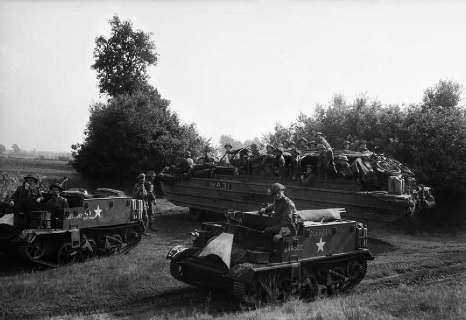
Mannen van de 43. Division in Nederland op 18 september 1944.
ONDERTUSSEN TERUGGESLAGEN GROND – DE MOGELIJKE BERGING VAN DE TYPHOON MET FLIGHT SERGEANT HURRELL
Minister Ollongren van Binnenlandse Zaken heeft vorig najaar besloten werk te maken van de berging van tientallen vliegtuigwrakken uit de Tweede Wereldoorlog. Met instem- ming van bijna de gehele Tweede Kamer, DENK uitgezonderd, is in aanloop naar de viering van 75 jaar bevrijding de weg vrijgemaakt voor het zoeken naar zo’n 30 tot 50 vermiste piloten op Nederlandse bodem. Eén van hen is William Hurrell. Hij stortte op 26 septem- ber 1944 met zijn Hawker Typhoon neer bij Eefde. Zijn stoffelijk overschot moet zich nog steeds in het toestel bevinden.
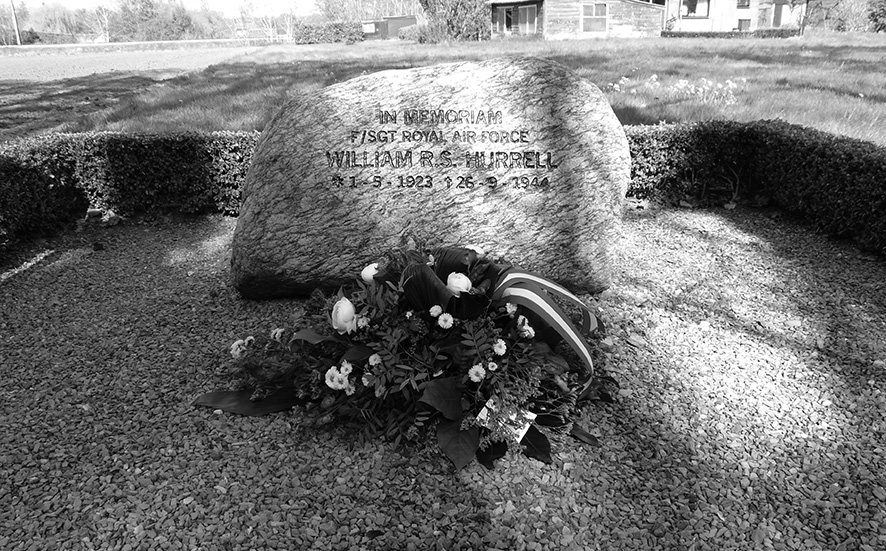
Het monument voor Hurrell, 60 meter oostelijk van zijn veldgraf.
Tijdens mijn werk voor het Kadaster kwam ik een tijd geleden per toeval langs een monument in de buurt van Eefde, met daarop een naam die ik in verband kon brengen met Market Garden. De oudheidkundige ver- eniging De Elf Marken die het monument twintig jaar geleden heeft laten oprichten, bleek al diverse pogingen te hebben ondernomen om meer te weten te komen over Flight Sergeant William Hurrell, gevechtspiloot bij No. 175 Squadron, Royal Air Force Volunteer Reserve. Hurrells gegevens zijn opgenomen in de Roll of Honour van gesneuvelden tijdens de slag om Arnhem van de VVAM, dat is te raadplegen op www.marketgarden.com.
Op dinsdagmiddag 26 september 1944 stegen om 12:35u vanaf oorlogsvliegveld Deurne in België zes Typhoons op voor een gewapende verkenningsvlucht boven Nederland. De toestellen maakten deel uit van het 175ste squadron van de Royal Air Force. Het was Hurrells derde operationele vlucht. Het zestal bereikte rond 13:00u Apeldoorn, toen zij plotseling werden verrast door meer dan 50 Messerschmitts Bf 109 die daar actief waren vanwege de slag om Arn- hem. Flying Officer Clarke en Flight Sergeant Hurrell werden aangevallen voordat zij zich konden verspreiden. Het toestel van Clarke werd verschillende keren geraakt, maar kon de basis in Deurne nog bereiken. Ook de ande- re toestellen wisten een veilig heenkomen te vinden. Van Hurrell werd niets meer vernomen. Uit later onderzoek door de Air Historical Branche 5 (RAF) van het Ministry of Defence is gebleken dat zijn toestel is neergeschoten door Leutnant Klaffenbach (of Klassenbach) van 111/ JG4 en vermoedelijk van grote hoogte naar beneden is gestort. Het is terechtgekomen in een stuk land aan de Lindeboomweg in Eefde, waar het zich zó diep in de grond boorde dat bergen onmogelijk bleek.
ZEGELRING
Dat er kort na de oorlog pogingen zijn gedaan om de identiteit van de bemanning te achterhalen blijkt uit een reactie van de burgemeester van Gorssel op een nota van het Ministerie van Oorlog (8 april 1948) waarin wordt geïnformeerd naar de stoffelijke resten van ‘één of meer piloten’: ”Naar aanleiding van nevensvermeld schrijven deel ik U mede, dat op 26 September 1944 nabij Eefde in deze ge- meente een geallieerd vliegtuig, nog voorzien van racketbom na een luchtgevecht is neergestort. In September 1945 heb ik een nader onderzoek laten instellen om een identificatie van het vliegtuig en de eventuele bemanning, te bevorderen. […]. Ook waren nog enige stoffelijke resten van de bemanning aanwezig nl. enige beenderen (geen tanden of kiezen) en een gedeelte van een hand. Op een der vingers is een zegelring aangetroffen met een monogram H.W. of W.H. Overigens is niets aangetroffen waaruit de identiteit van de bemanning zou kunnen worden vastgesteld.
Op 23 juni 1946 kreeg ik een bezoek van Capt. I. Ness, verbonden aan de Royal Air Force, van de dienst voor onderzoek van vermiste Engelse piloten […] die de plaatjes met de serienummers en zegelring meenam. […] De plaats waar het wrak in de grond is gedrongen, is niet door een grafteken aangeduid en de plaats van de ramp wordt niet als graf beschouwd. De grond is in gebruik als bouwland. De plaats is eventueel nog met zekerheid aan te duiden. men (bron: W. van de Kamp, Ons Markenboek, 13e jaargang nr. 2 en 17e jaargang nr. 2).
BETEKENISVOL
In 1994 werd Hurrells naam bij hernieuwd onderzoek definitief aan de vergetelheid onttrokken. Waar aanvankelijk werd gedacht dat het om een Belgische piloot ging, kon nu voor het eerst worden vastgesteld dat het om een piloot met de Britse identiteit moest gaan, en wel om dat van de vermiste Flight Sergeant. Pogingen om zijn veldgraf te laten aanmerken als een officieel, bij de Common- wealth War Graves Commission in Ieper geregistreerd graf bleken minder succesvol. En dus rust Hurrell nog steeds in het toestel waarmee hij in 1944 in de Gelderse aarde verdween, zo is het vermoeden.
De Studiegroep Luchtoorlog heeft de locatie van de Typhoon een tijd geleden voorgedragen voor berging. Defensie heeft daarop in september 2018 een diepscan met een grondradar uitgevoerd op de crashlocatie. Met Ollongrens “betekenisvolle gebaar dat recht moet doen aan de wens van nabestaanden van omgekomen bemanningsleden” zou binnenkort zomaar een einde kunnen komen aan de vermissing van Hurrell. Het geld is er en de locaties die mogelijk stoffelijke resten herbergen hebben namelijk voorrang gekregen op de lijst van ‘kansrijke bergingen’ die de Bergingsdienst van de Koninklijke Landmacht heeft aangelegd. Het zou mooi zijn als deze ultieme poging zou leiden tot een begrafenis met militaire eer van deze 21-jarige piloot van de RAF. Aan één wens van de onlangs getraceerde achternicht van Hurrell, Brydie Hurrell uit Australië, is in ieder geval al tegemoet gekomen: na 75 jaar weet de familie eindelijk waar William moet zijn.
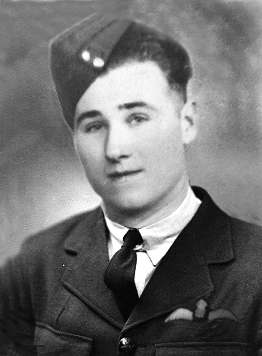
F/S William Hurrell.
– Frans Ammerlaan
PROGRAMMA 2019
VOORJAAR
Zaterdag 13 April 2019: Boekenmarkt 2.0, inclusief wargame en korte battlefieldtour Zondag 28 april 2019: Battlefieldtour 156 Parachute Battalion
Zondag 19 mei 2019: Themamiddag: The Glider Pilot Regiment
Juni: Thema-avond (nadere informatie volgt)
NAJAAR
Zaterdag 7 september: Battlefieldtour Lombok September: Battlefieldtour Market Garden (nadere informatie volgt)
Zaterdag 5 oktober: Battlefieldtour Pegasus 2 Zaterdag 16 november: Airborne Day Vrijdag 13 december: Thema-avond
(nadere informatie volgt)
Voor meer informatie over of deelname aan de verschillende activiteiten óf wijzigingen in het programma
zie www.vriendenairbornemuseum.nl of mail naar activiteiten@vriendenairbornemuseum.nl
Let op: dit programma is enigszins gewijzigd ten opzichte van dat in Airborne Magazine nr. 13.
VERSCHIJNING AIRBORNE MAGAZINE
NUMMER 15 – AUGUSTUS 2019
NUMMER 16 – DECEMBER 2019
NUMMER 17 – MAART 2020
BIJDRAGEN
De redactie van Airborne Magazine hoort graag uw reacties en suggesties.
We verwelkomen bijdragen aan het blad.
Vraag voor een soepele verwerking van uw artikel en/of beelden naar de auteurshandleiding via magazine@vriendenairbornemuseum.nl.
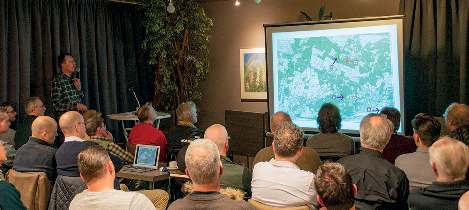
Het publiek tijdens de recente thema-avond Antitank (foto: Jasper Oorthuys).
DE ACHTERZIJDE
Zo ongeveer moet de plek hebben uitgezien waar 1st Parachute Battalion in de nacht van 17-18 september 1944 het spoor Utrecht-Arnhem overstak naar het zui- den, om zijn opmars te vervolgen richting Arnhem. Af- gebeeld is de eikenhouten overwegbeplating bij station Wolfheze, een markant punt uit de slag om Arnhem. De lorrie-uitzet, zoals beschreven in Ministory 130 op bladzijden 11-15, was smaller, maar had waarschijn- lijk dezelfde kenmerken (foto: Het Utrechts Archief, nr. 836116. Opnamedatum: 6 februari 1954, W. van Schaik, fotograaf Nederlandse Spoorwegen).
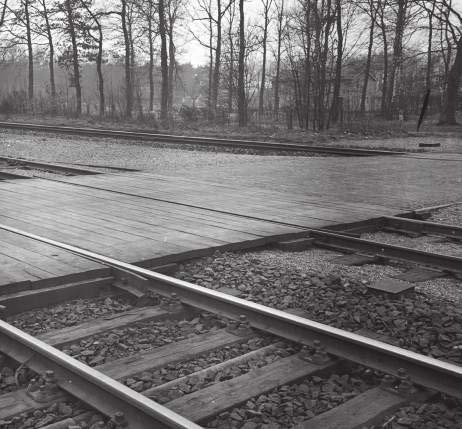
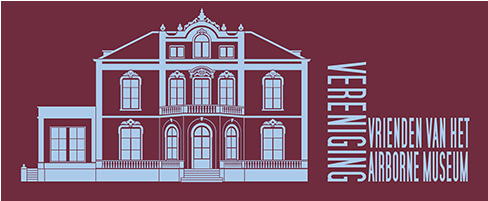
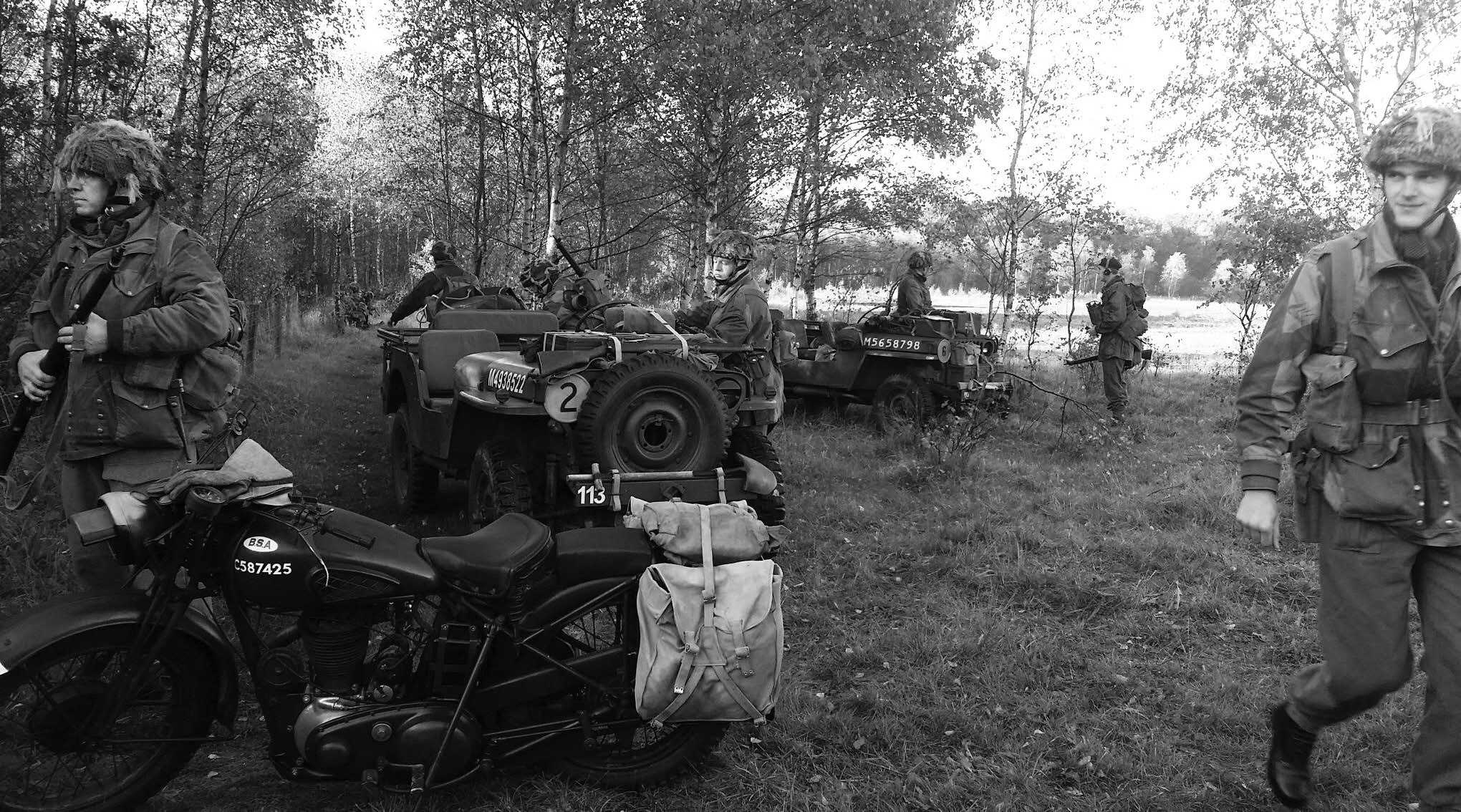
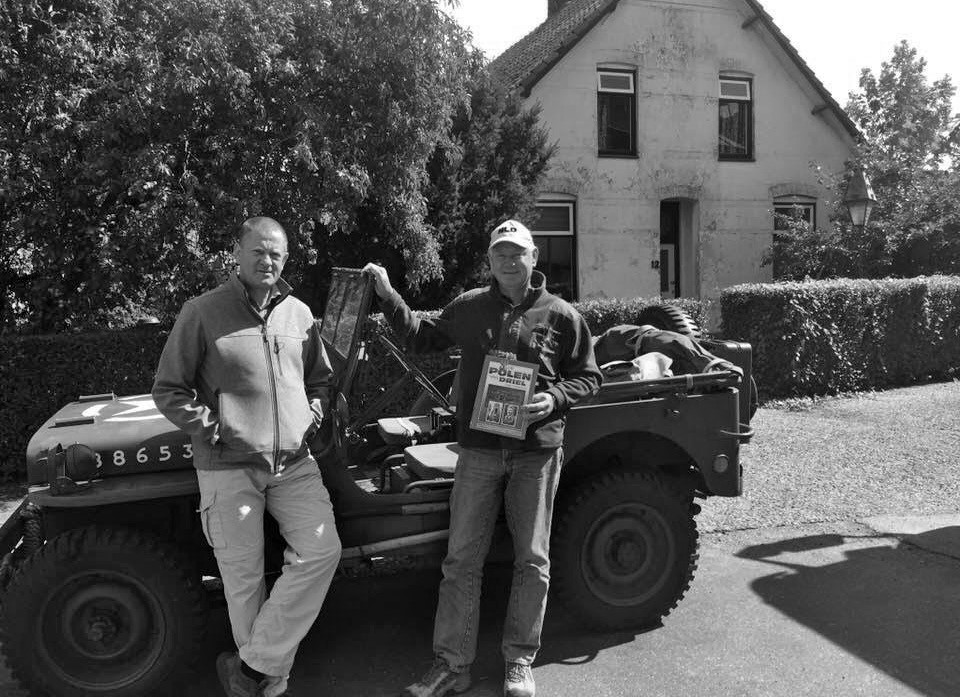
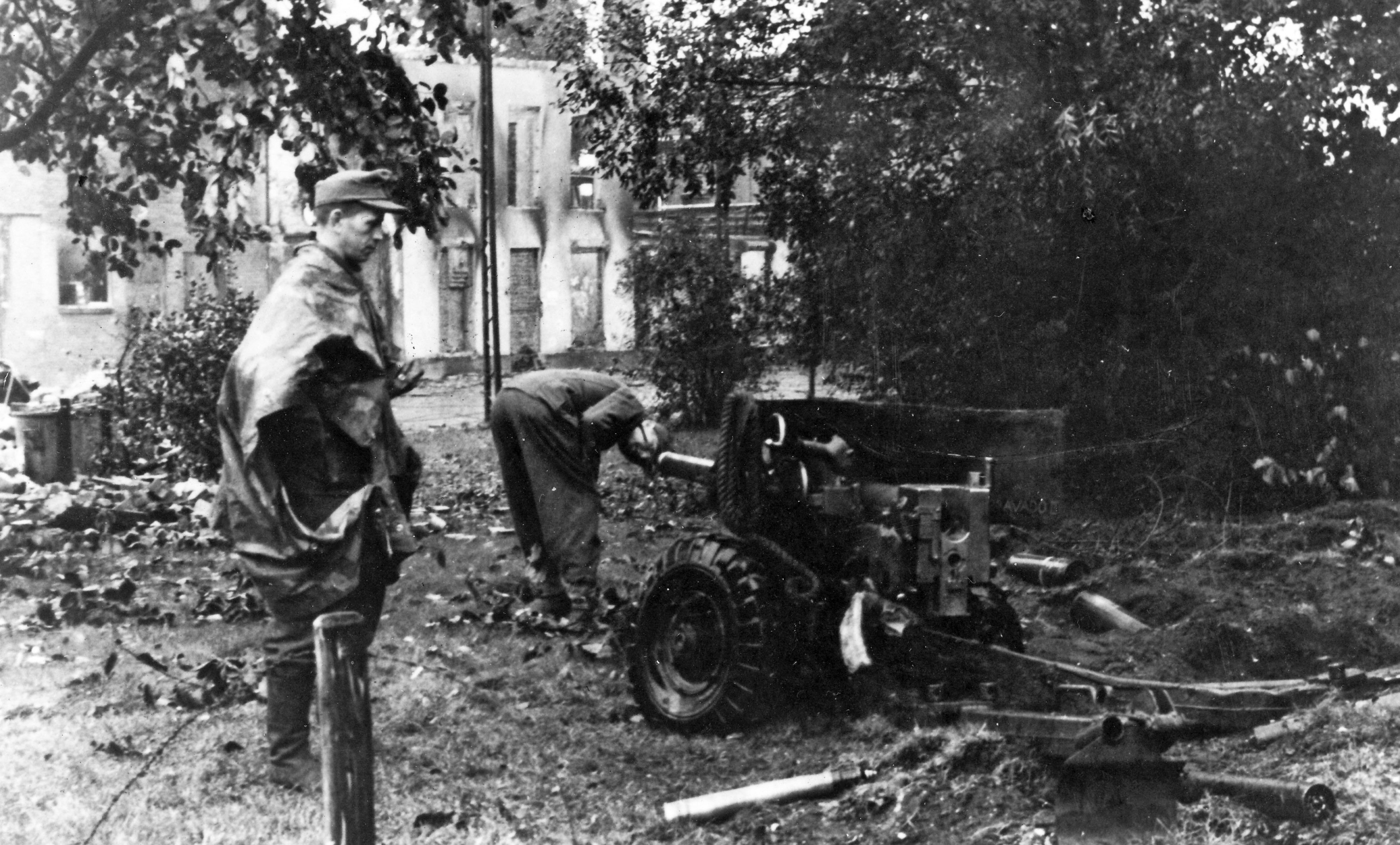

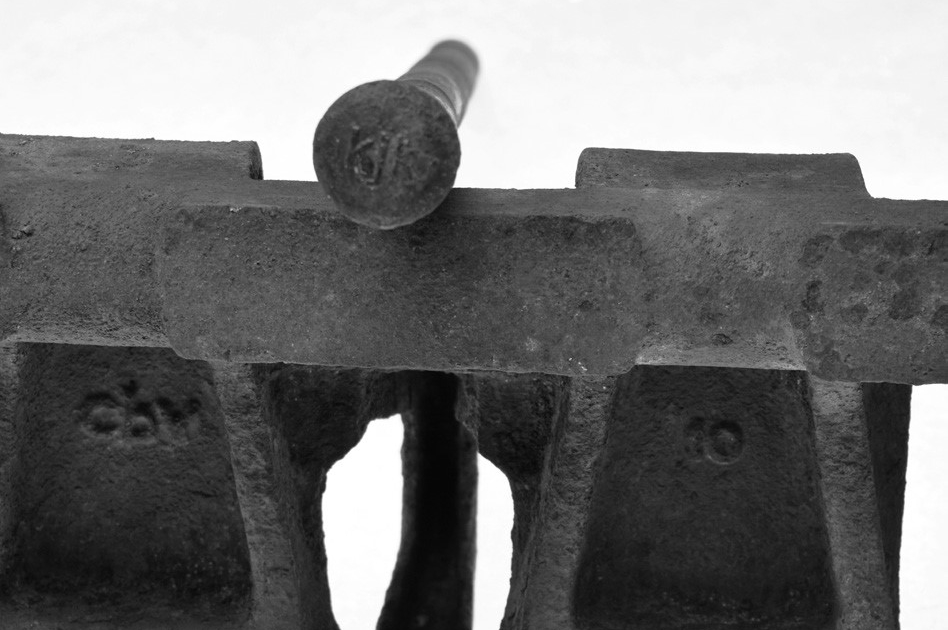
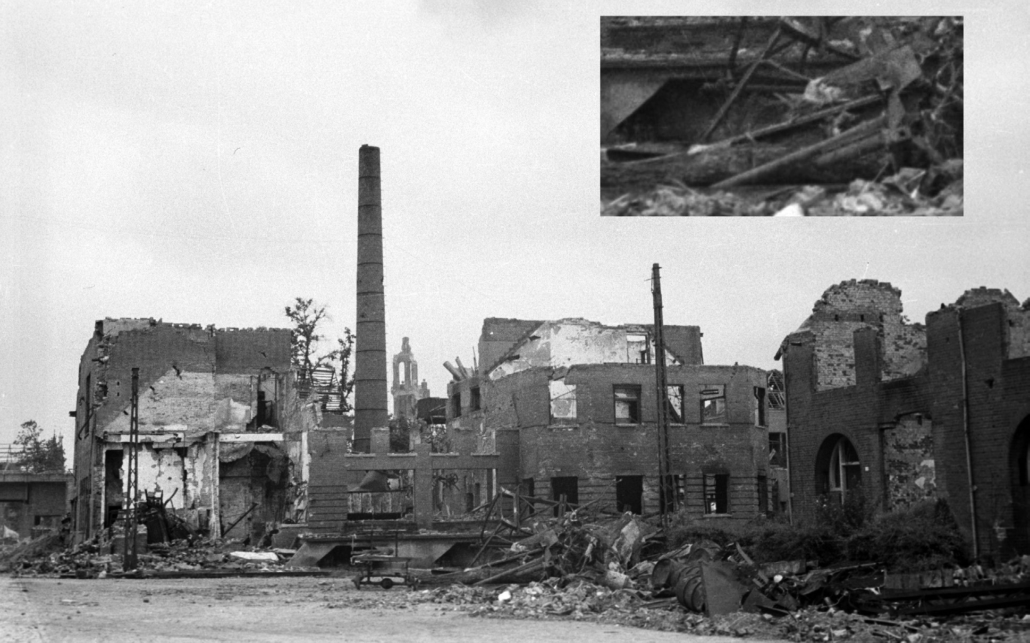
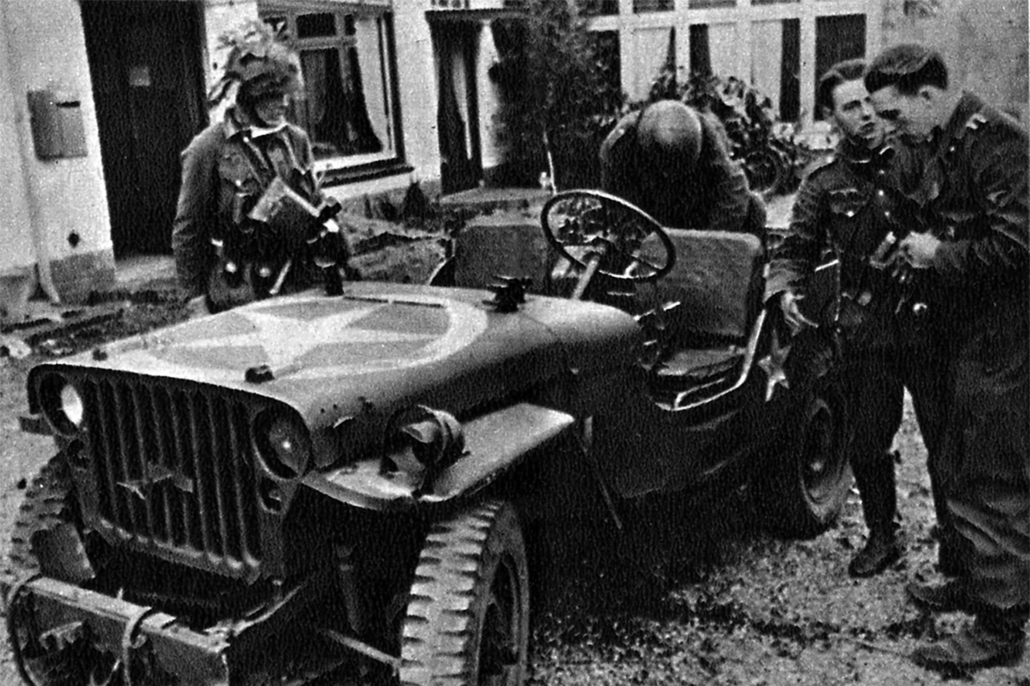
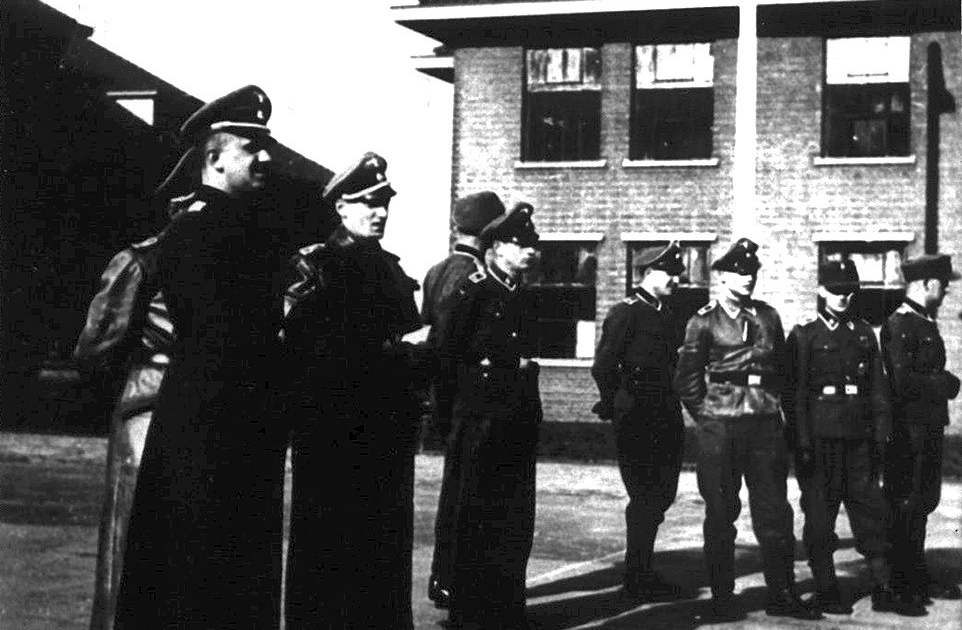
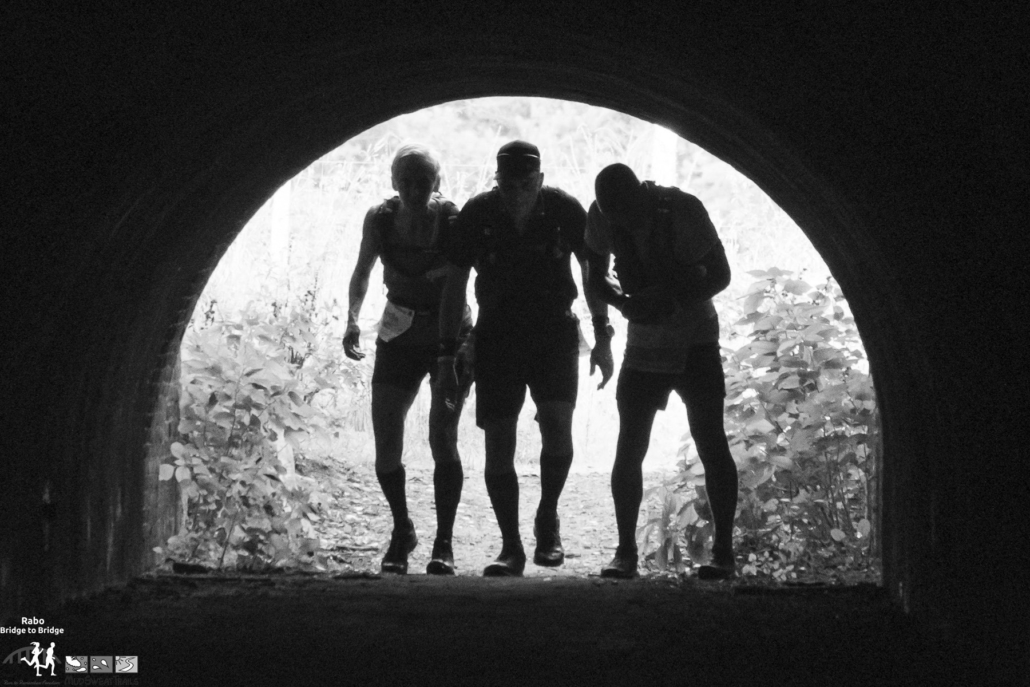
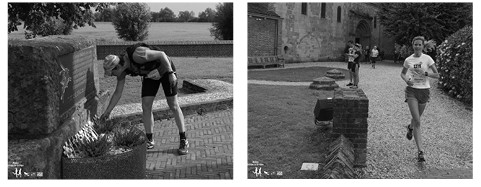
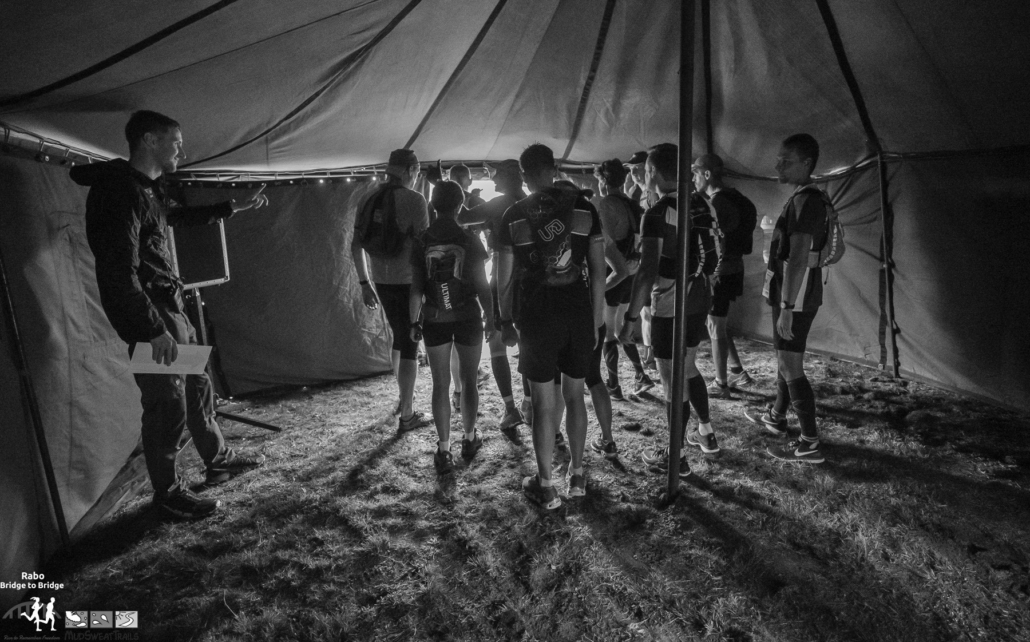
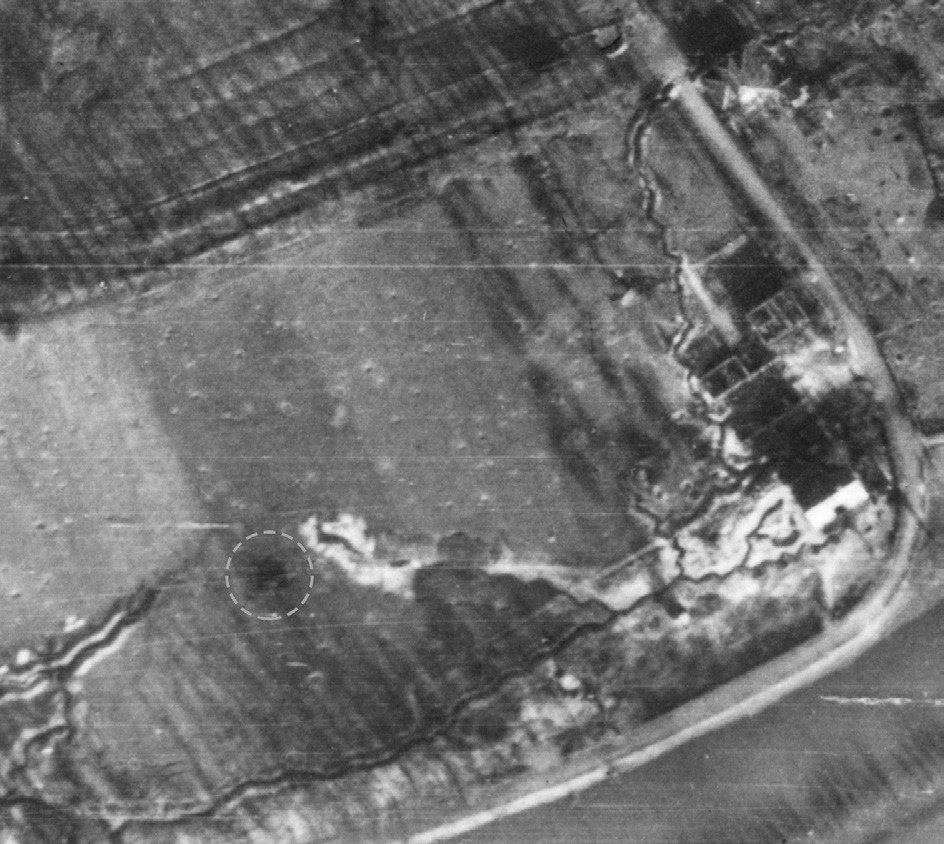


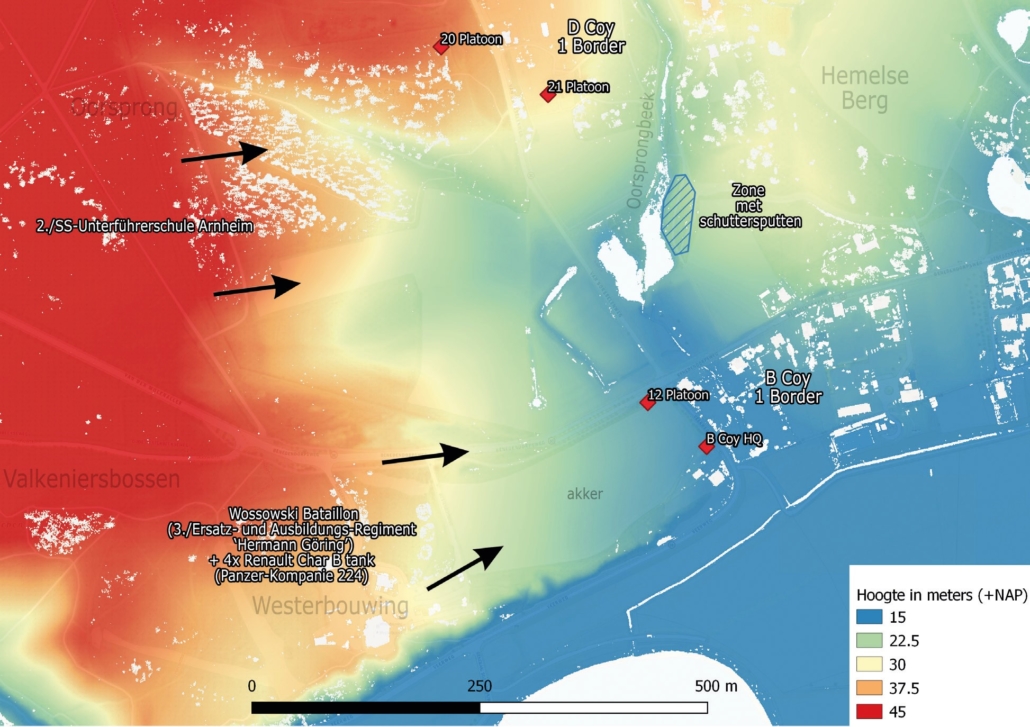
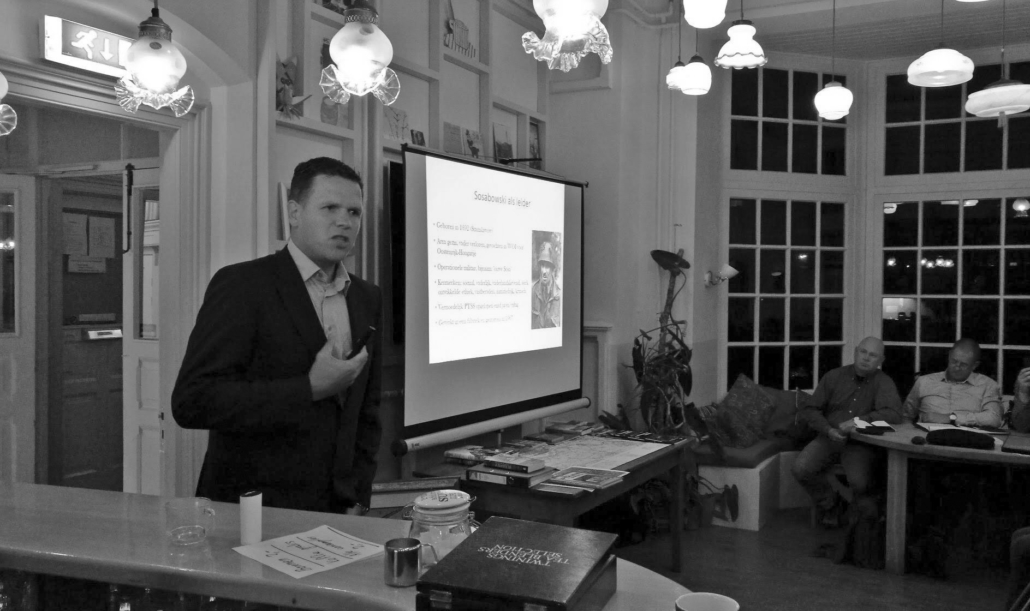
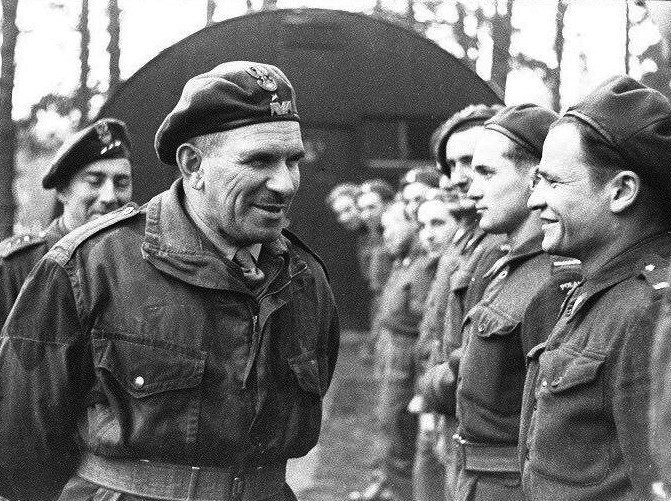
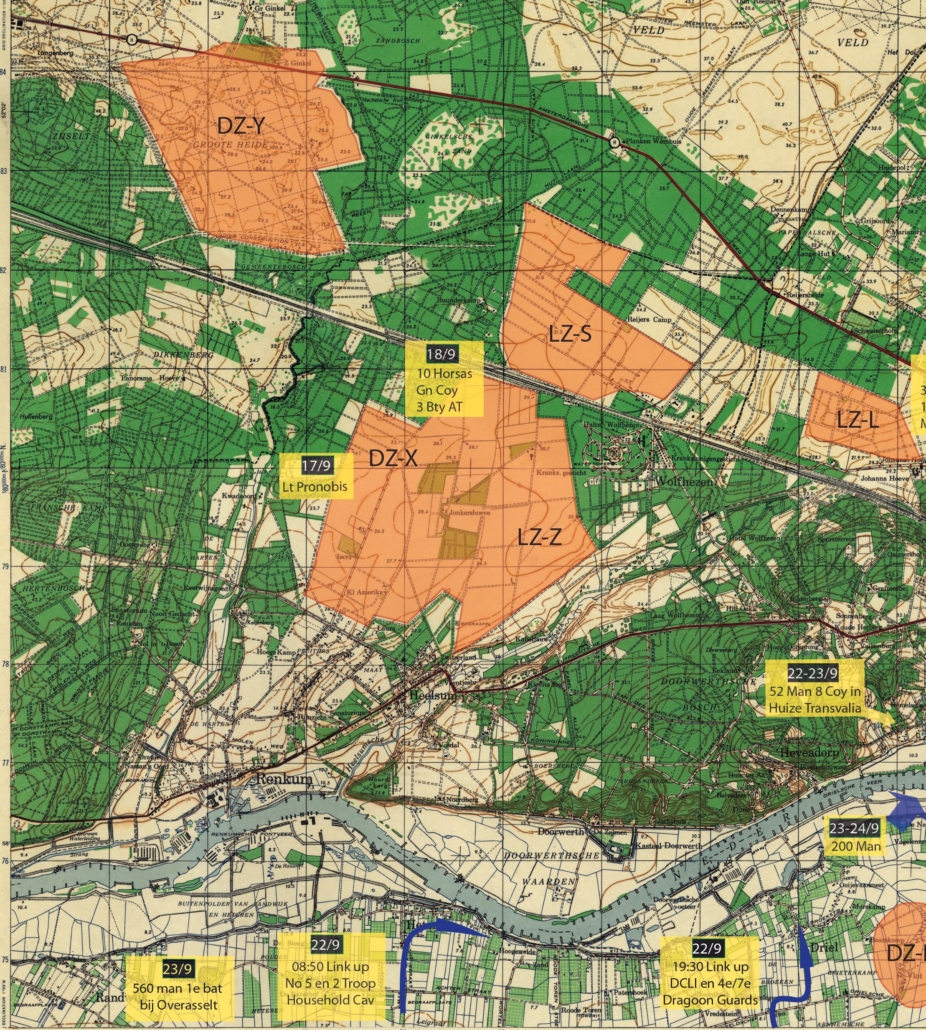 On 2230 hours in the evening Captain Ludwik Zwolanski reports to Major General Sosabowski. Zwolanski is the Polish Brigade’s liaison officer at 1st Airborne Division HQ. He has swum across the river and is carrying a message from Major General Urquhart. His urgent request is to cross the river this night using im provised rafts. These rafts will be ready at 0100 hours. Anxiously the Poles wait until 0300 hours. When no rafts show up, Major General Sosabowski is forced to withdraw his soldiers to the village of Driel.
On 2230 hours in the evening Captain Ludwik Zwolanski reports to Major General Sosabowski. Zwolanski is the Polish Brigade’s liaison officer at 1st Airborne Division HQ. He has swum across the river and is carrying a message from Major General Urquhart. His urgent request is to cross the river this night using im provised rafts. These rafts will be ready at 0100 hours. Anxiously the Poles wait until 0300 hours. When no rafts show up, Major General Sosabowski is forced to withdraw his soldiers to the village of Driel.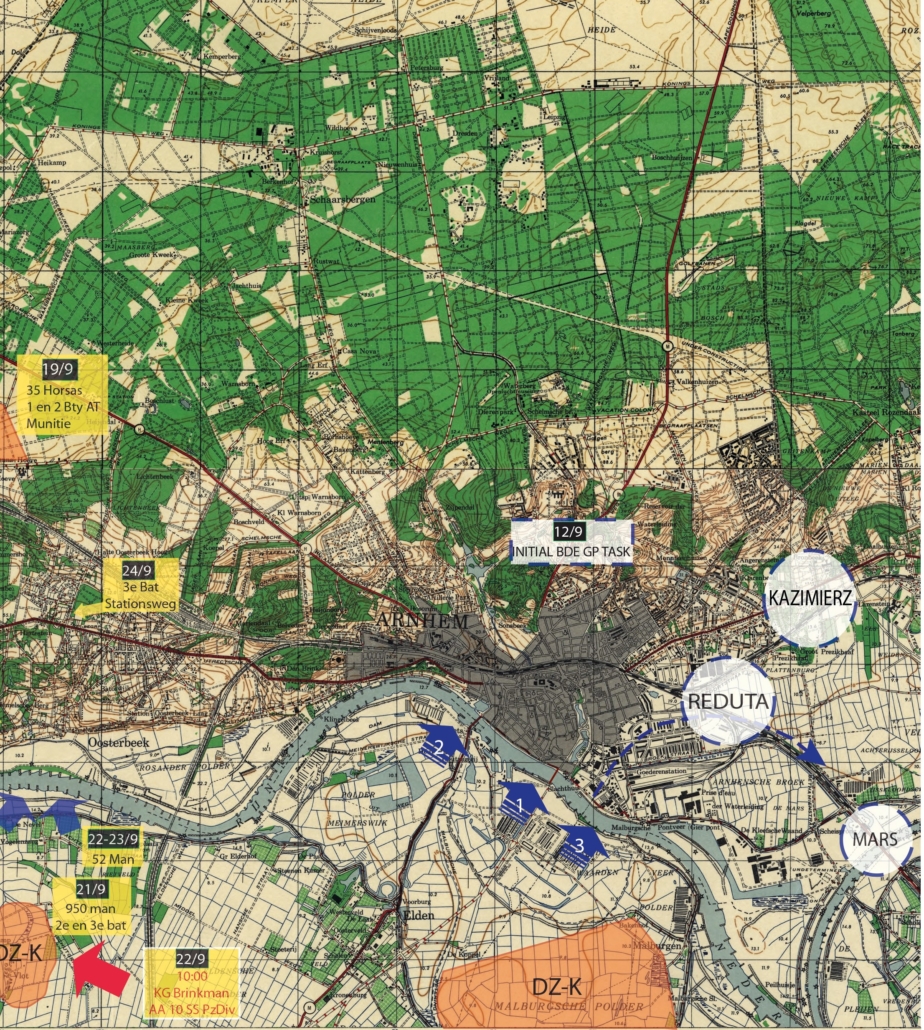
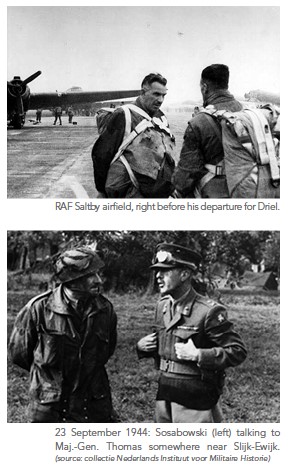
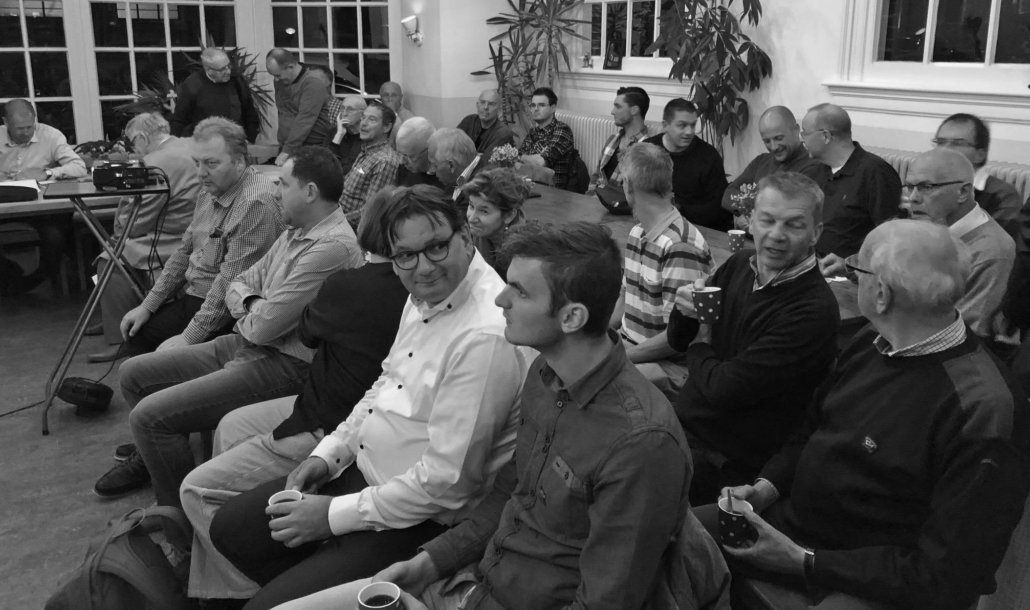
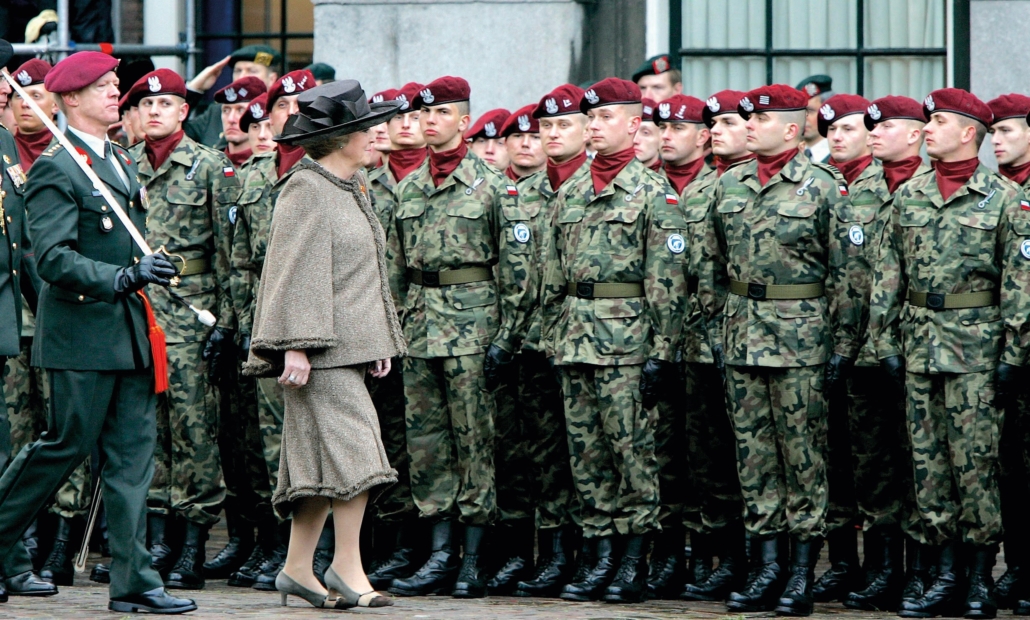
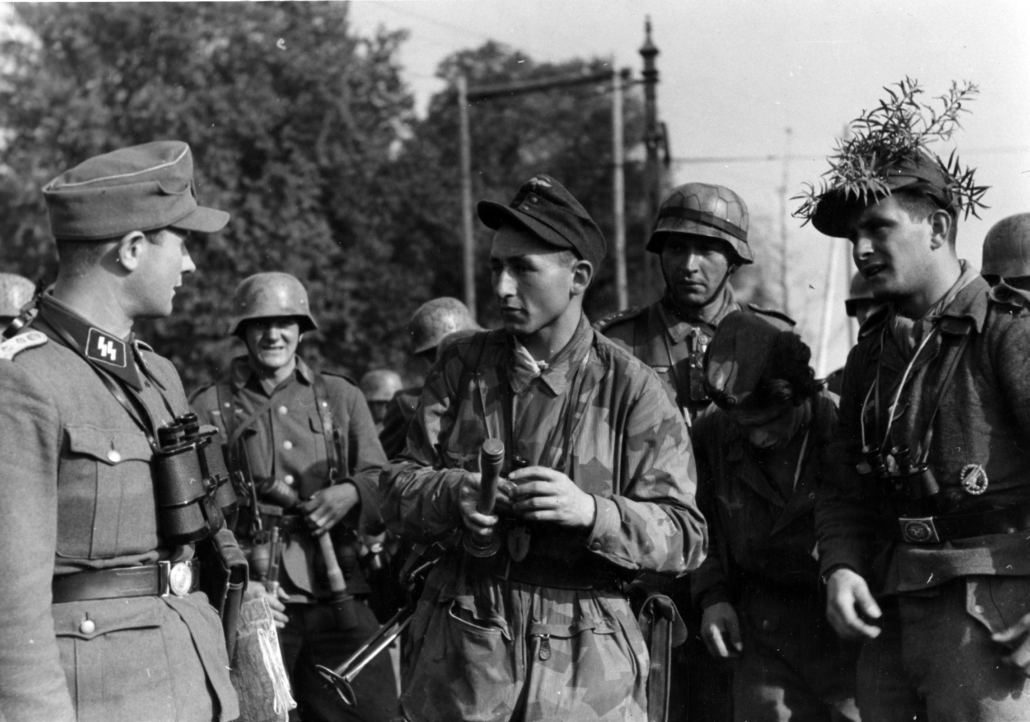
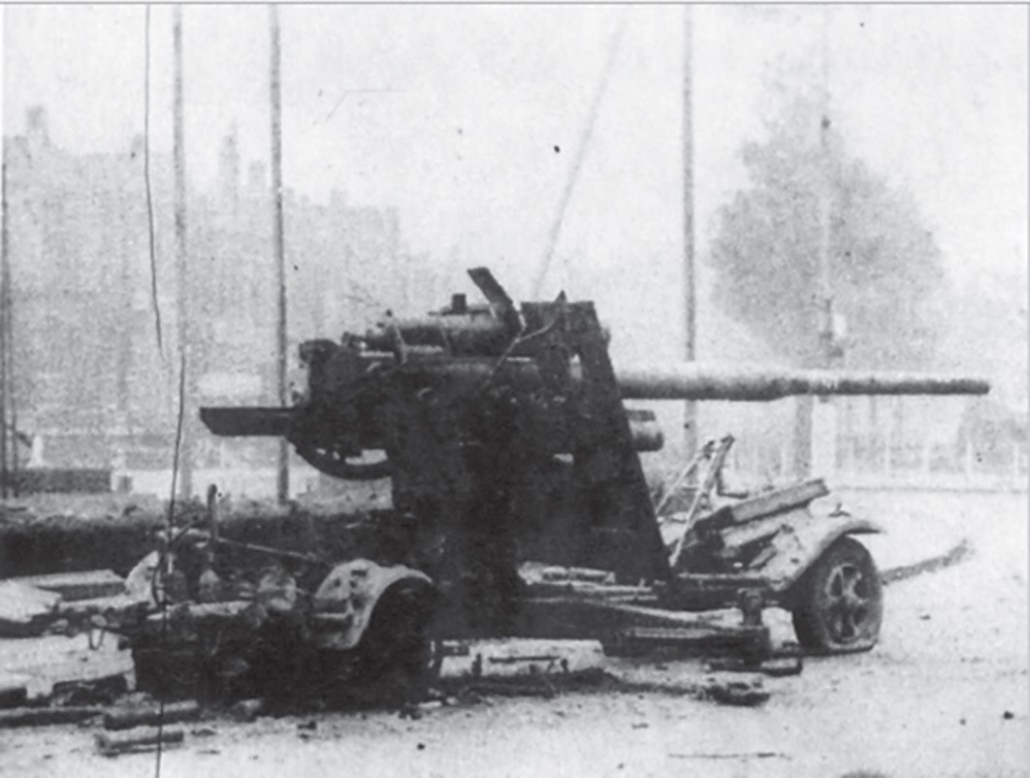
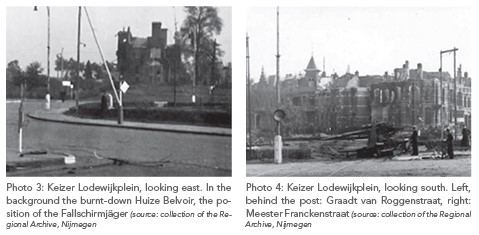
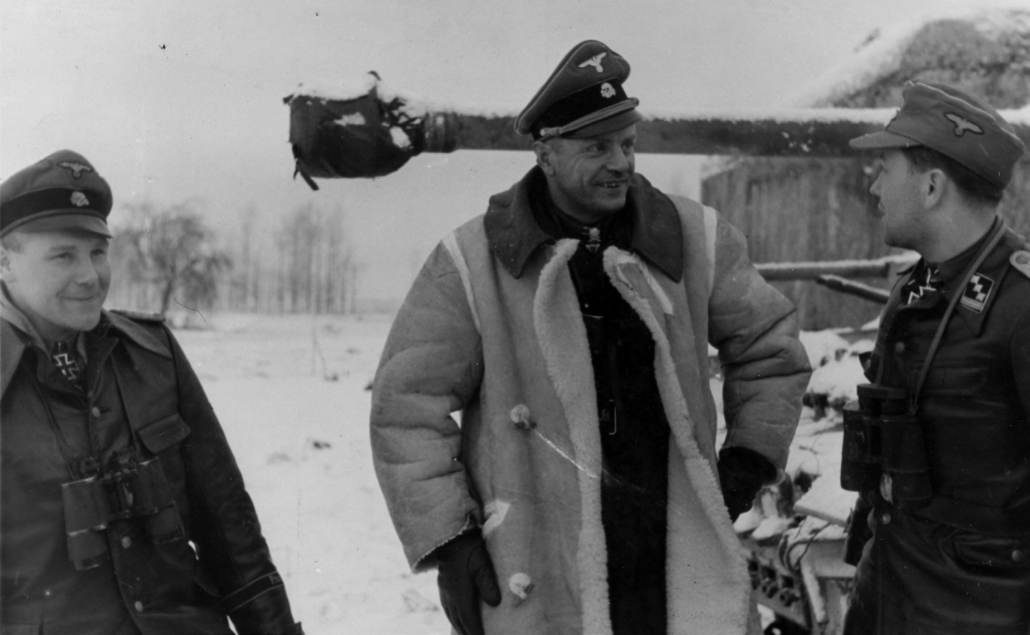
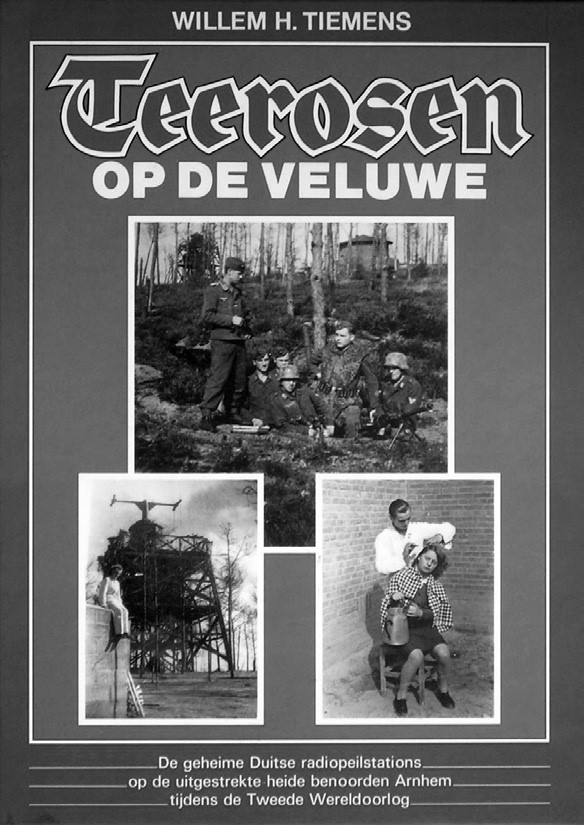
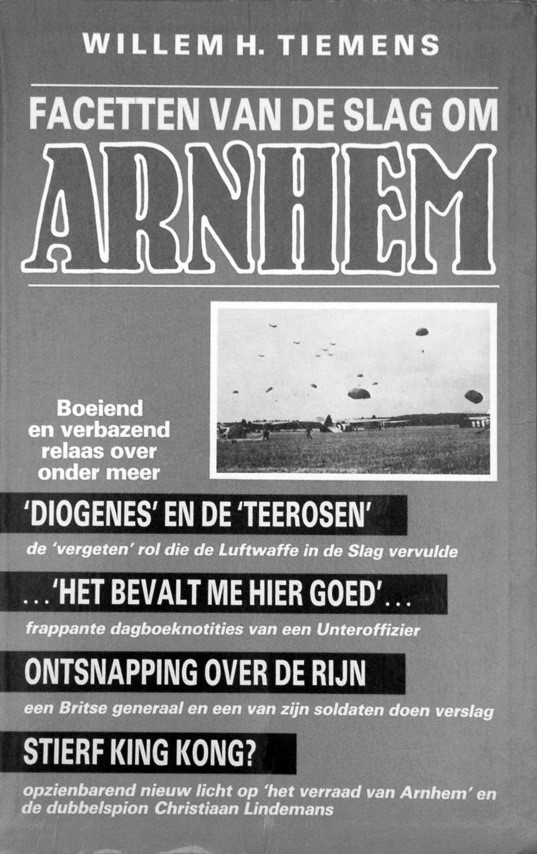
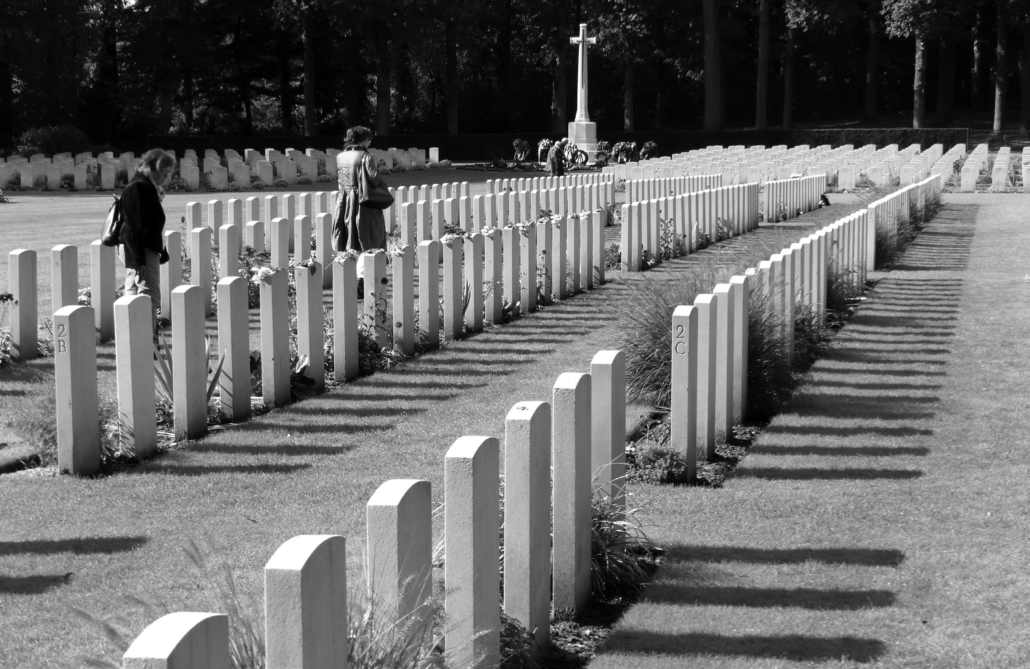
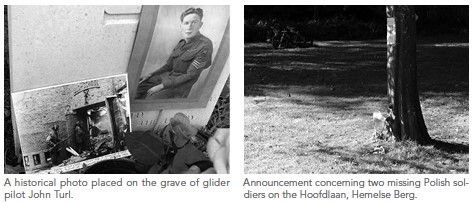
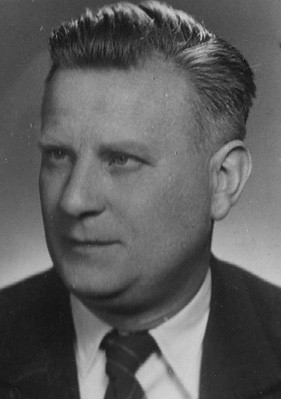
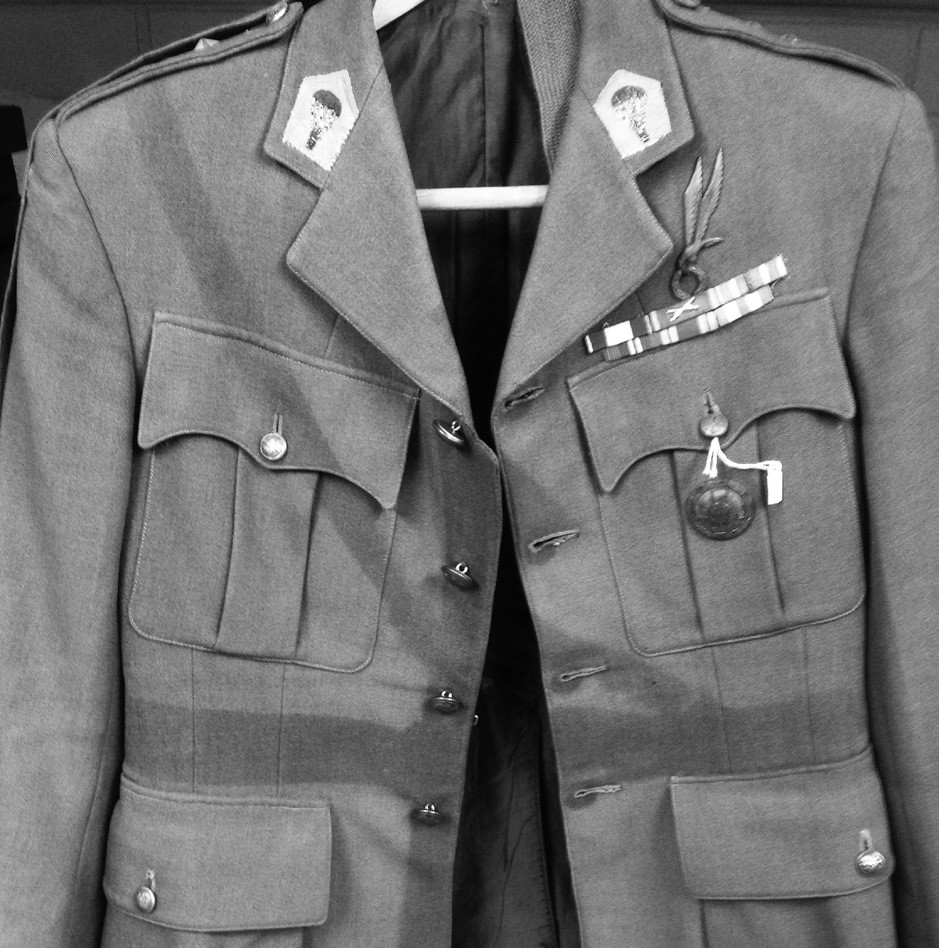
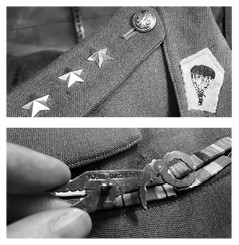
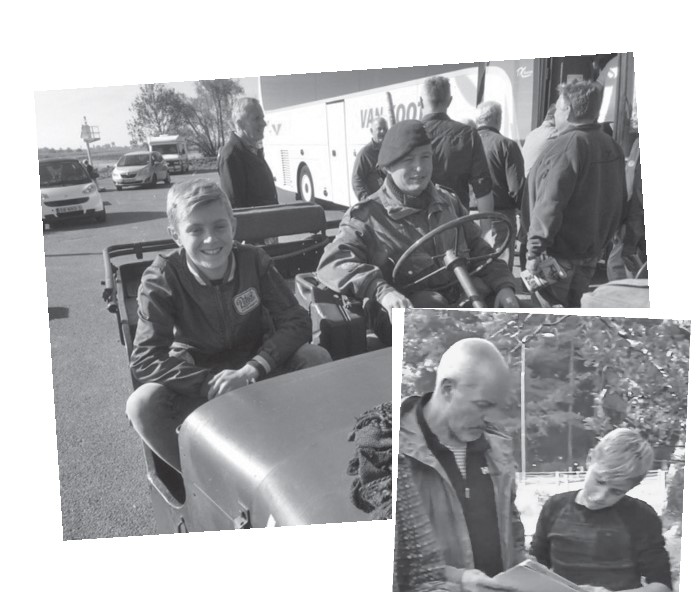
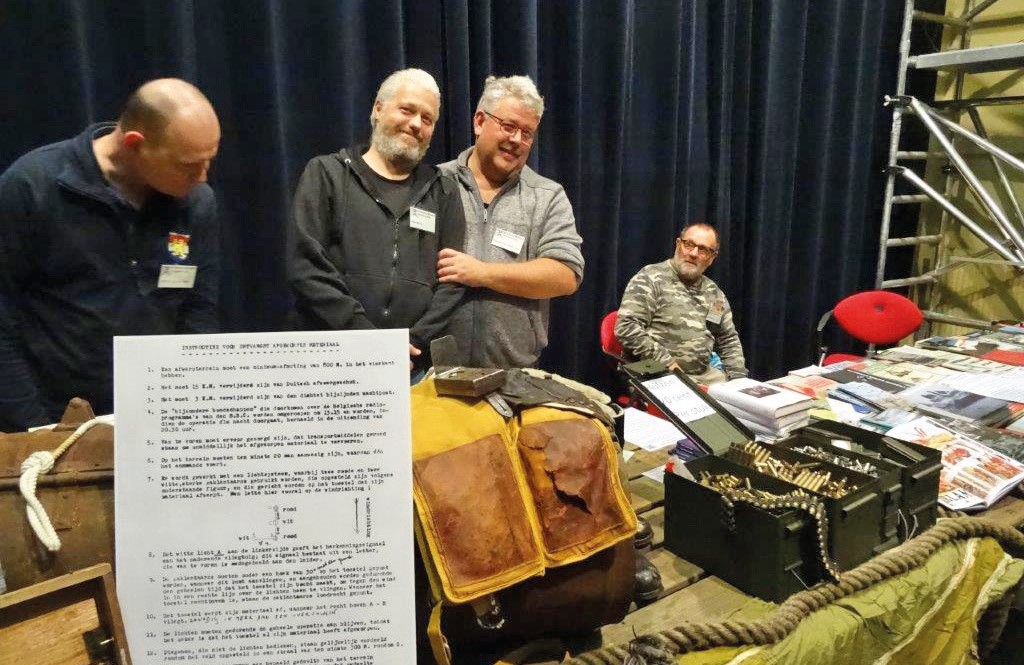
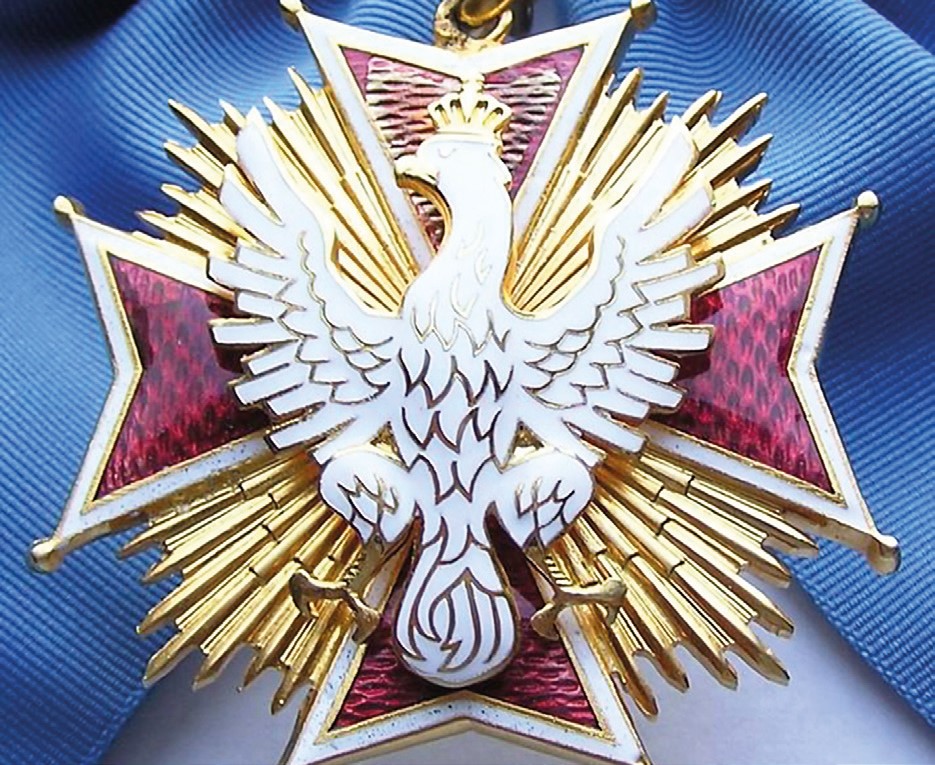
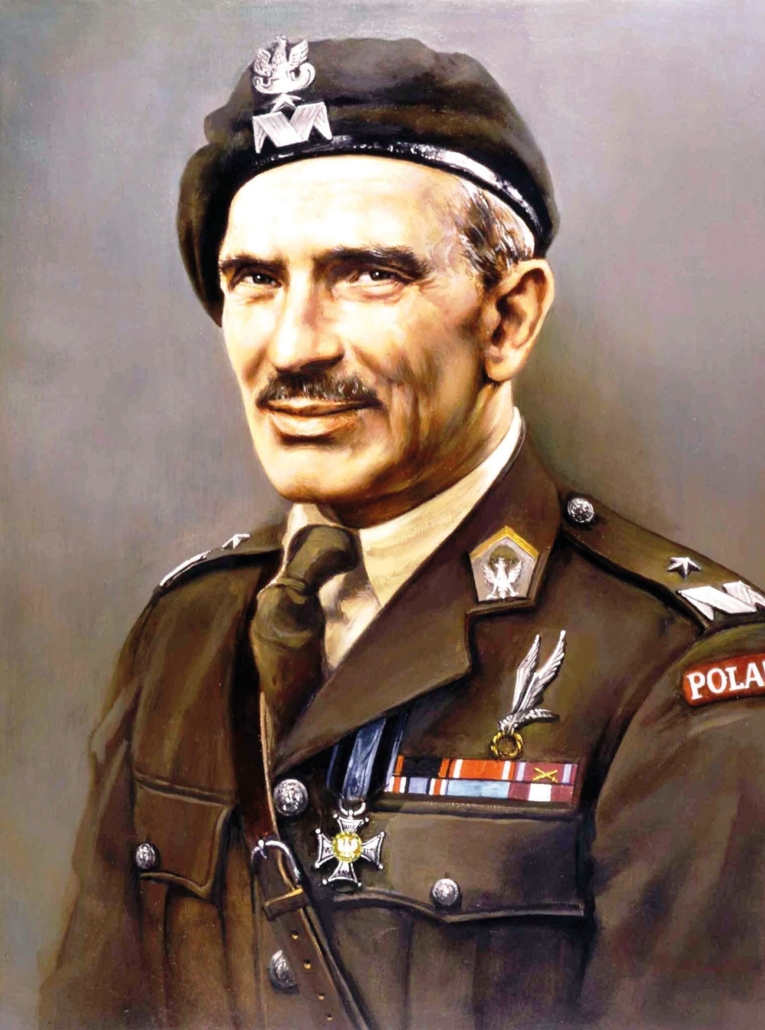
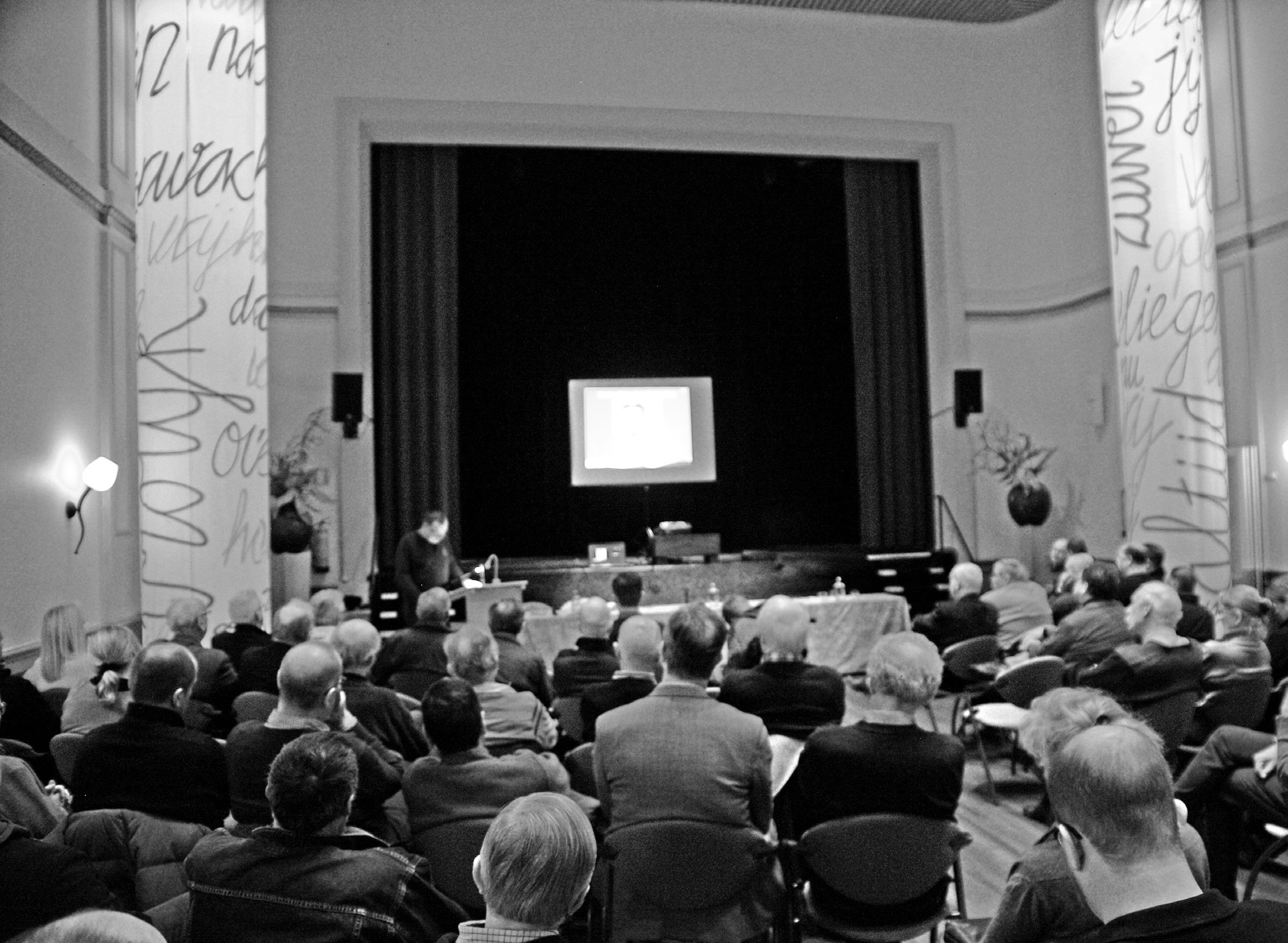
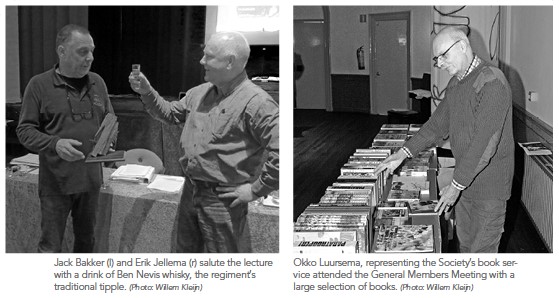 English membership. The number of English members has decreased substantially over the last few years. In part this is the result of a lack of communication due to the, necessary, inward focus of the SFAM. Moreover, the long delays between the publication of the Dutch and Eng-lish-language versions of this magazine under-standably caused considerably irritation.
English membership. The number of English members has decreased substantially over the last few years. In part this is the result of a lack of communication due to the, necessary, inward focus of the SFAM. Moreover, the long delays between the publication of the Dutch and Eng-lish-language versions of this magazine under-standably caused considerably irritation.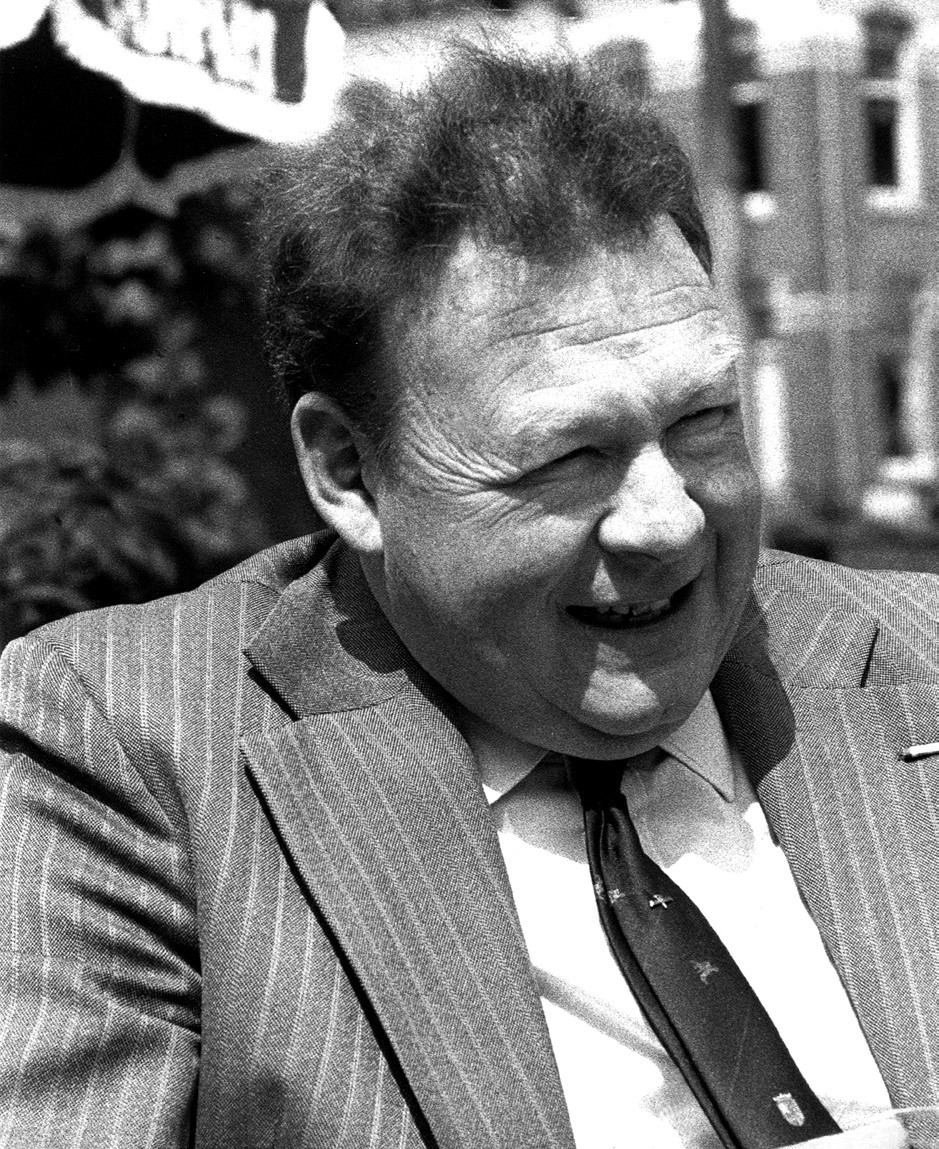
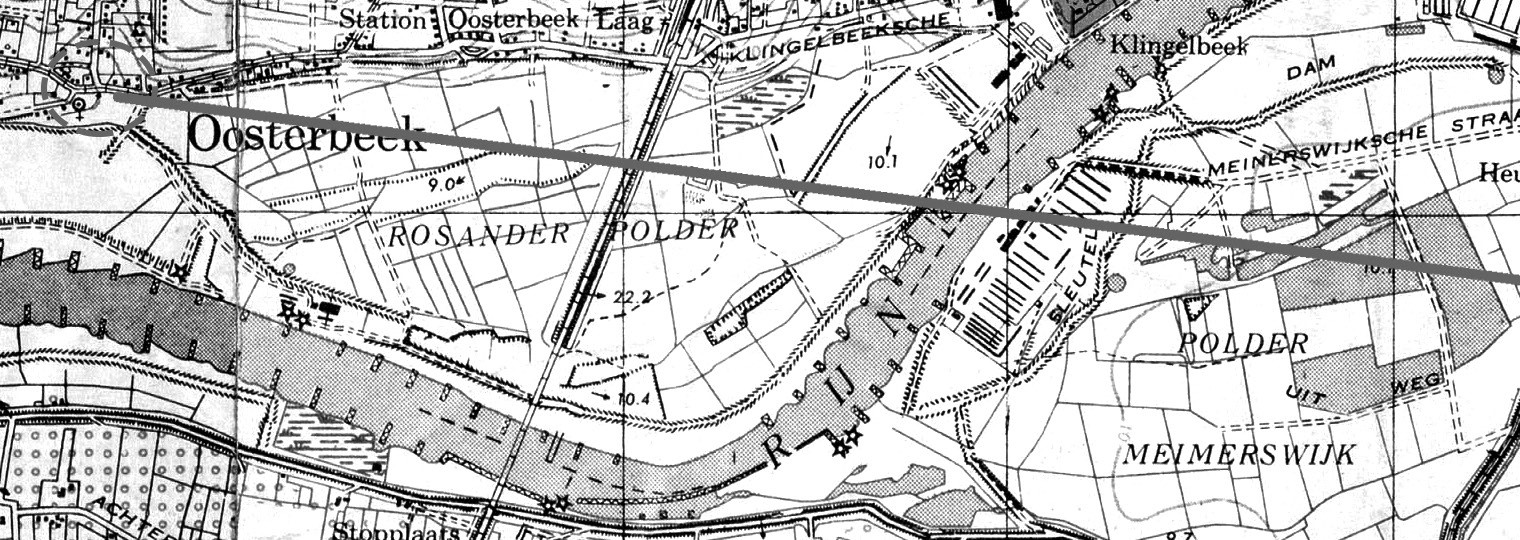
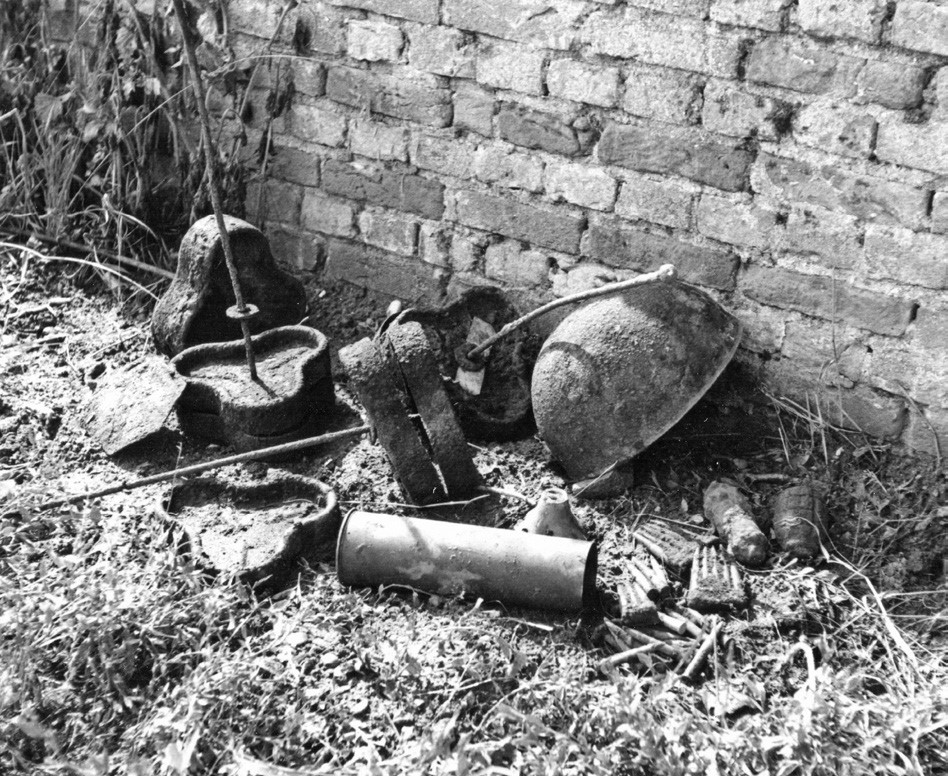
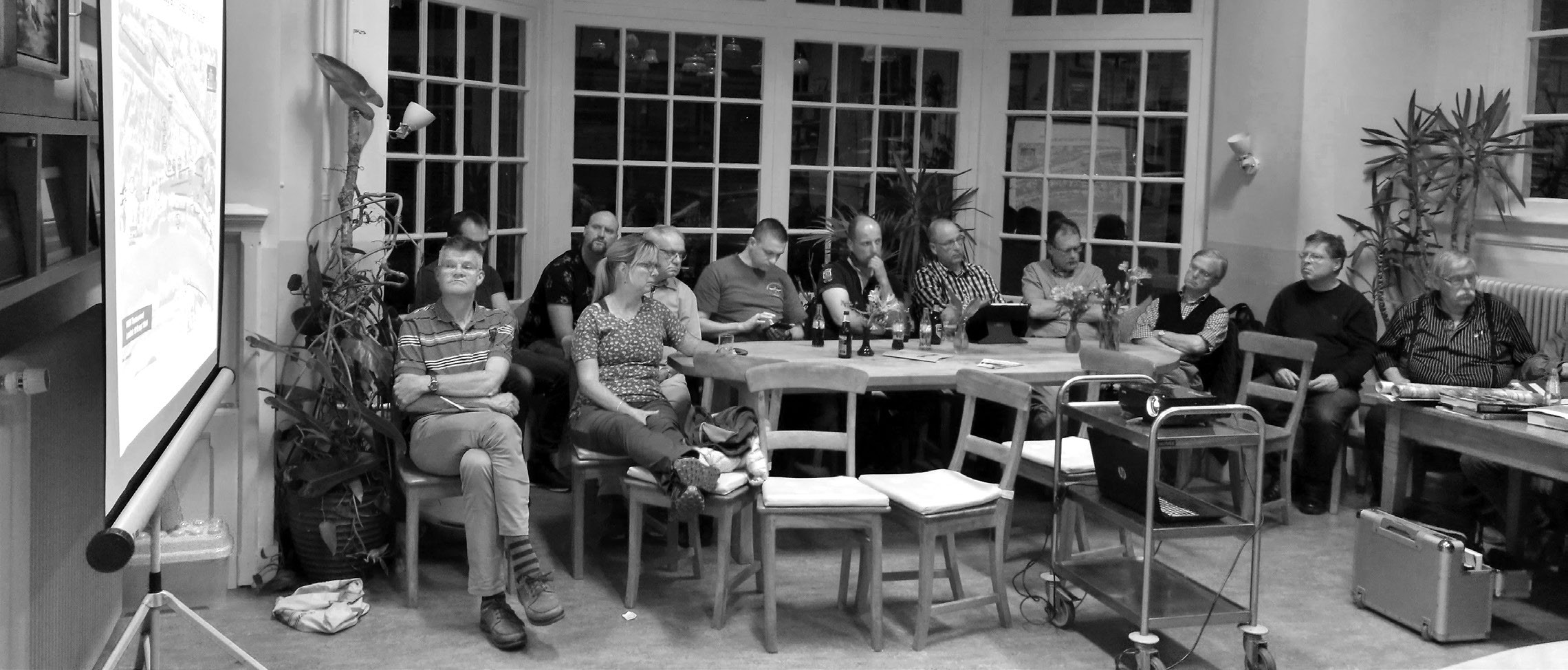
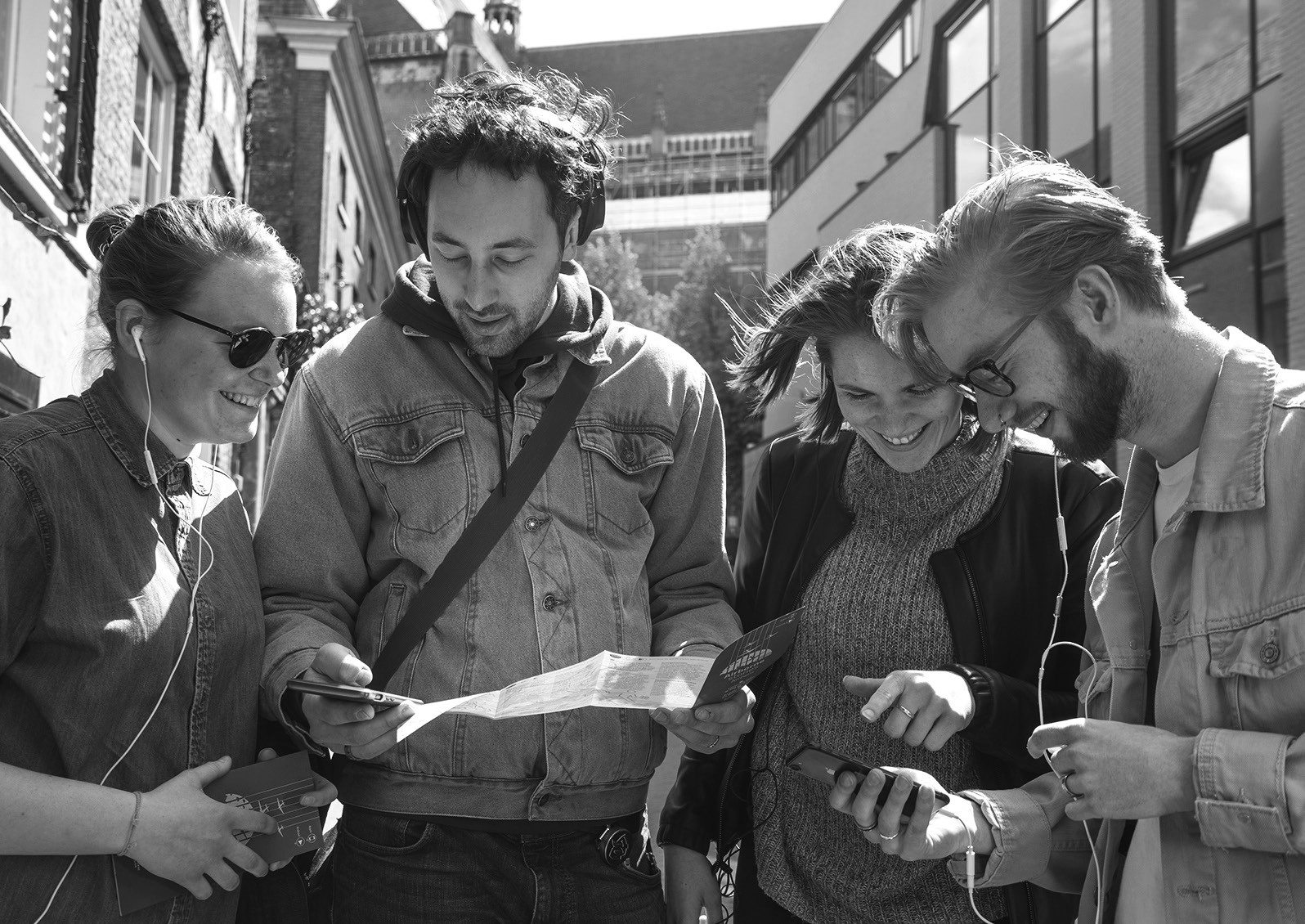
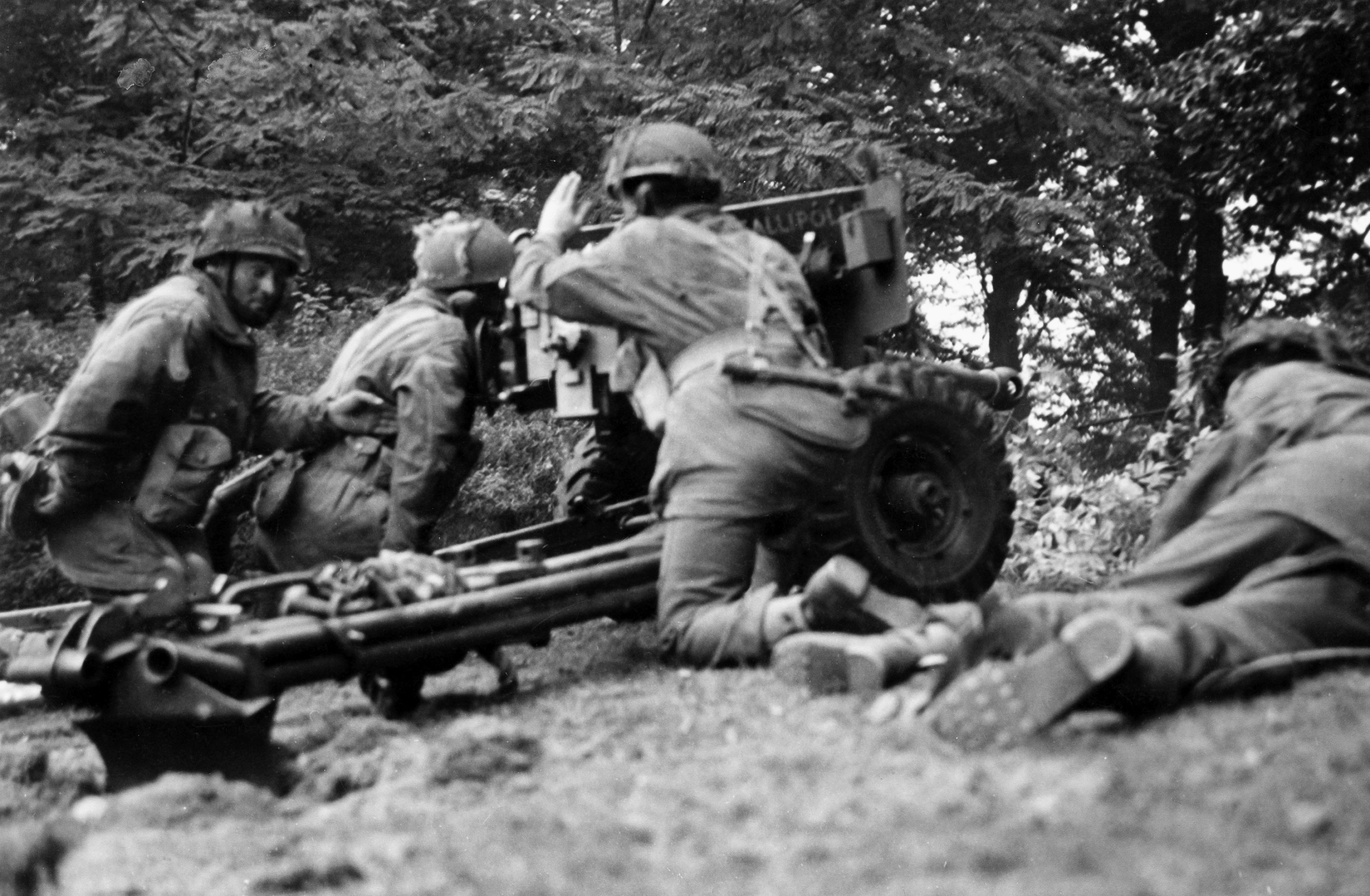
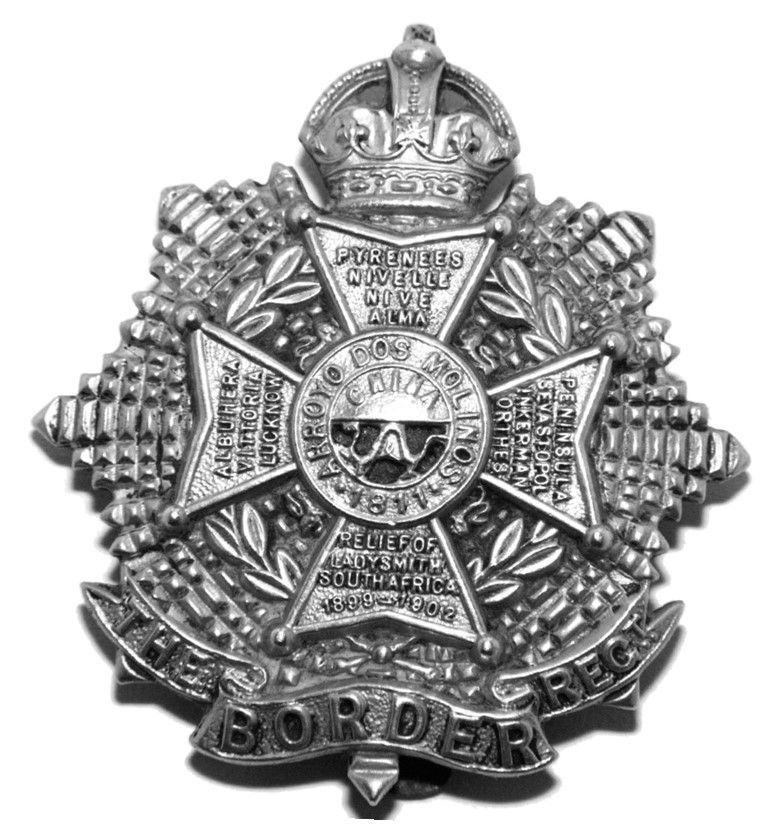
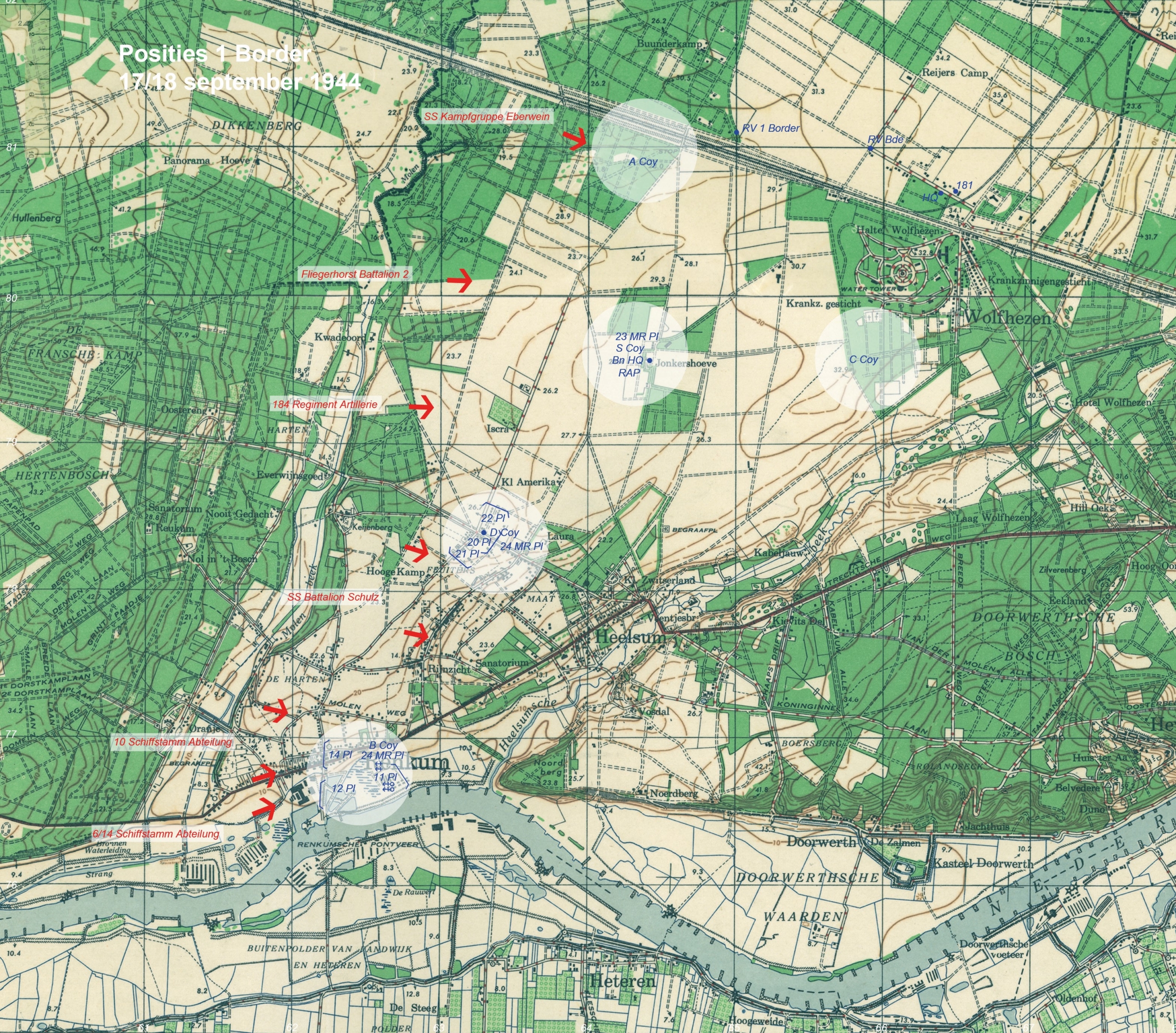
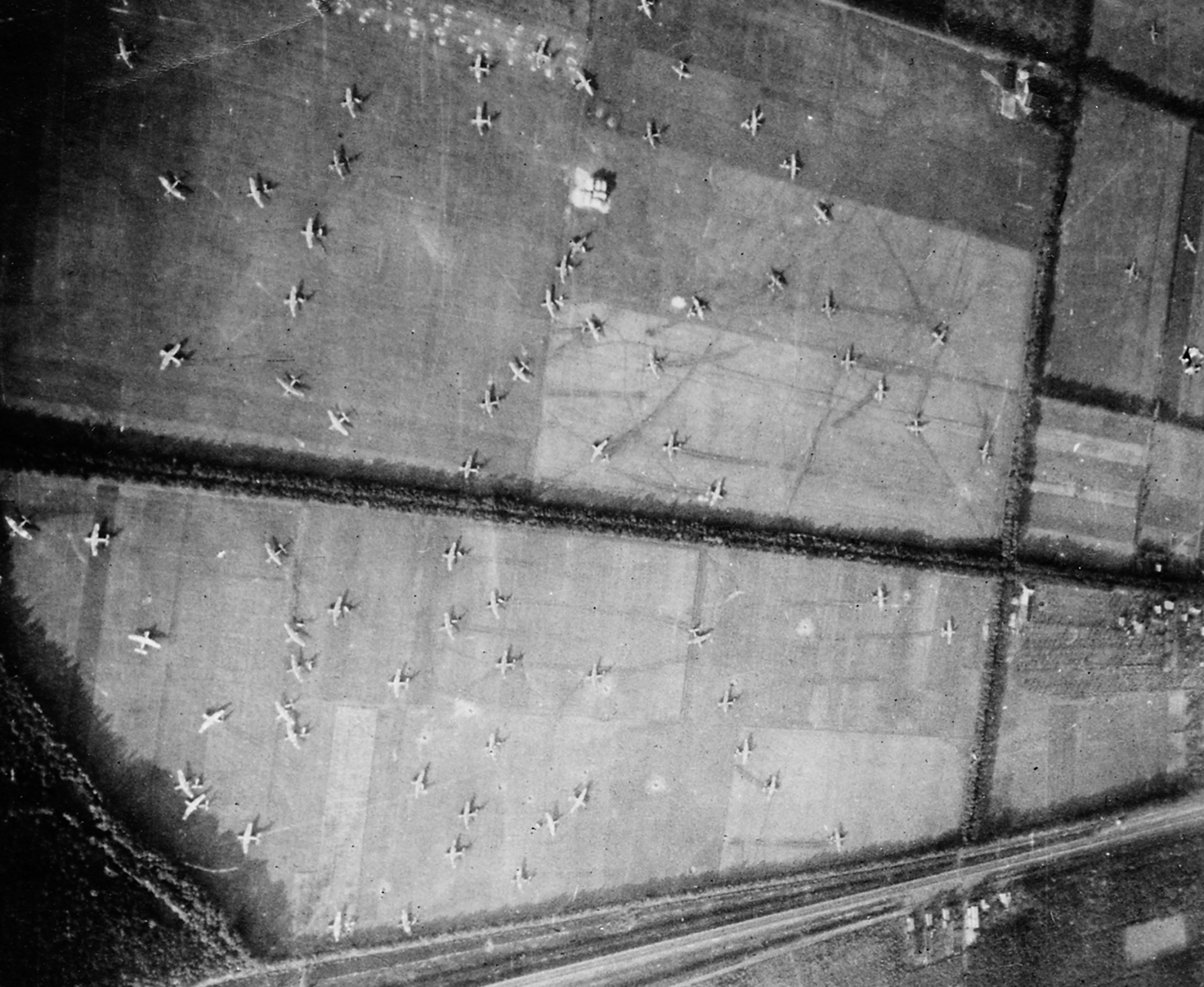
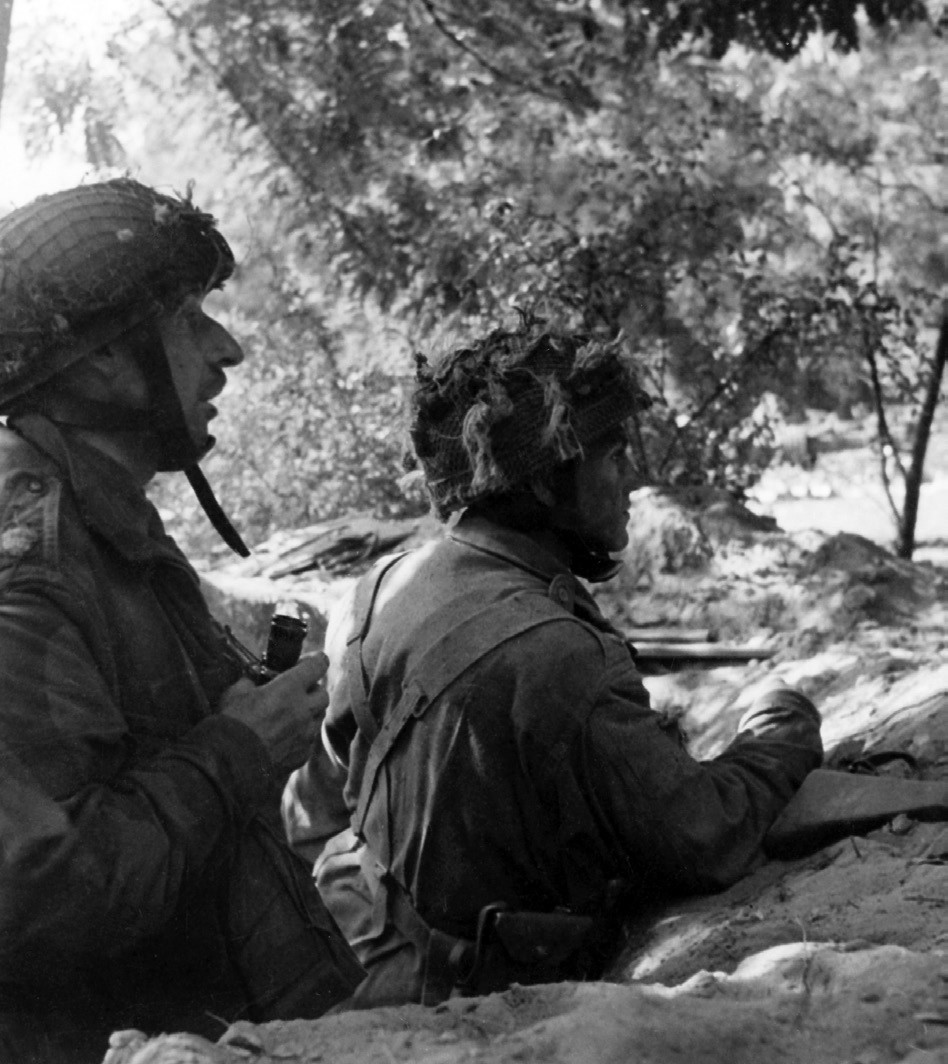

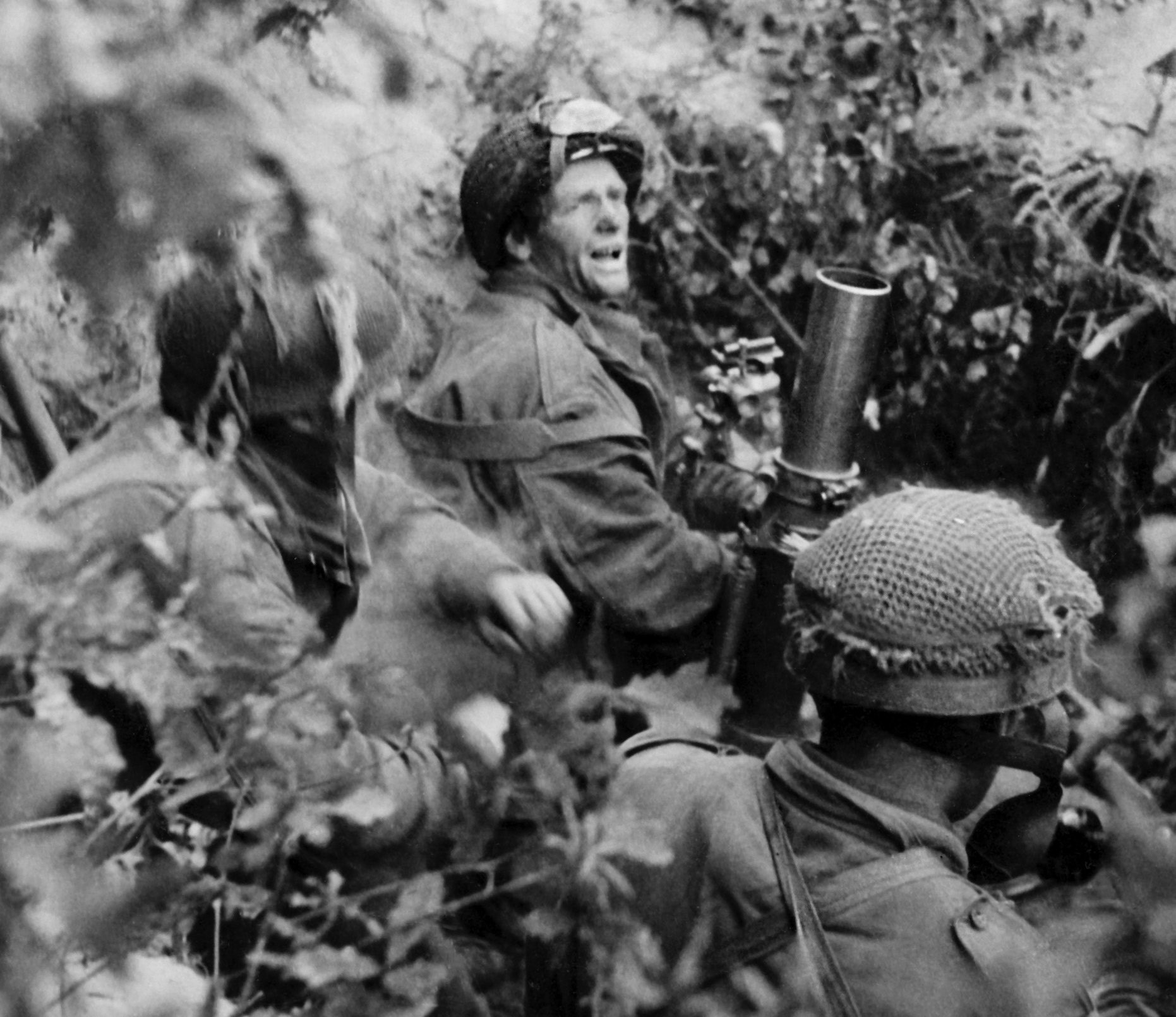
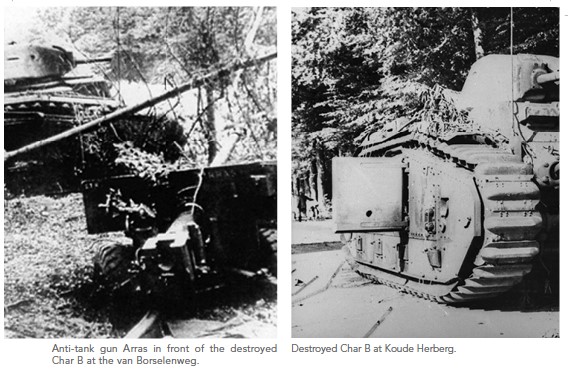

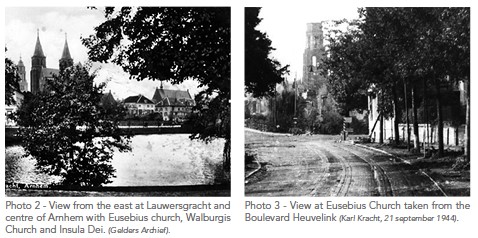
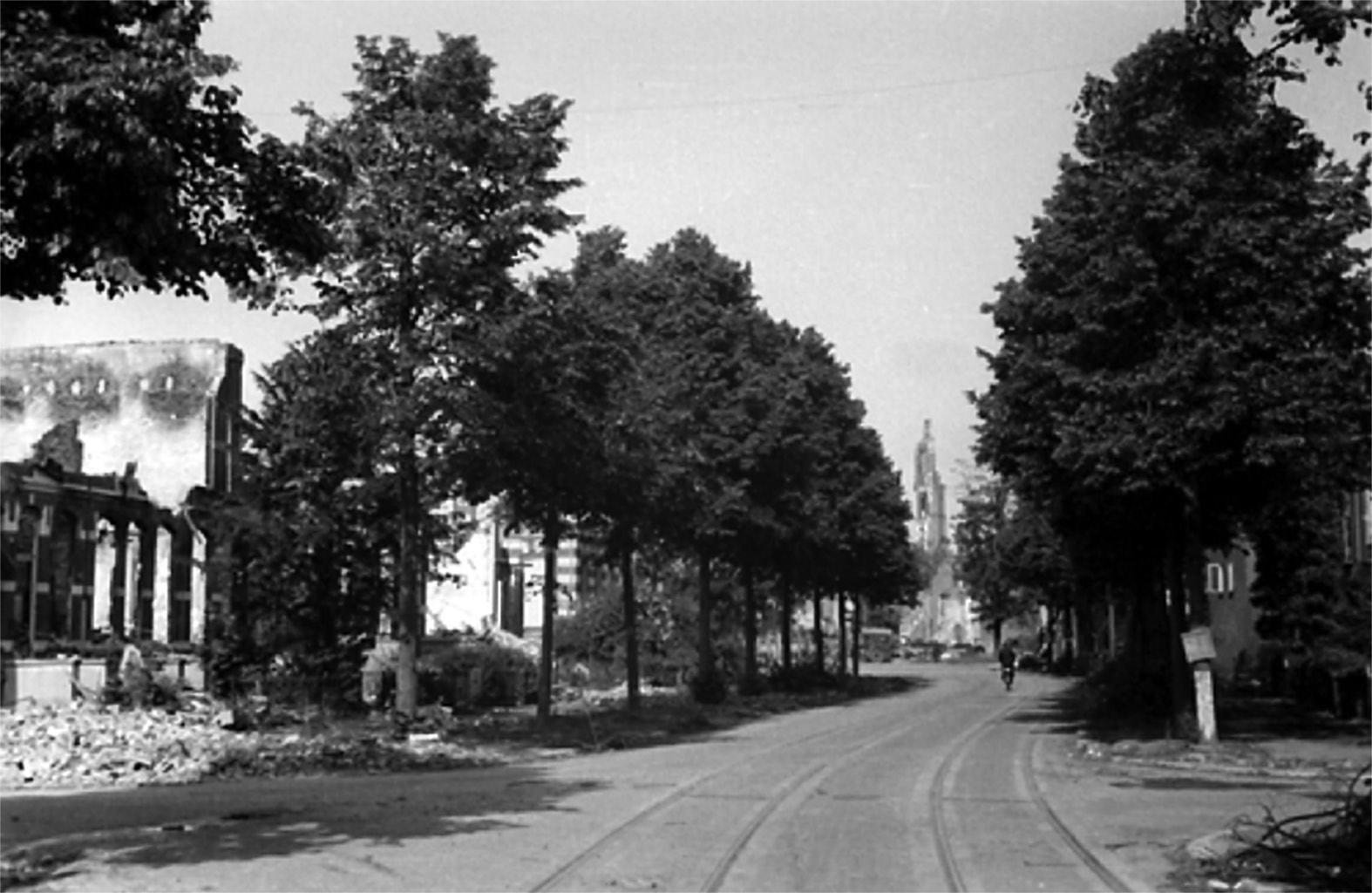

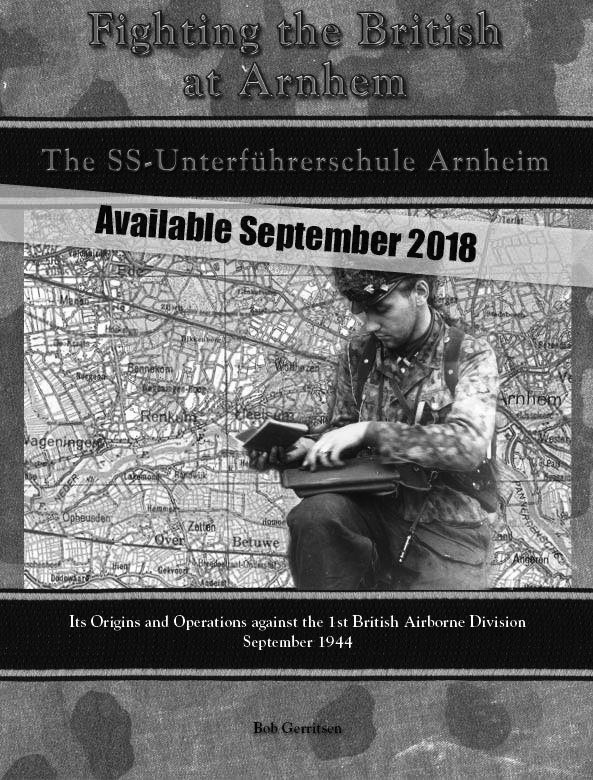
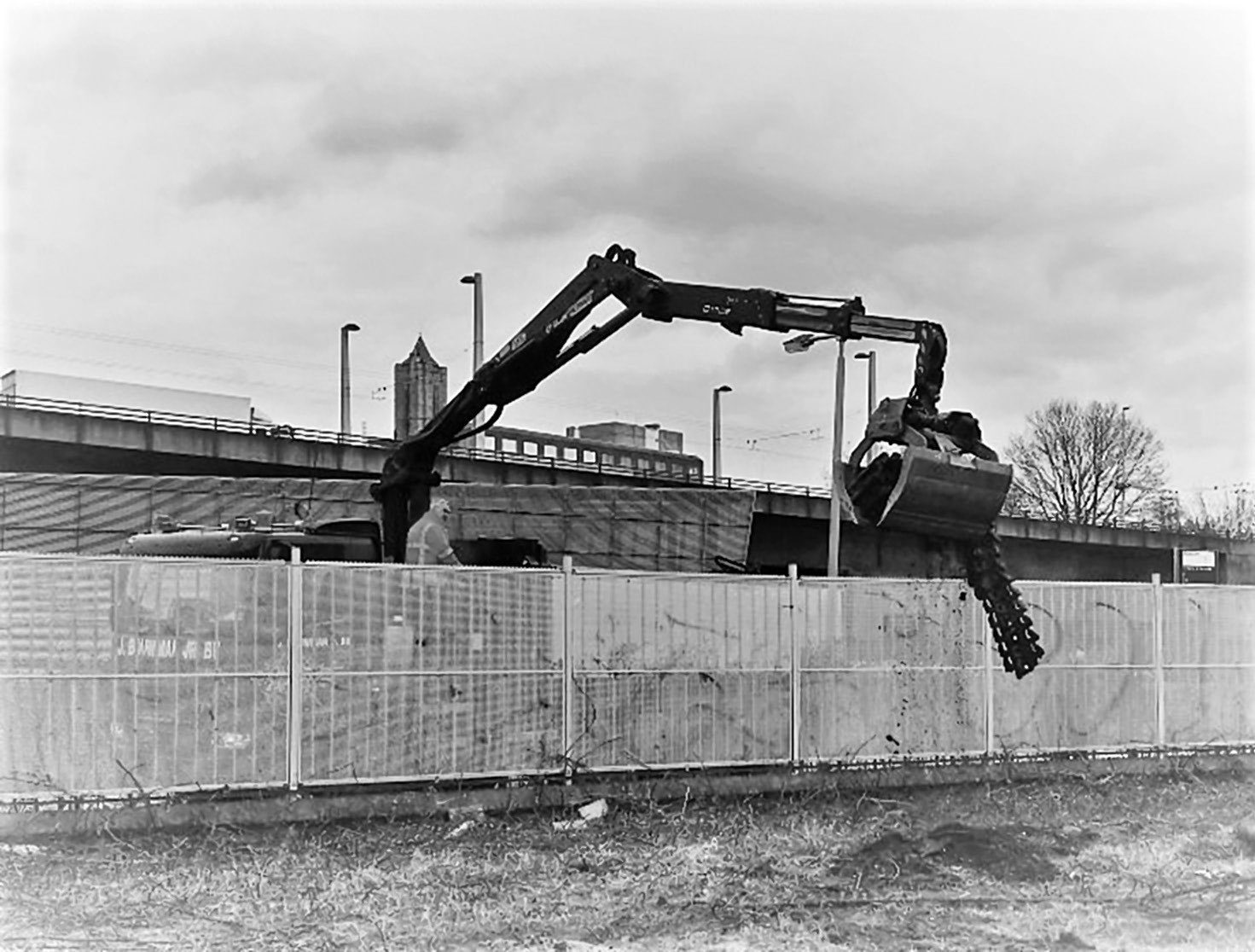
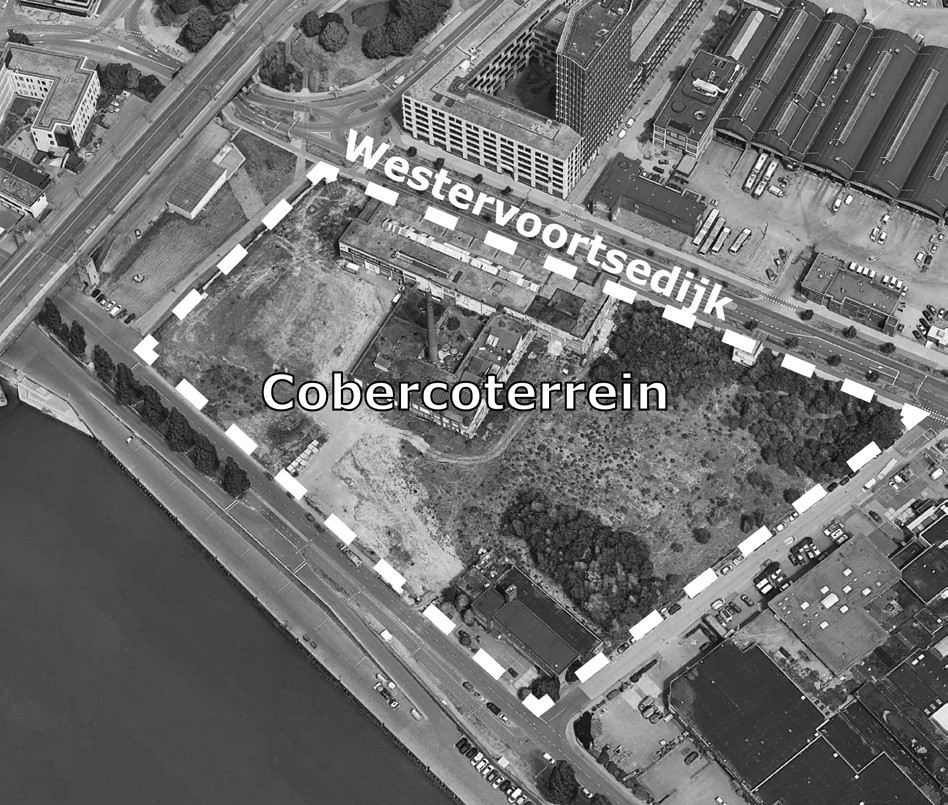
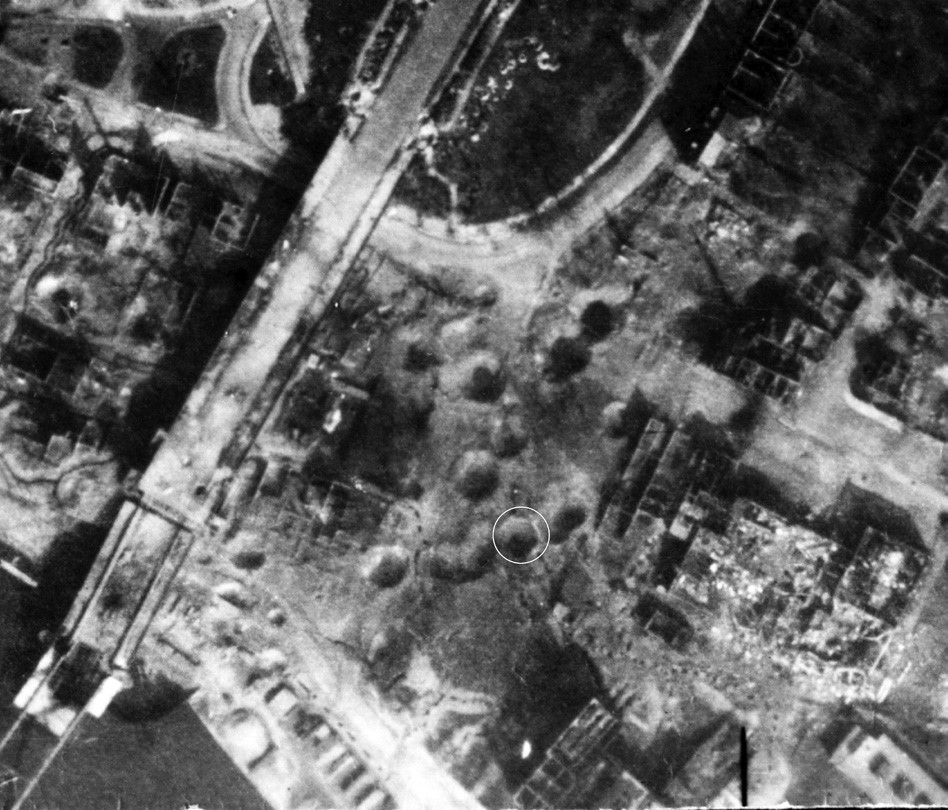
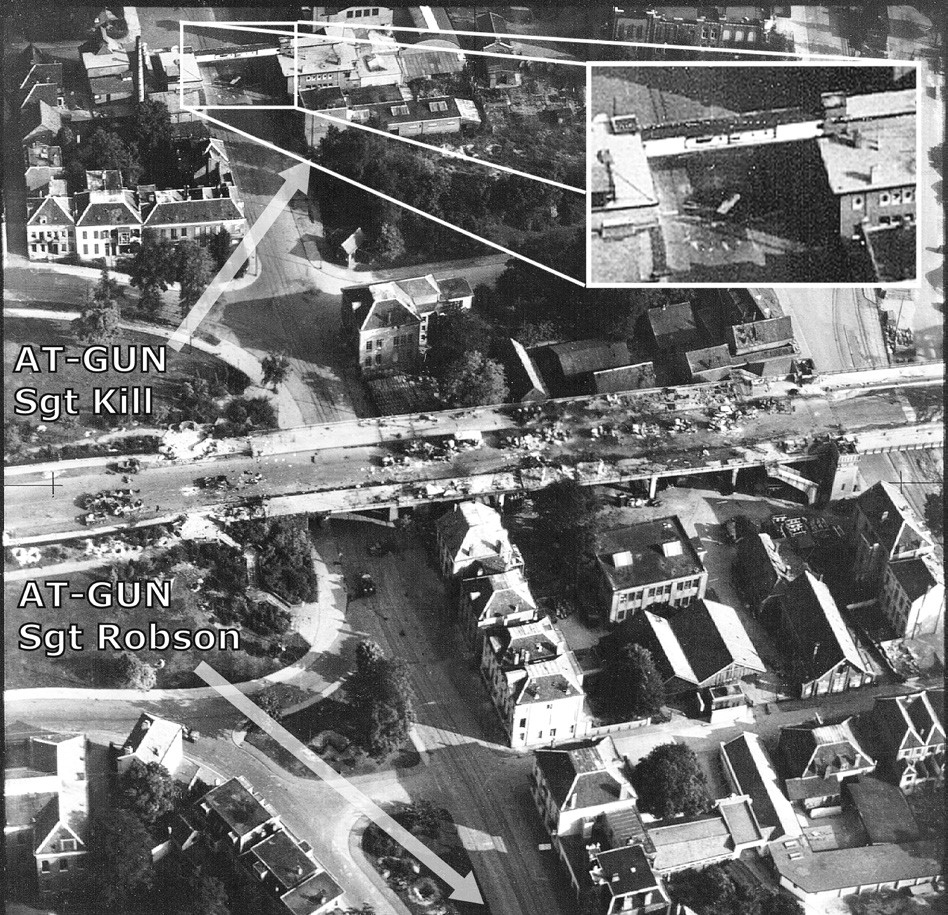
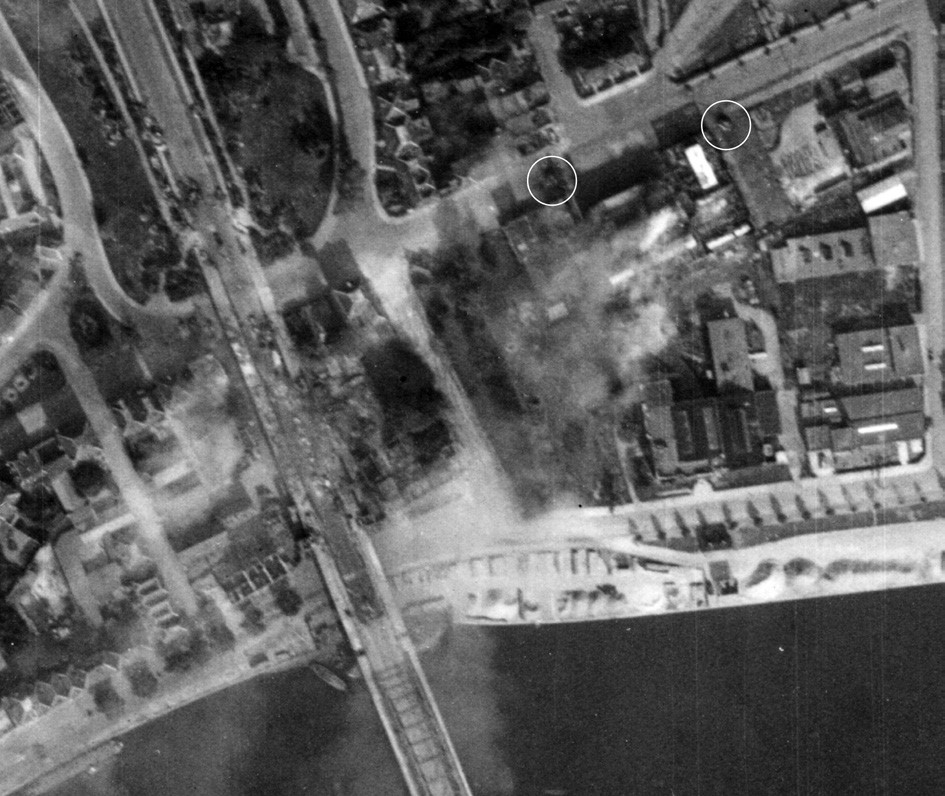
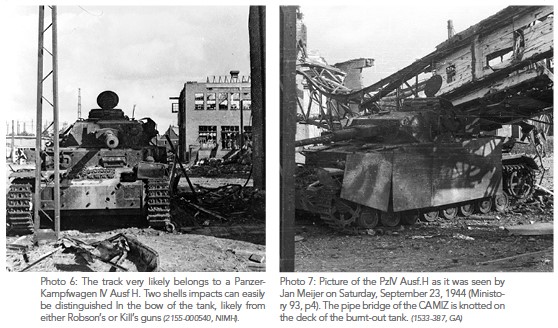
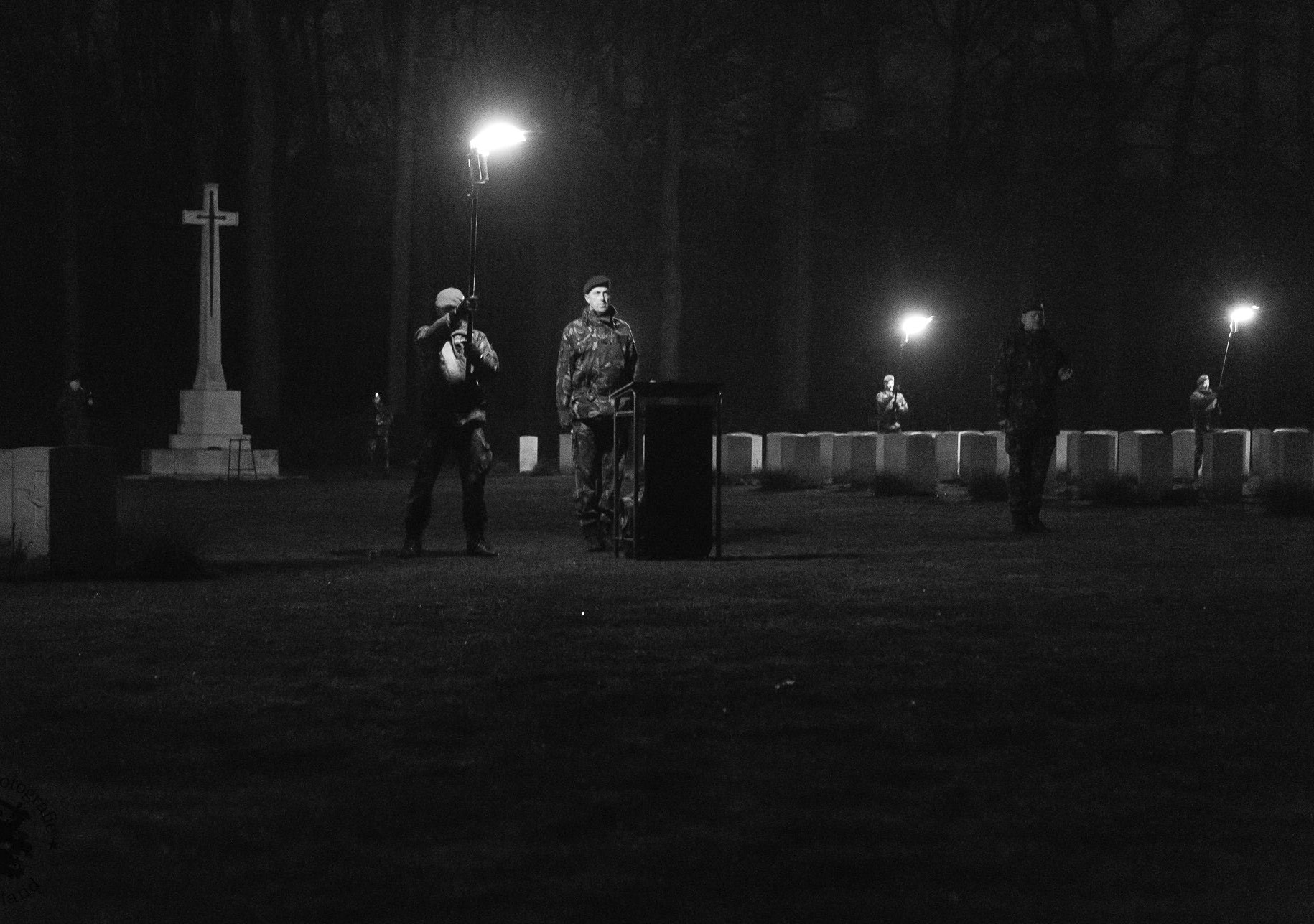

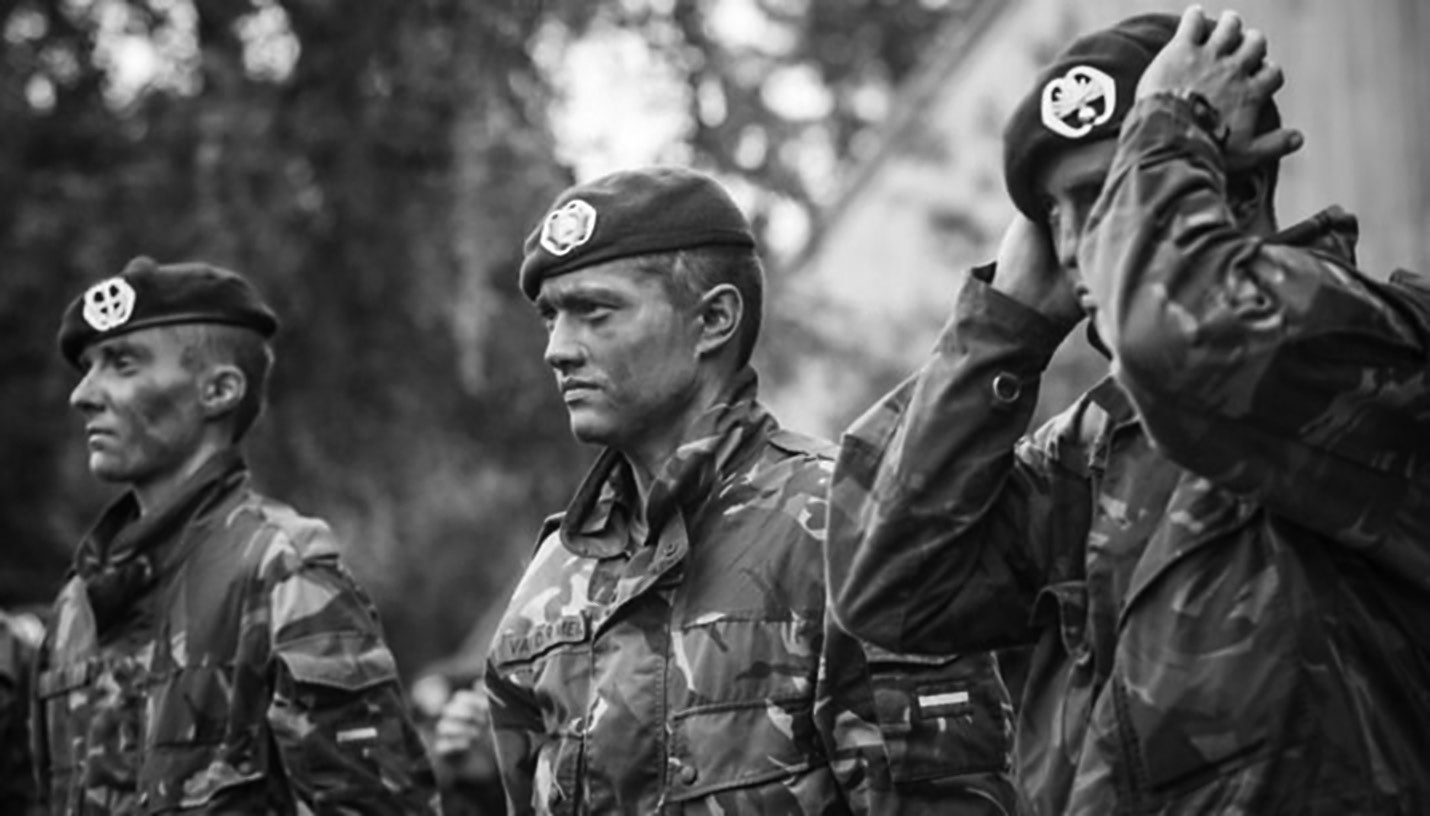
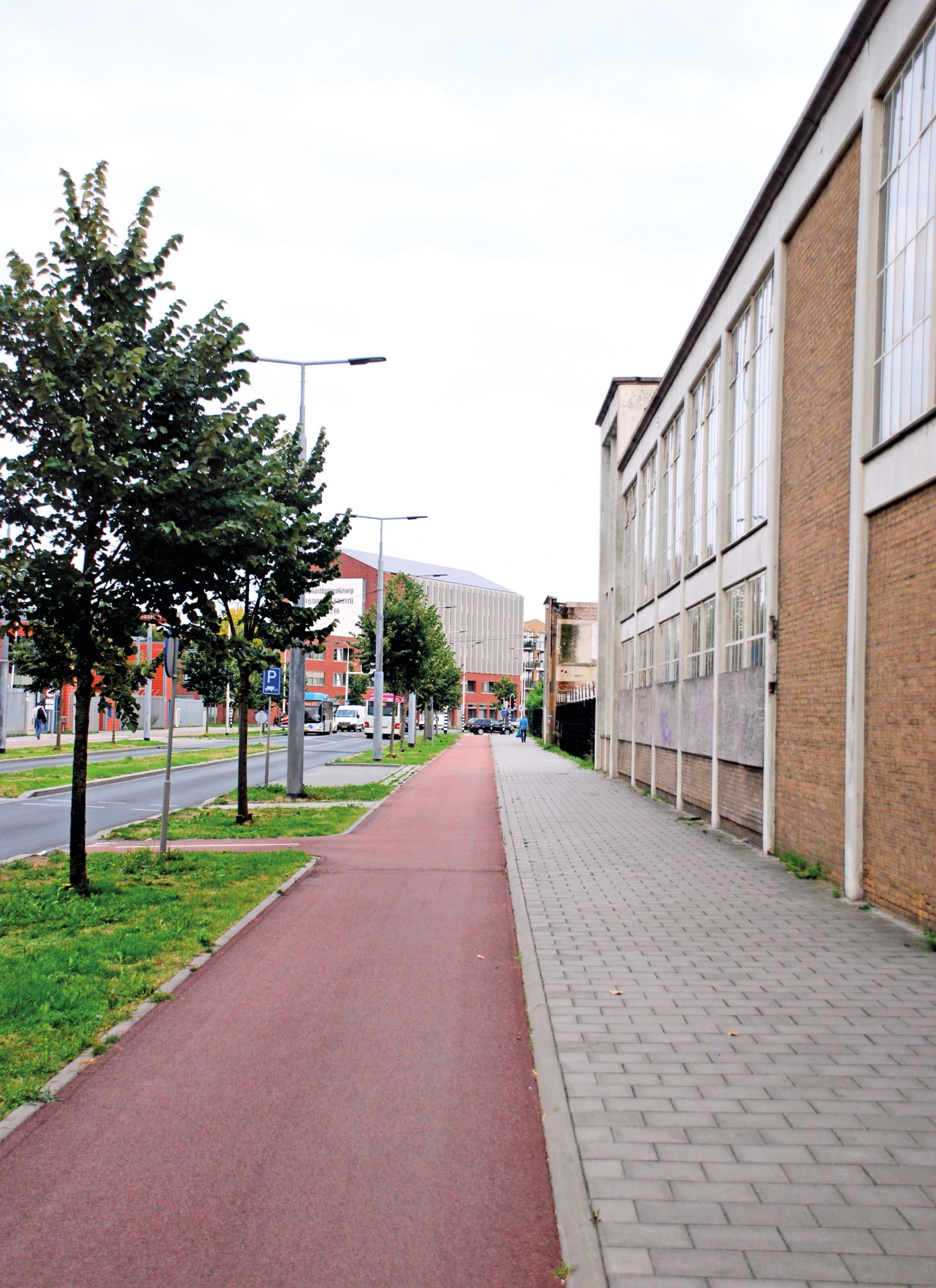
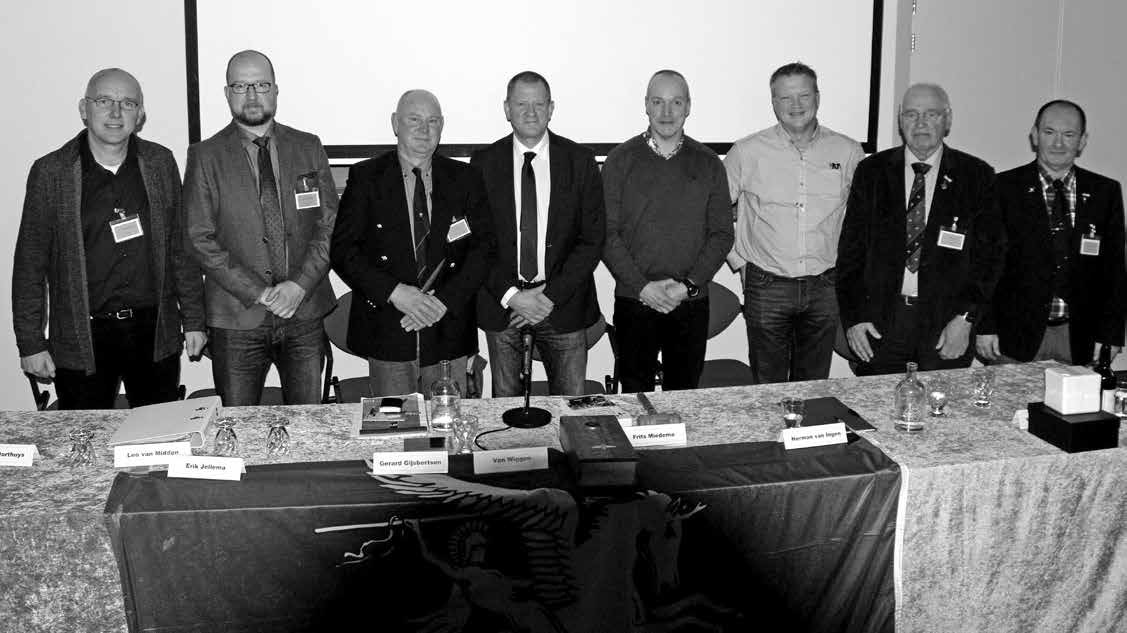
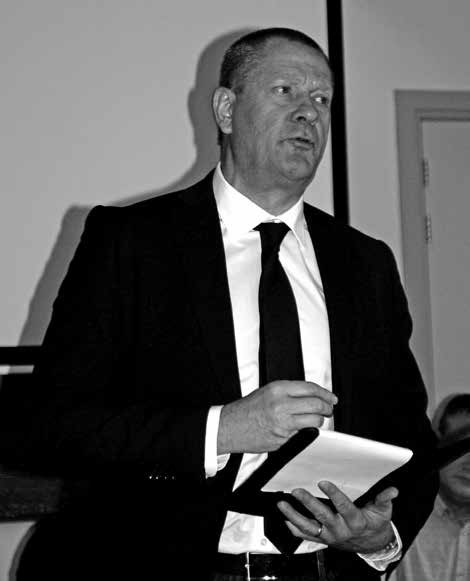
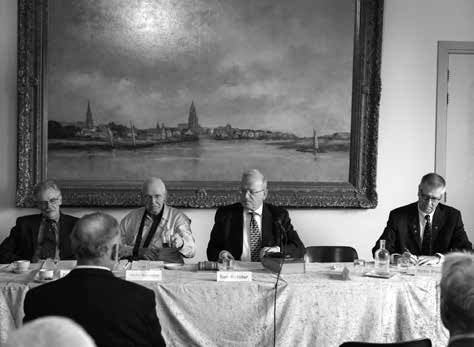
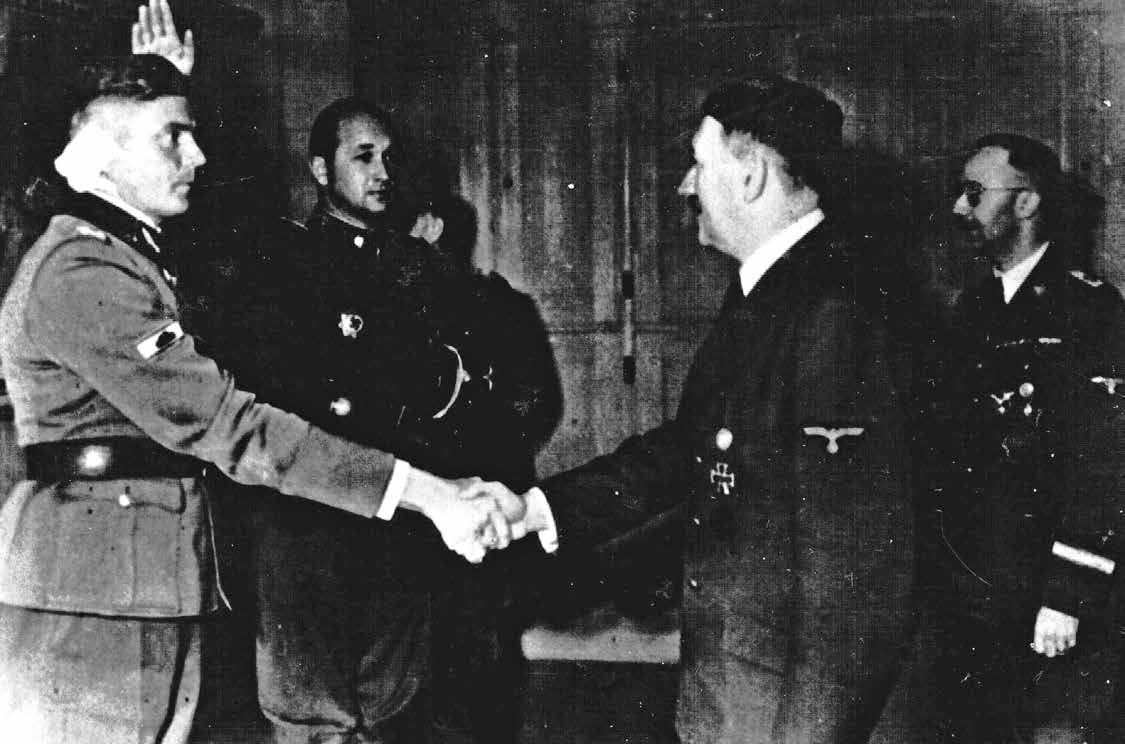
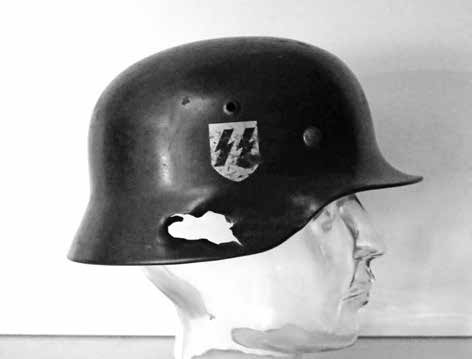
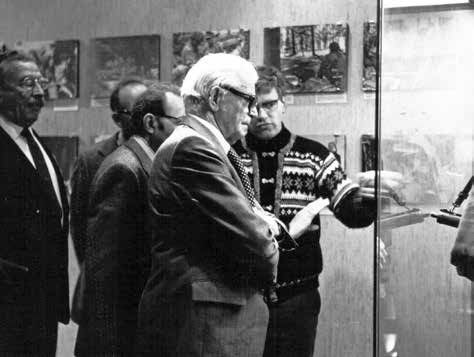
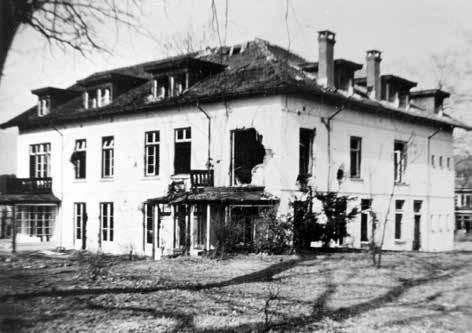

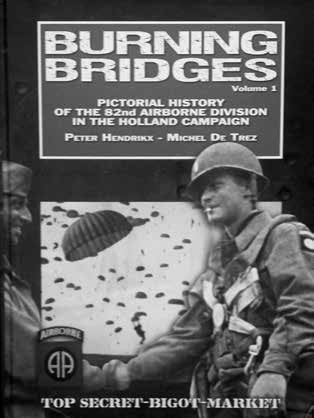
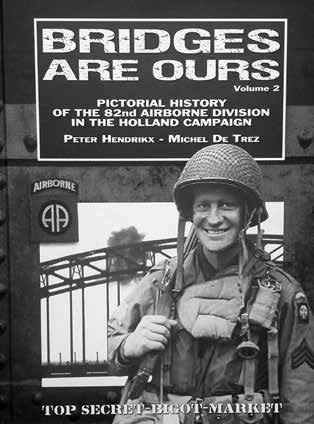
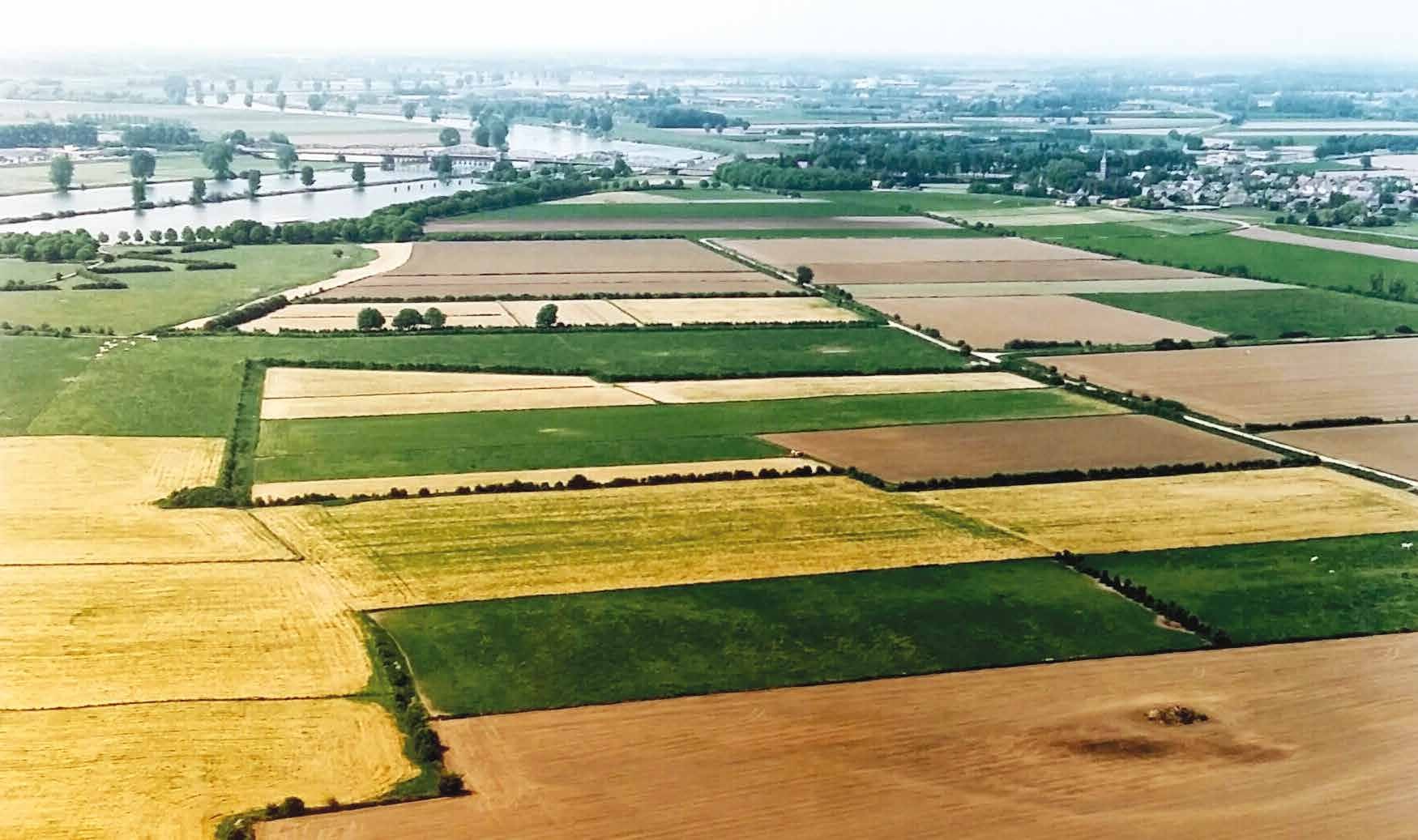
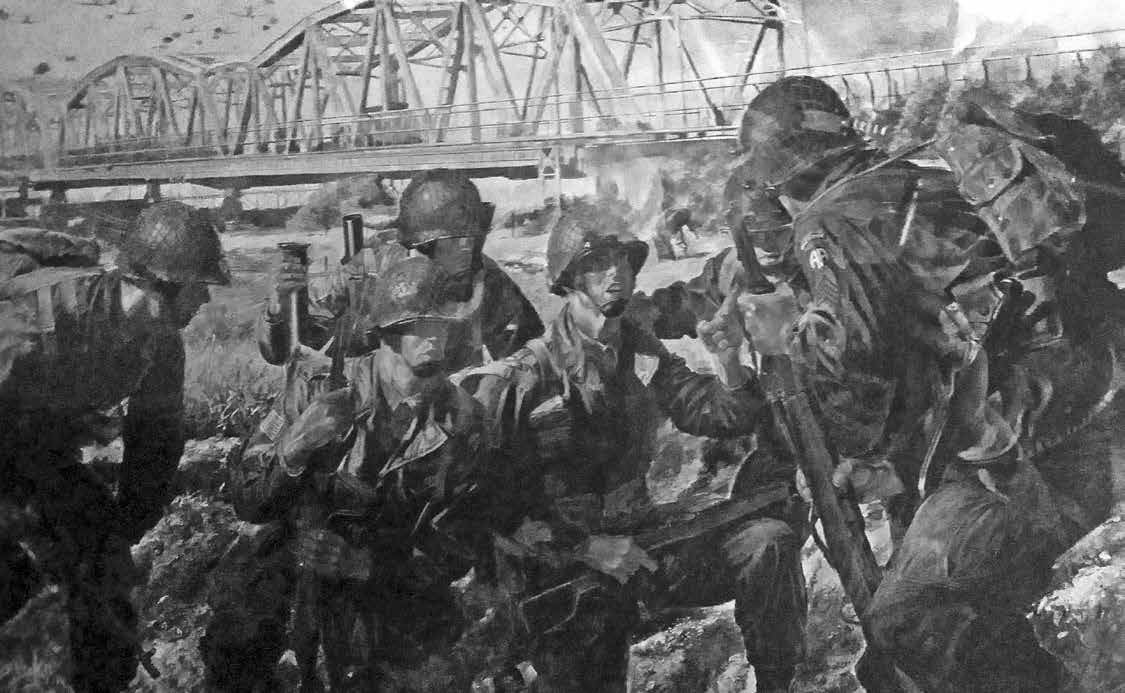
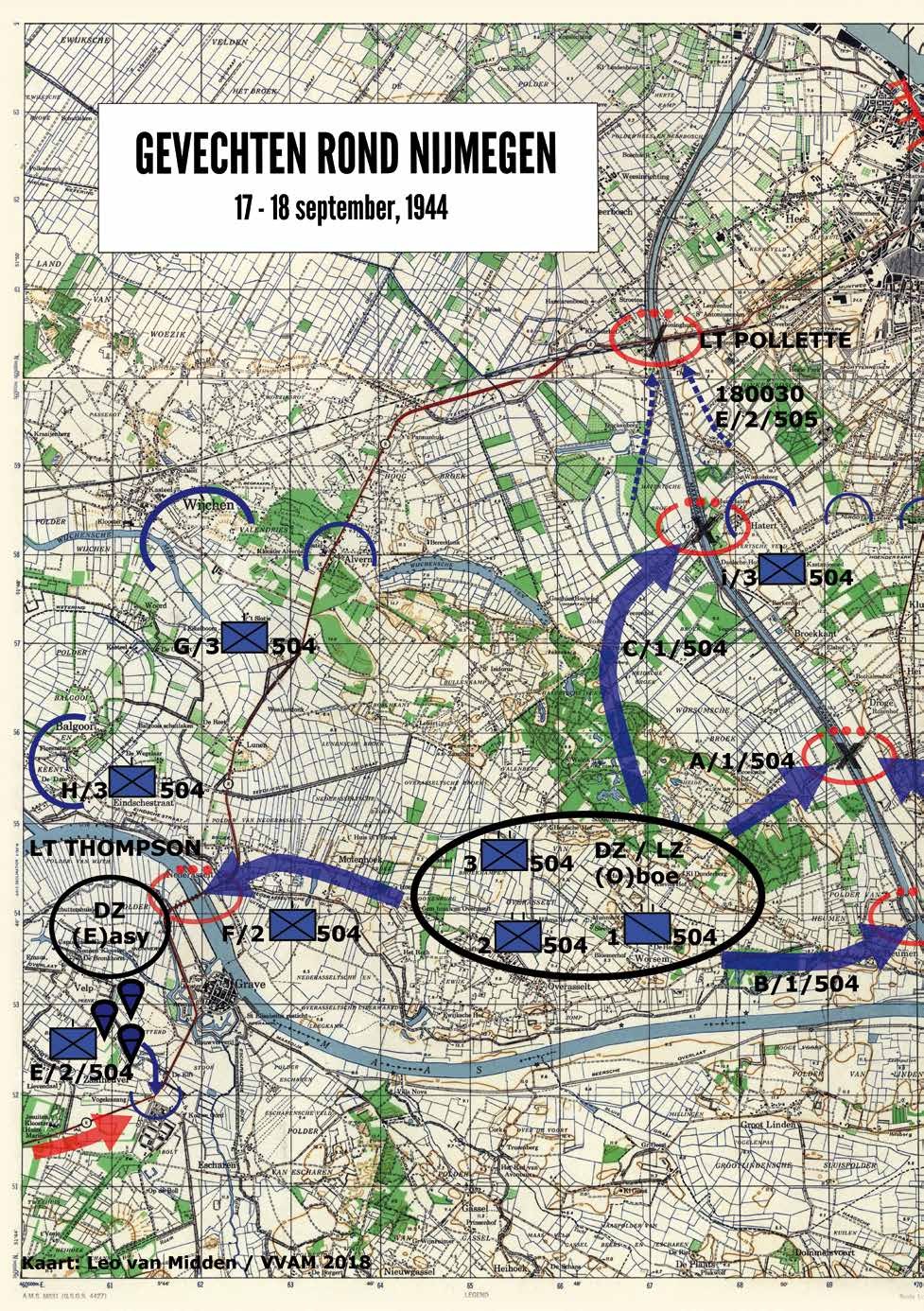
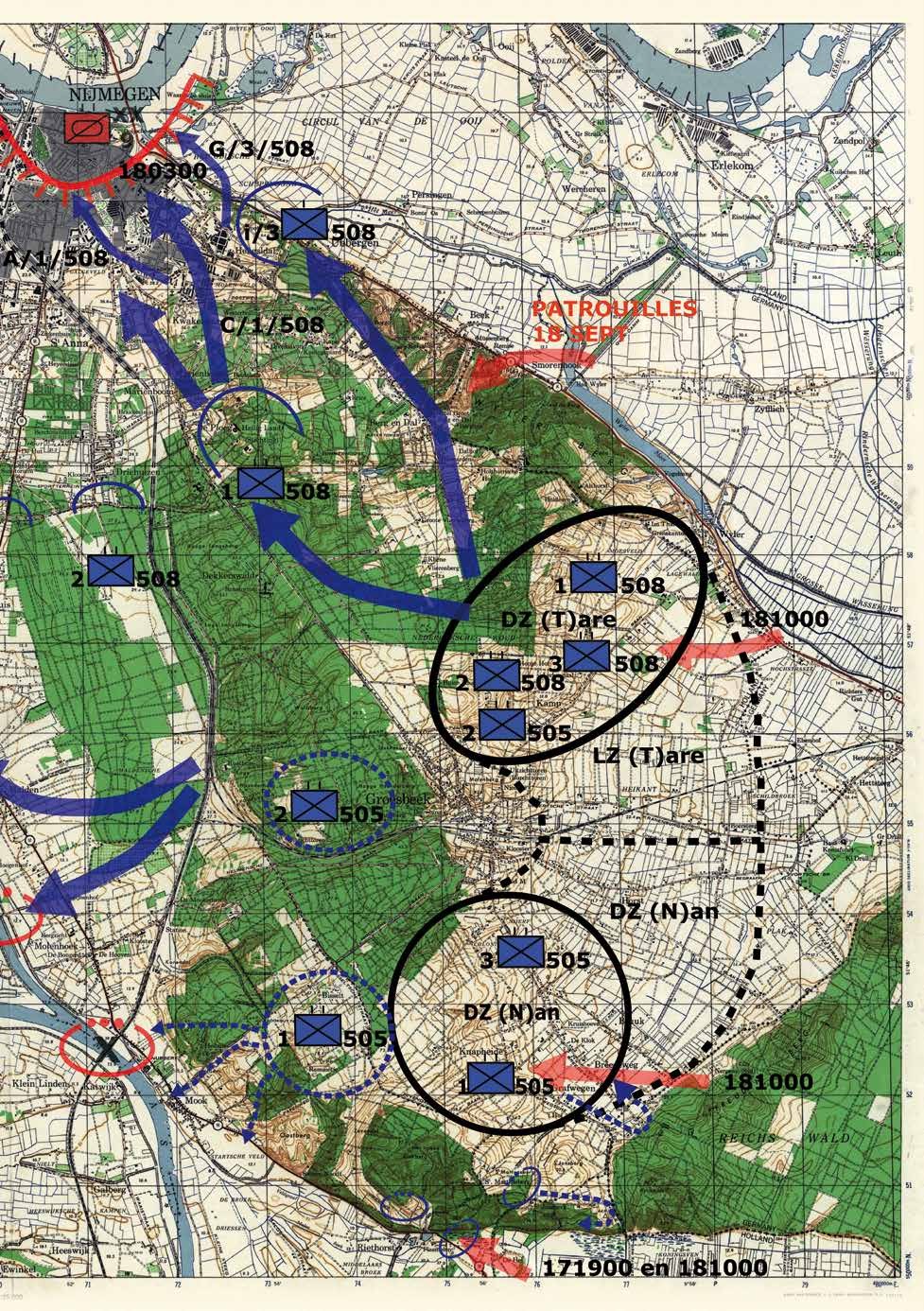
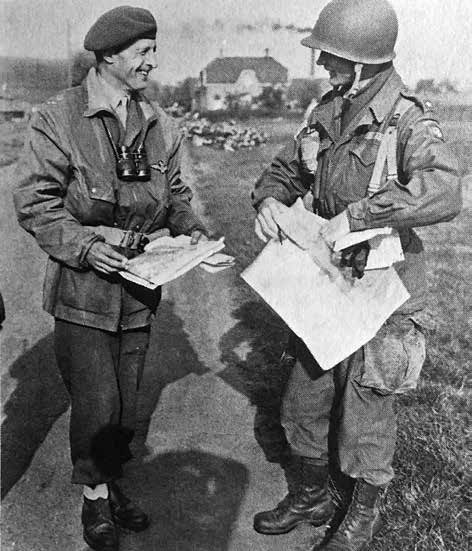
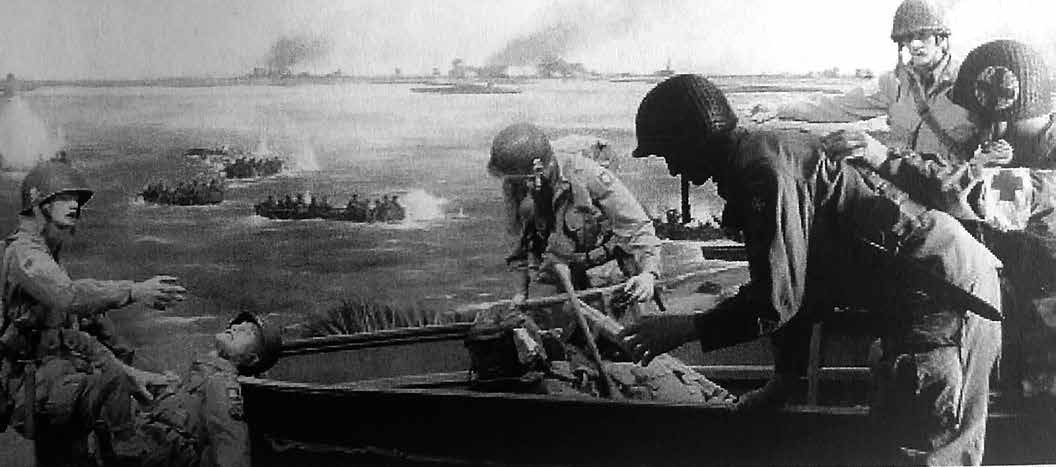
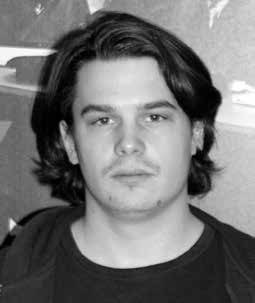

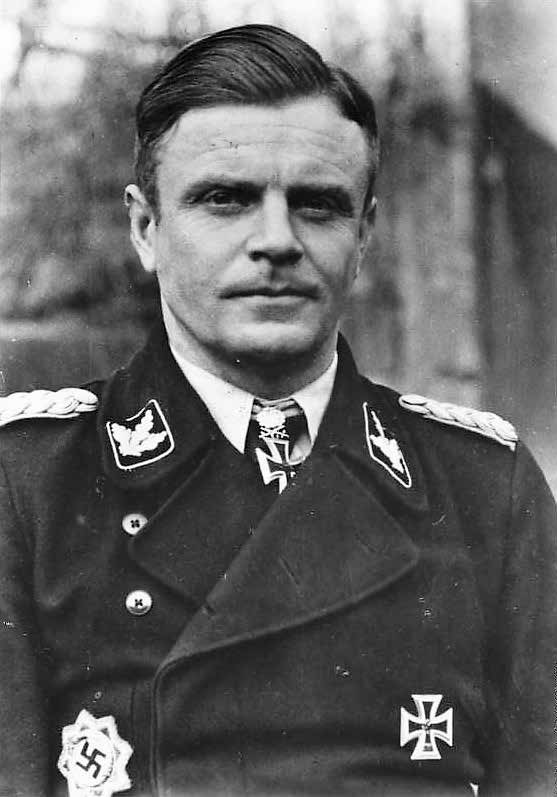
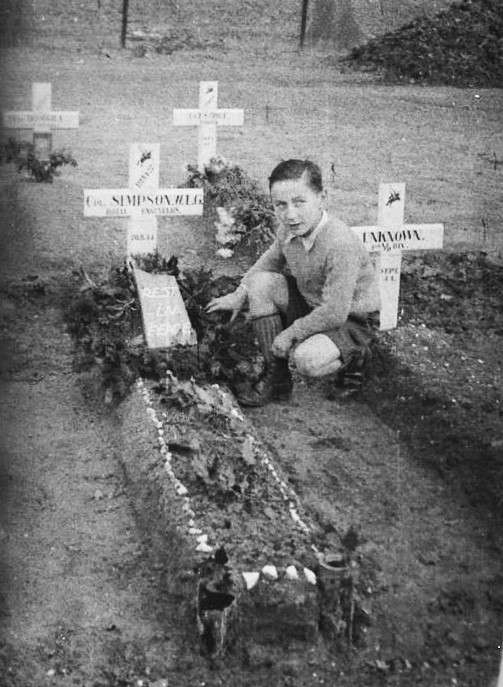
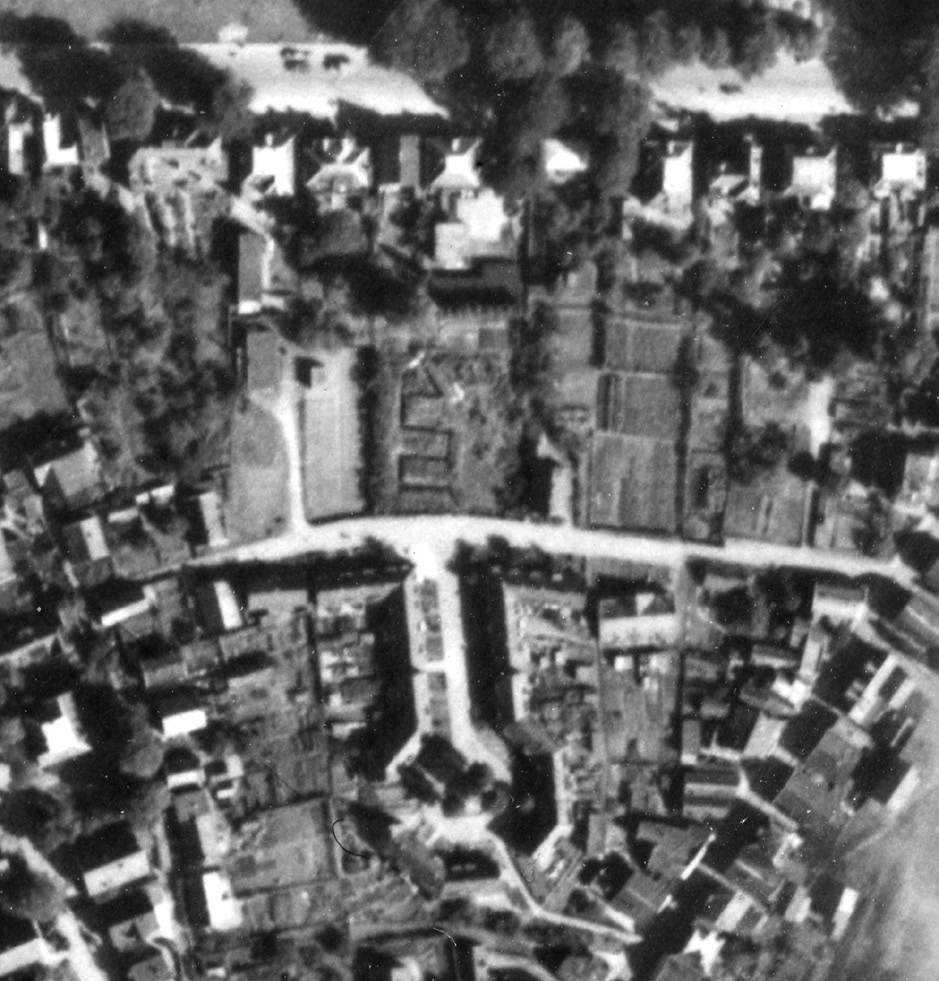
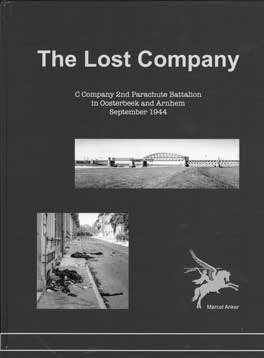
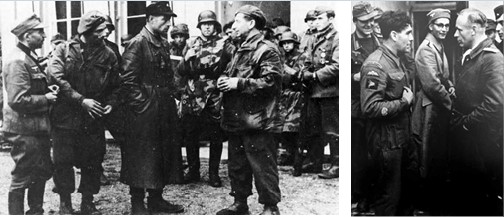

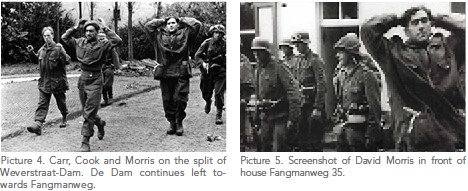

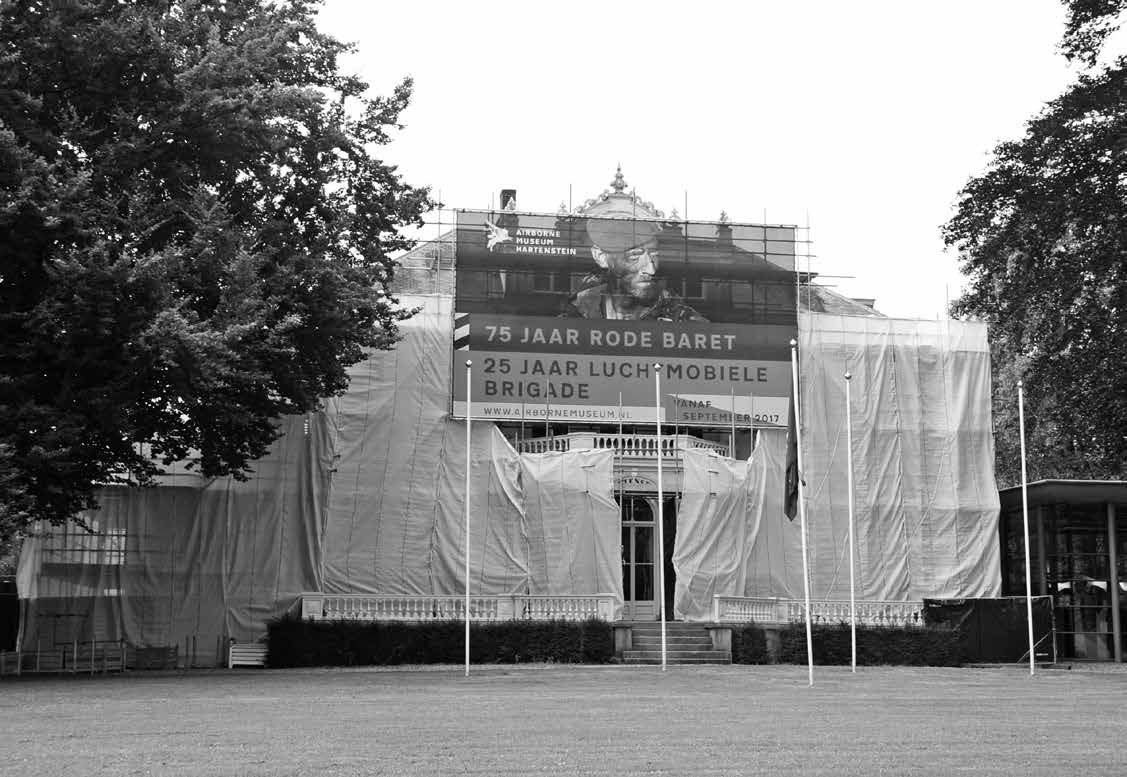
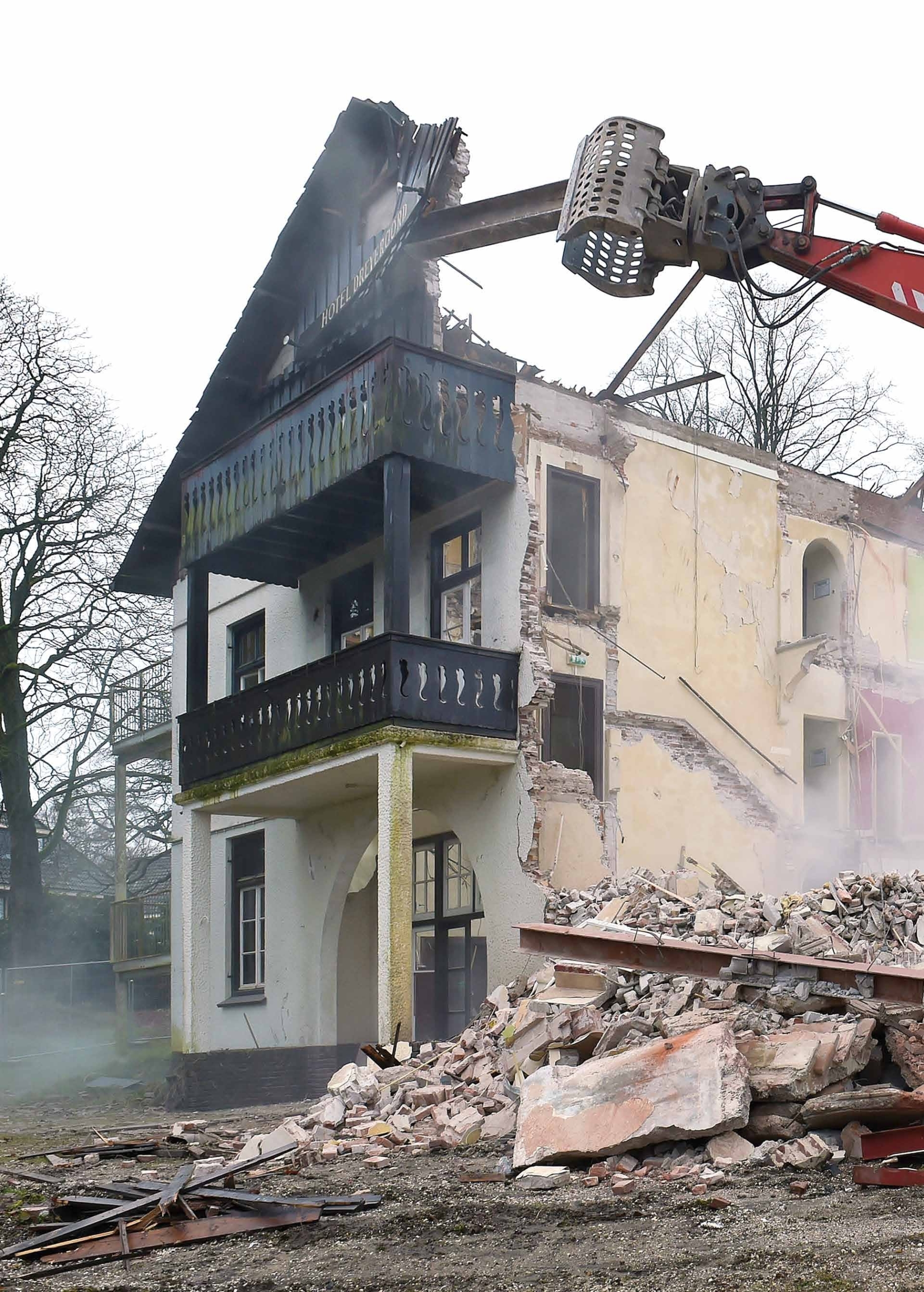
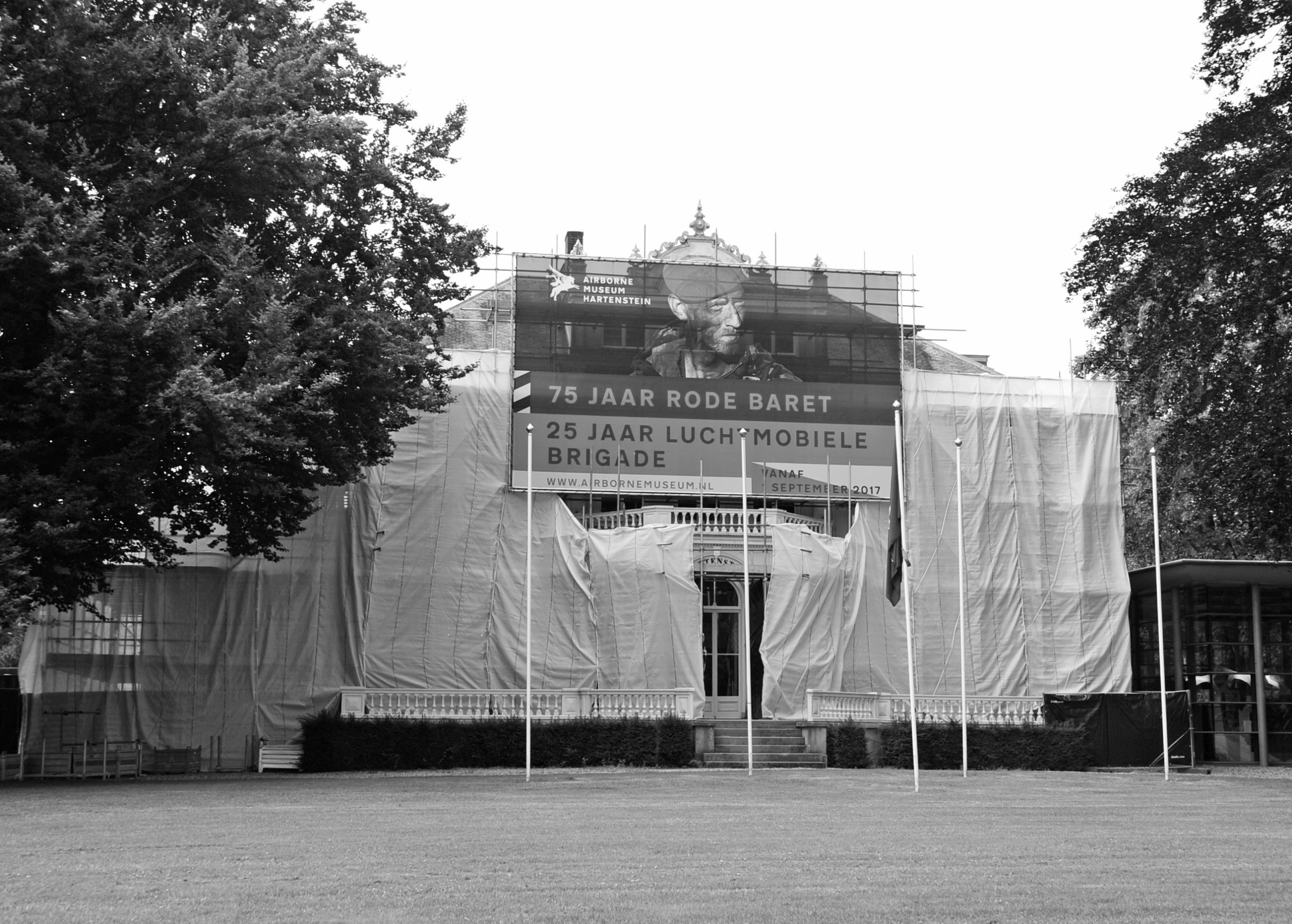
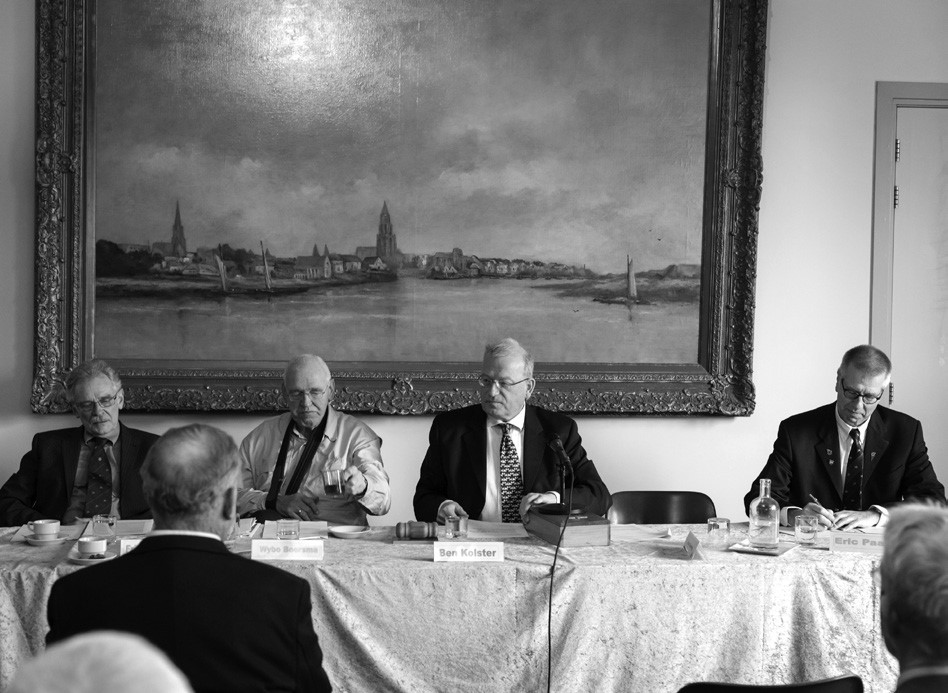
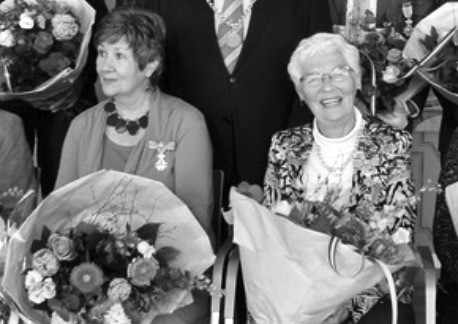

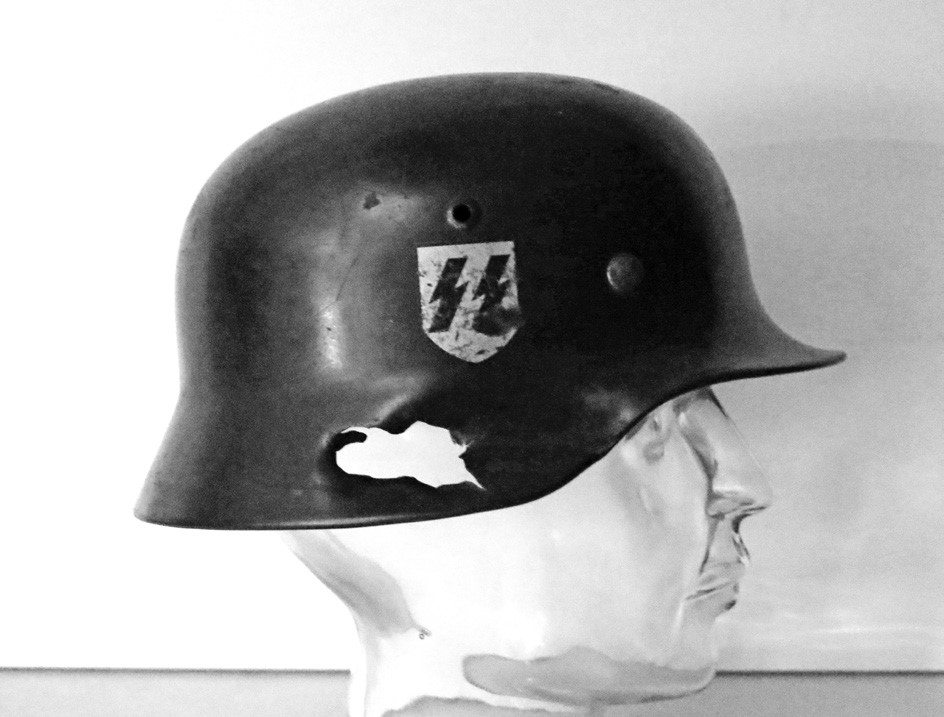
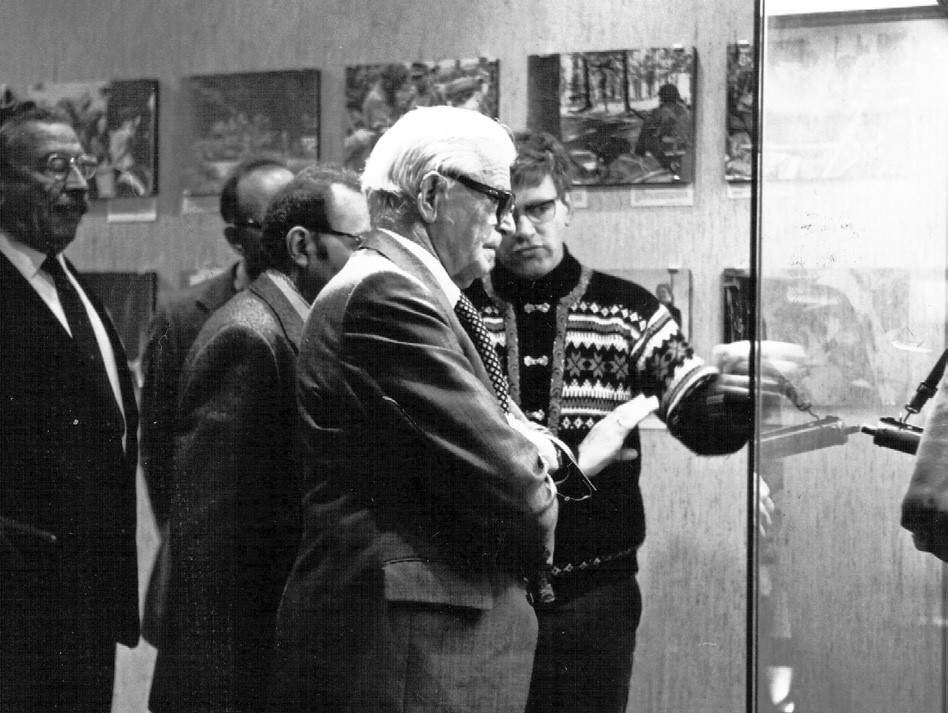
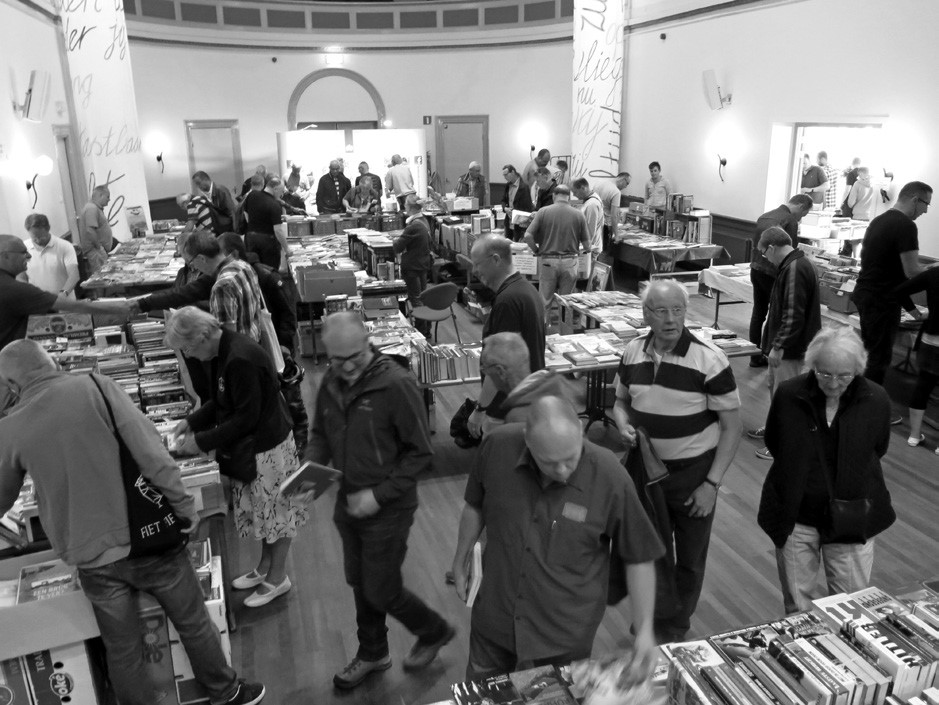
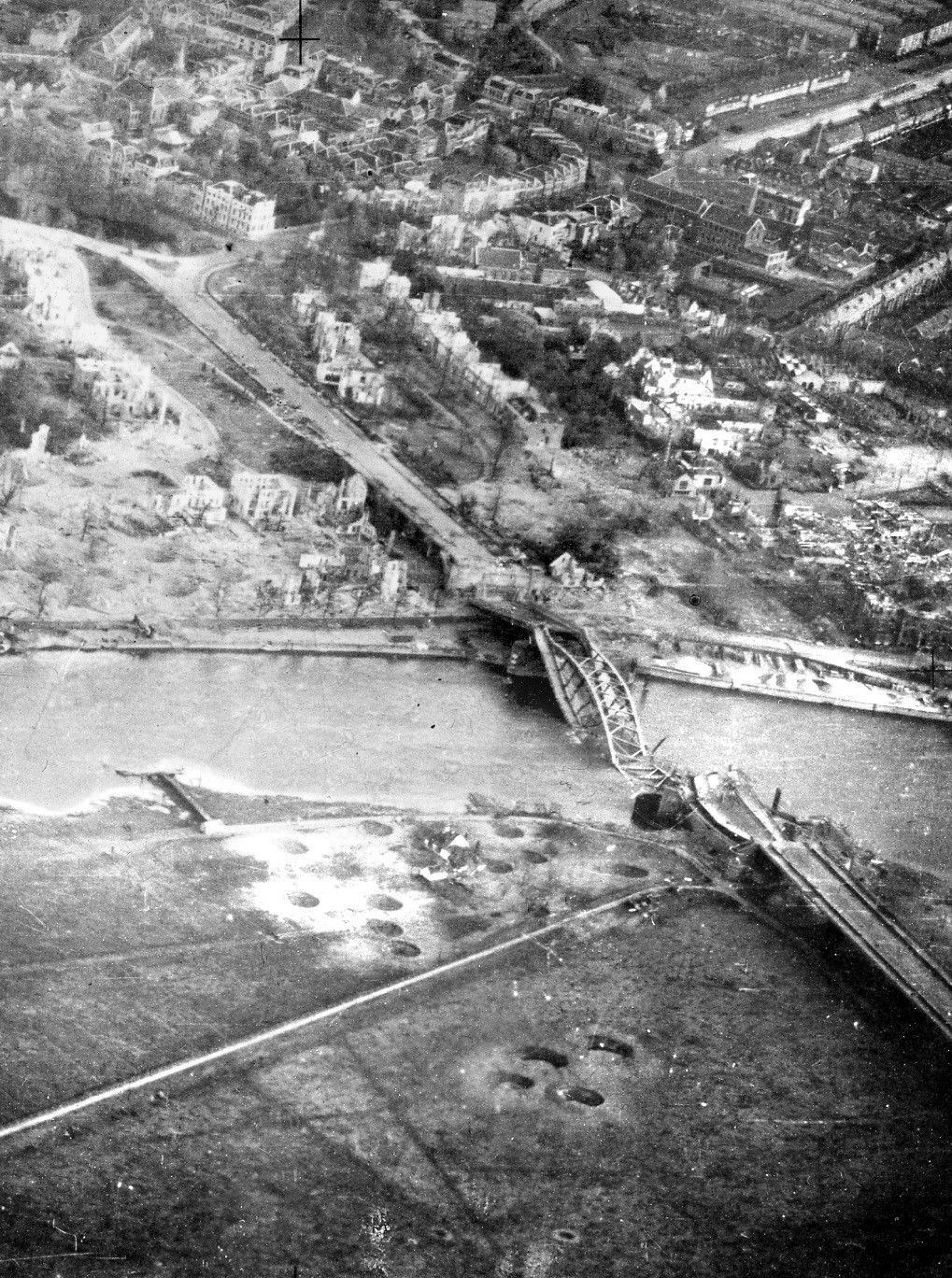
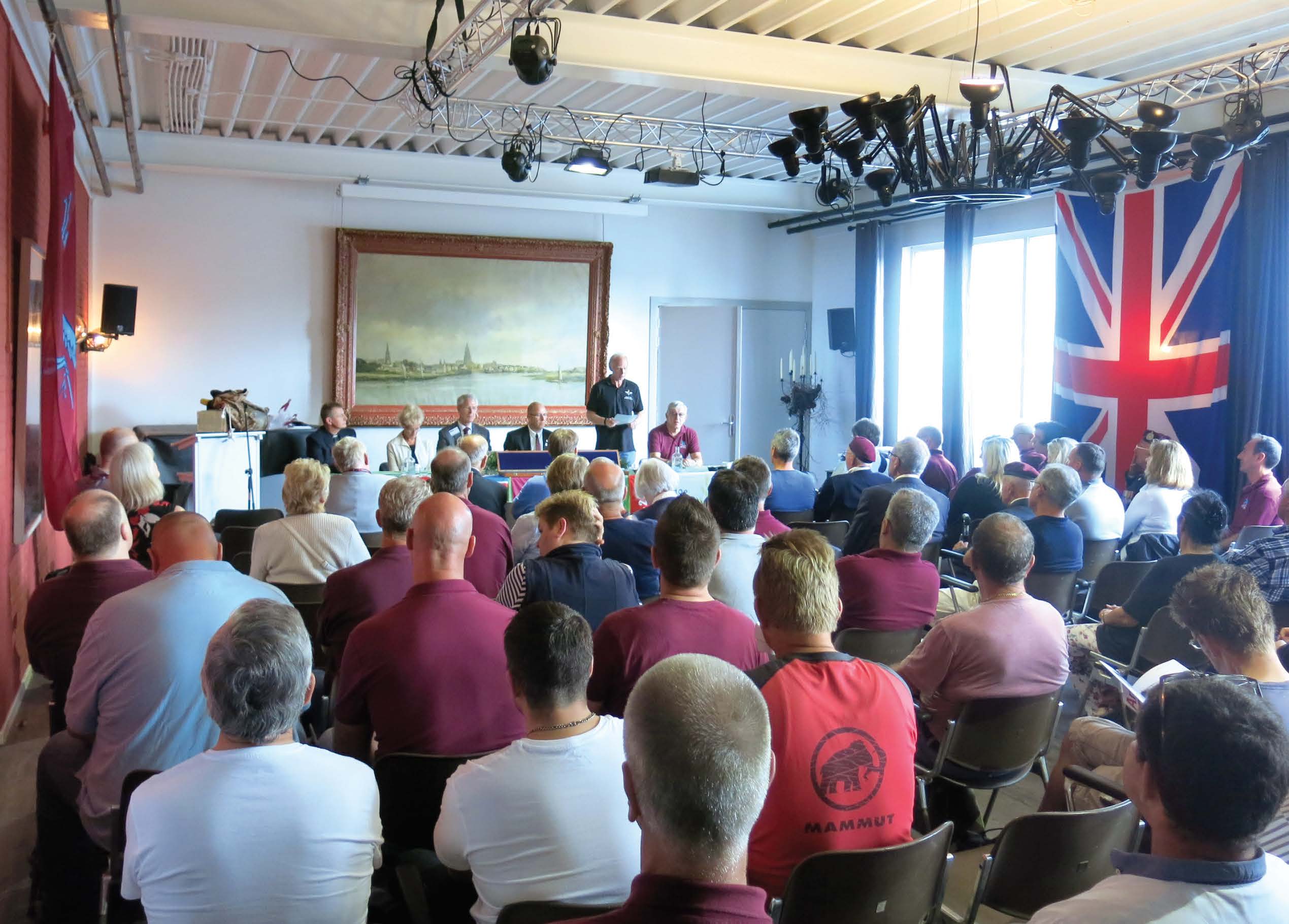

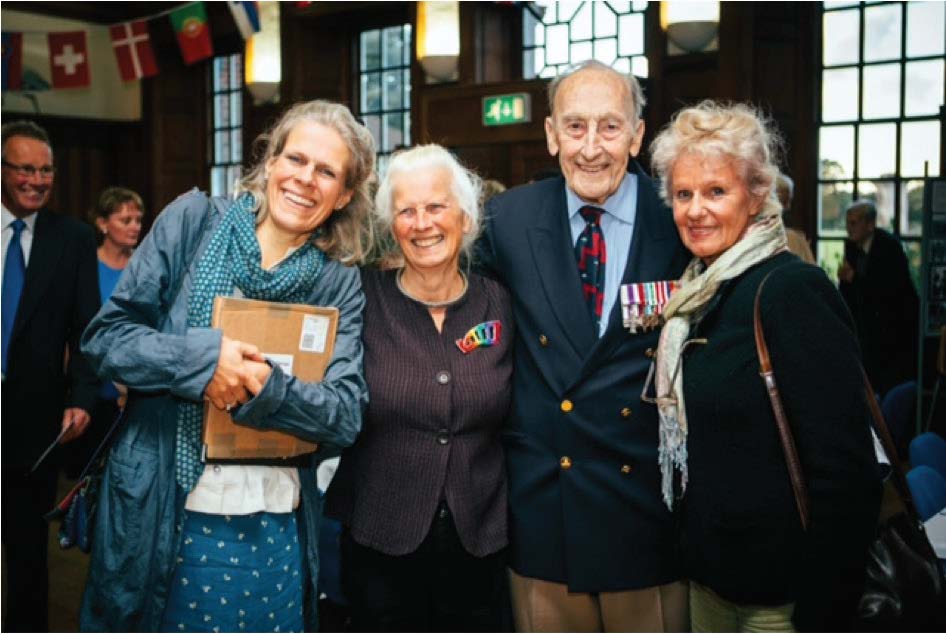
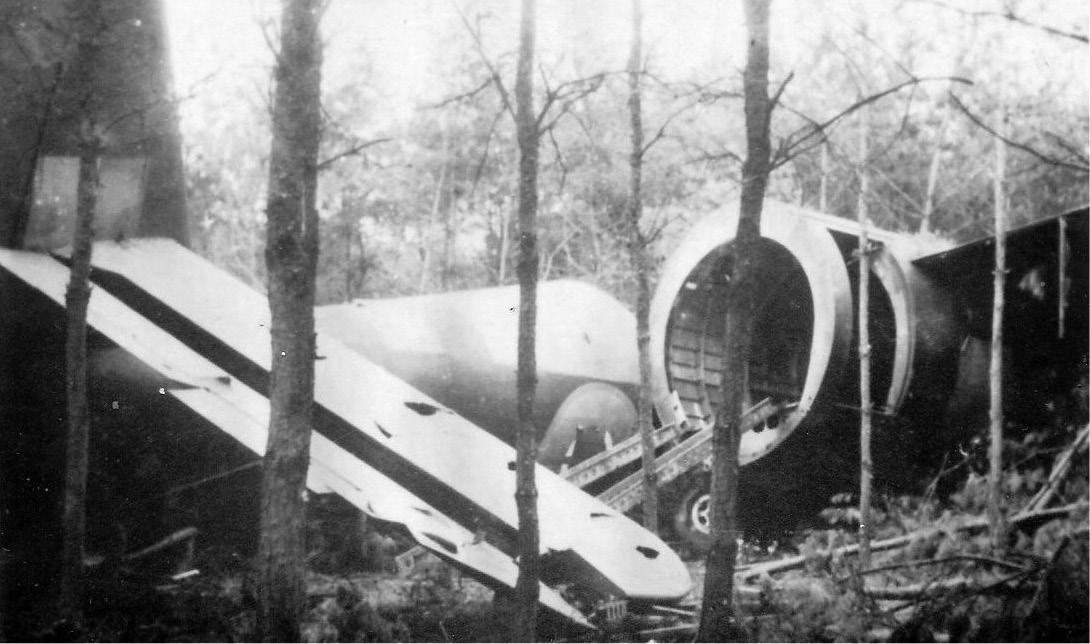
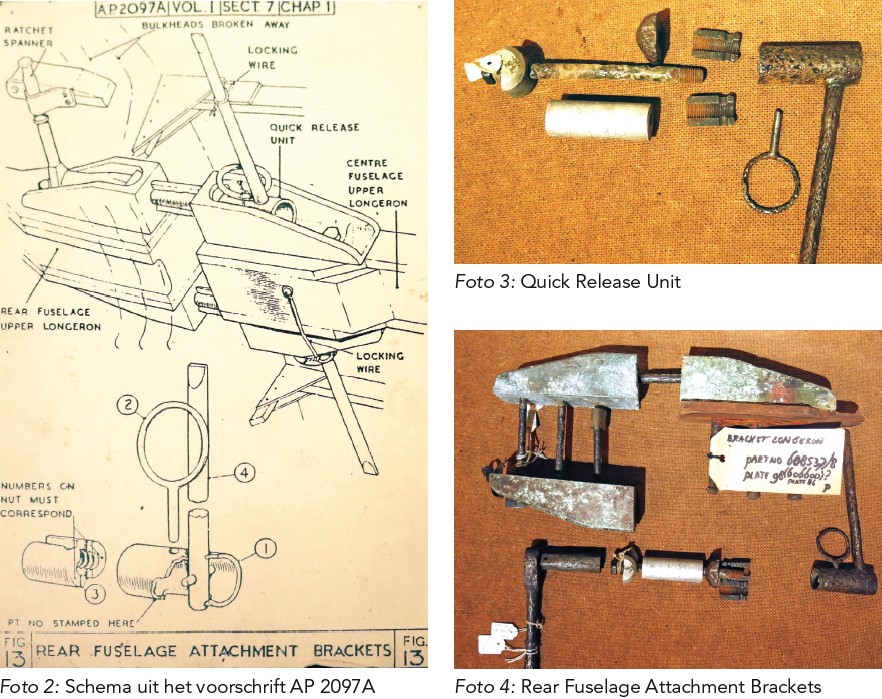

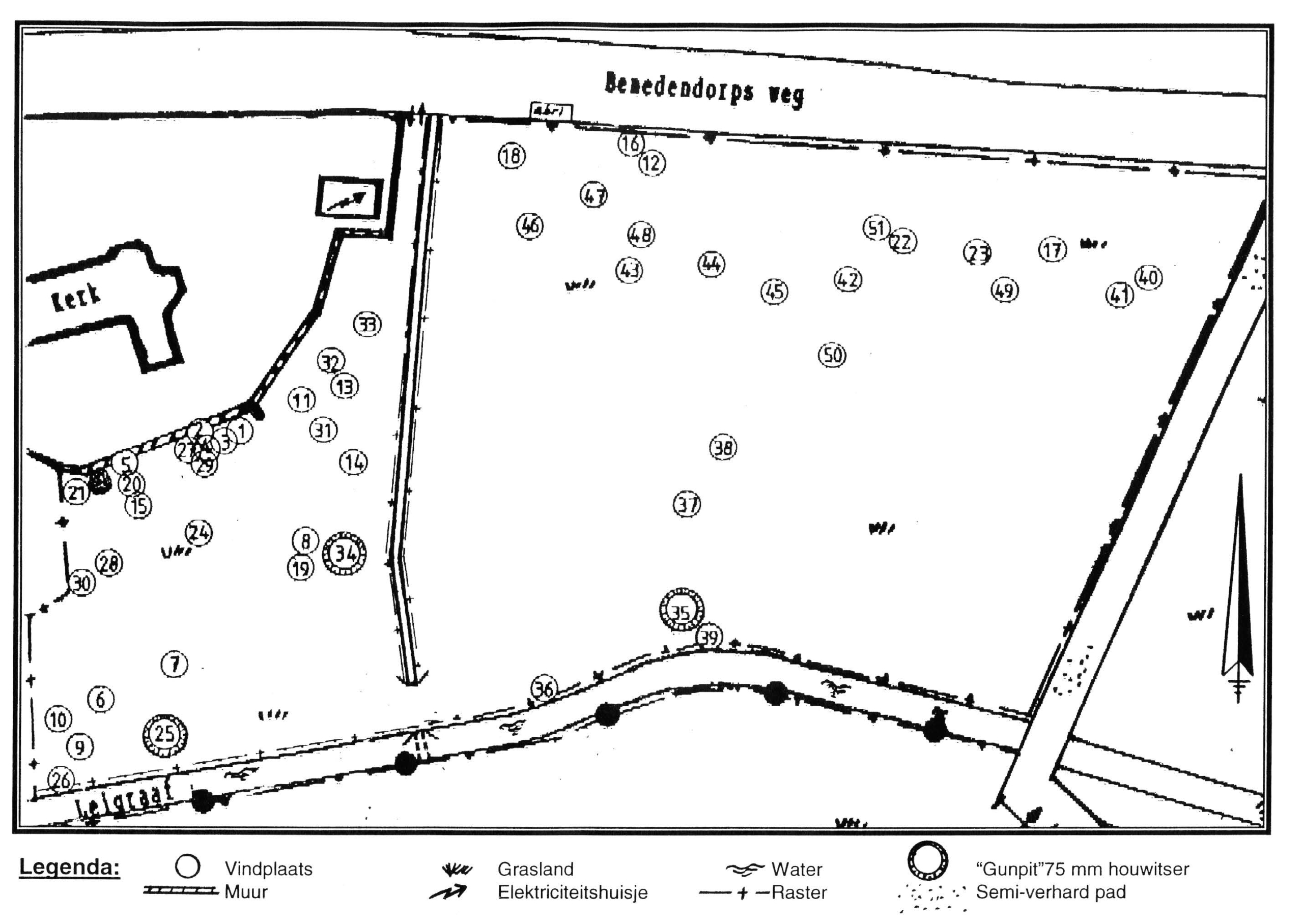

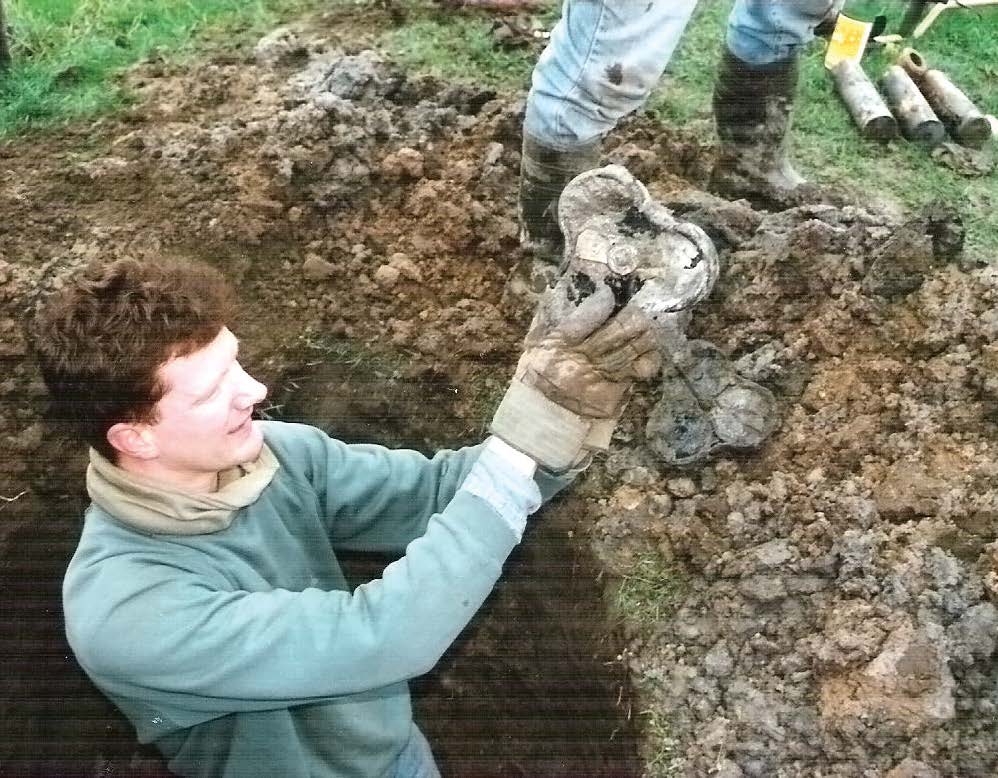
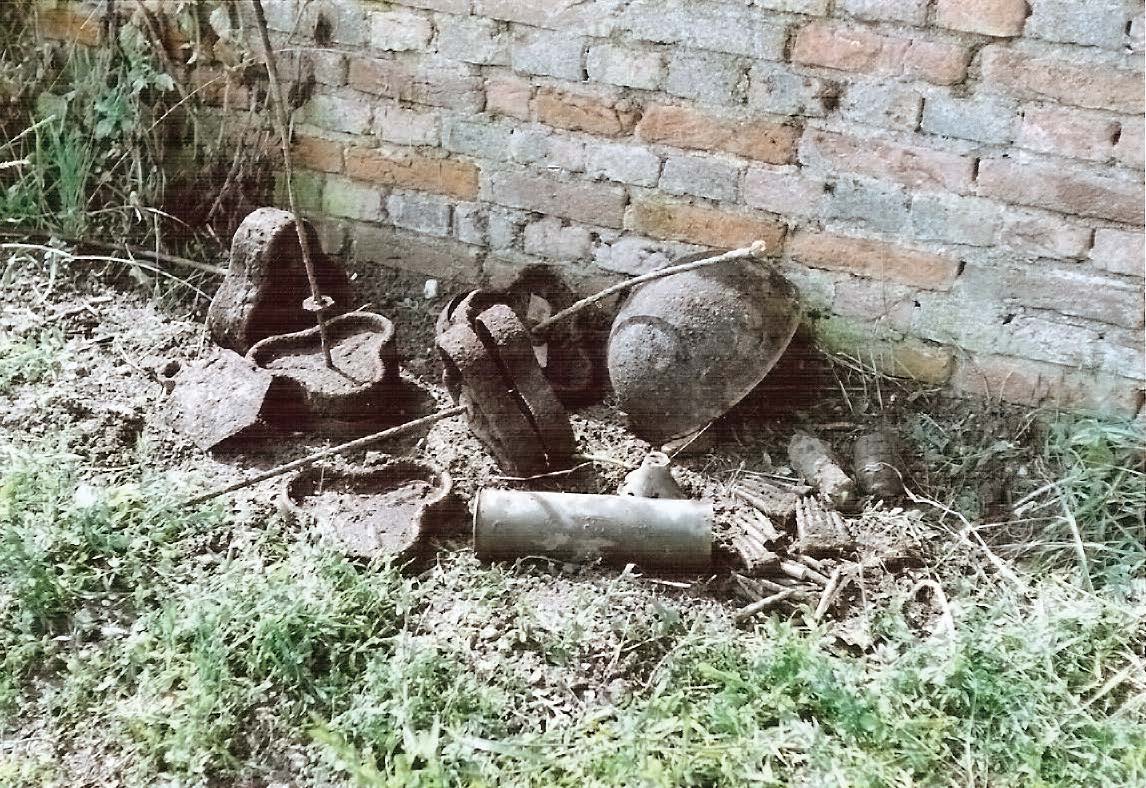
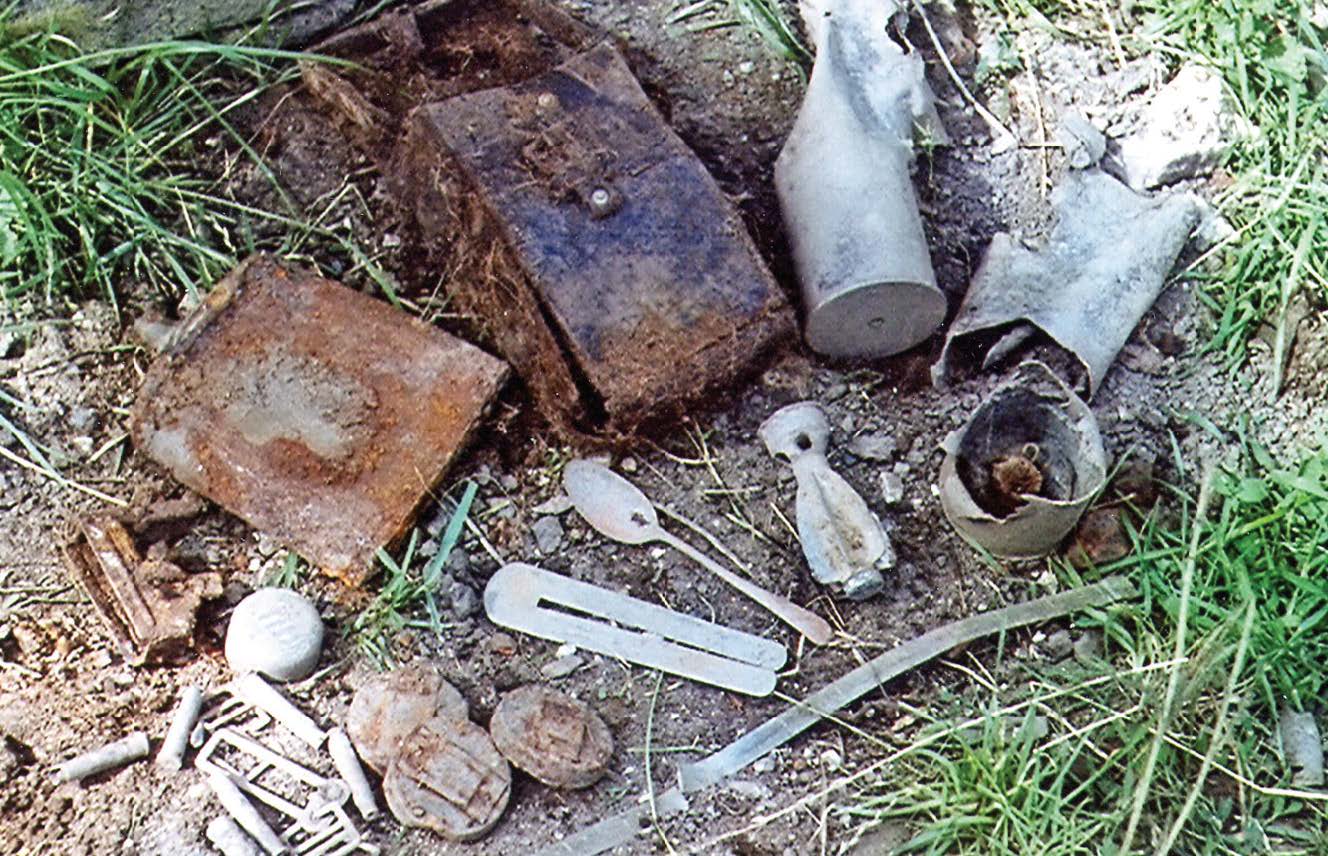
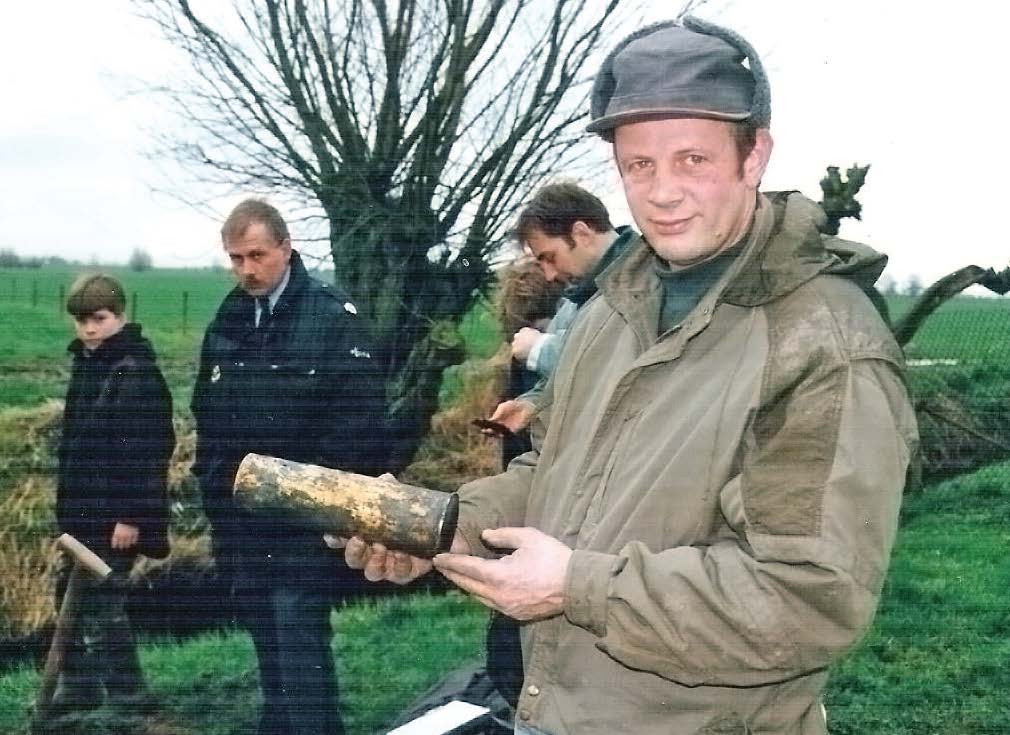
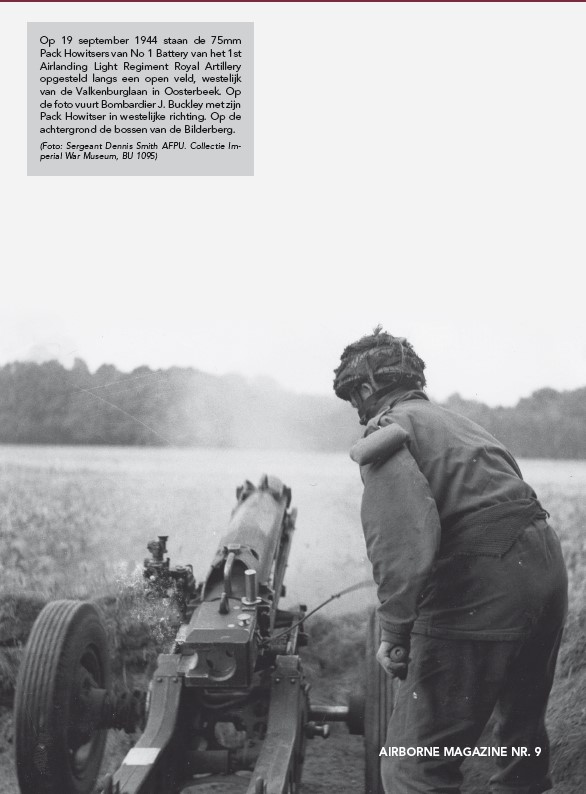
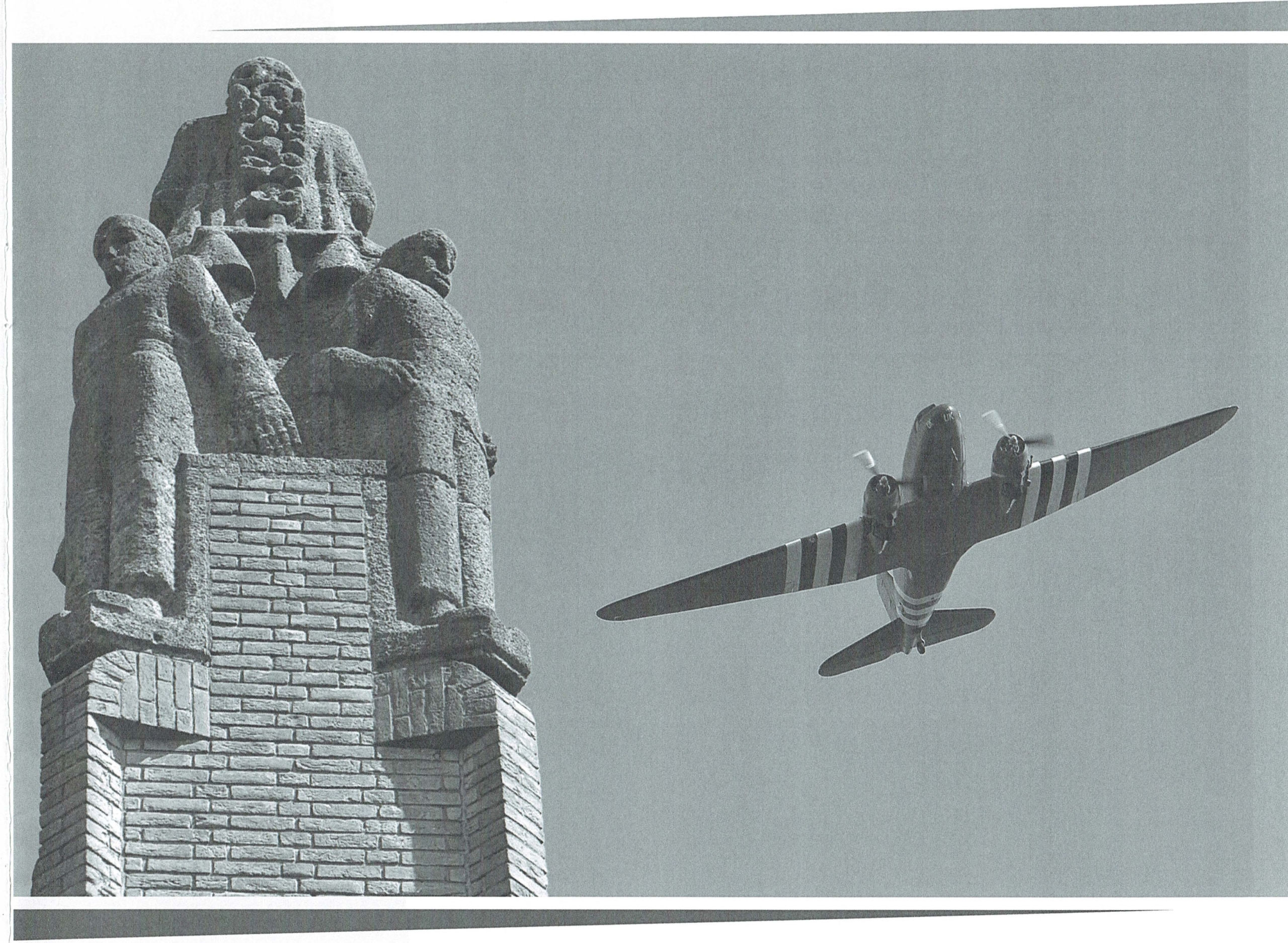

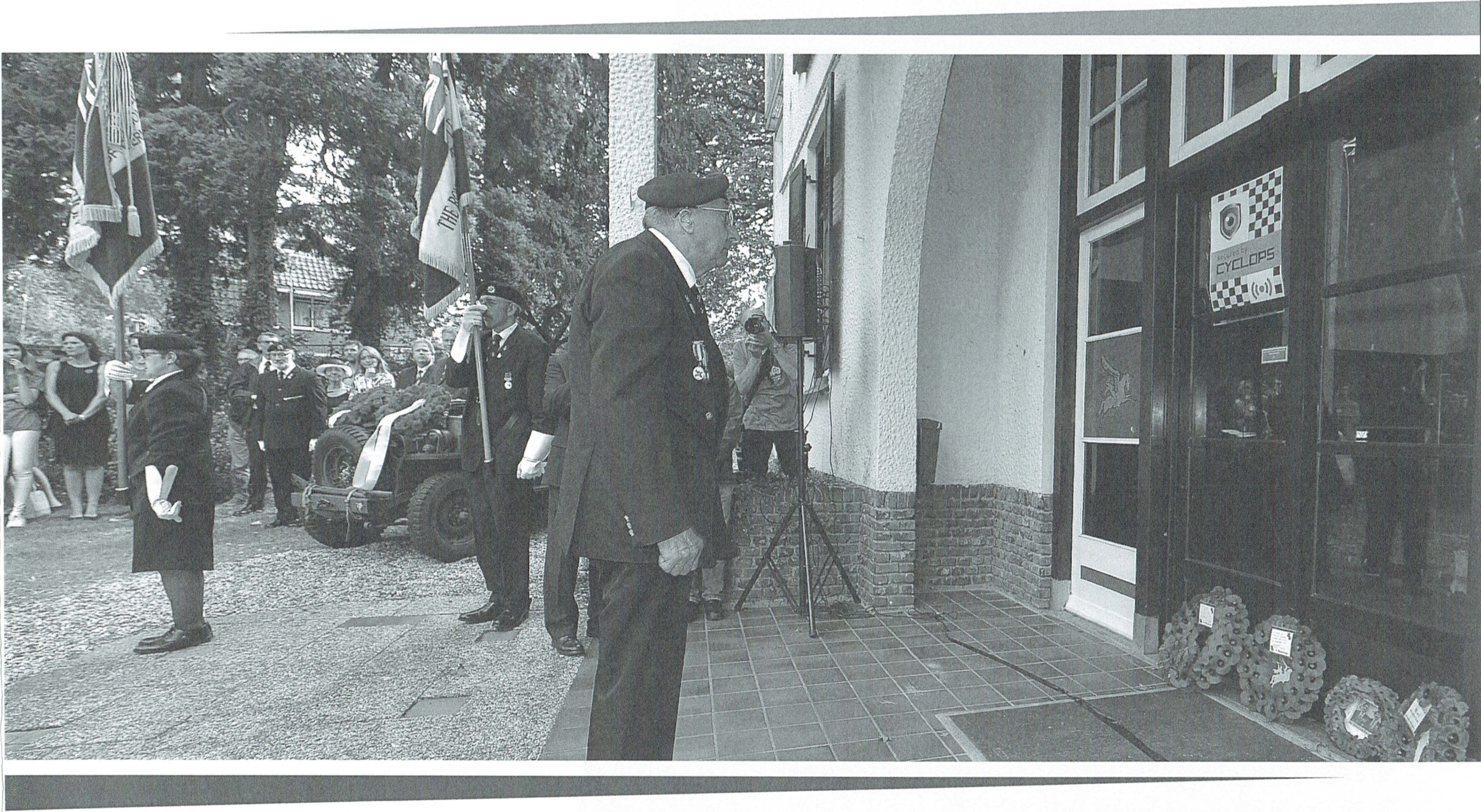
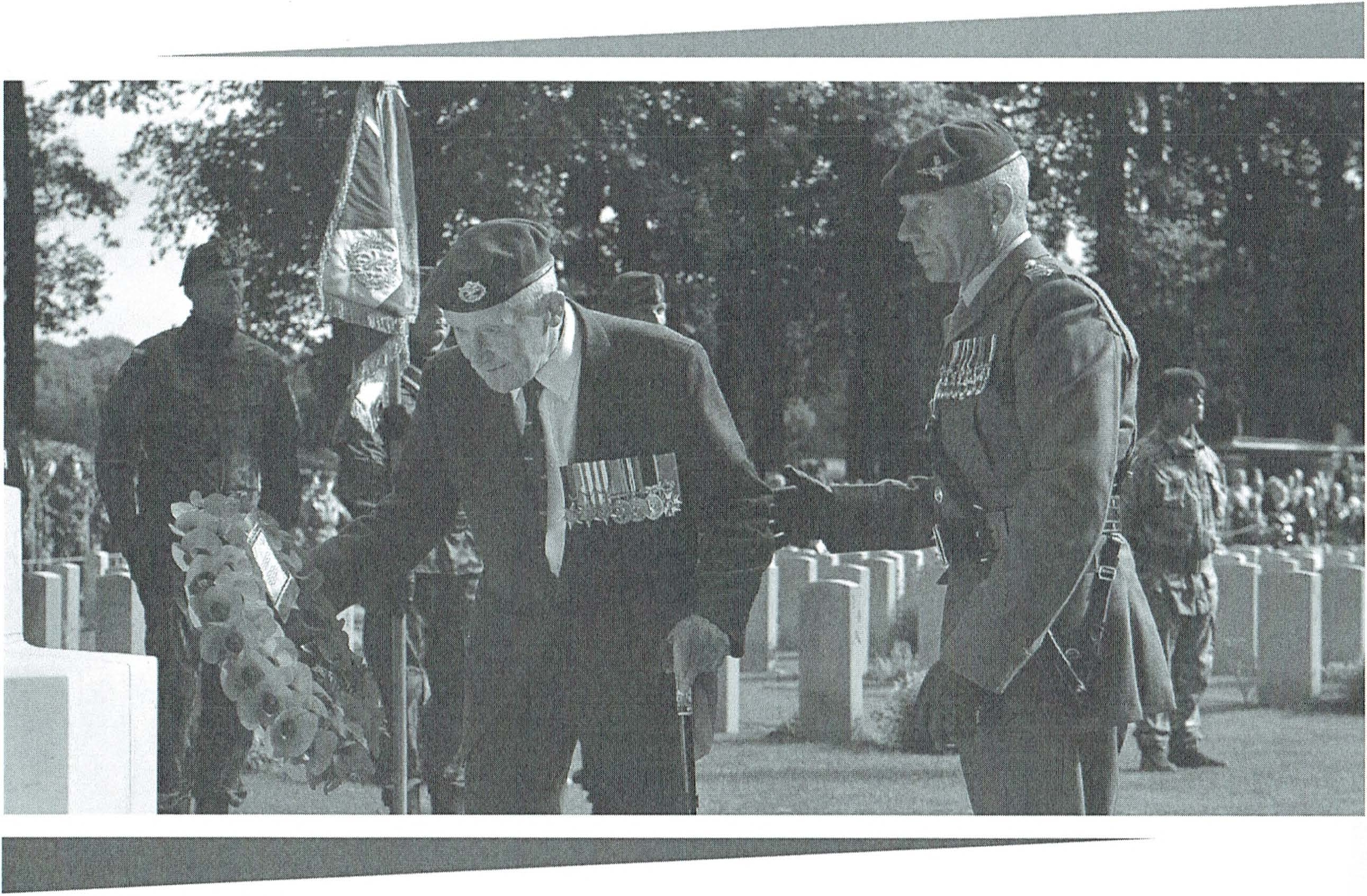
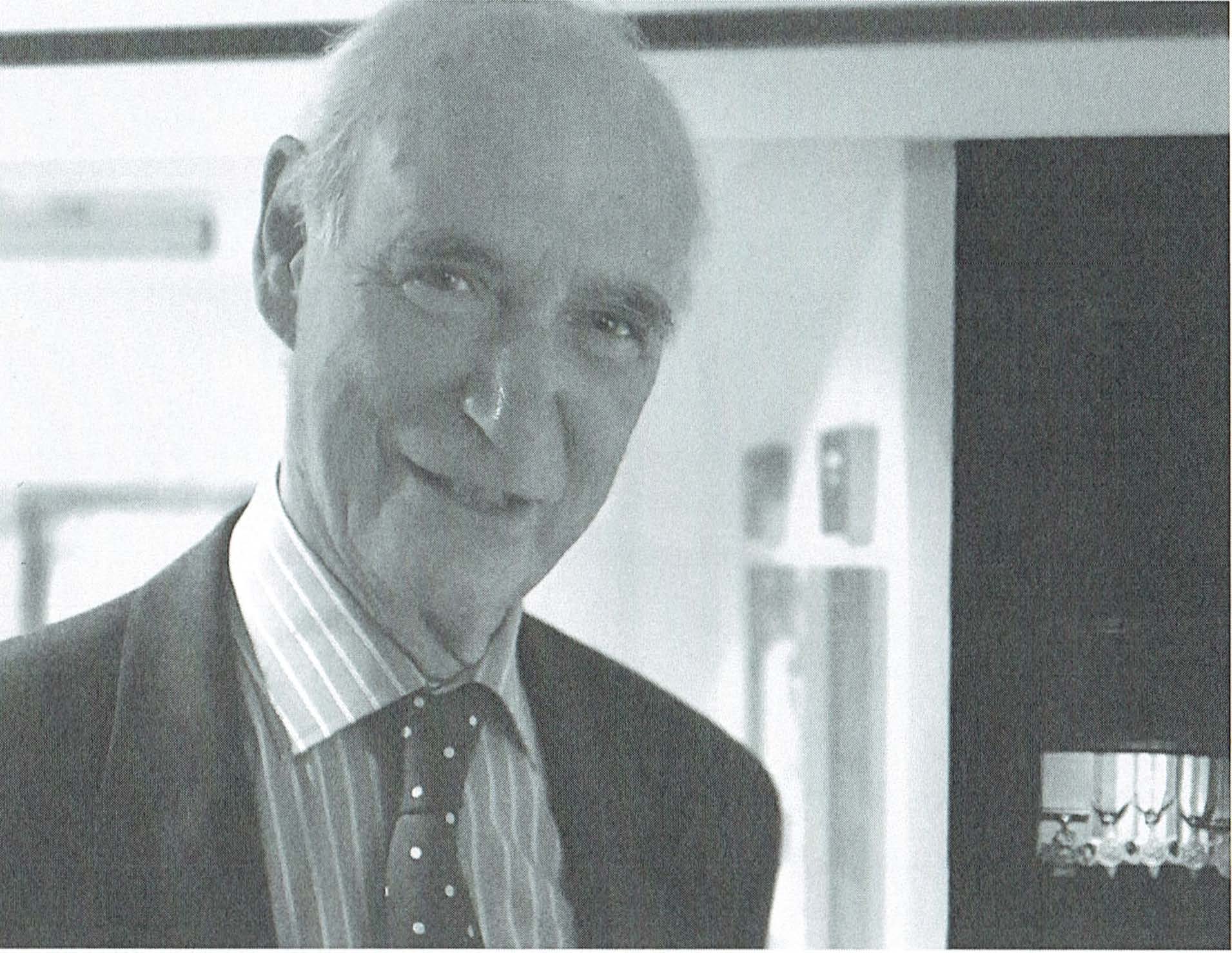
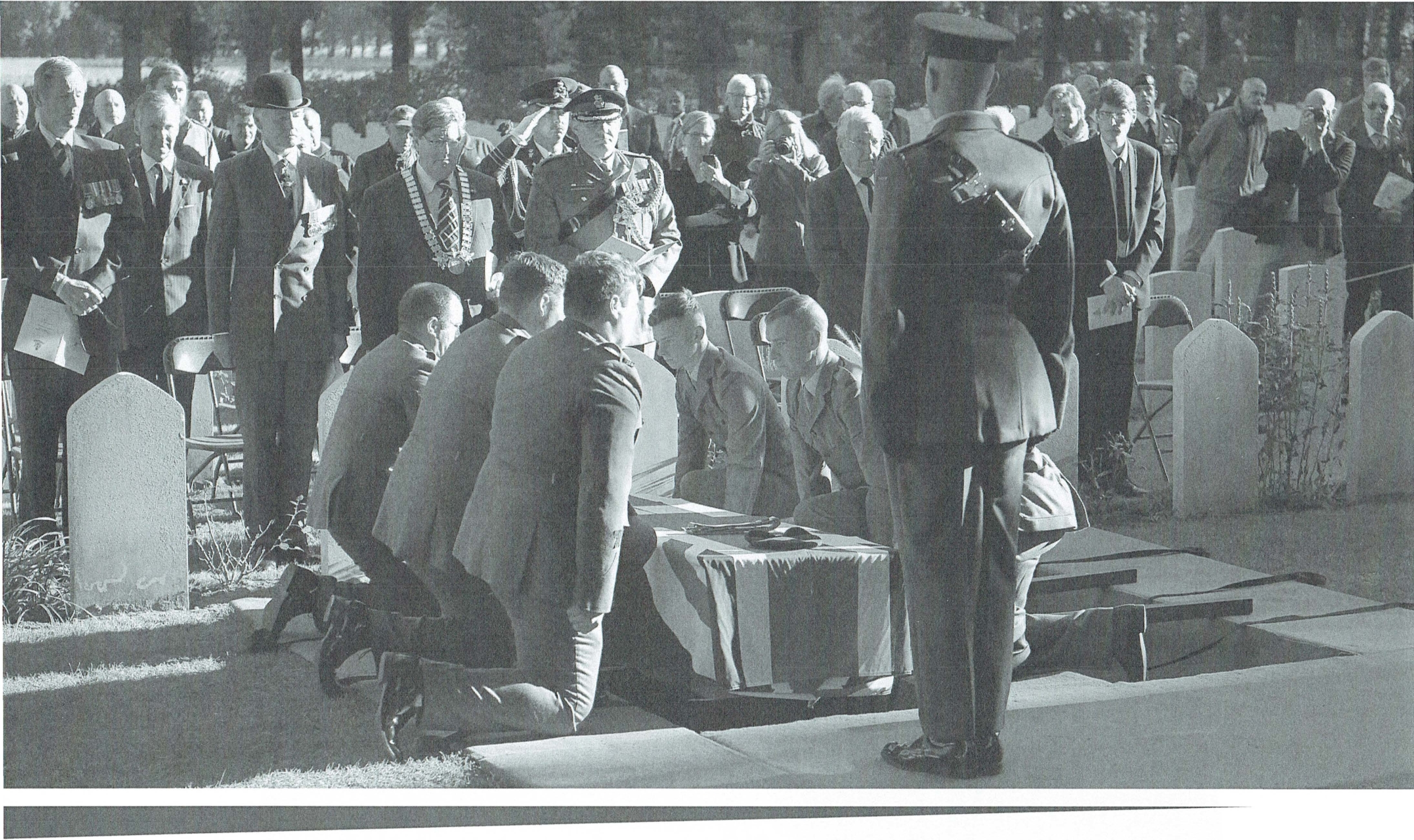
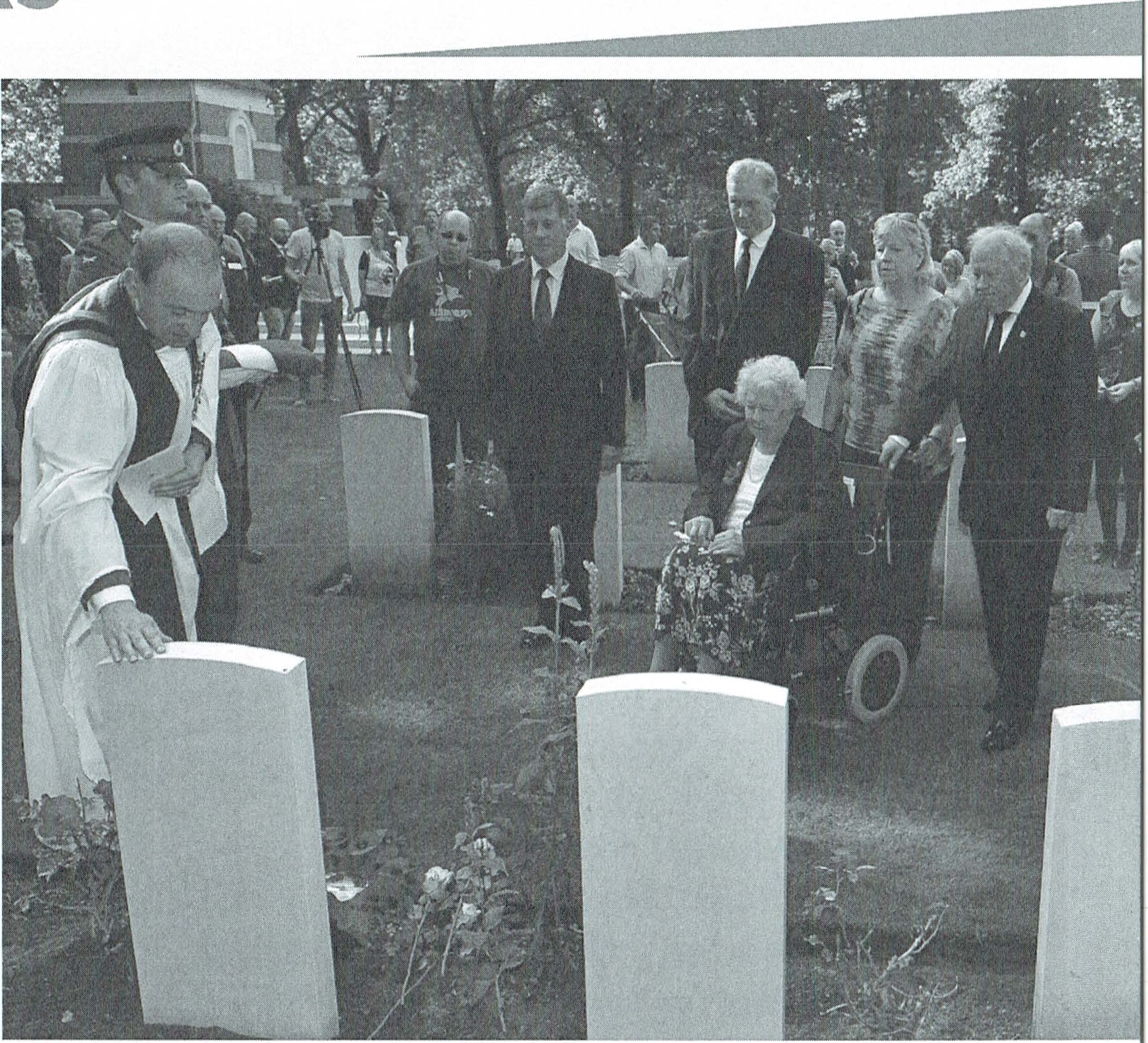
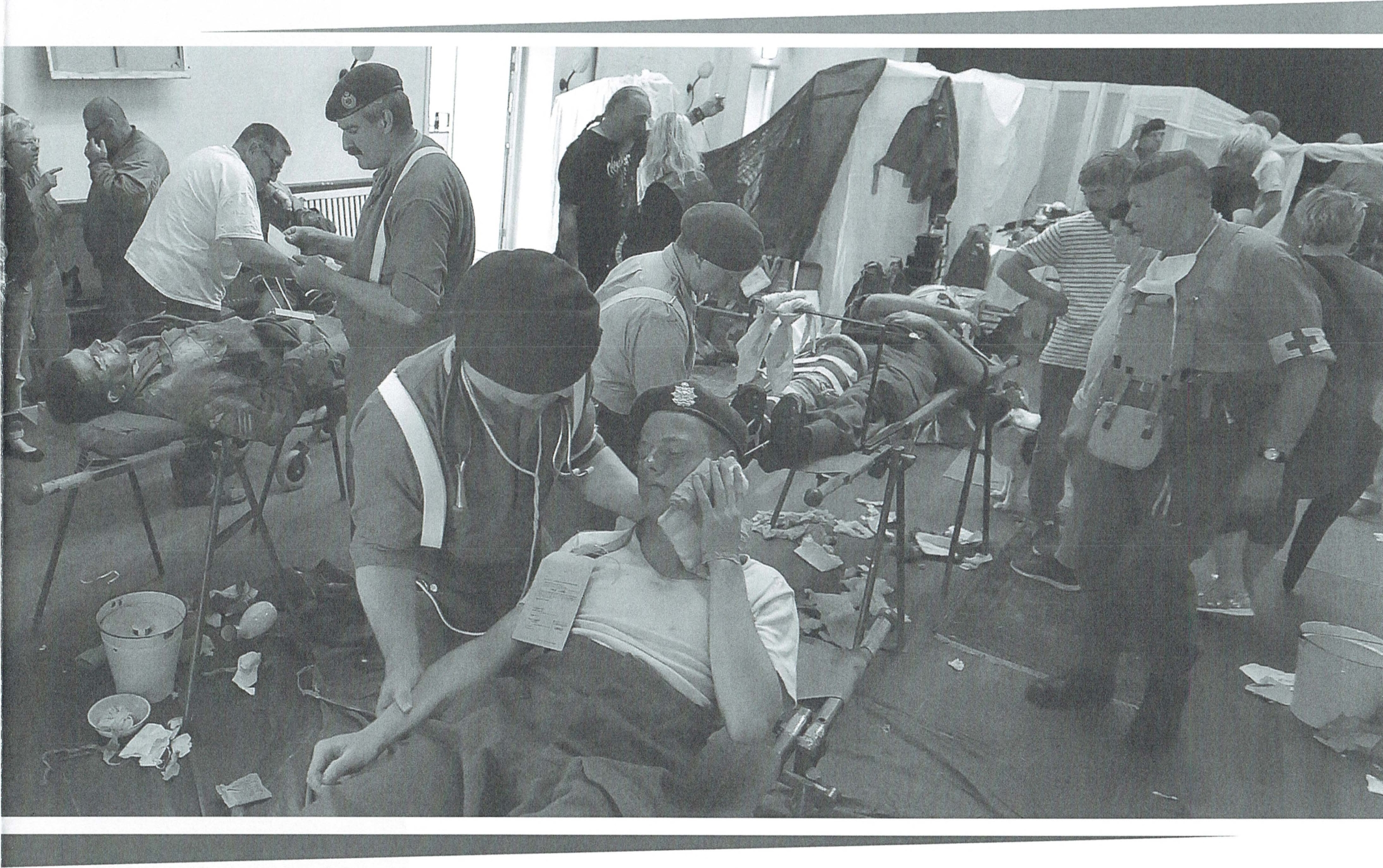
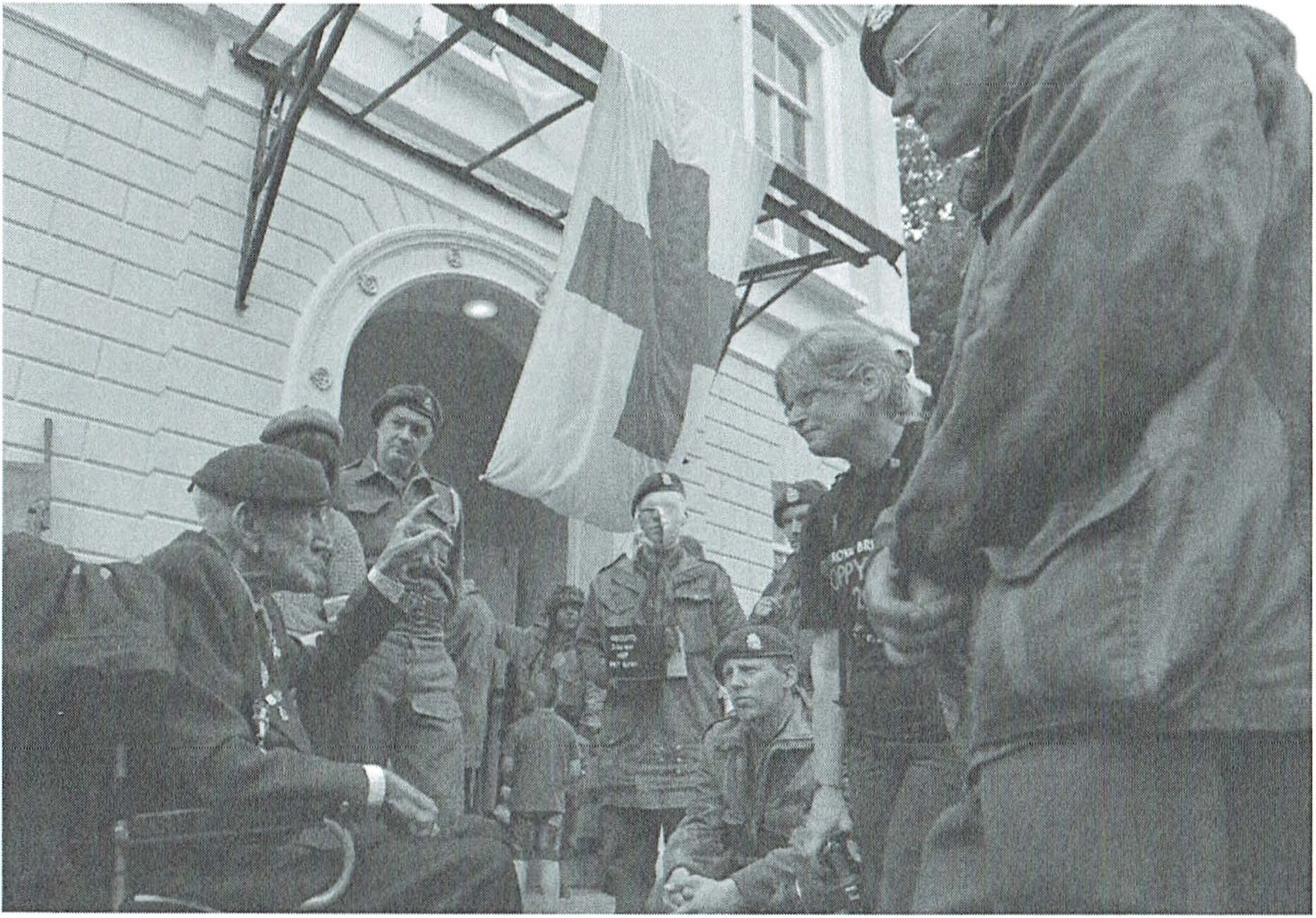
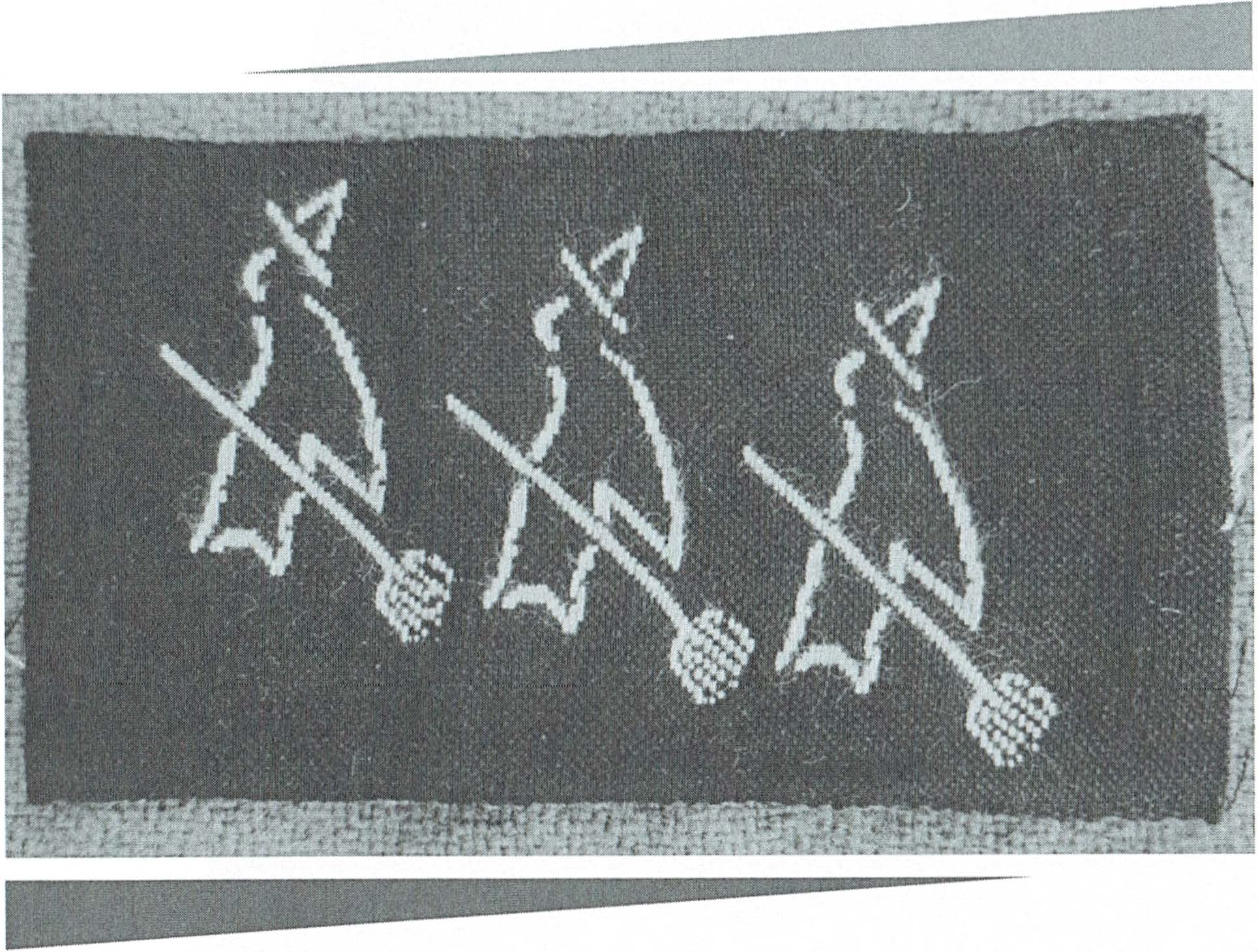
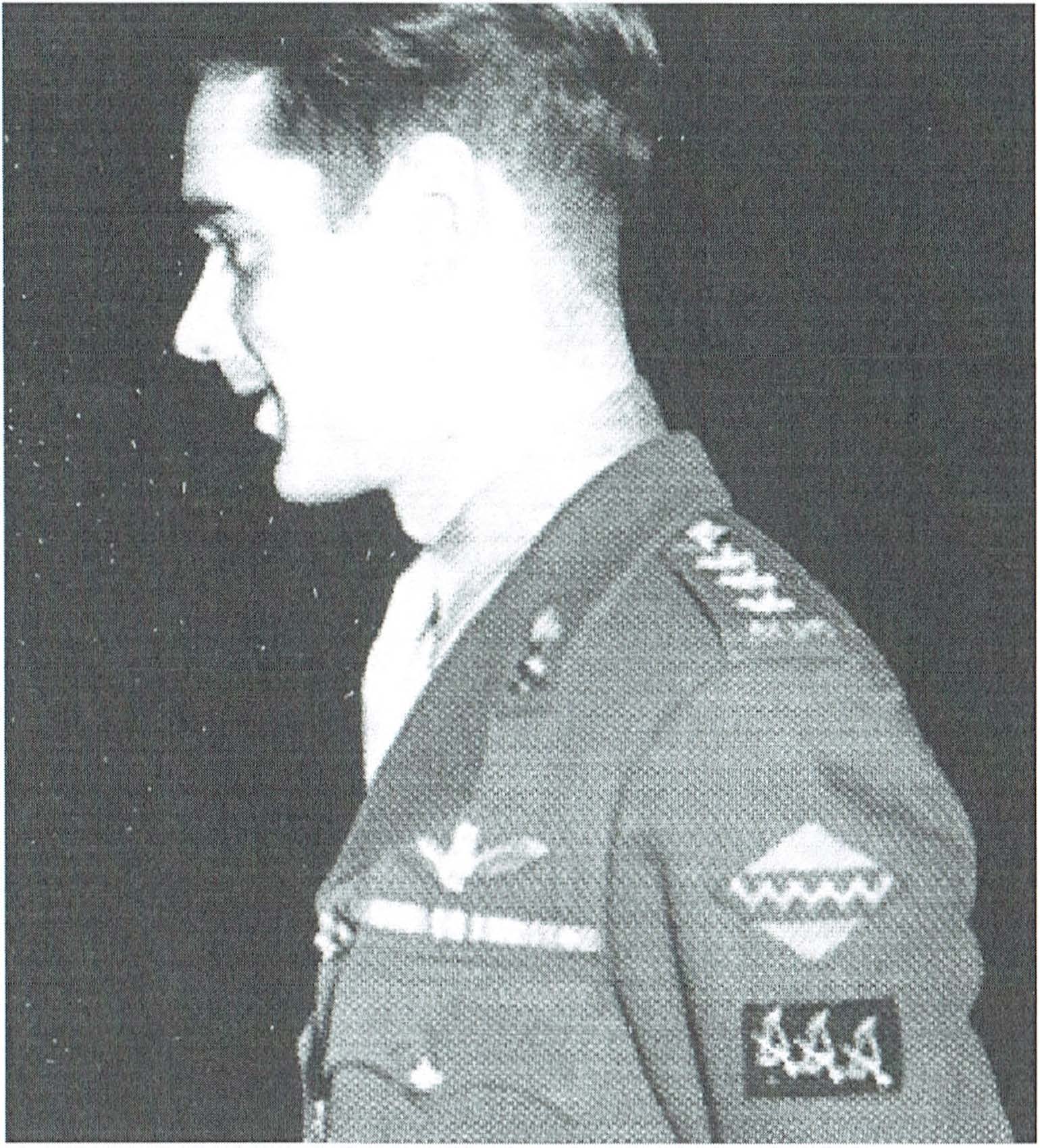
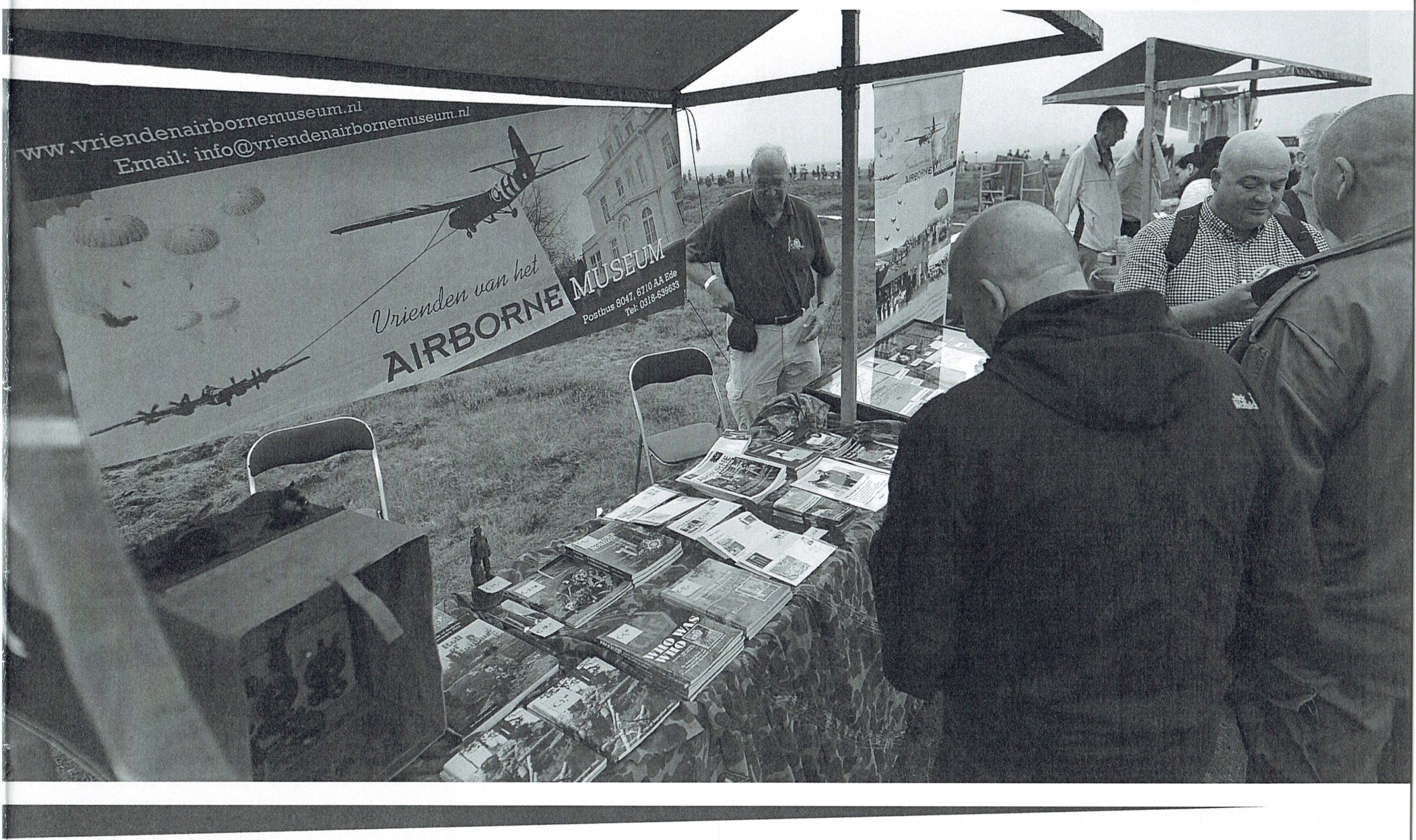
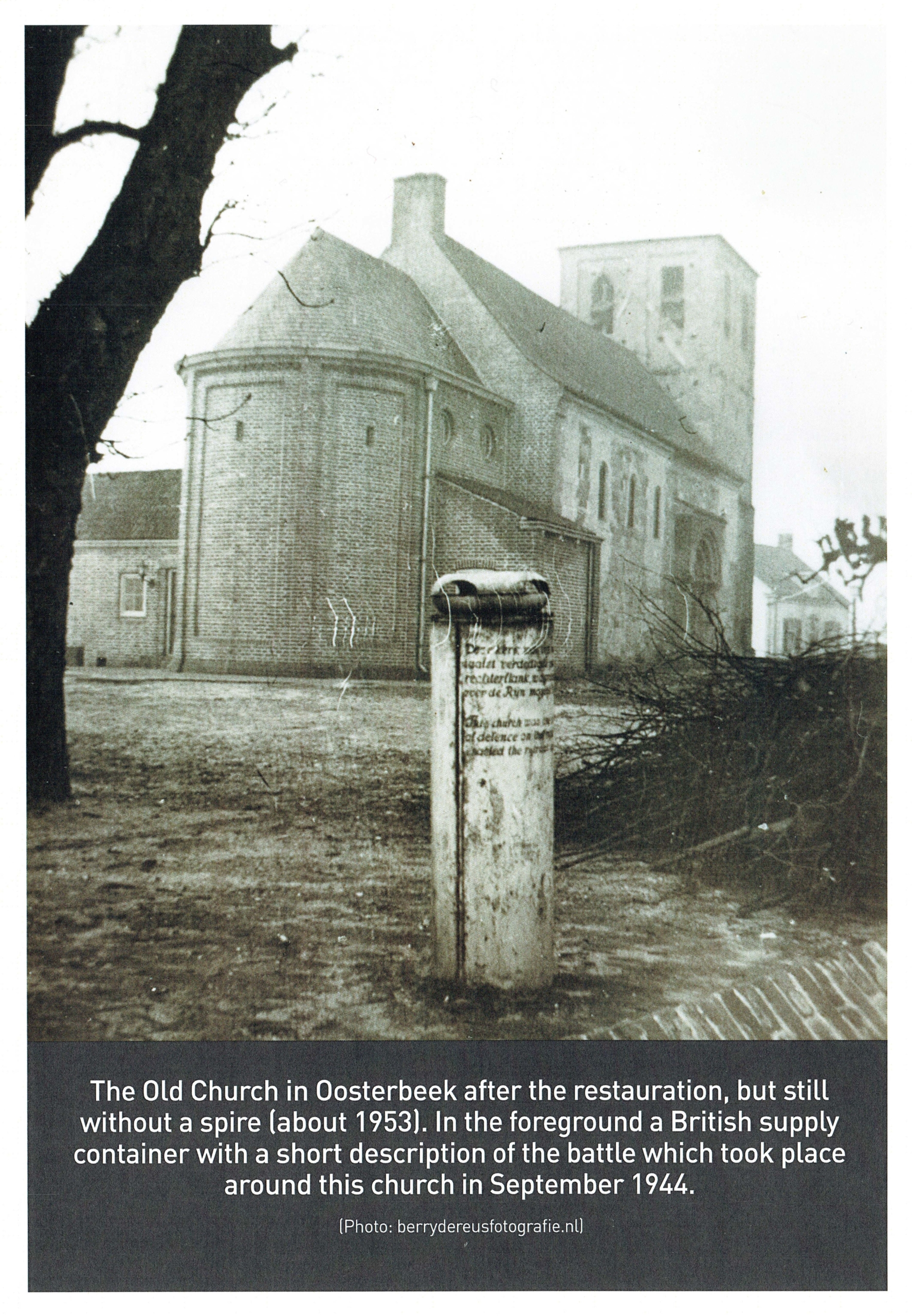
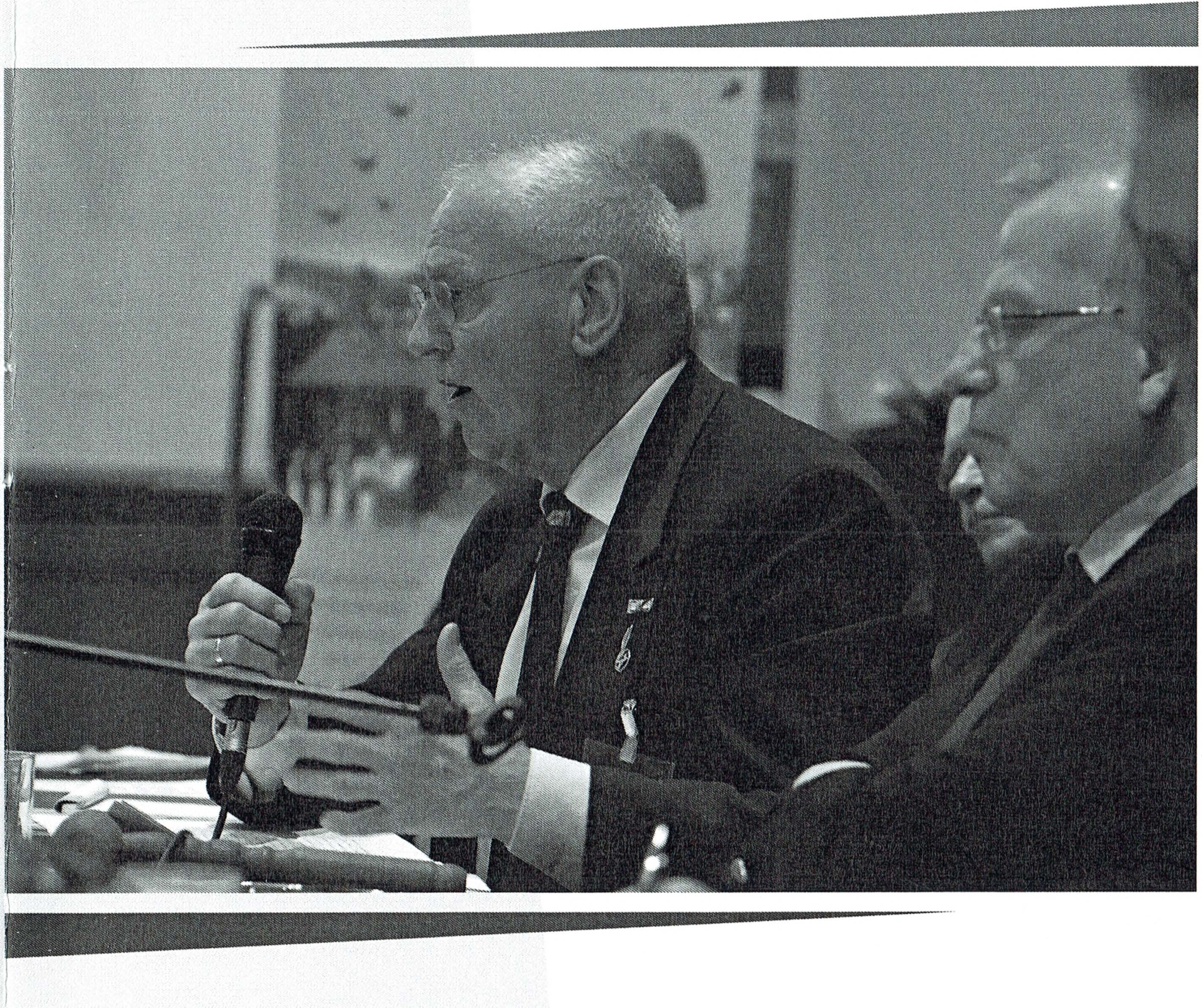
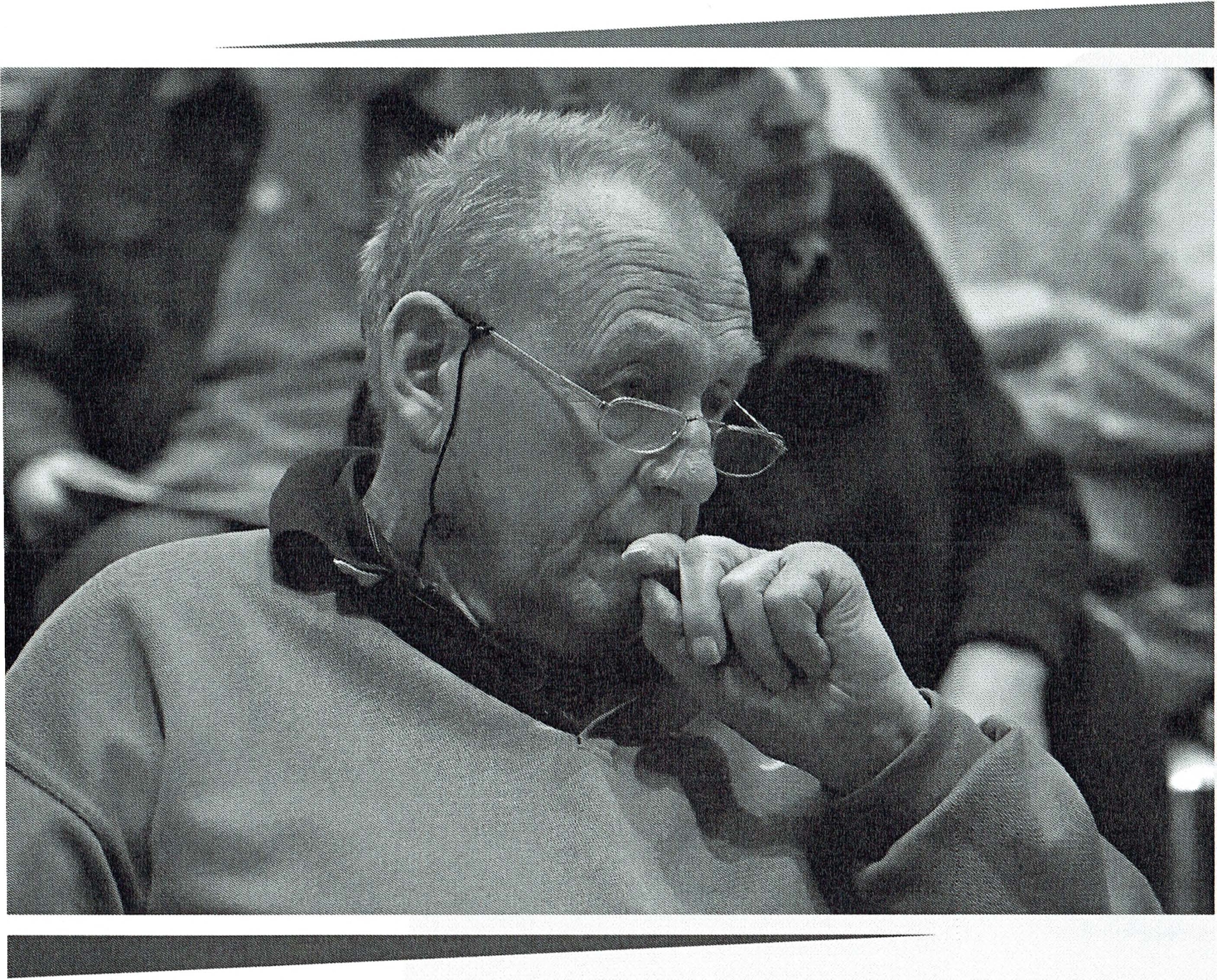
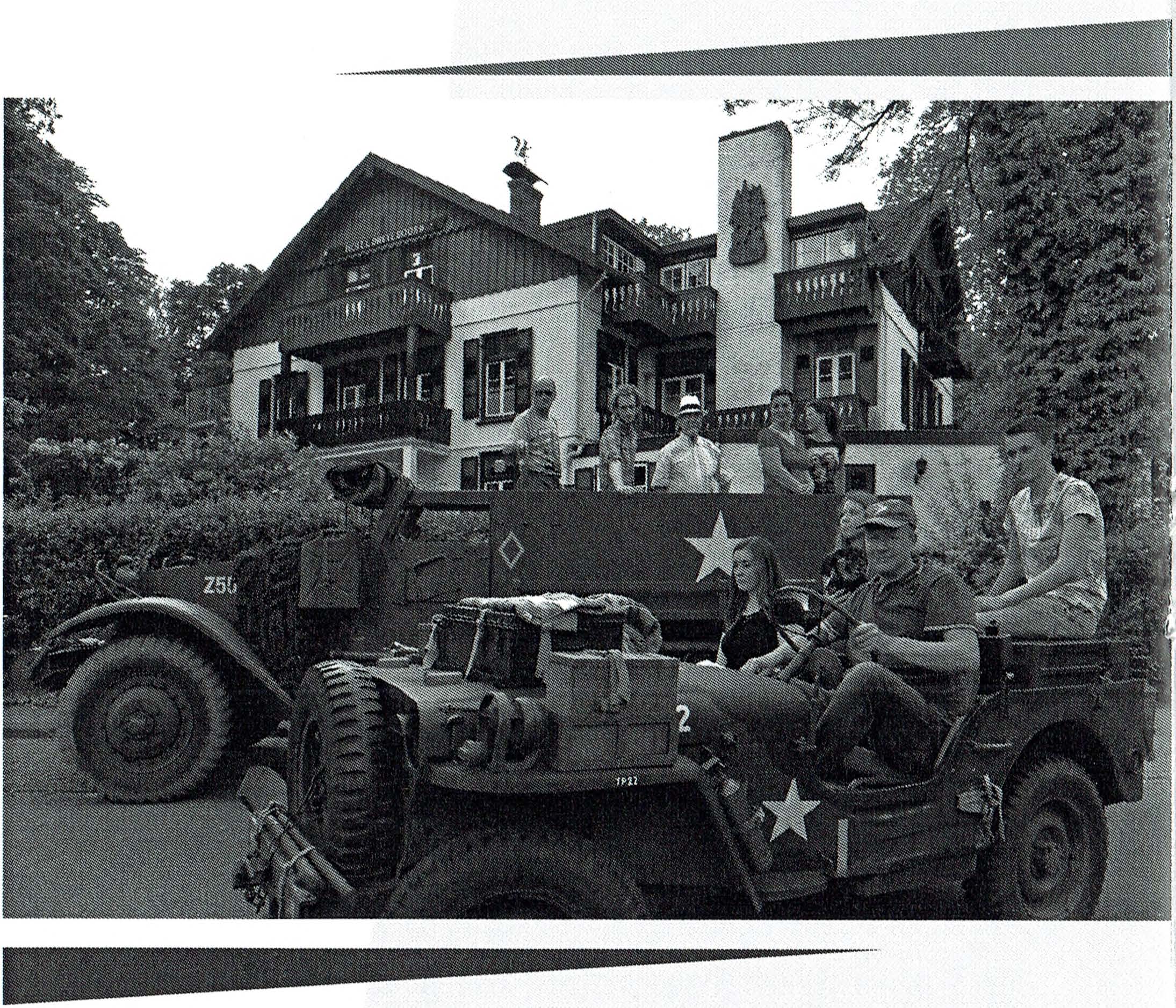


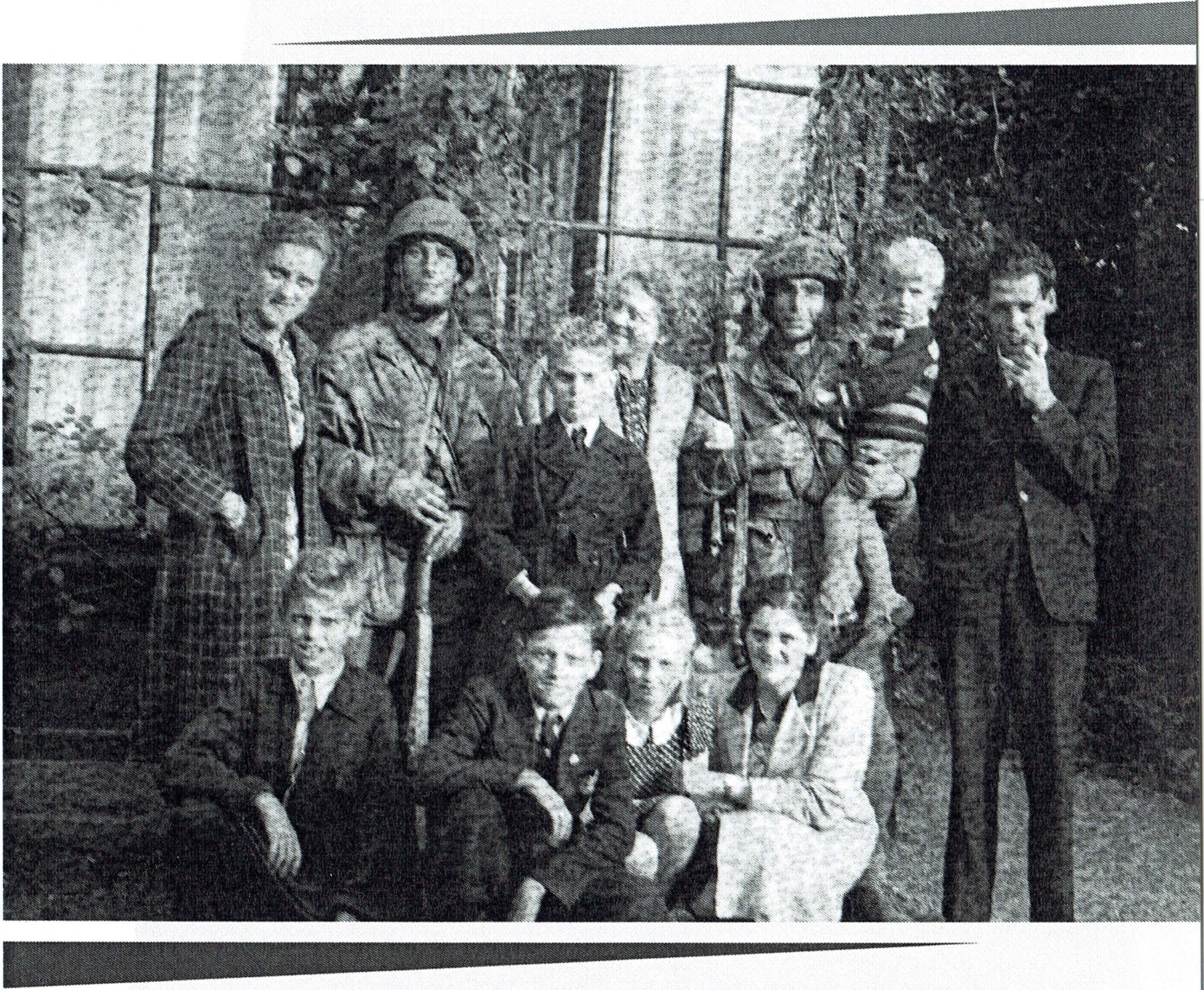
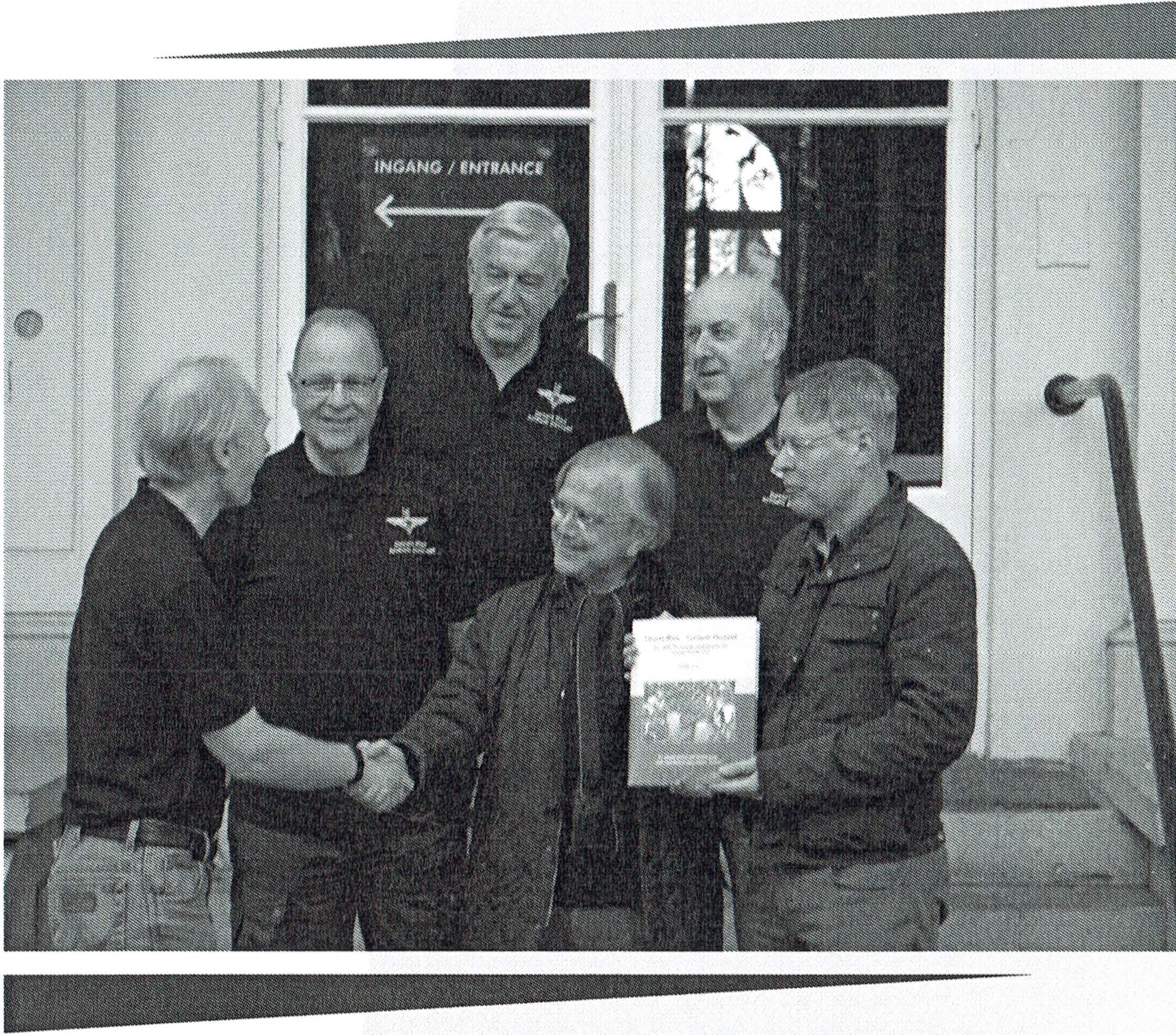
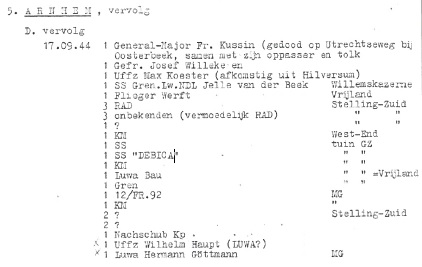

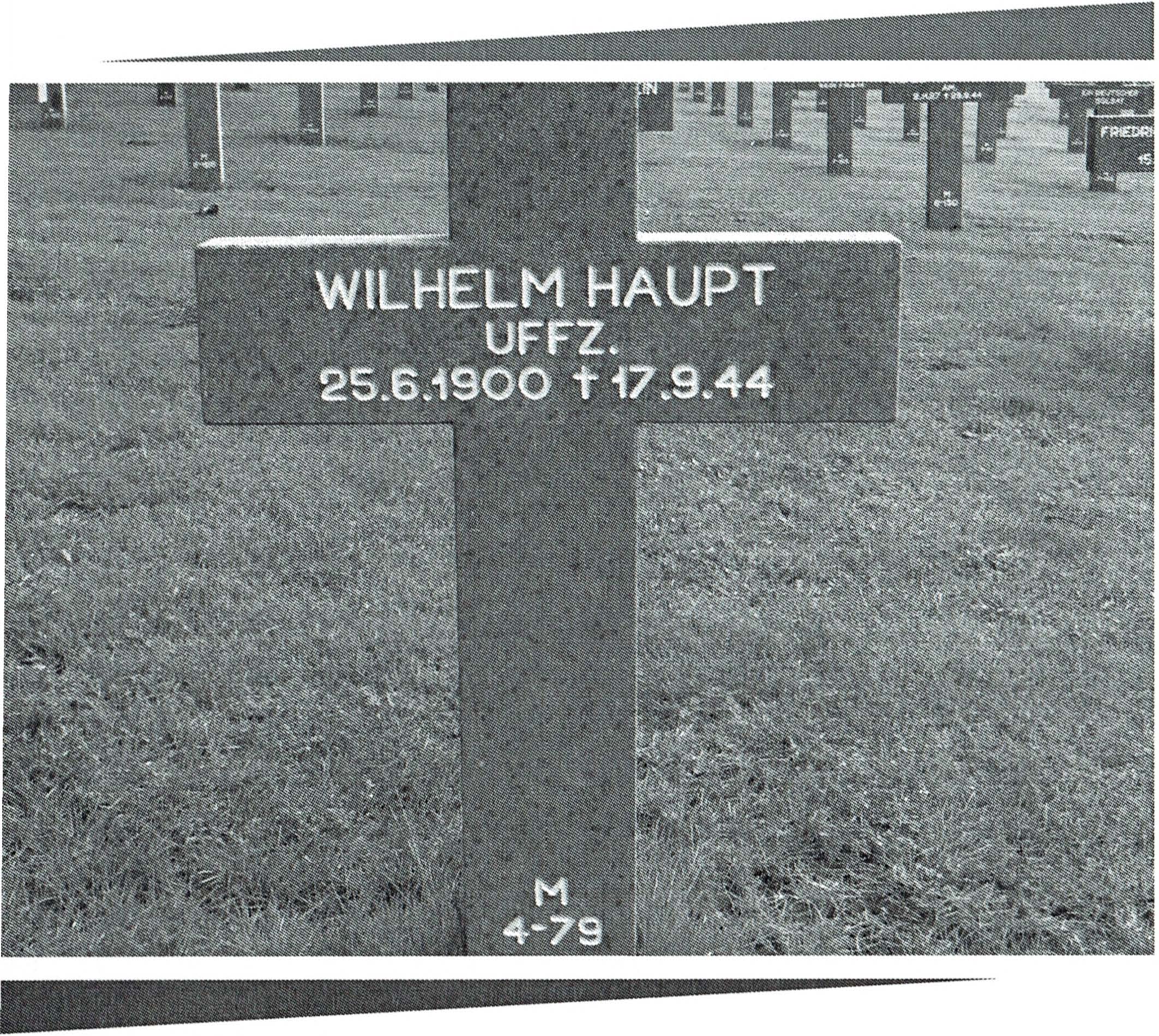
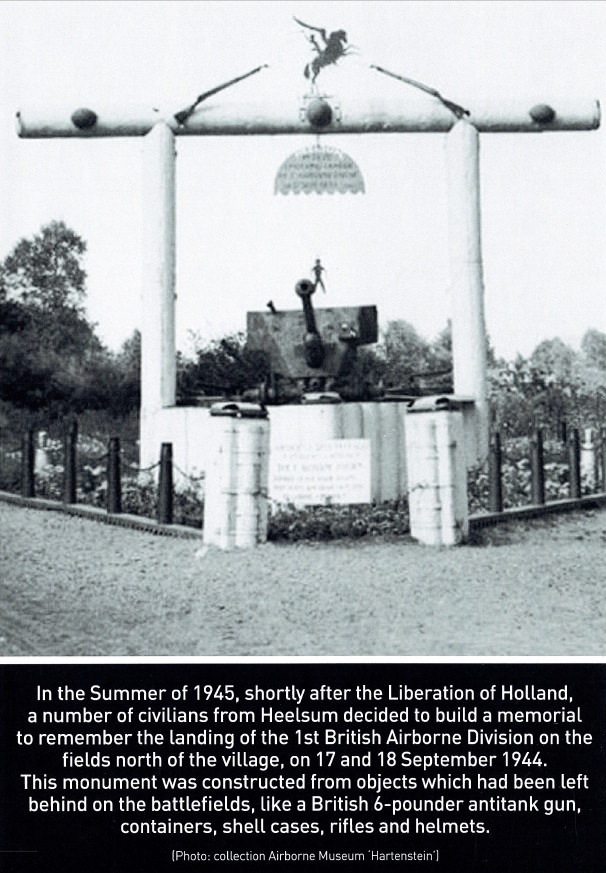
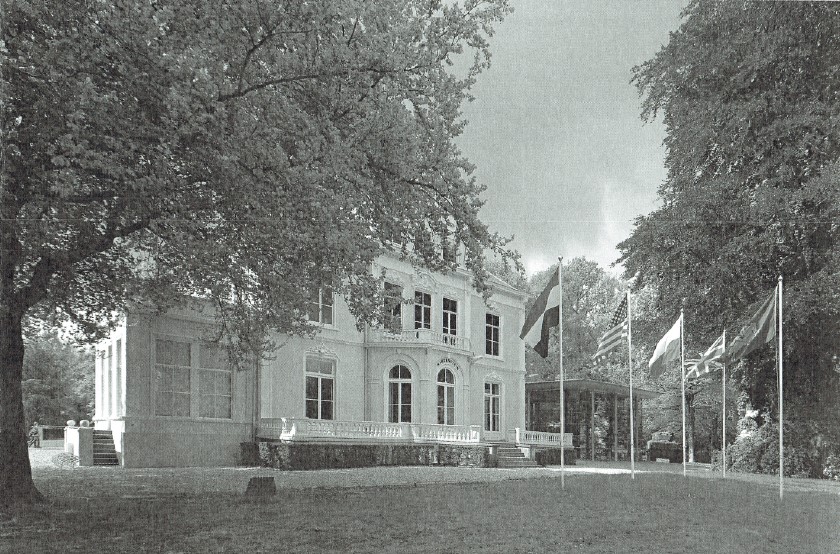

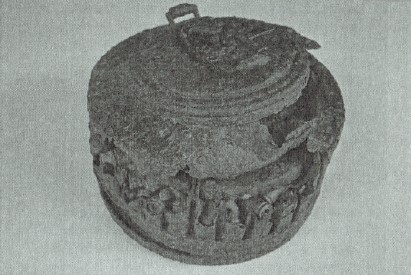
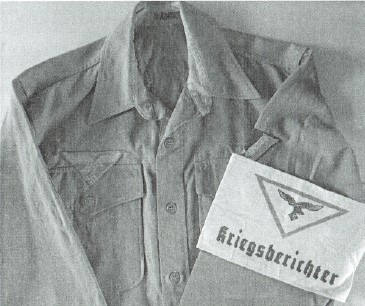
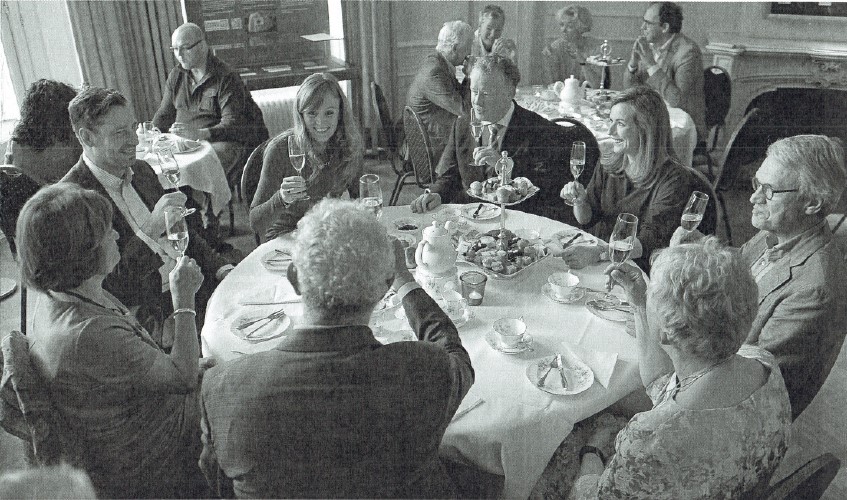
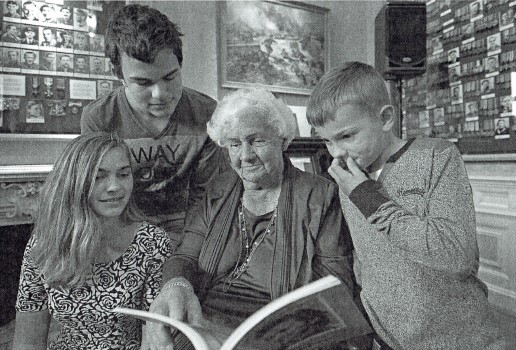
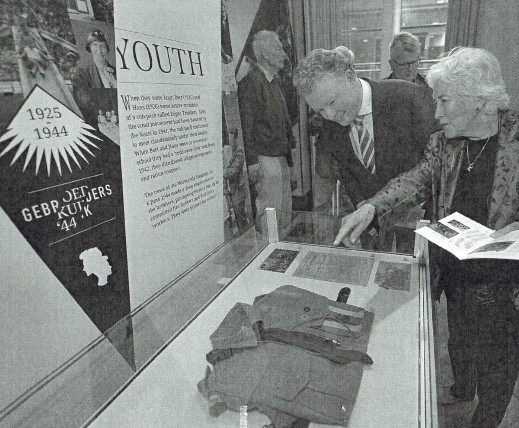


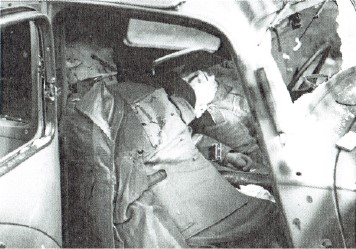
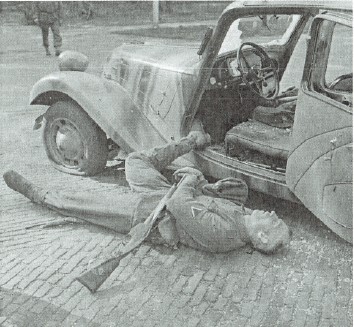
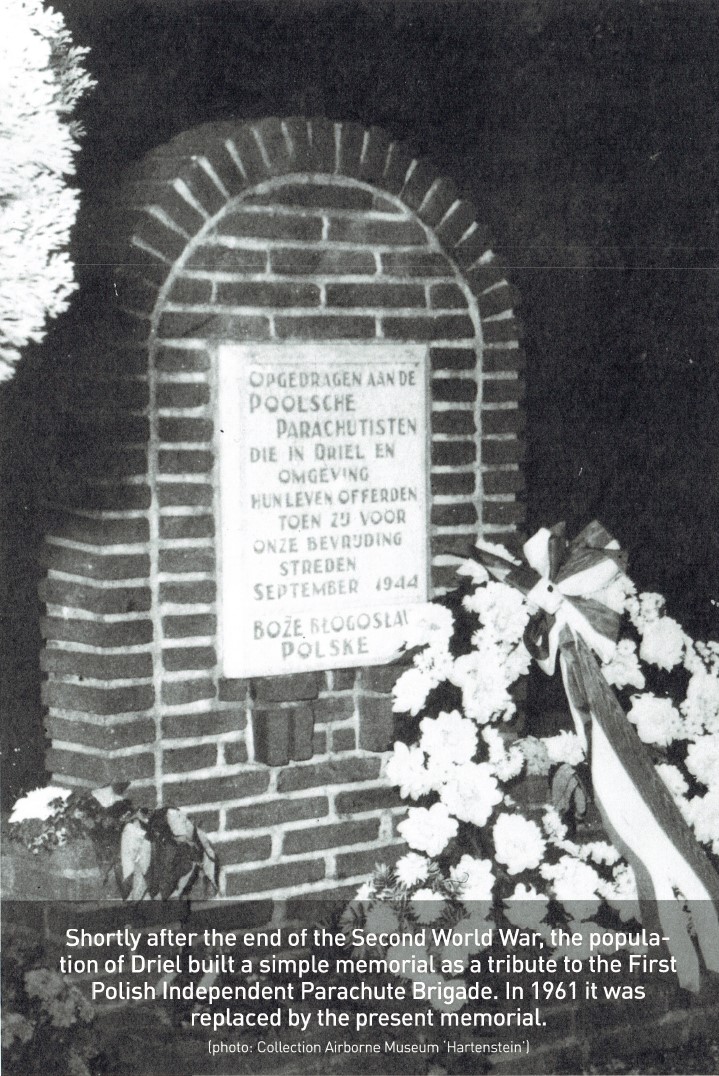
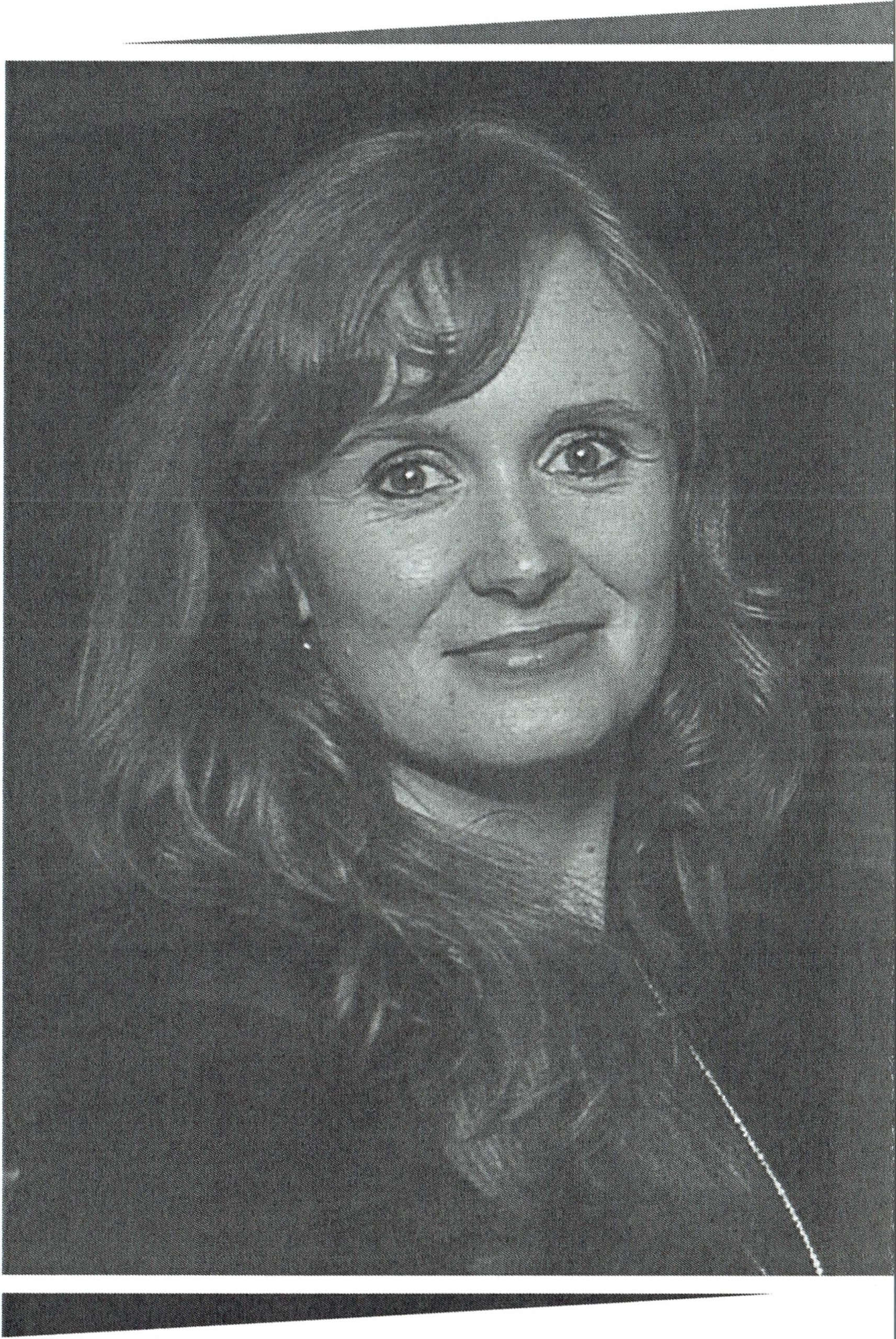
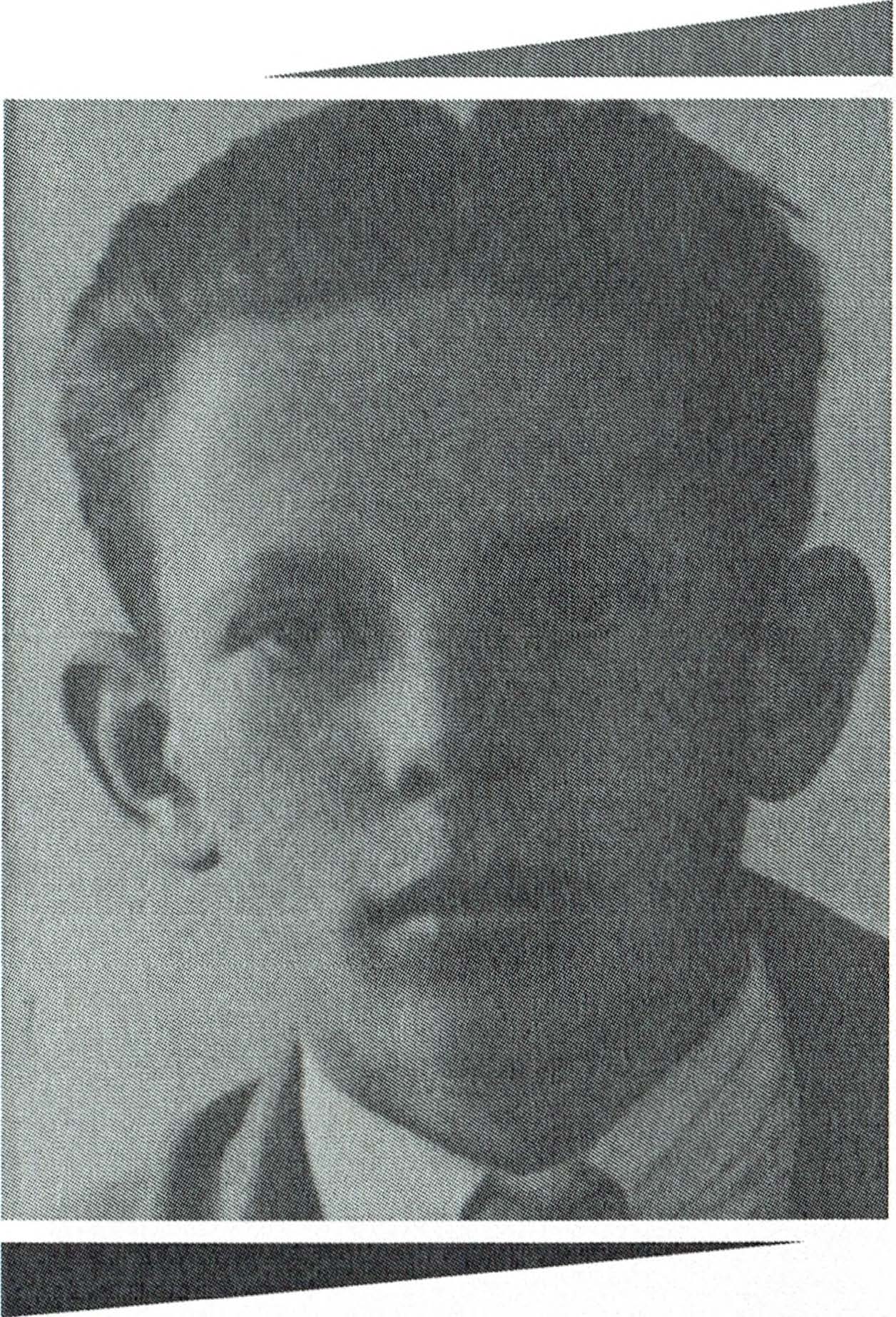 Bert Kuik (collection Airborne Museum)
Bert Kuik (collection Airborne Museum)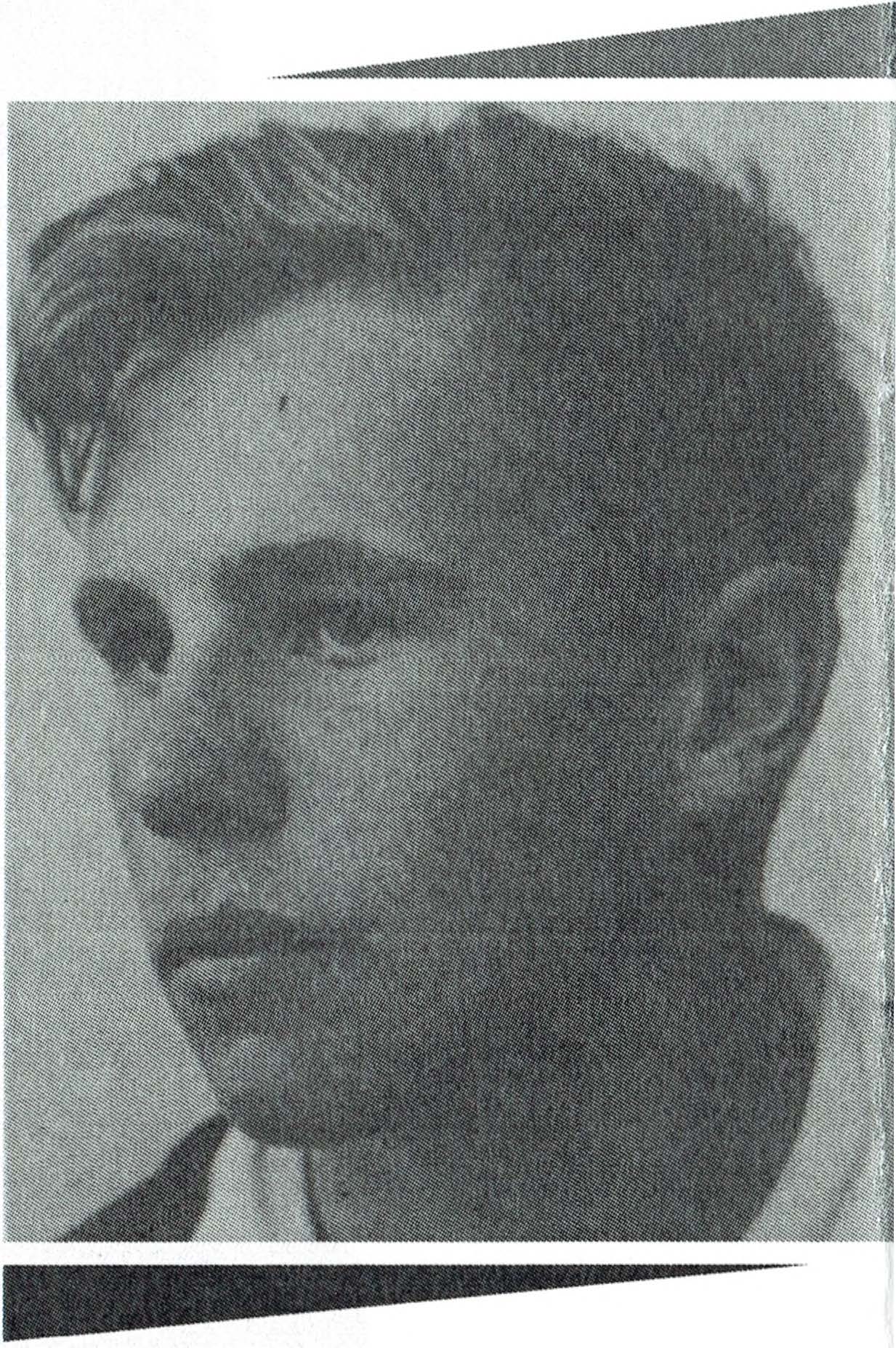 Hans Kuik (collection Airborne Museum)
Hans Kuik (collection Airborne Museum)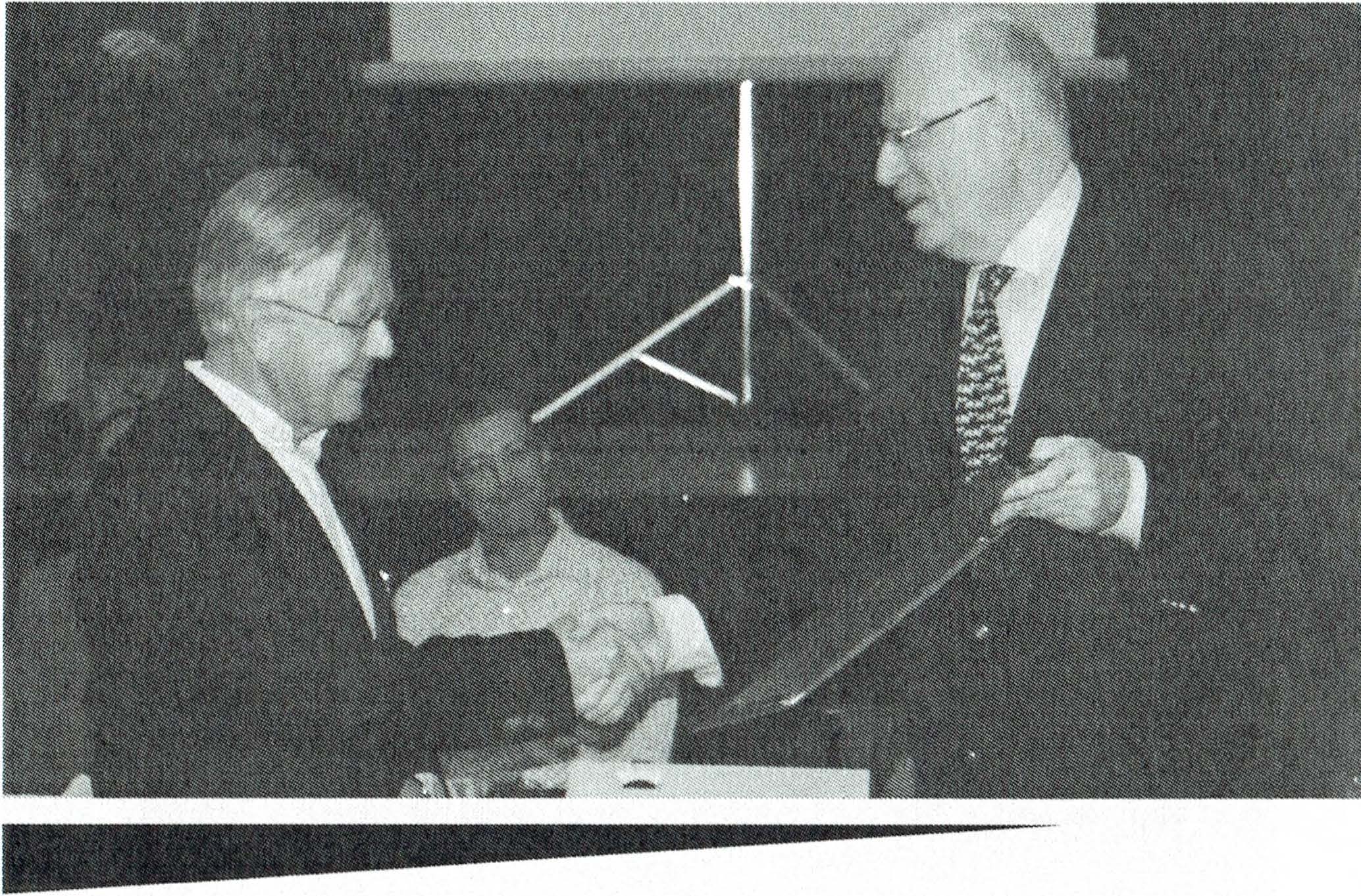 Management member Robert Voskuil, receives his deed from Chairman, Ben Kolster, that accompanies his appointment as “Member of Merit of the SFAM” (Photo: Frits Miedema)
Management member Robert Voskuil, receives his deed from Chairman, Ben Kolster, that accompanies his appointment as “Member of Merit of the SFAM” (Photo: Frits Miedema)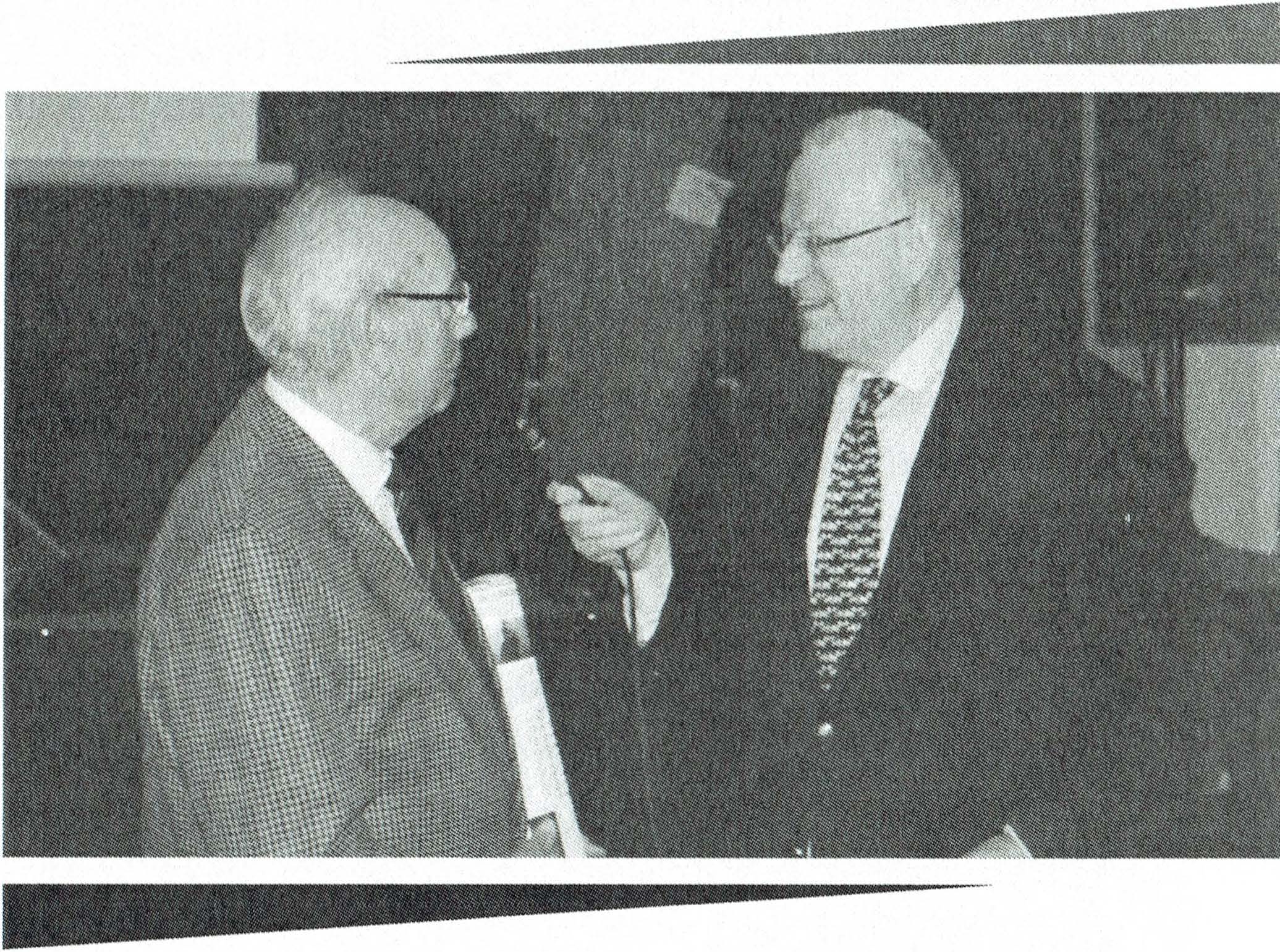 Ben Kolster hands to Henk van de Brand, a case of wine as a token of gratitude for all the work he has done for the SFAM
Ben Kolster hands to Henk van de Brand, a case of wine as a token of gratitude for all the work he has done for the SFAM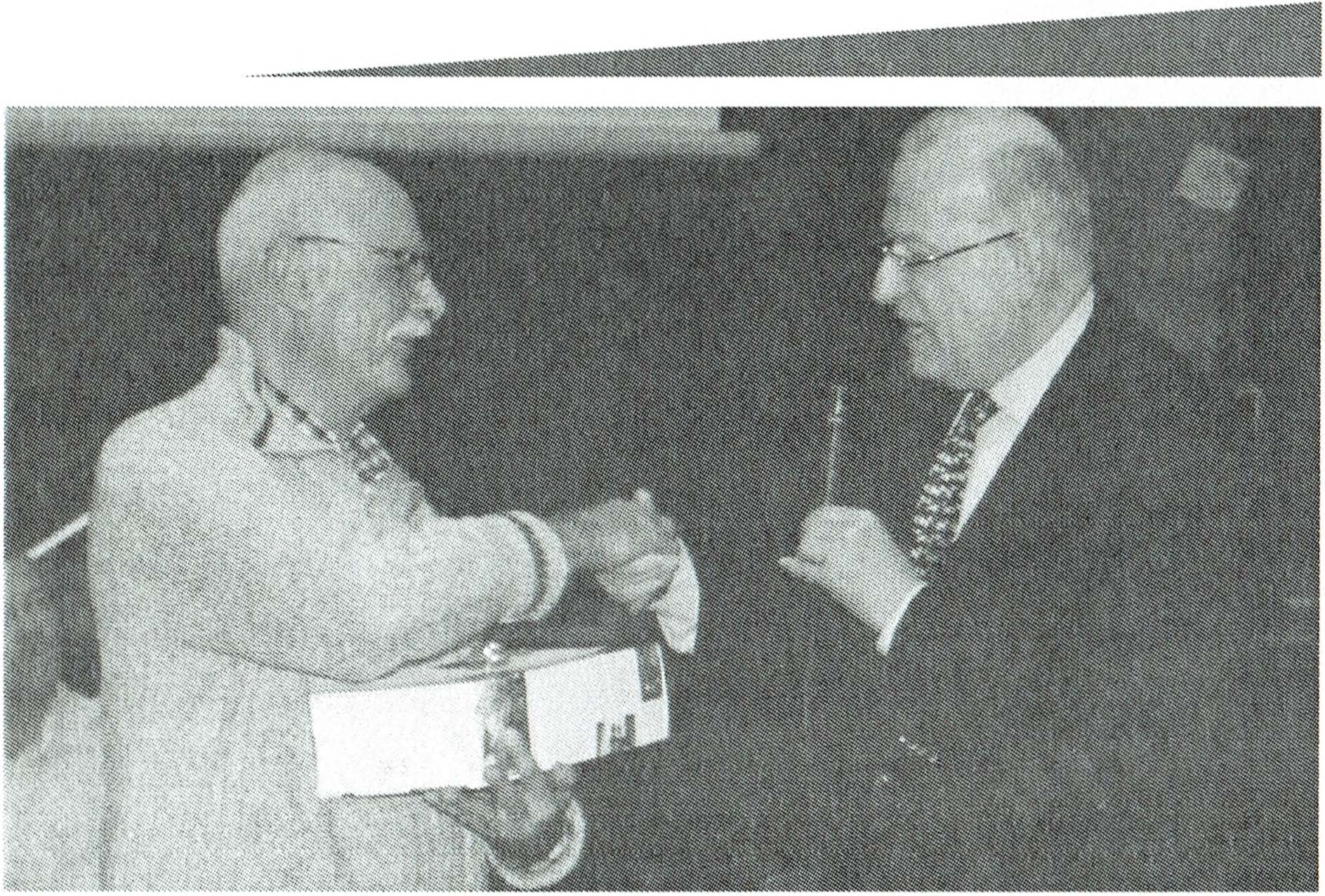

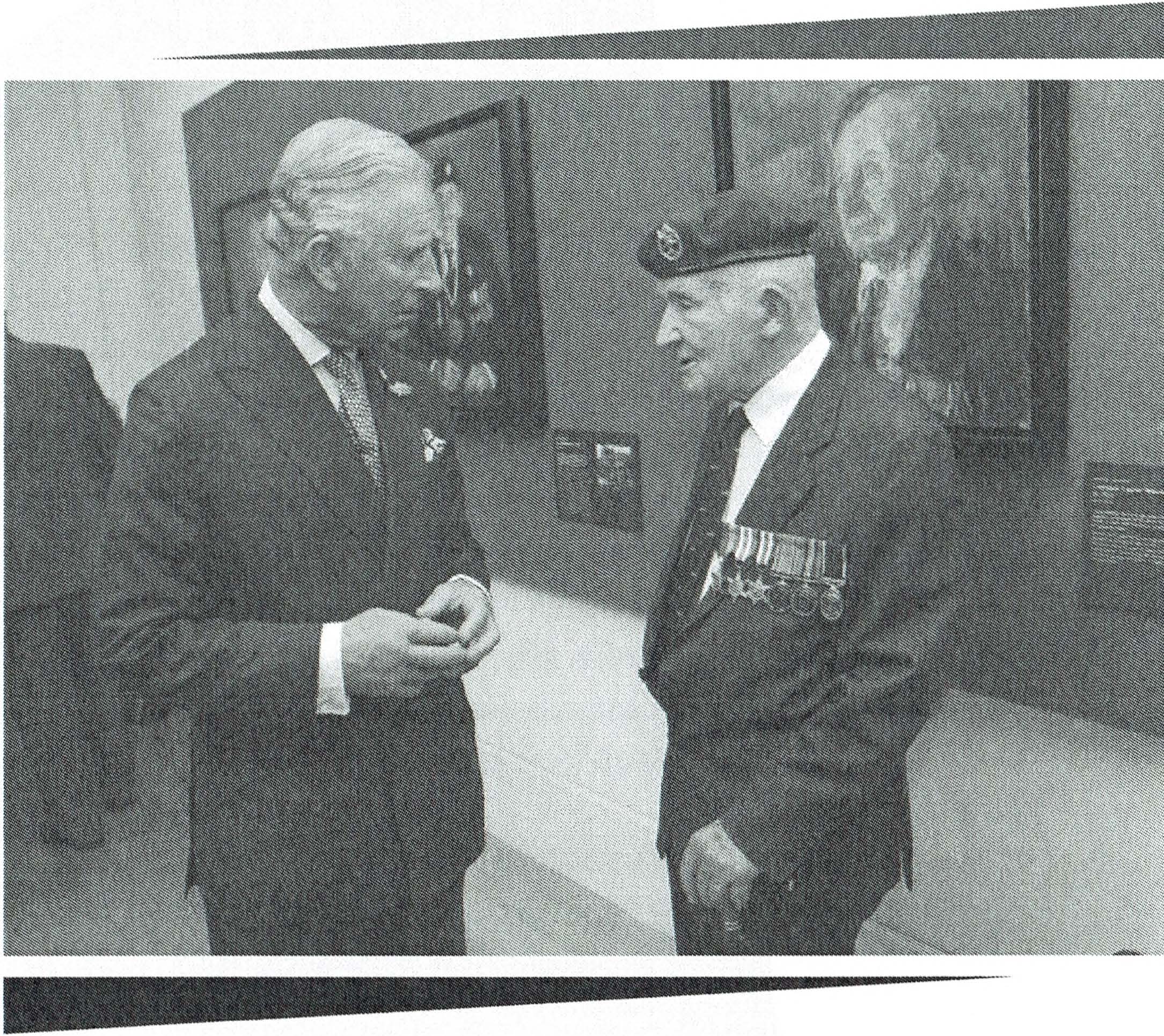 12 June 2015. During a visit to the exhibition “The Last of the Tide”, in the Queen’s Gallery in London, Prince Charles speaks to Laurie Weeden, who, as a glider pilot, took part in the landings in Normandy on 6 June 1944 and who fought in the Battle of Arnhem in September 1944.
12 June 2015. During a visit to the exhibition “The Last of the Tide”, in the Queen’s Gallery in London, Prince Charles speaks to Laurie Weeden, who, as a glider pilot, took part in the landings in Normandy on 6 June 1944 and who fought in the Battle of Arnhem in September 1944.